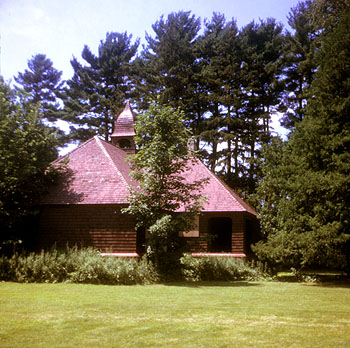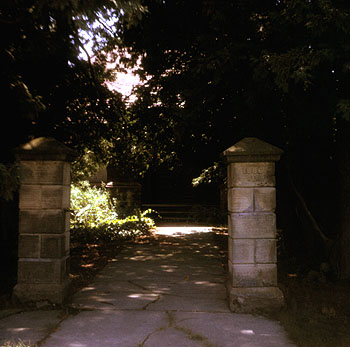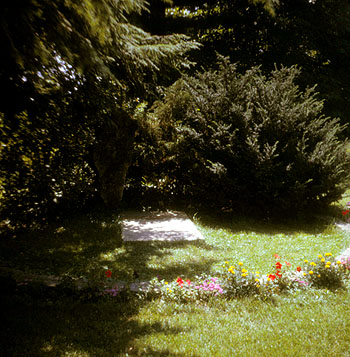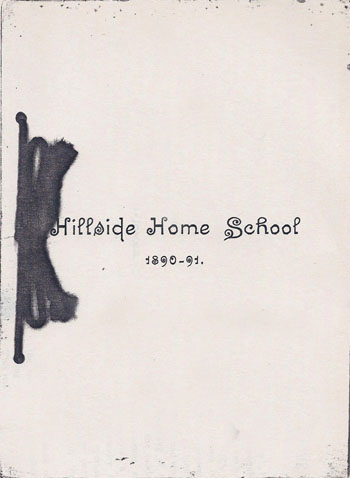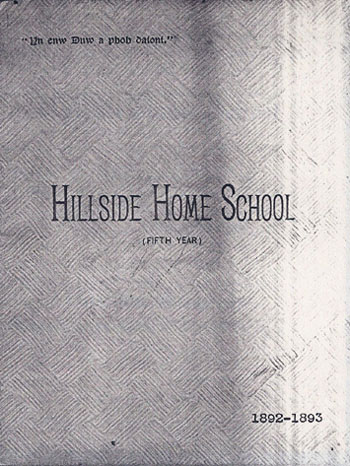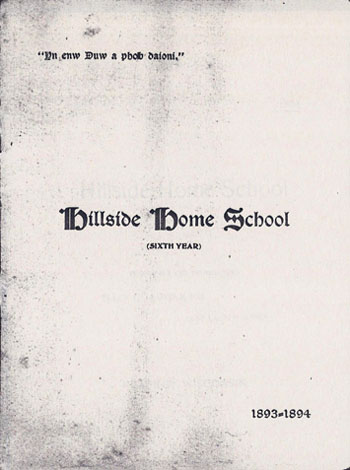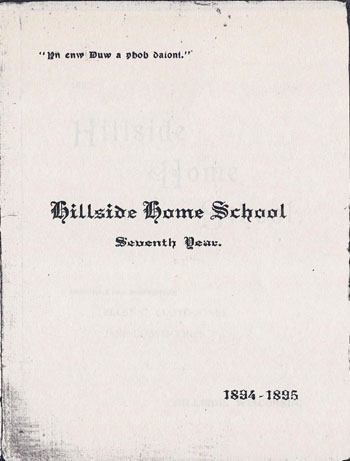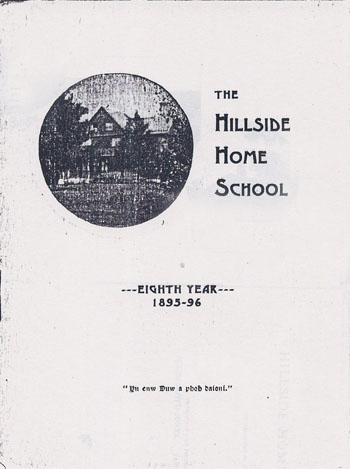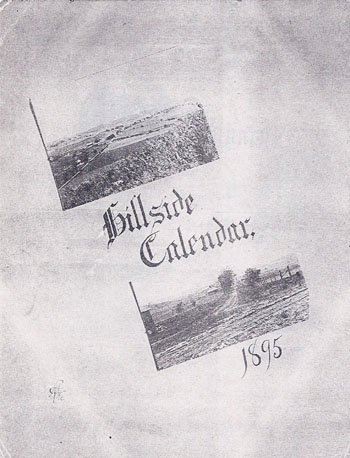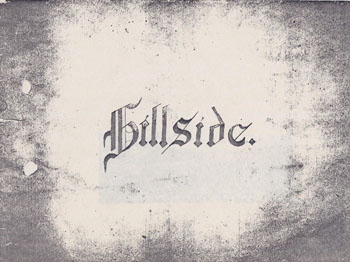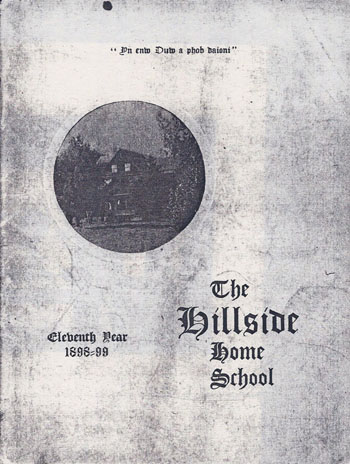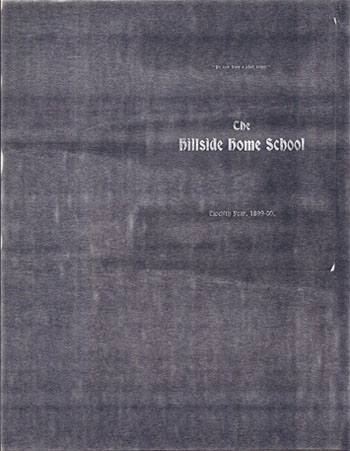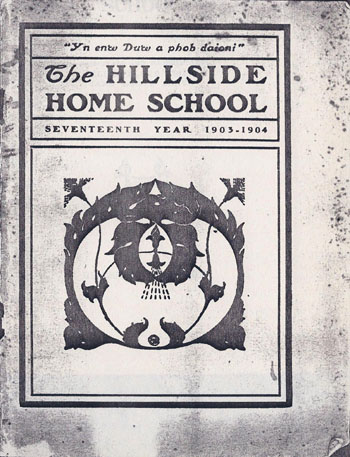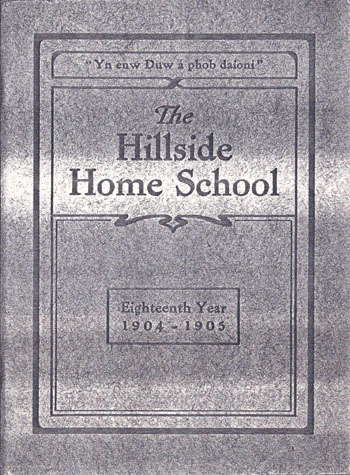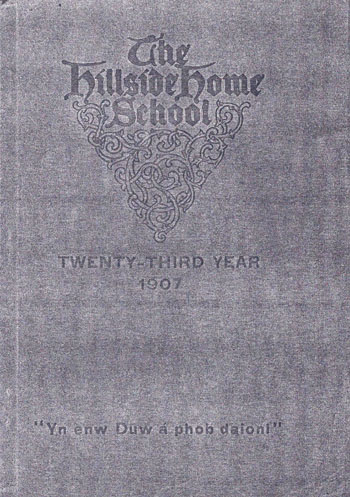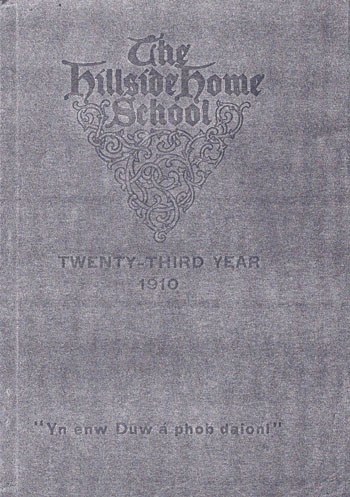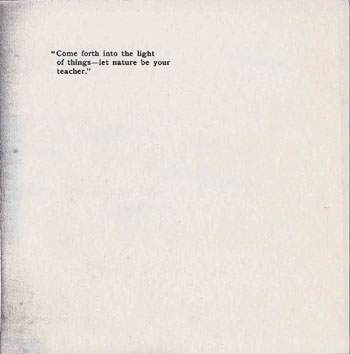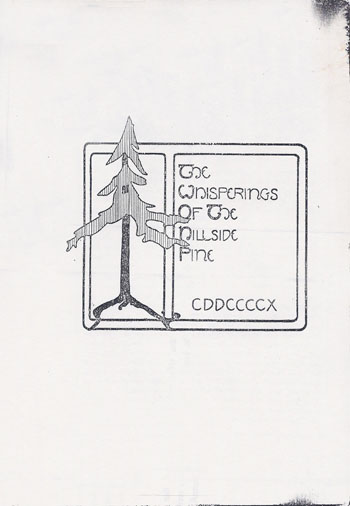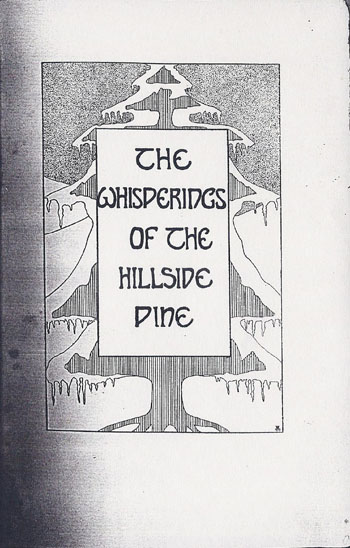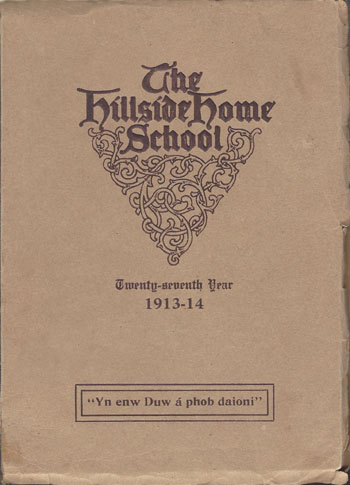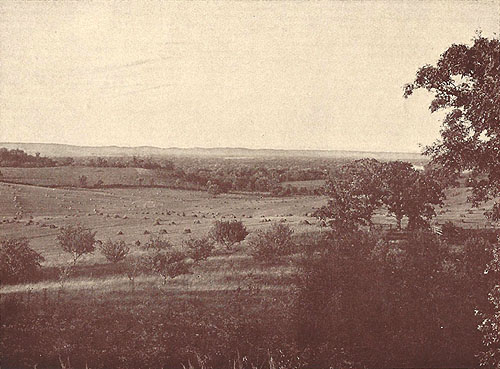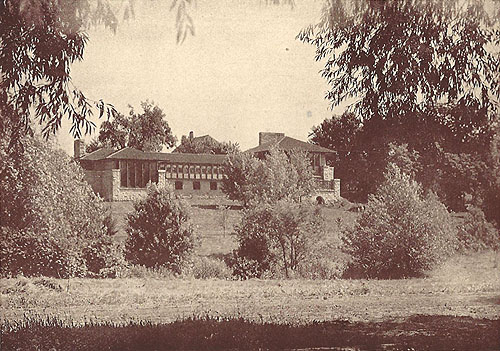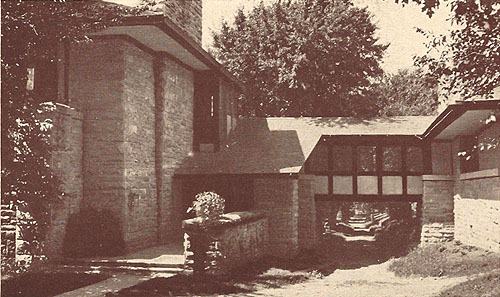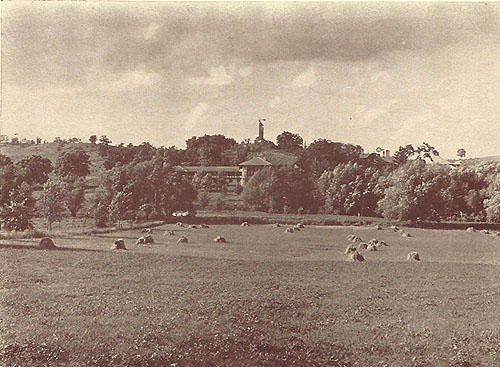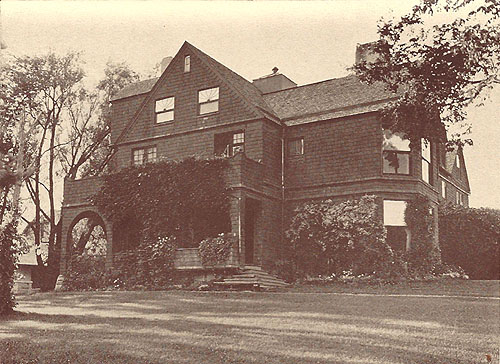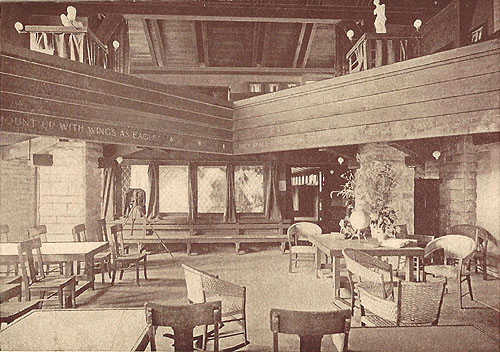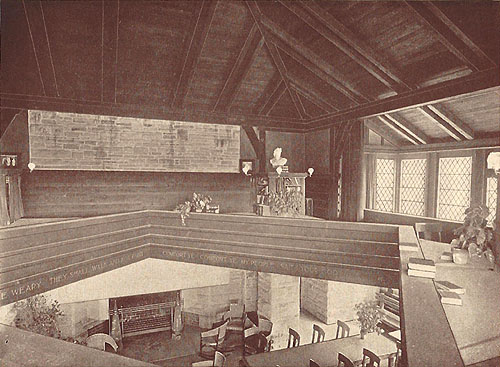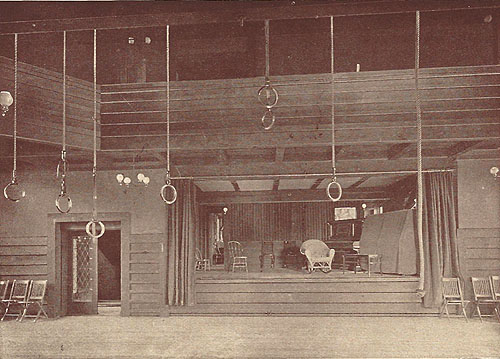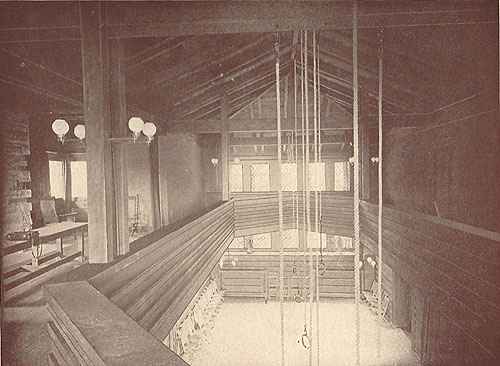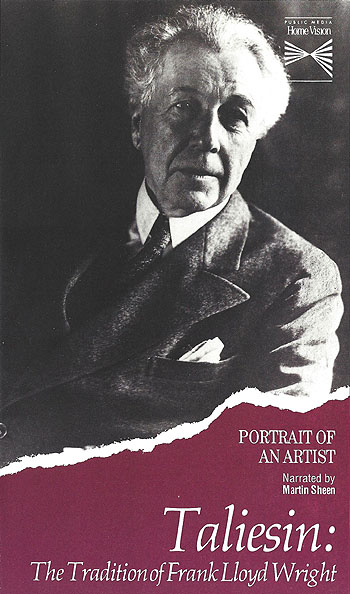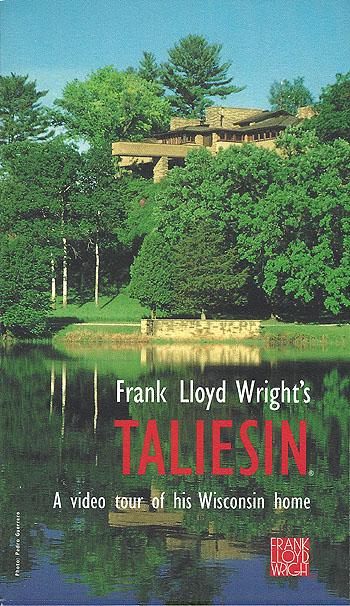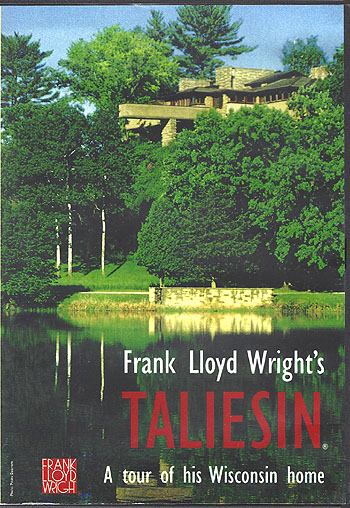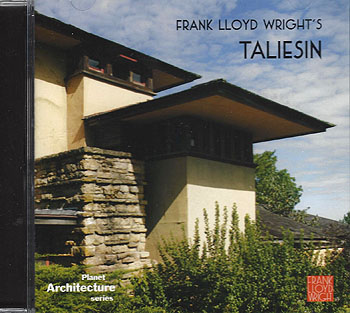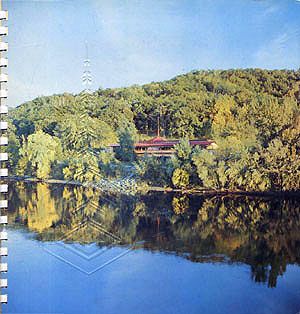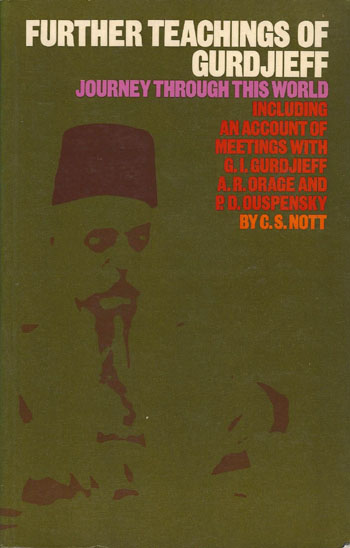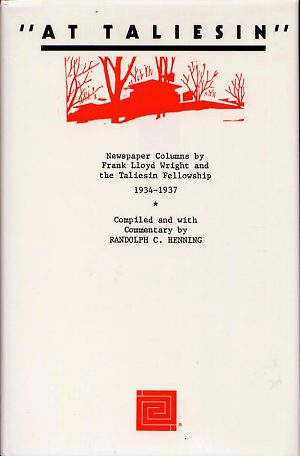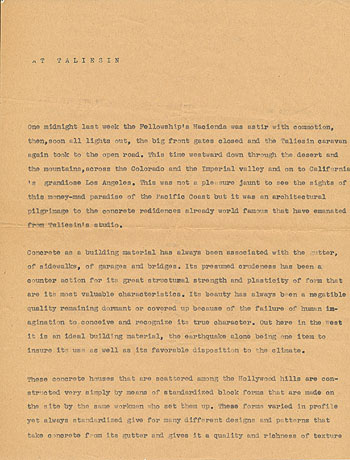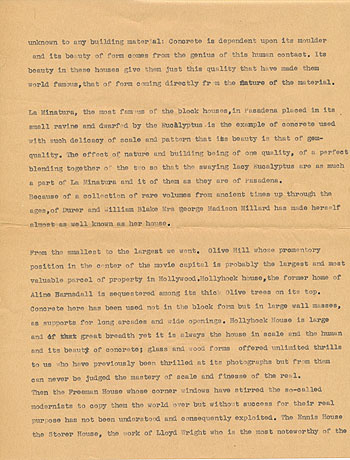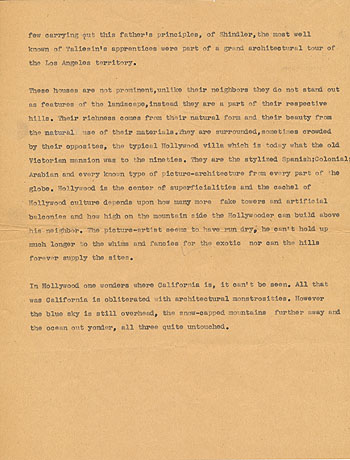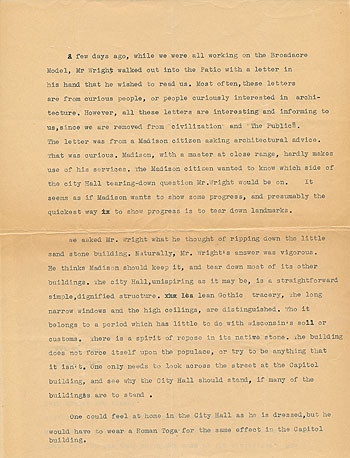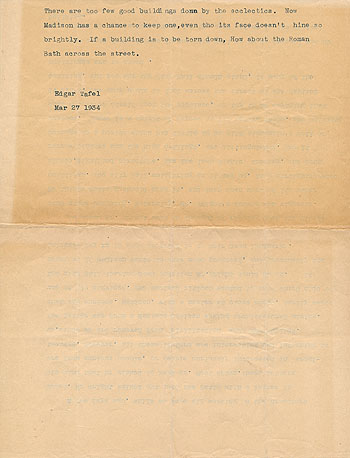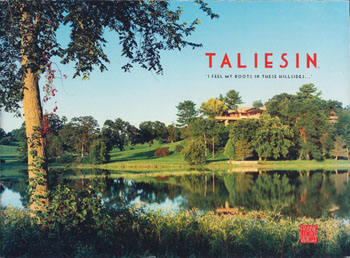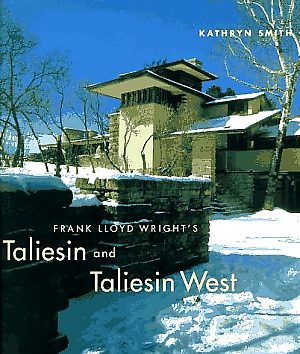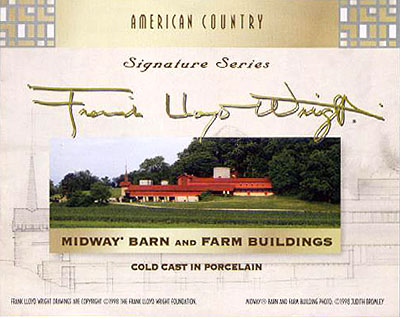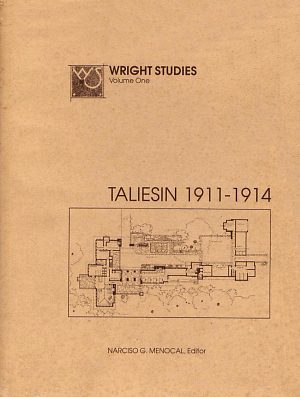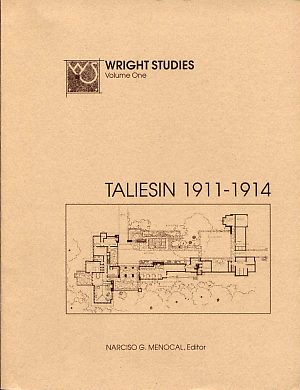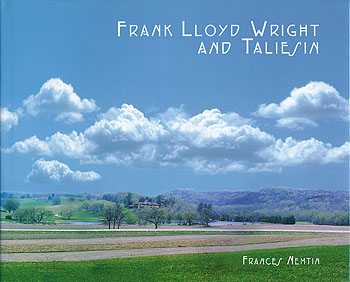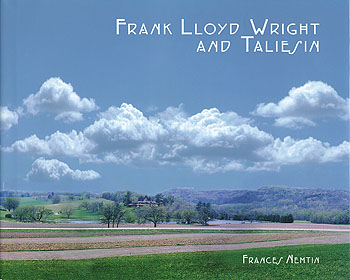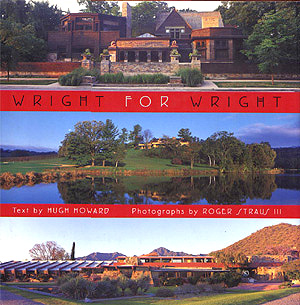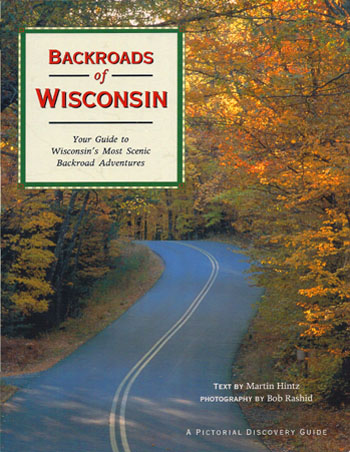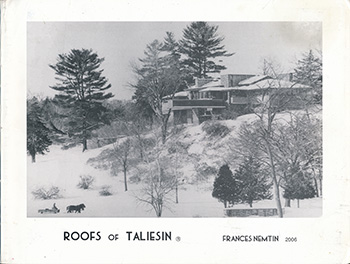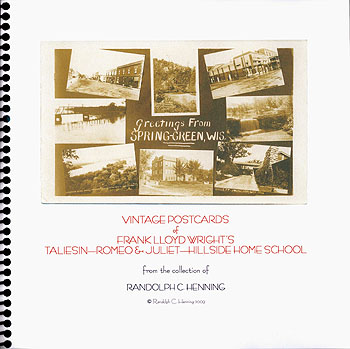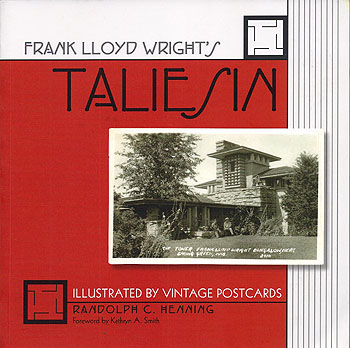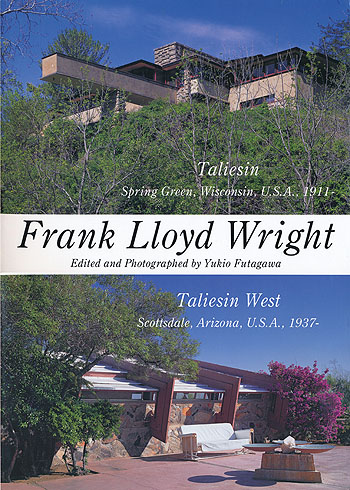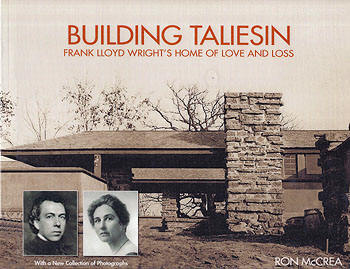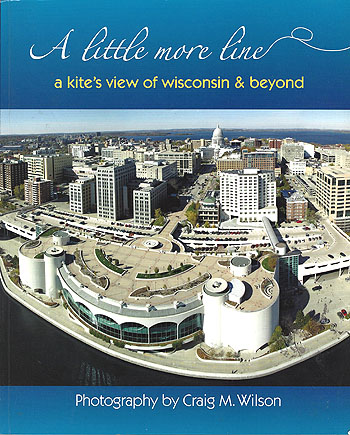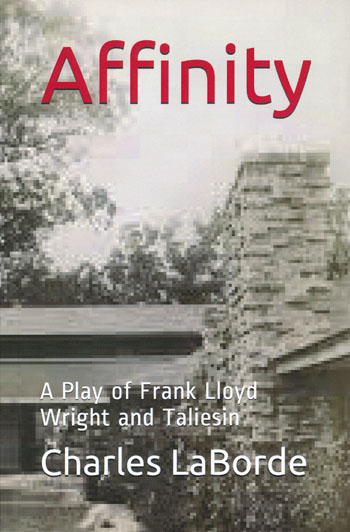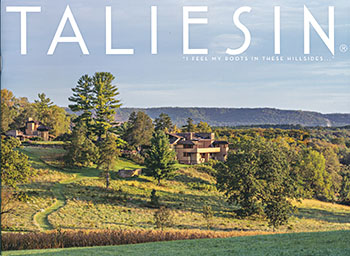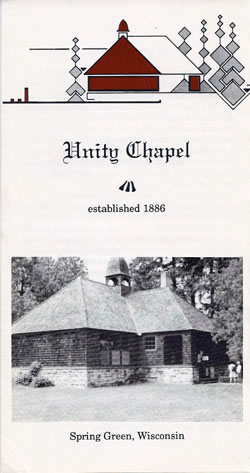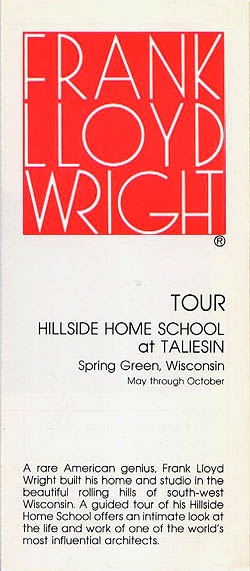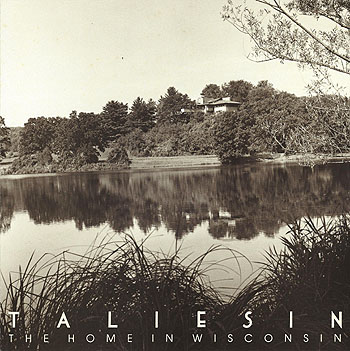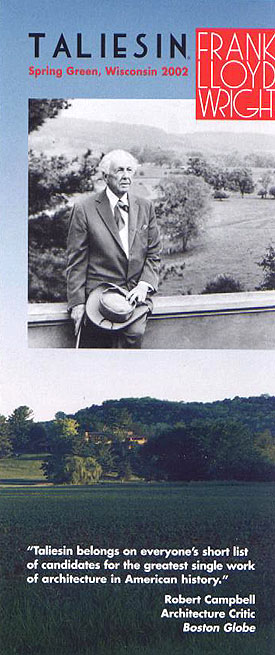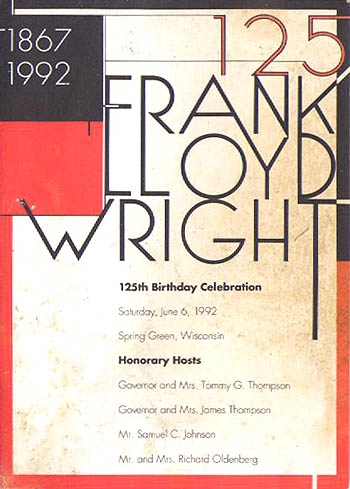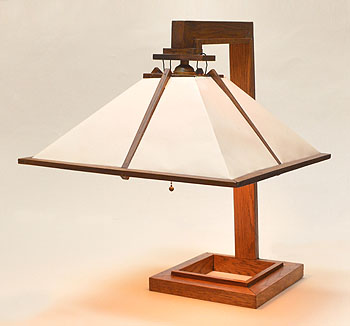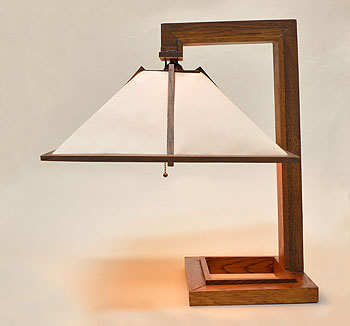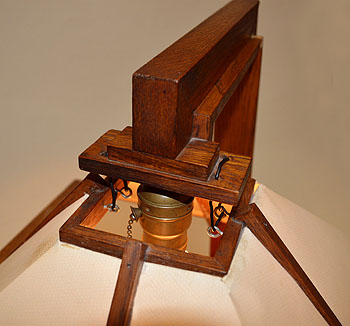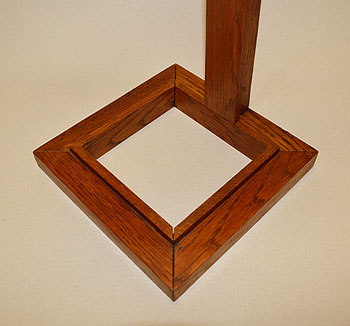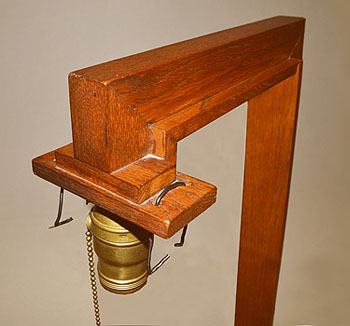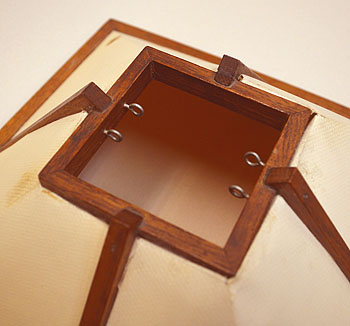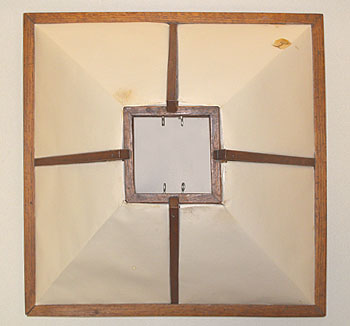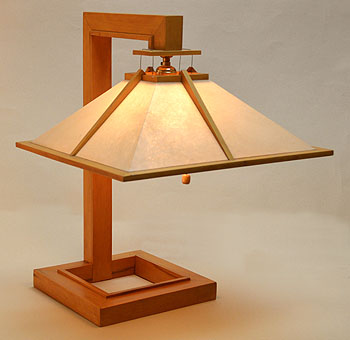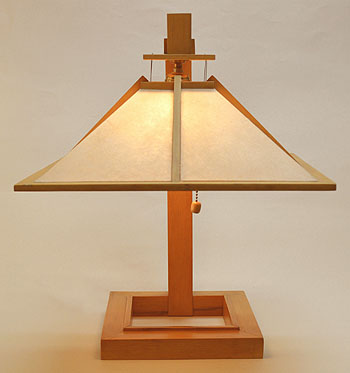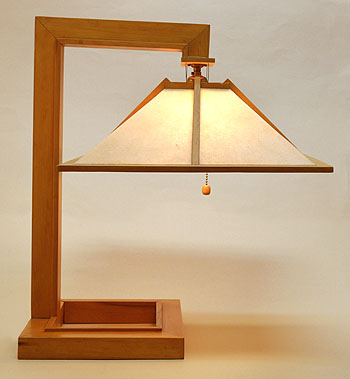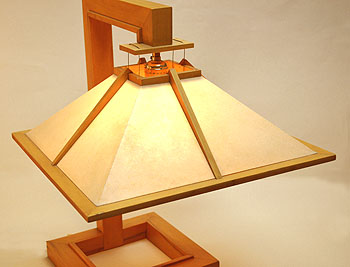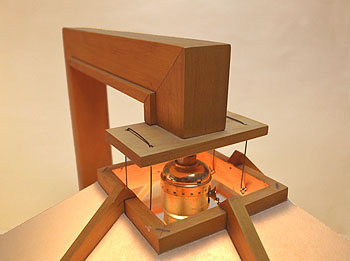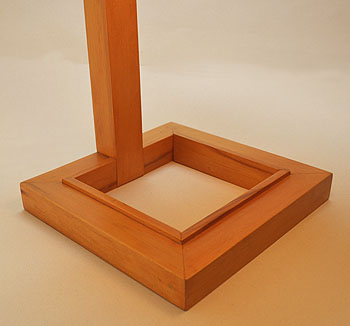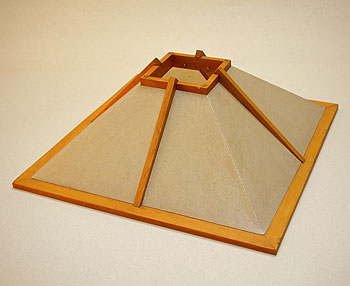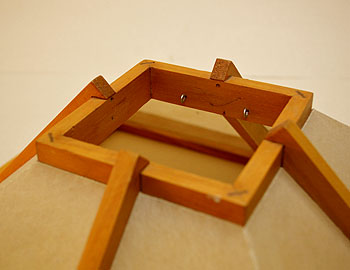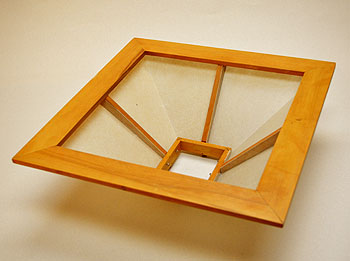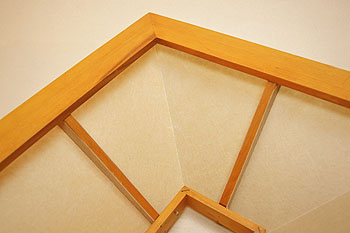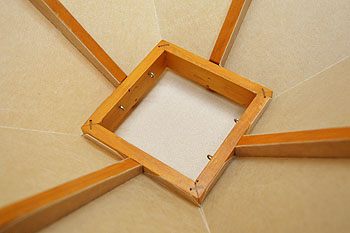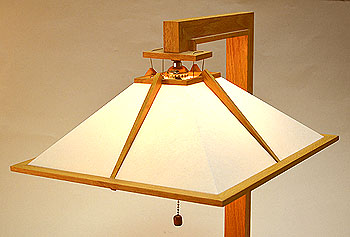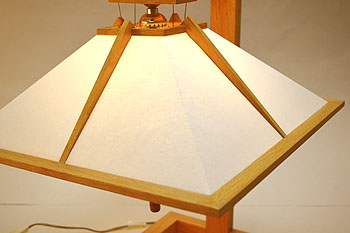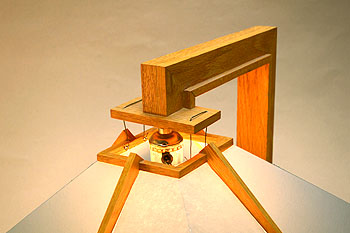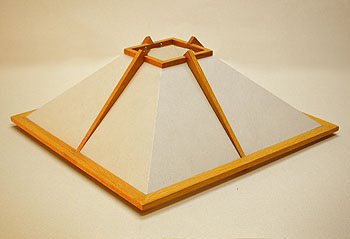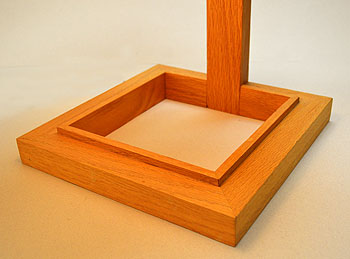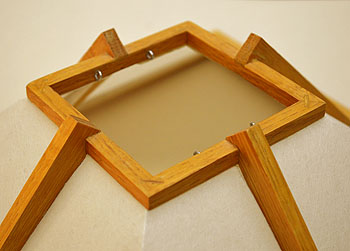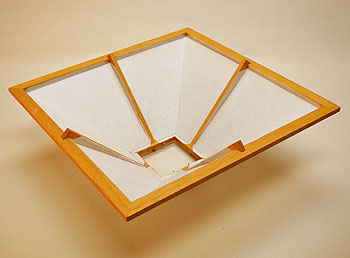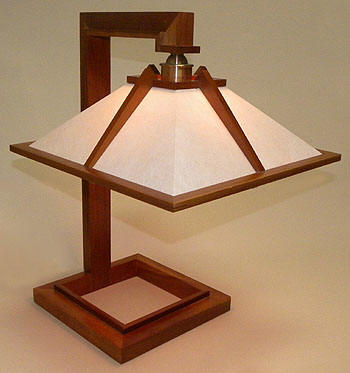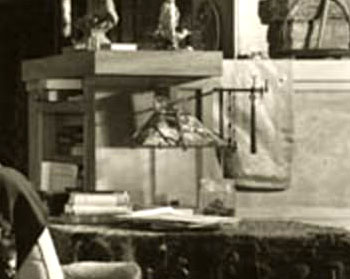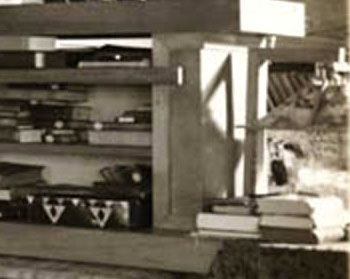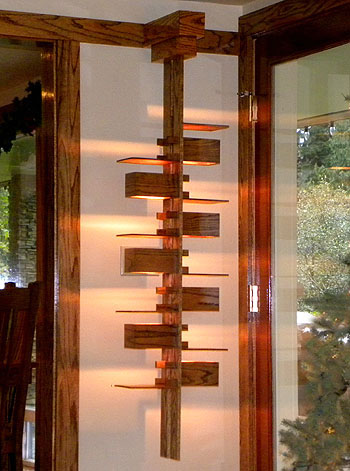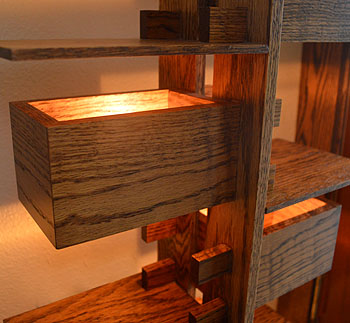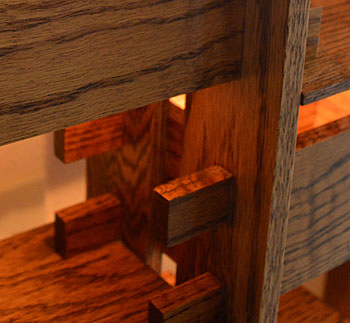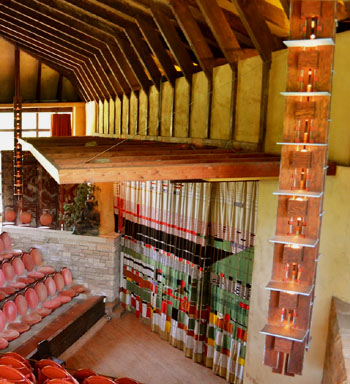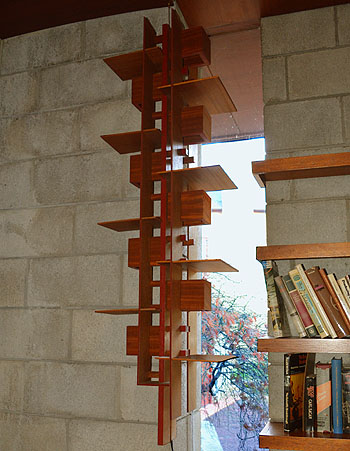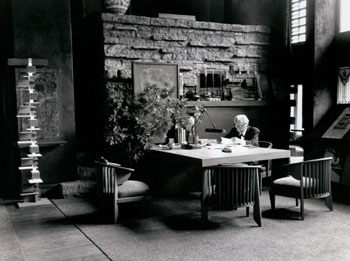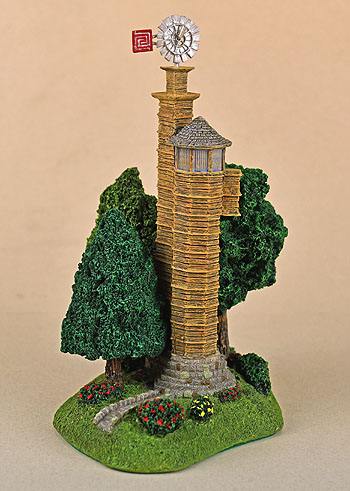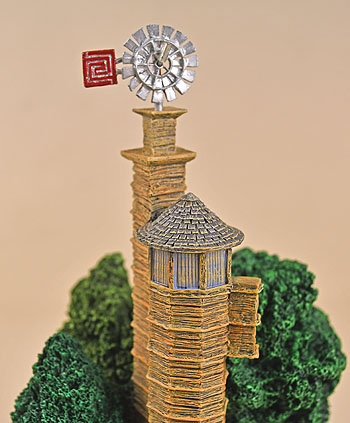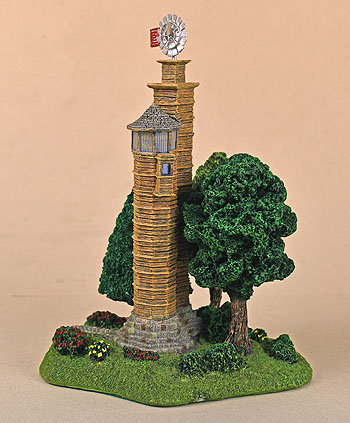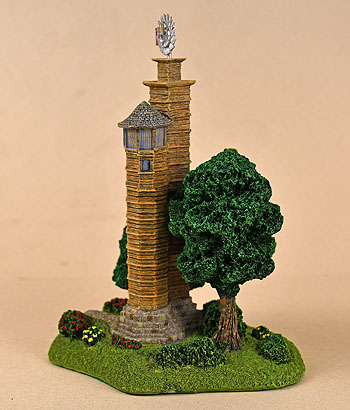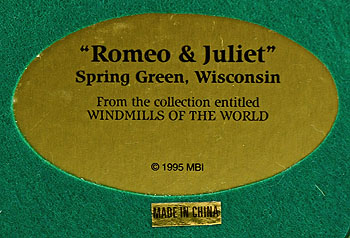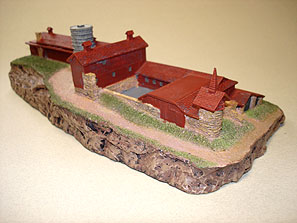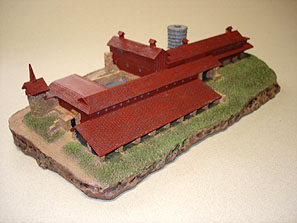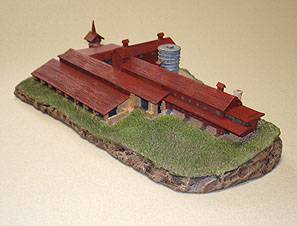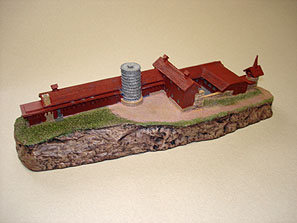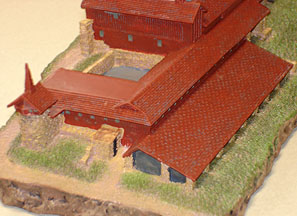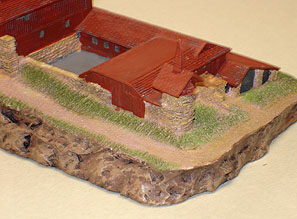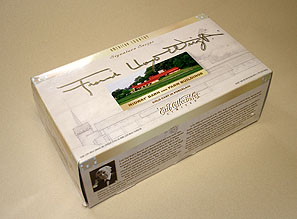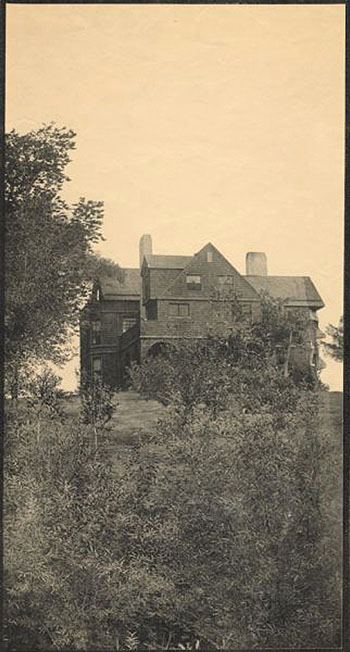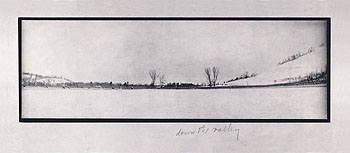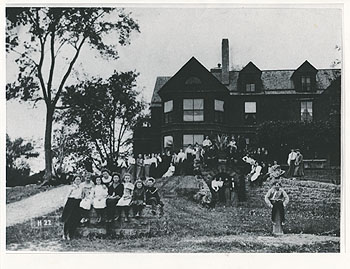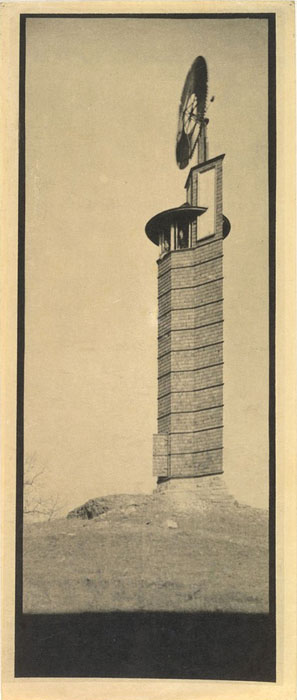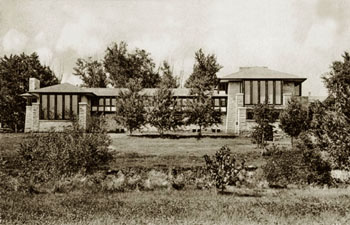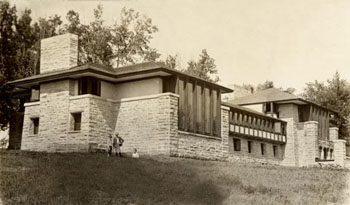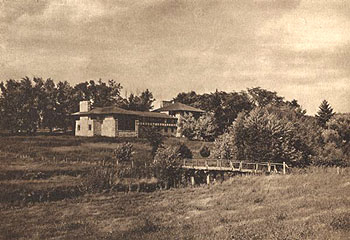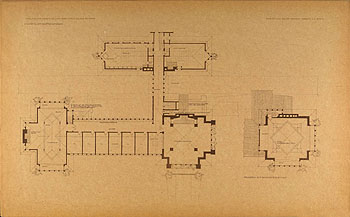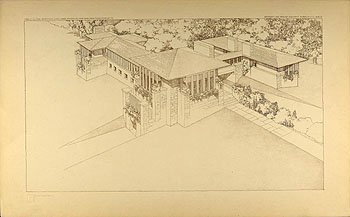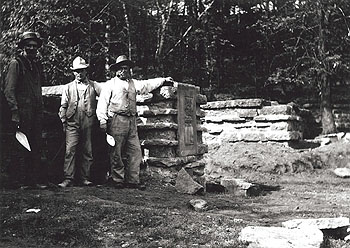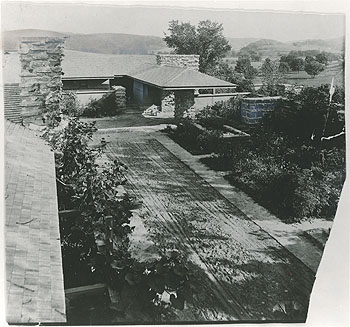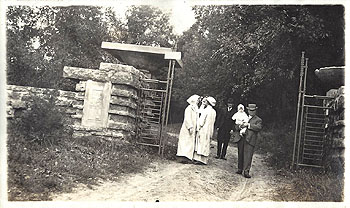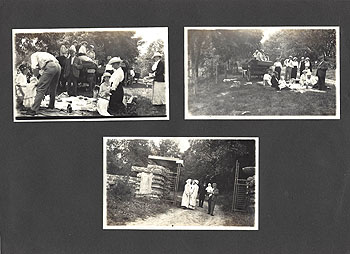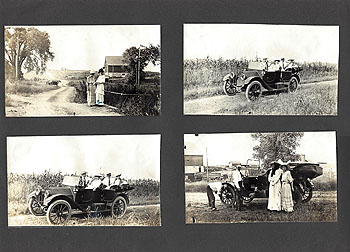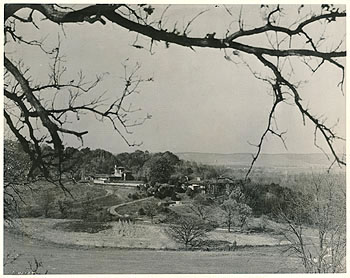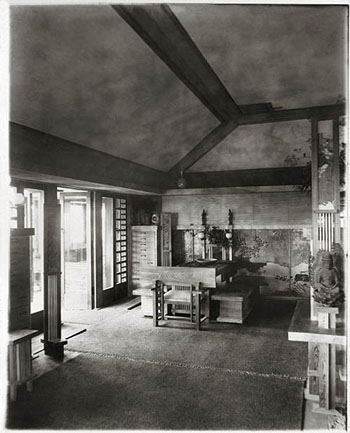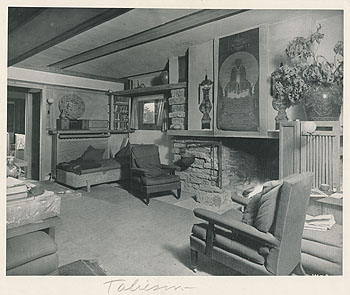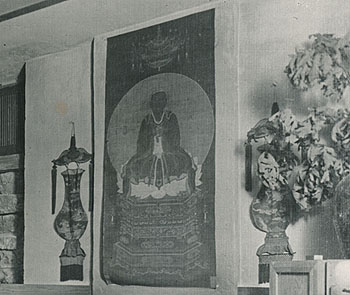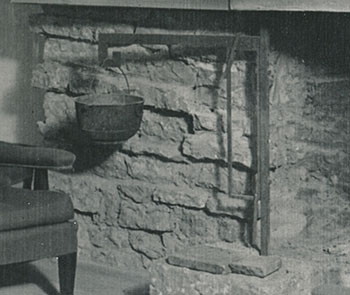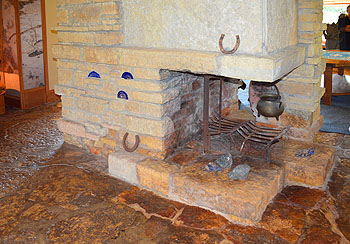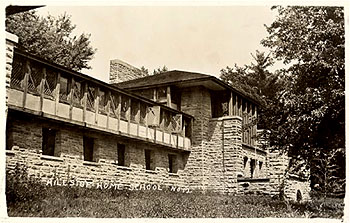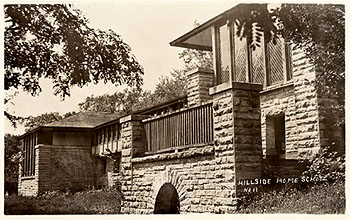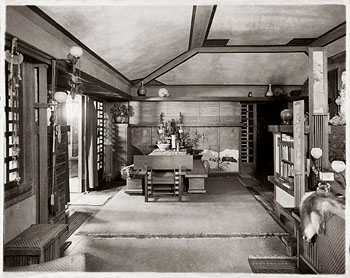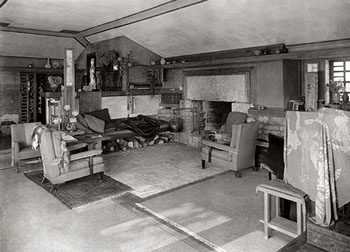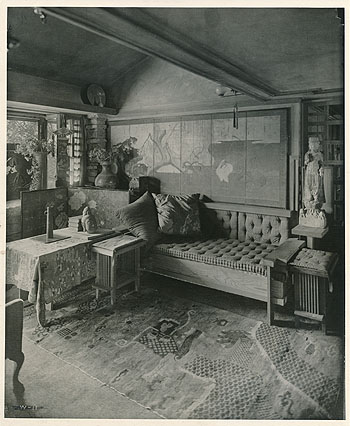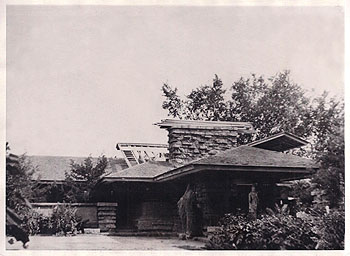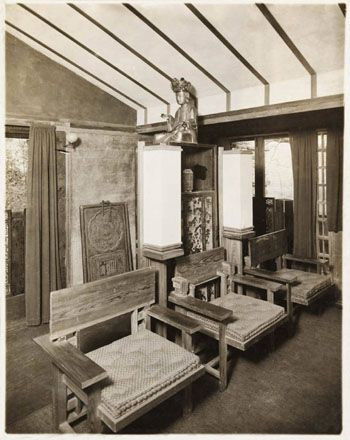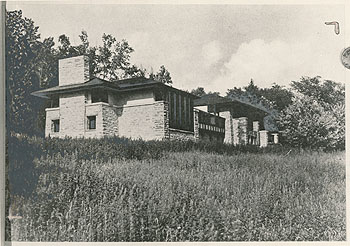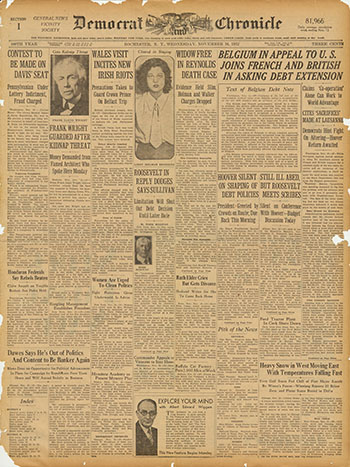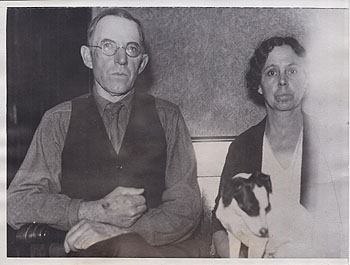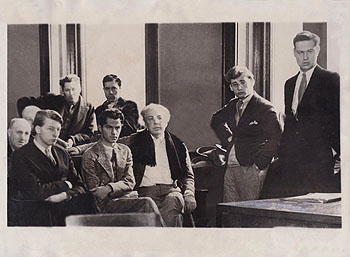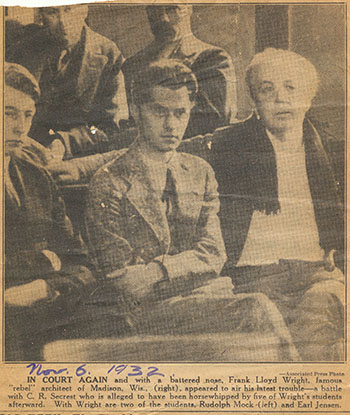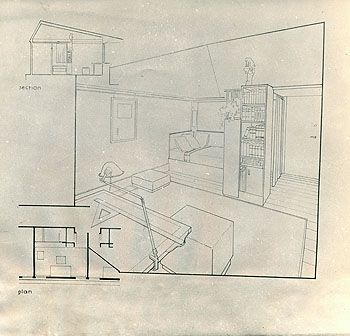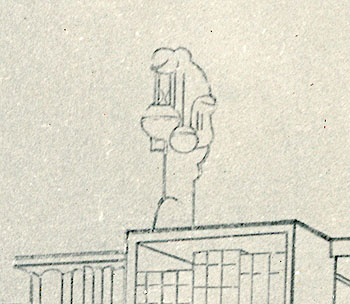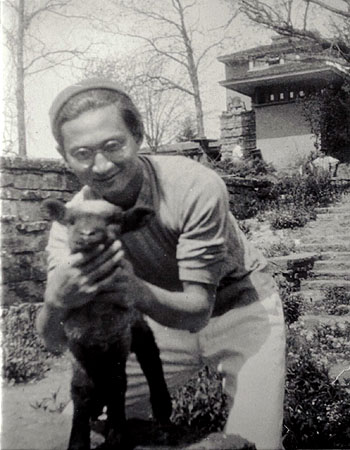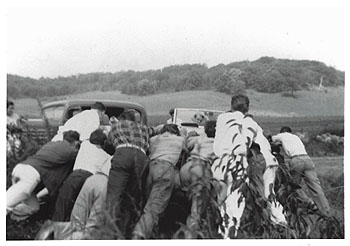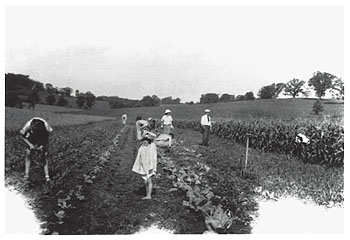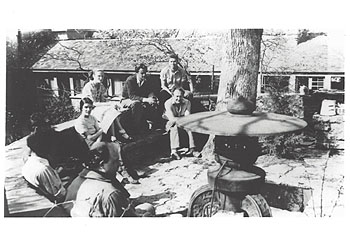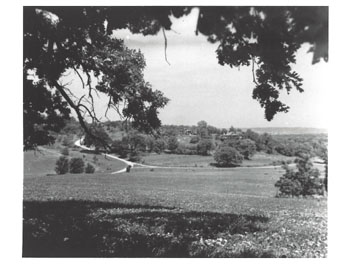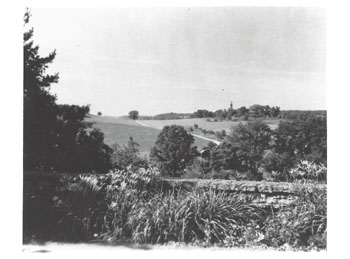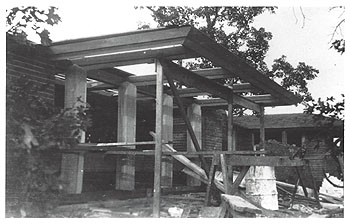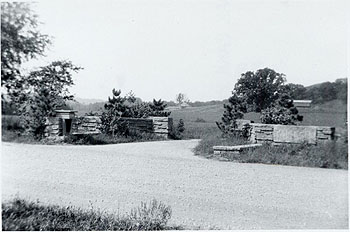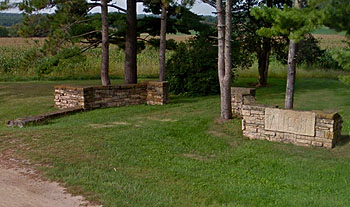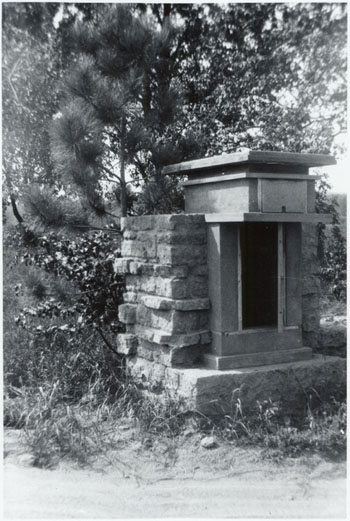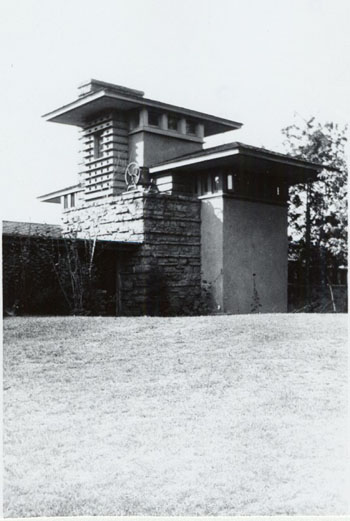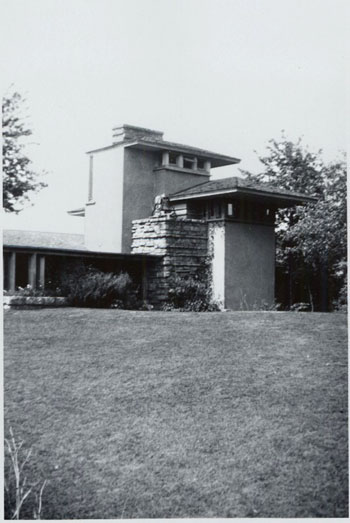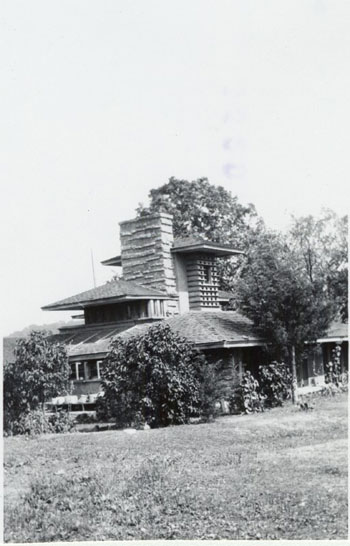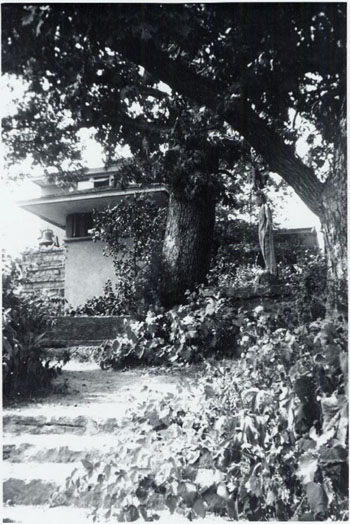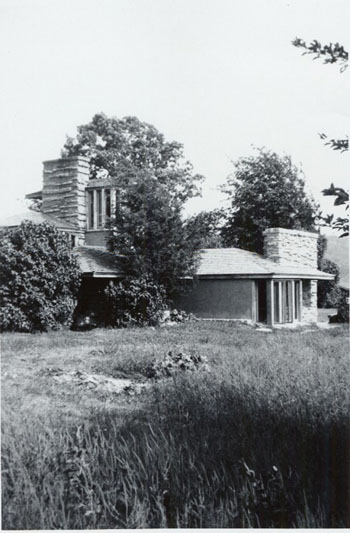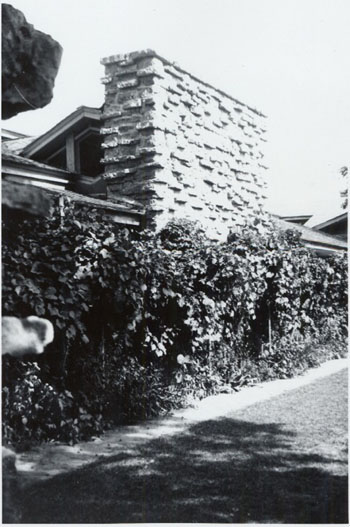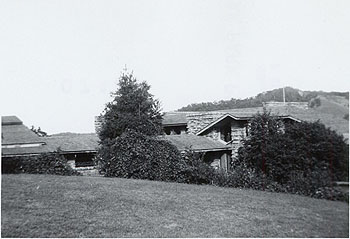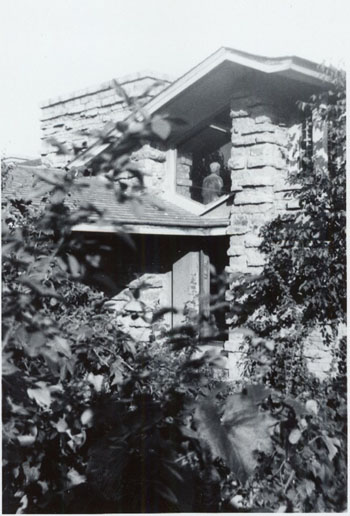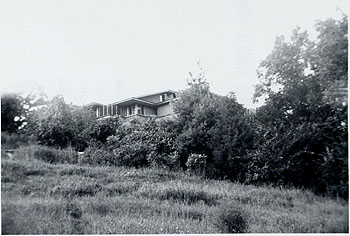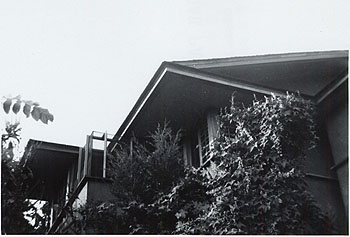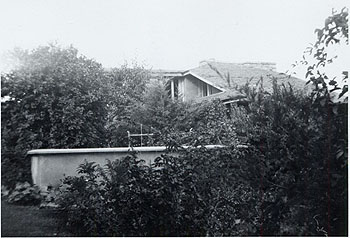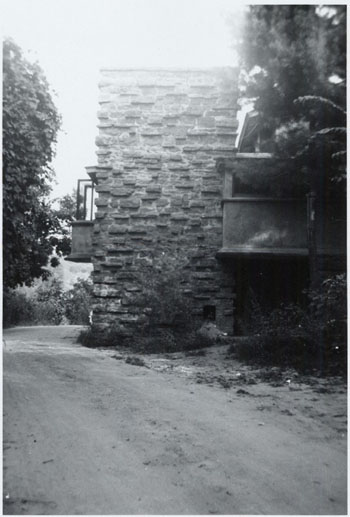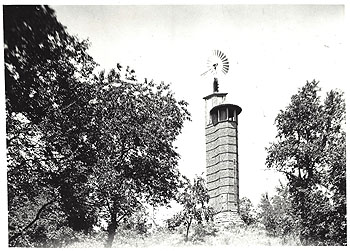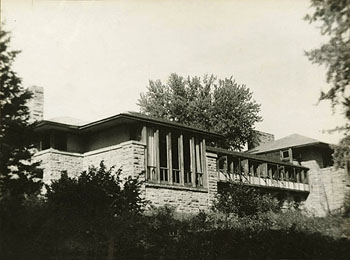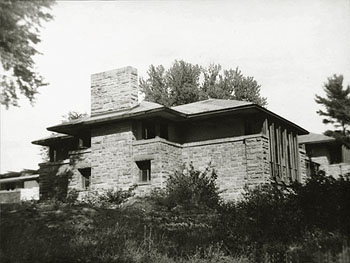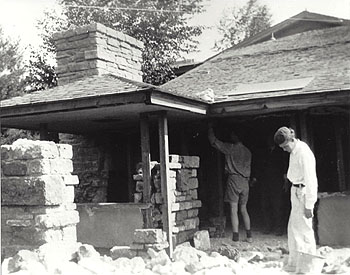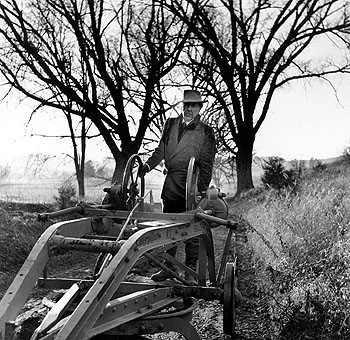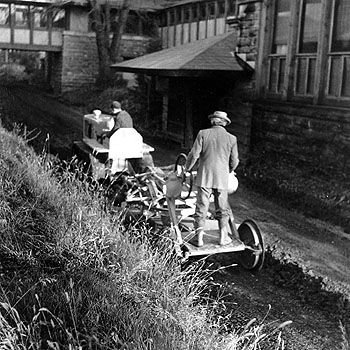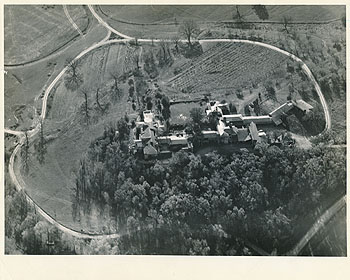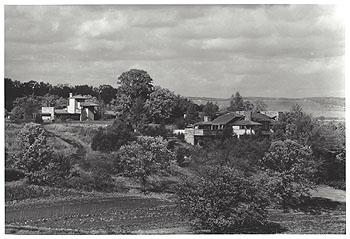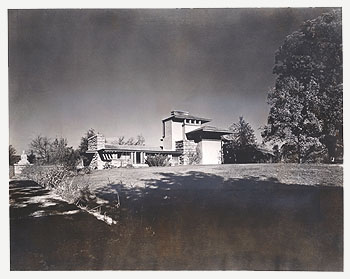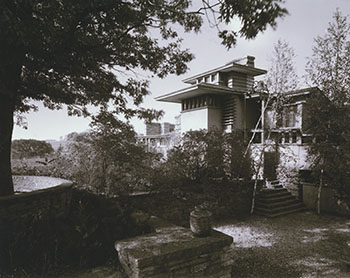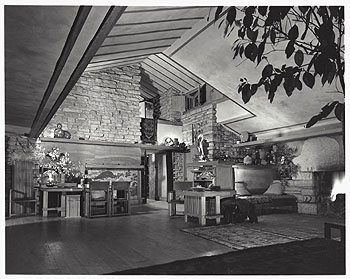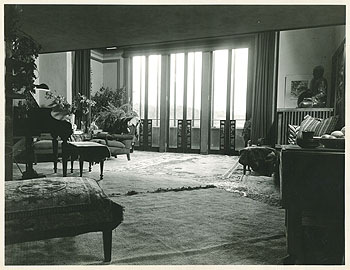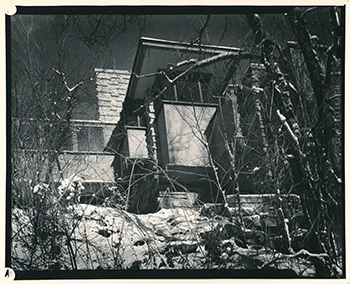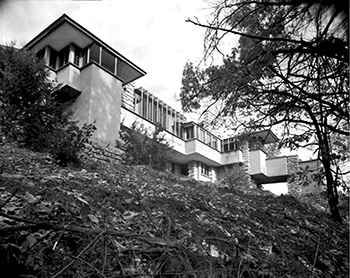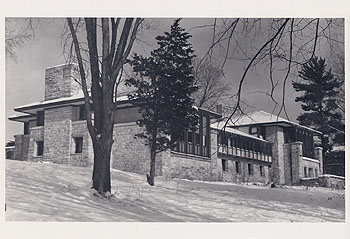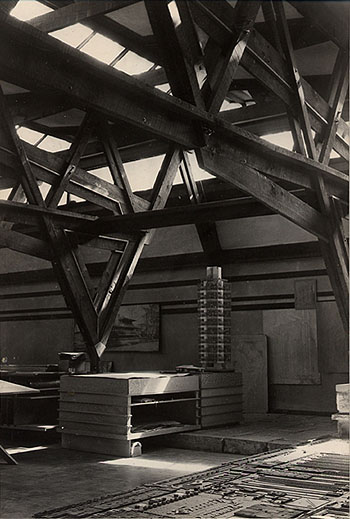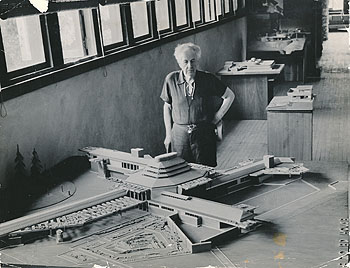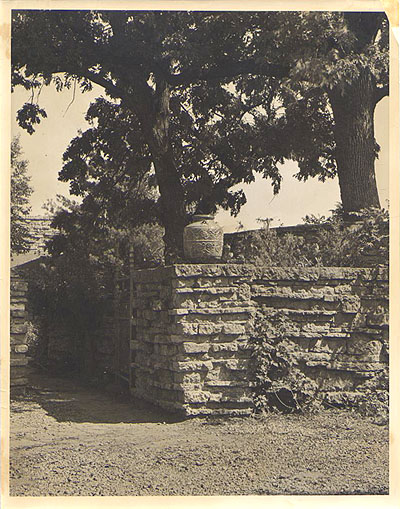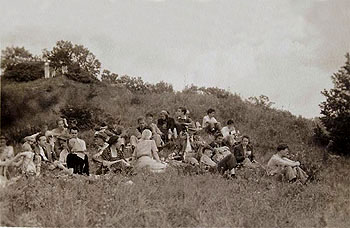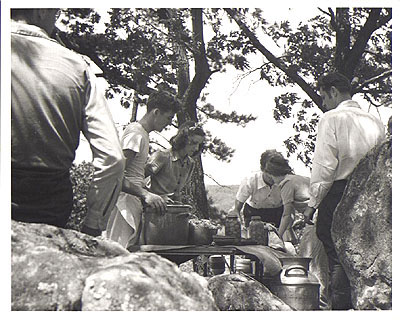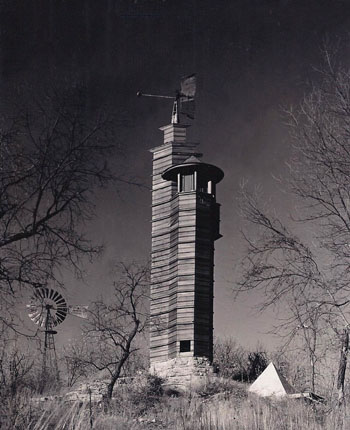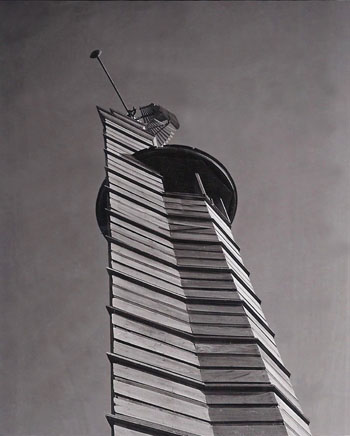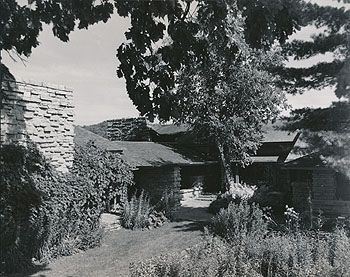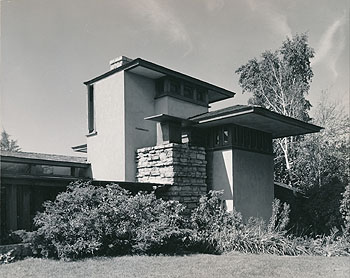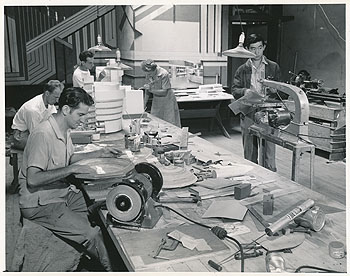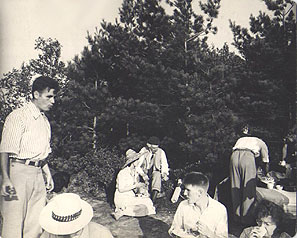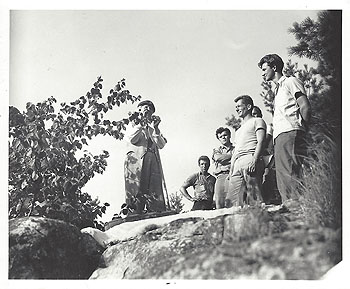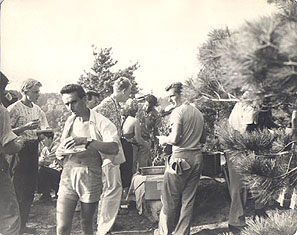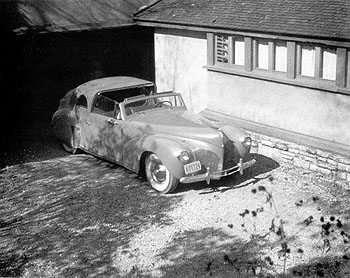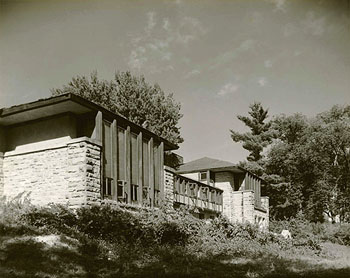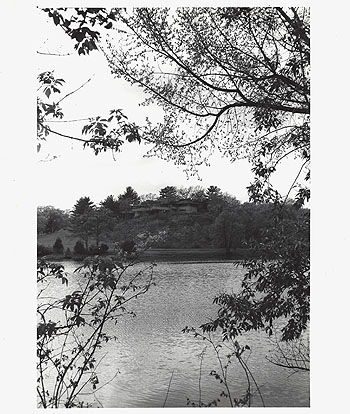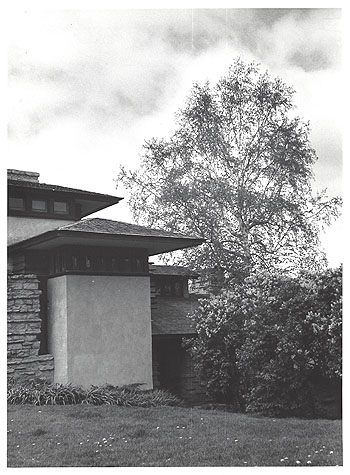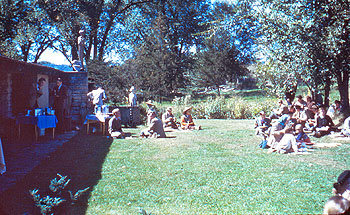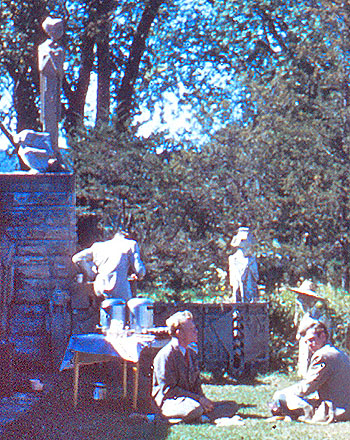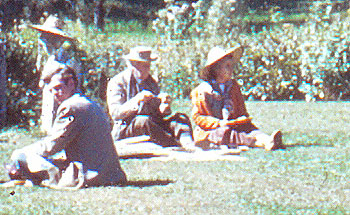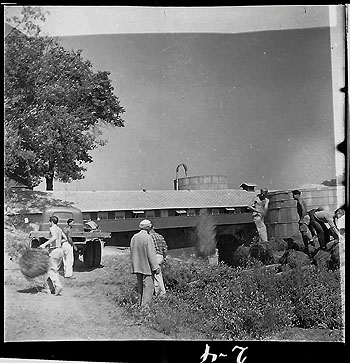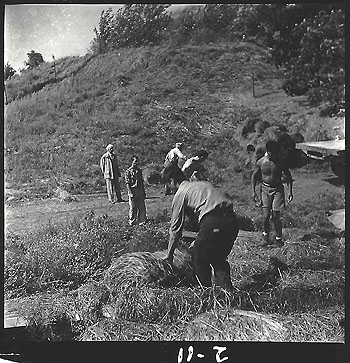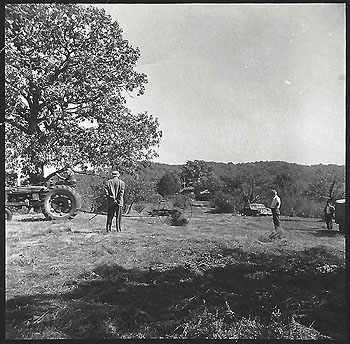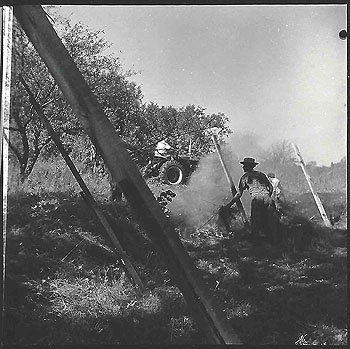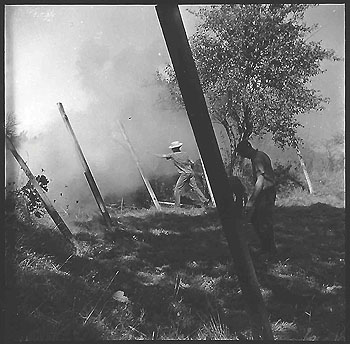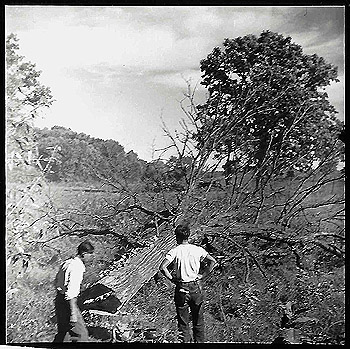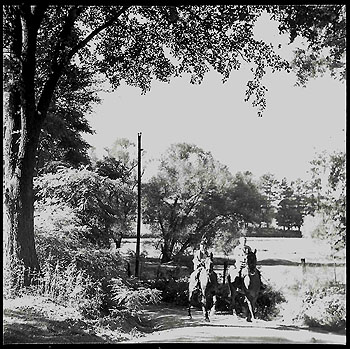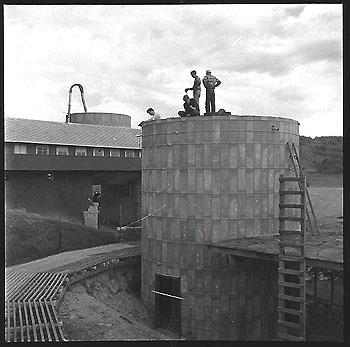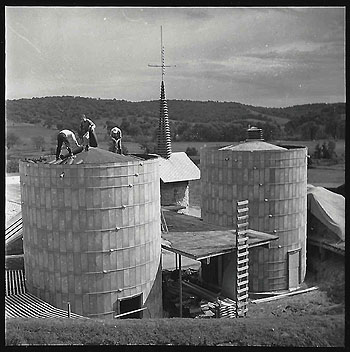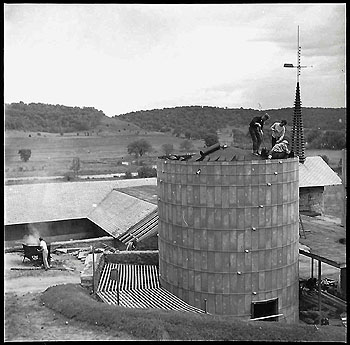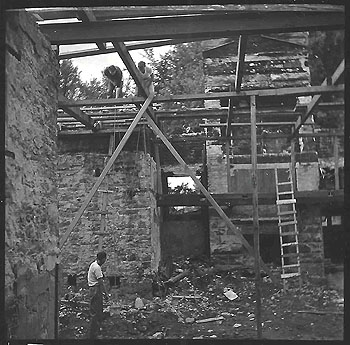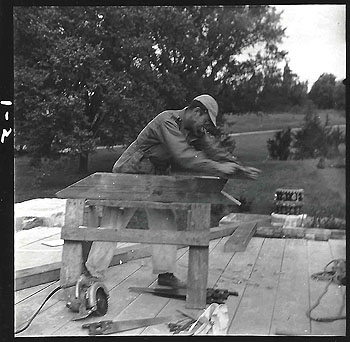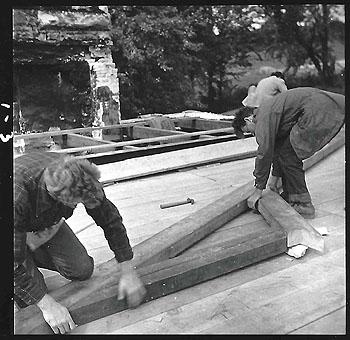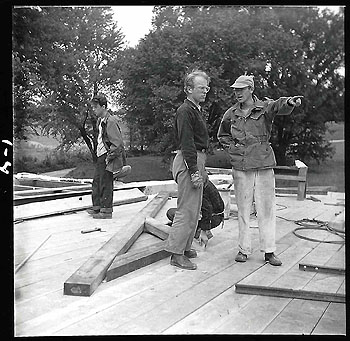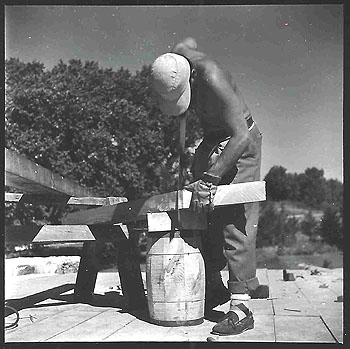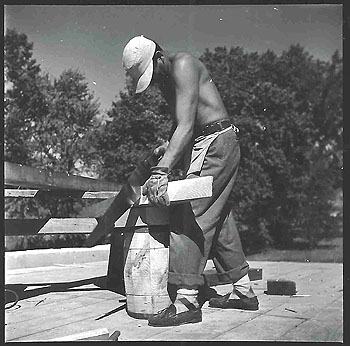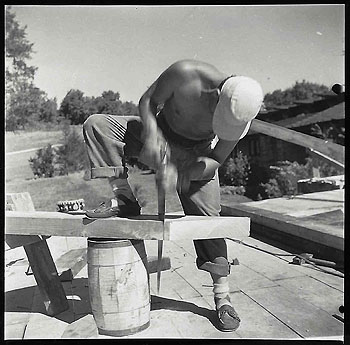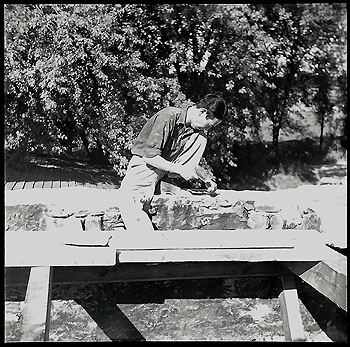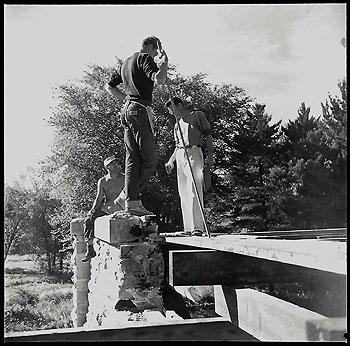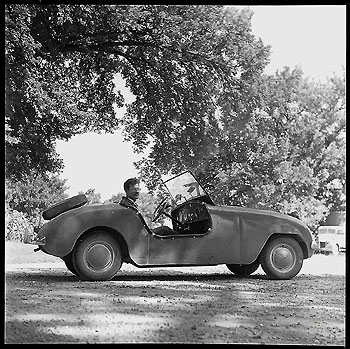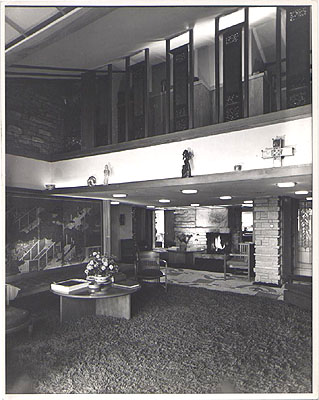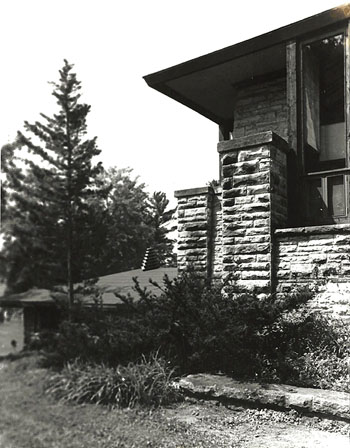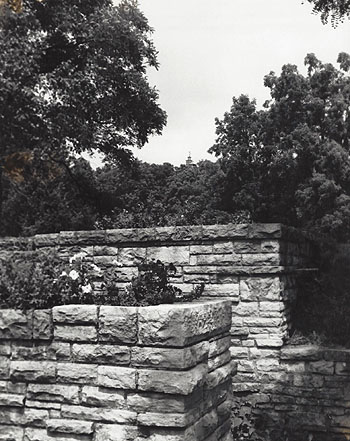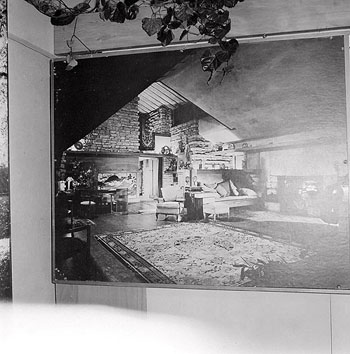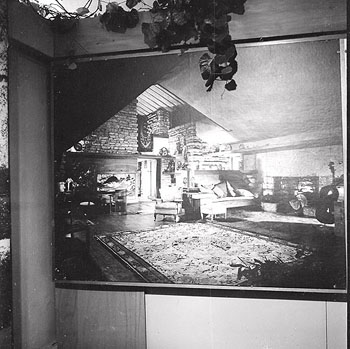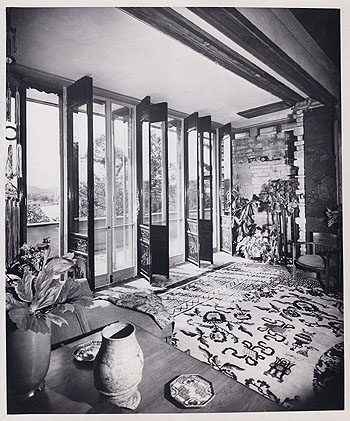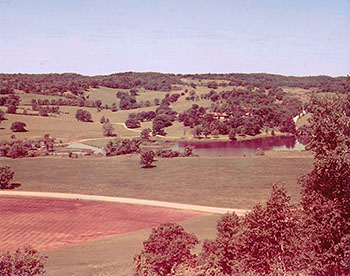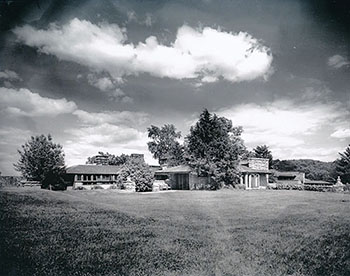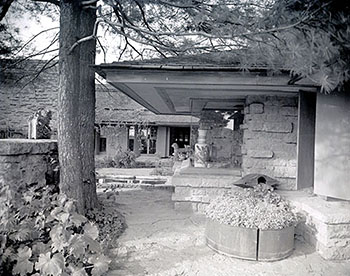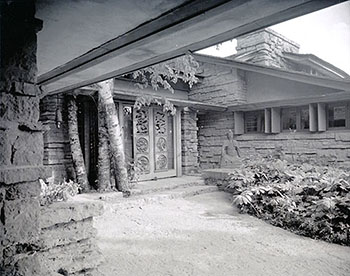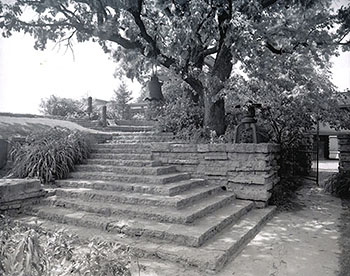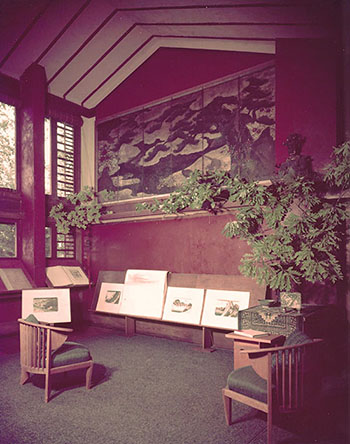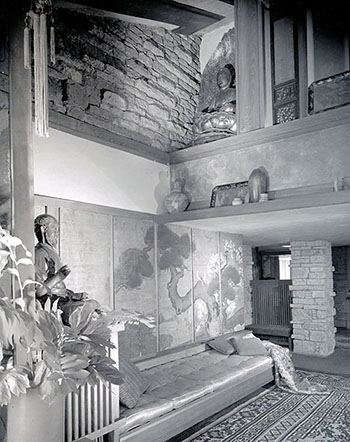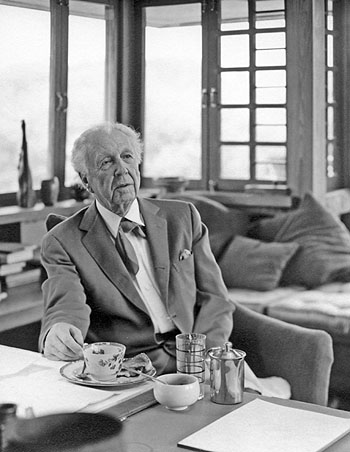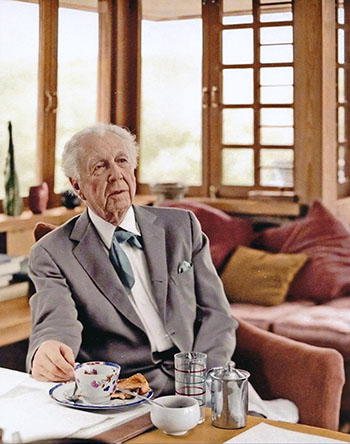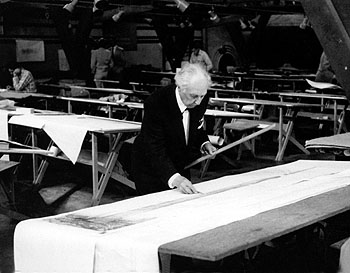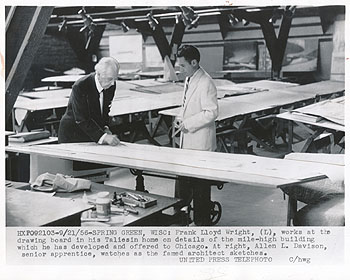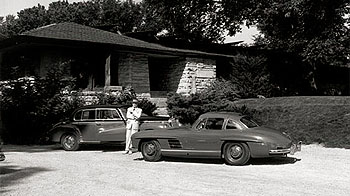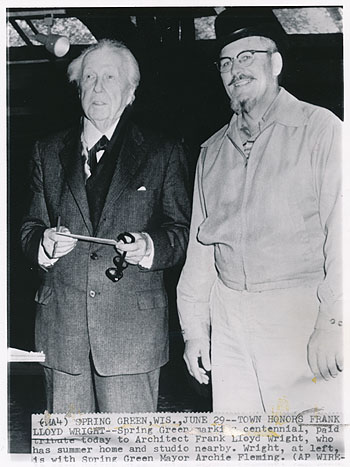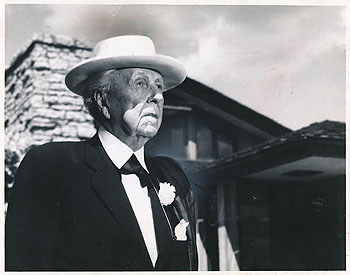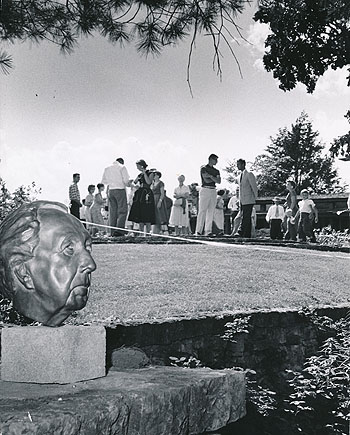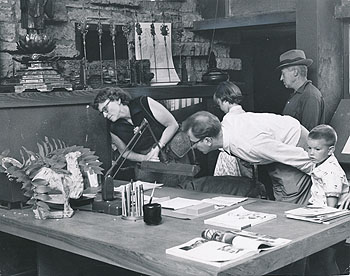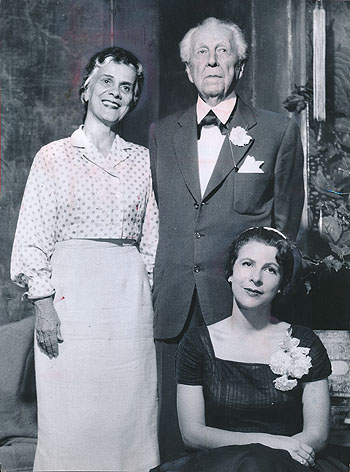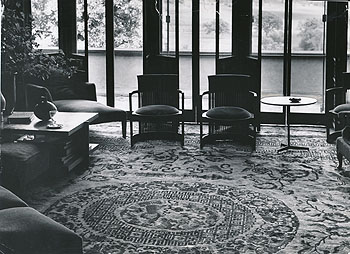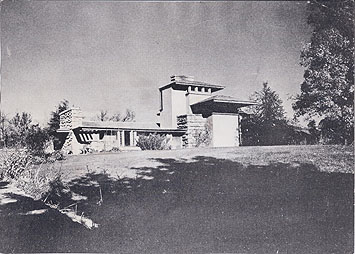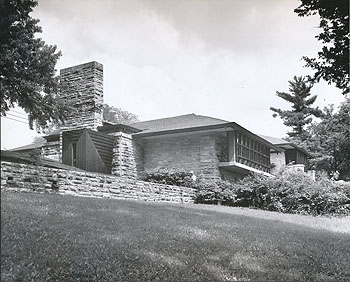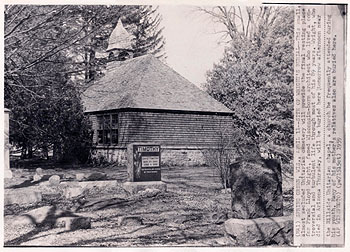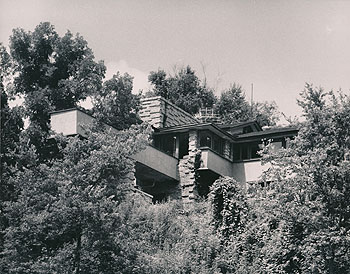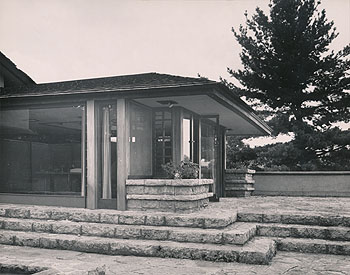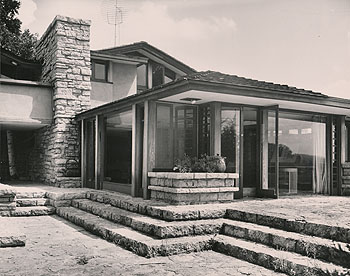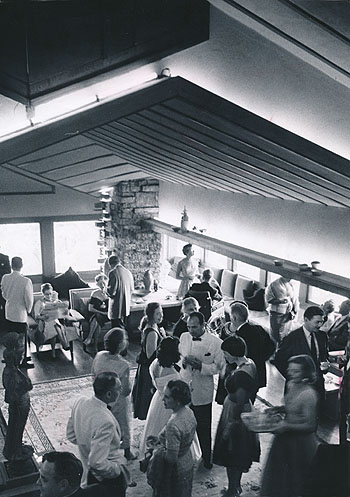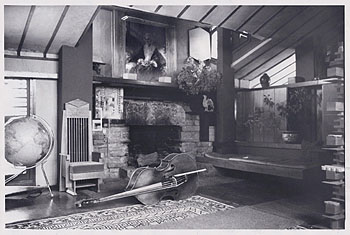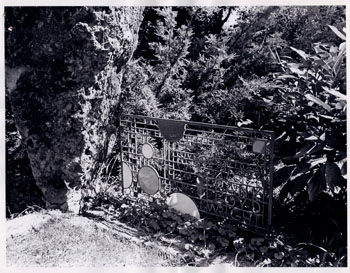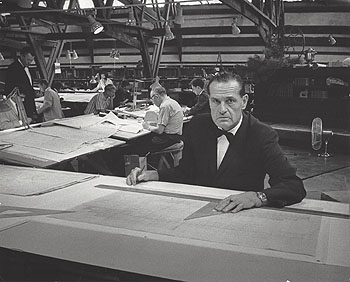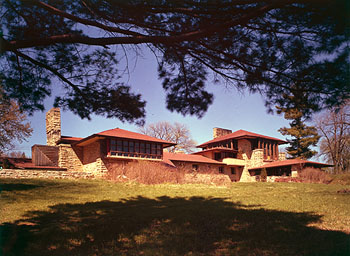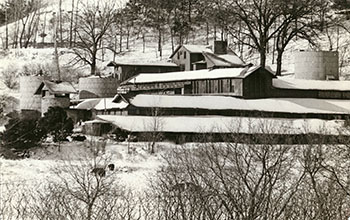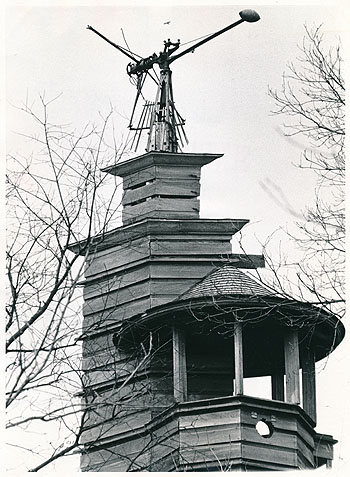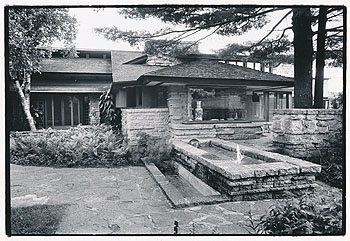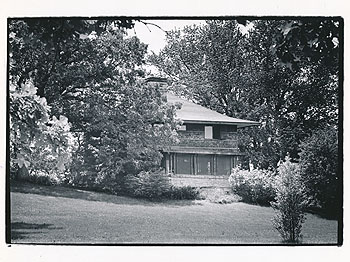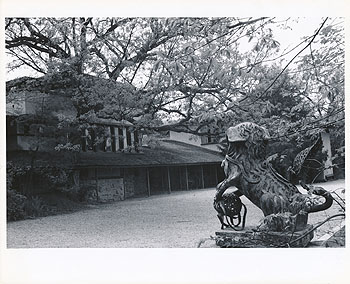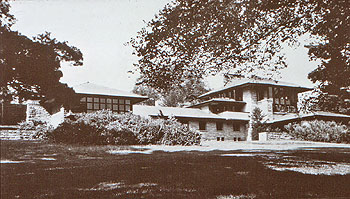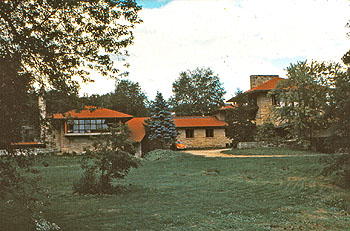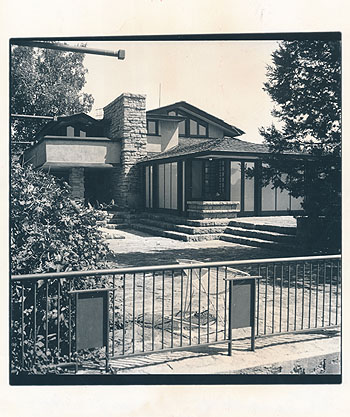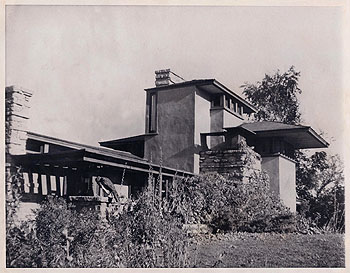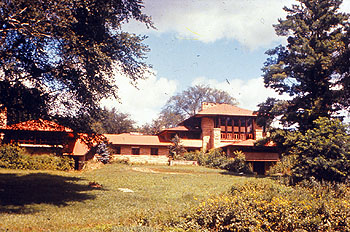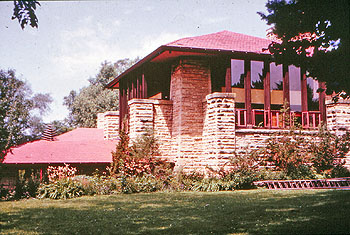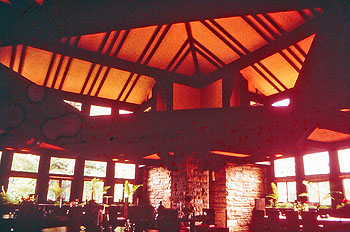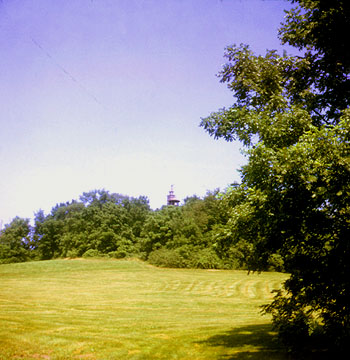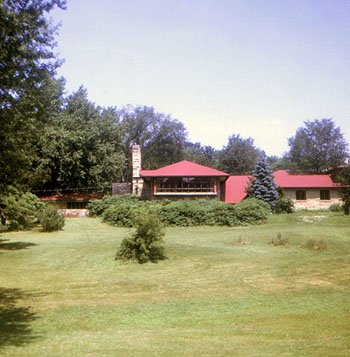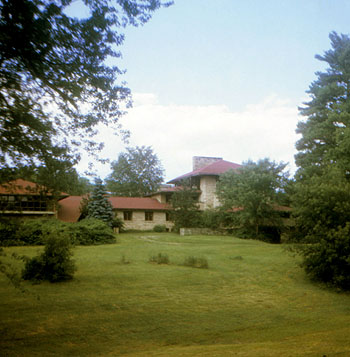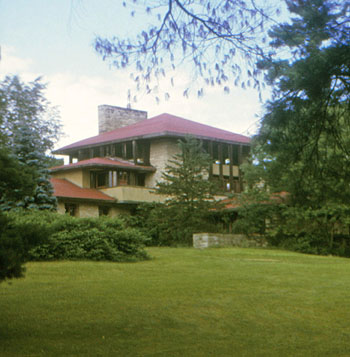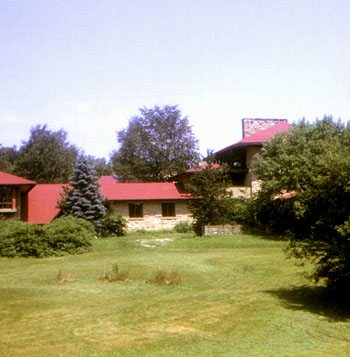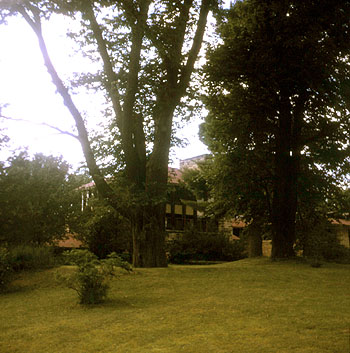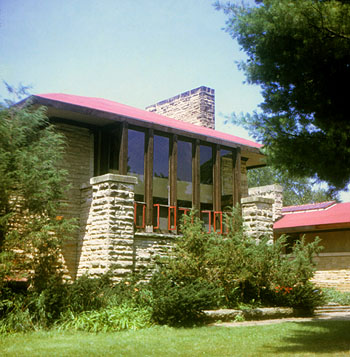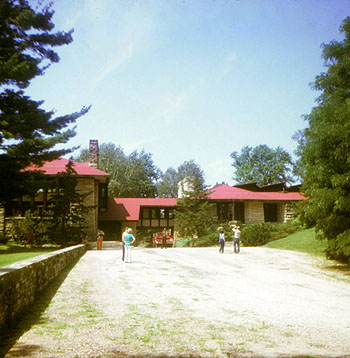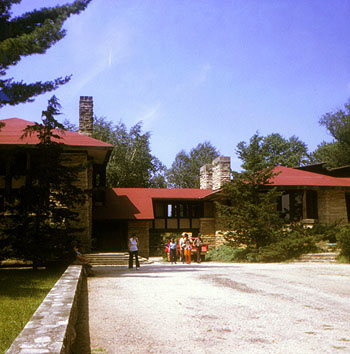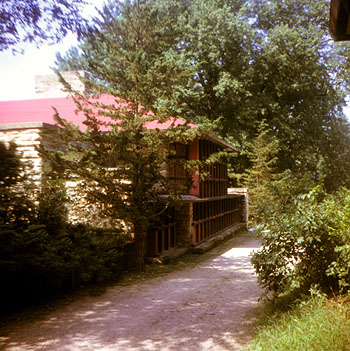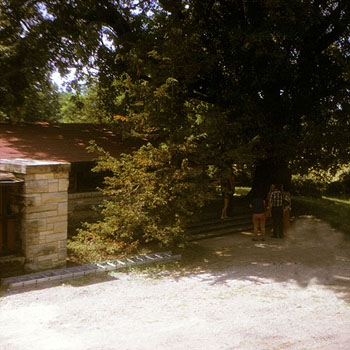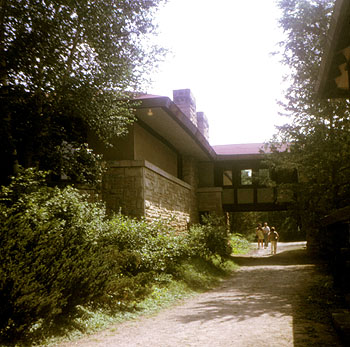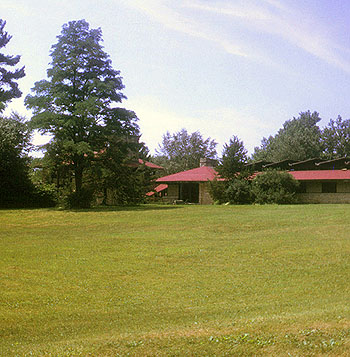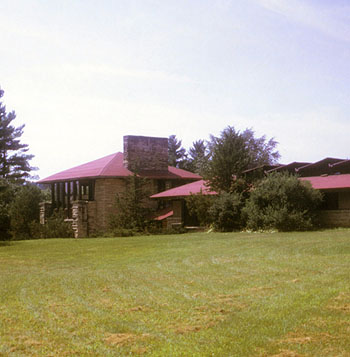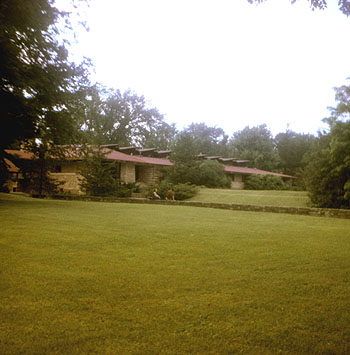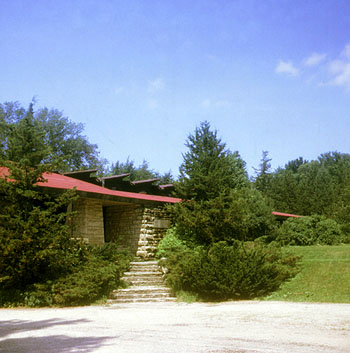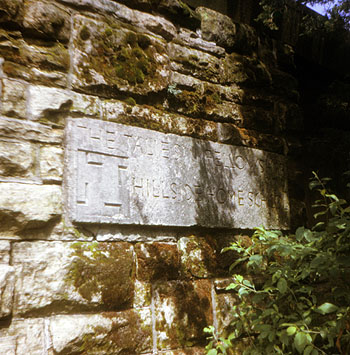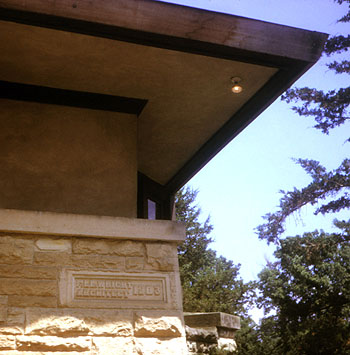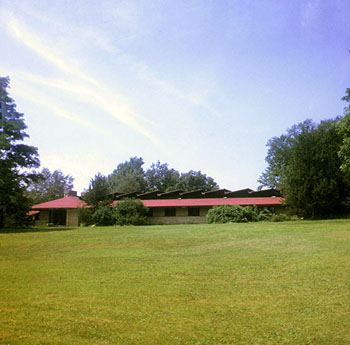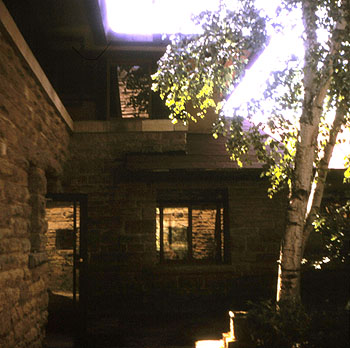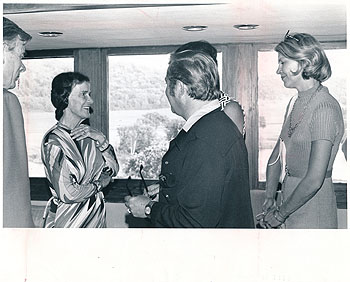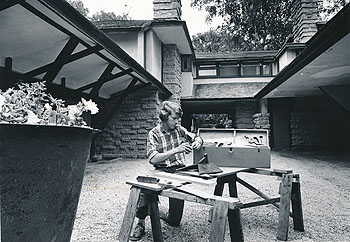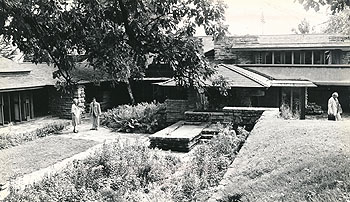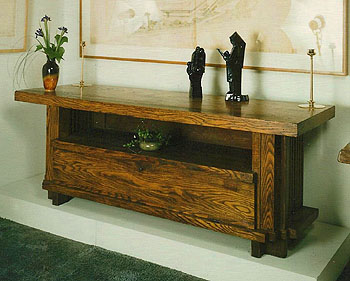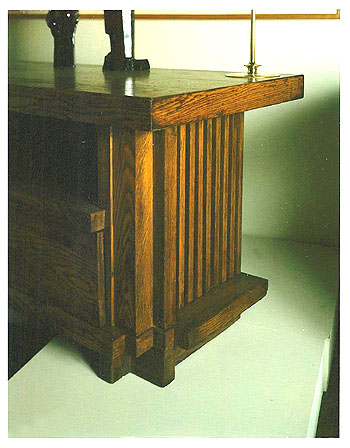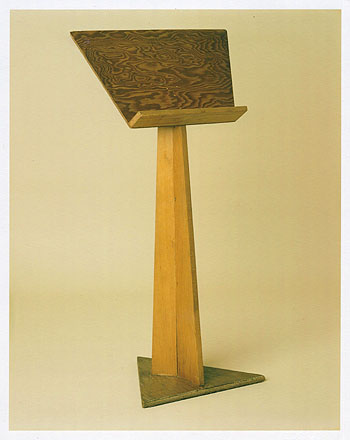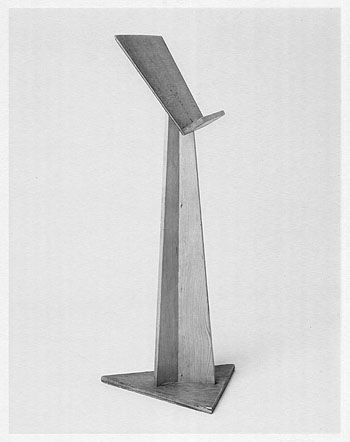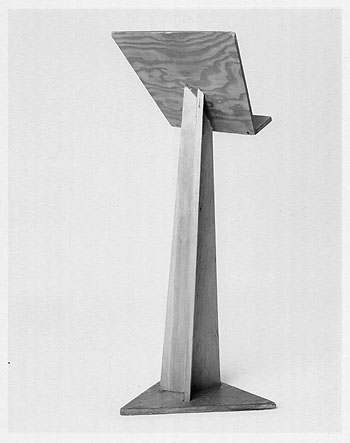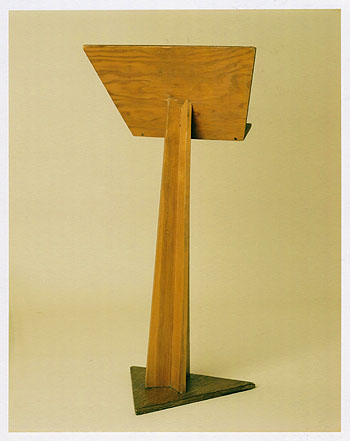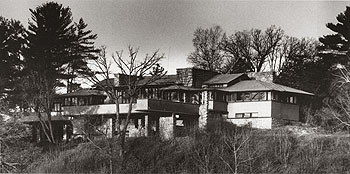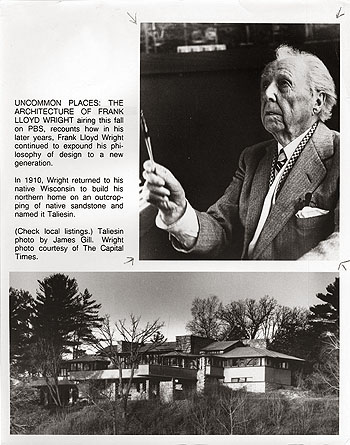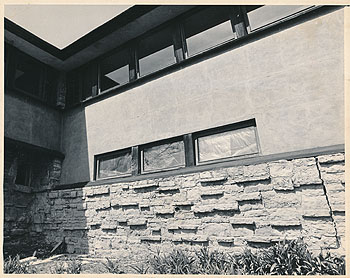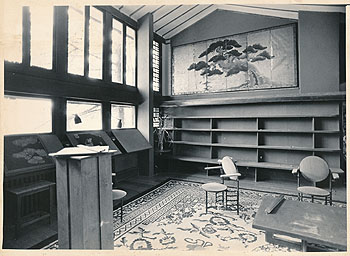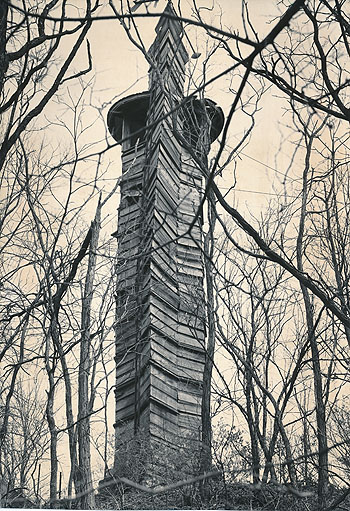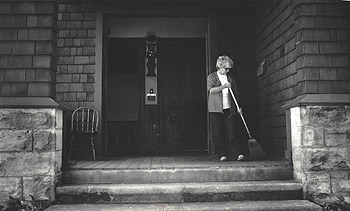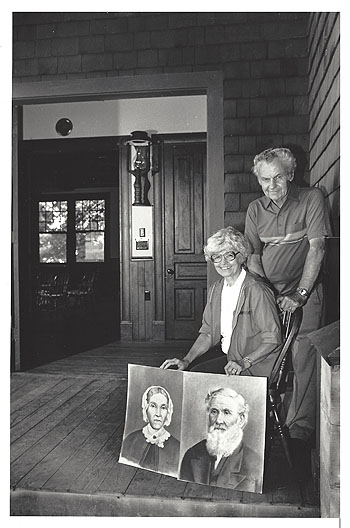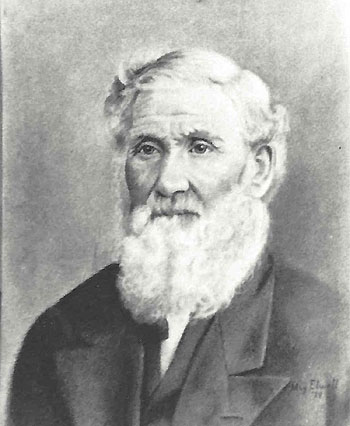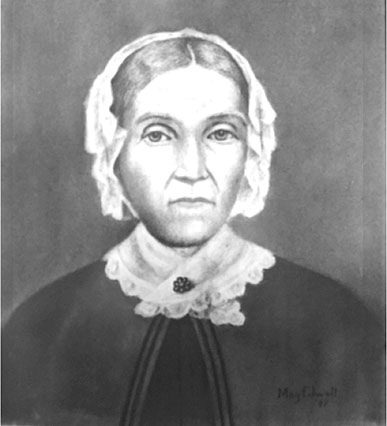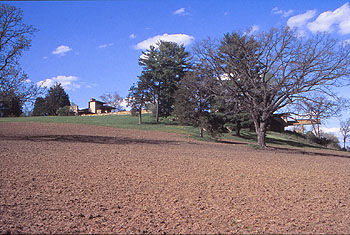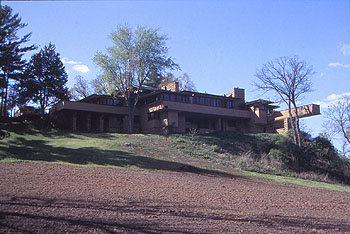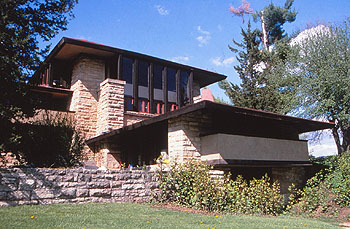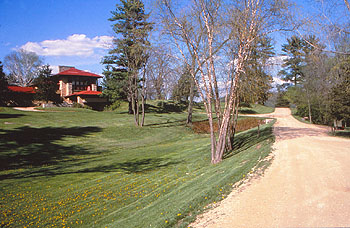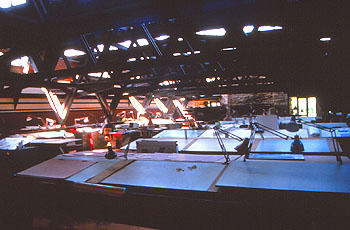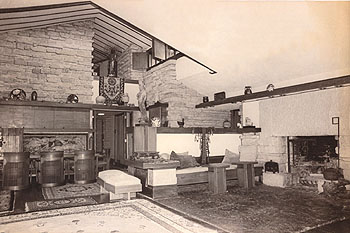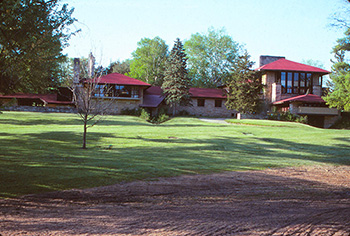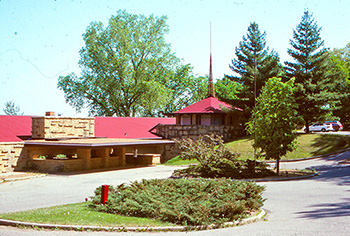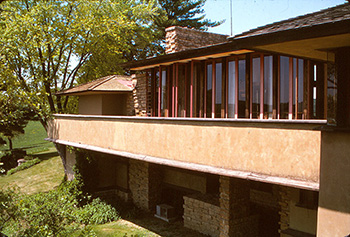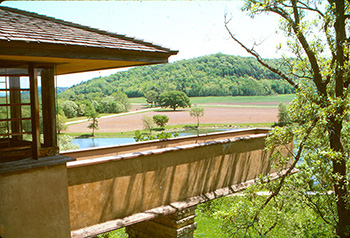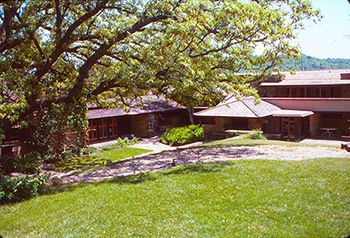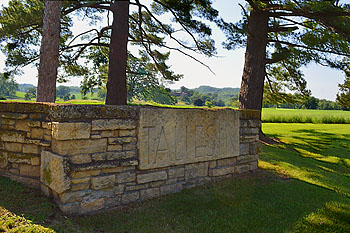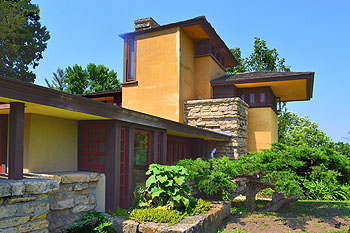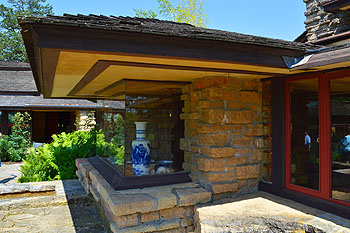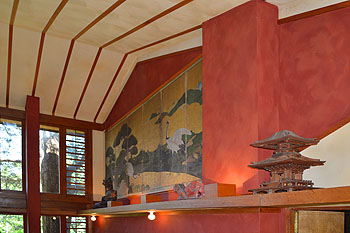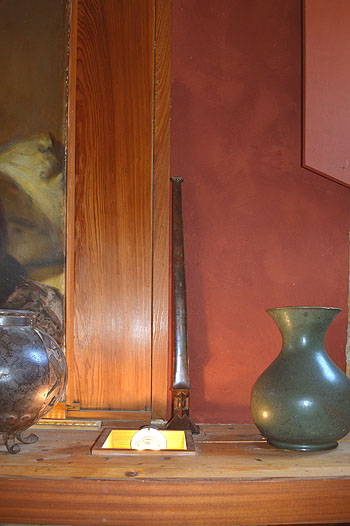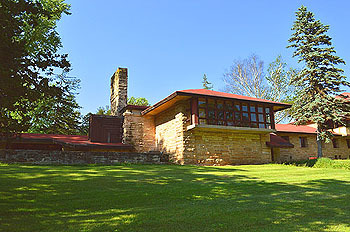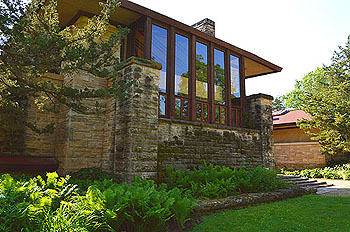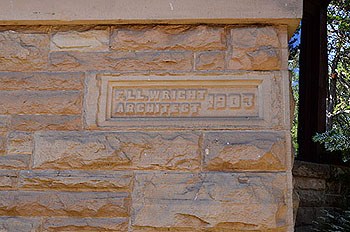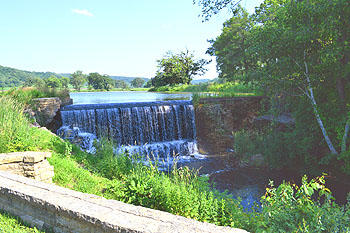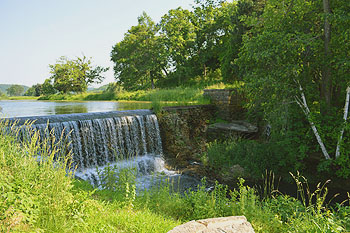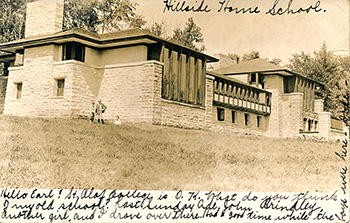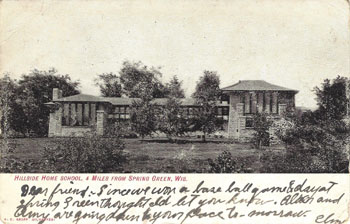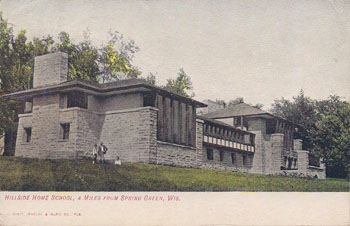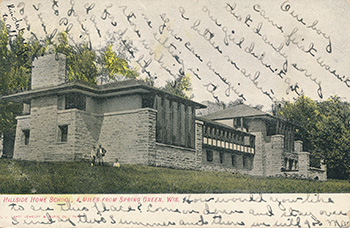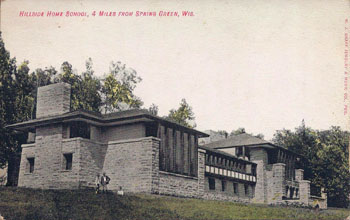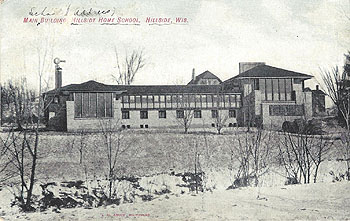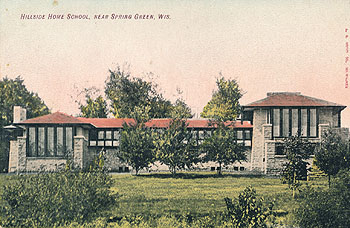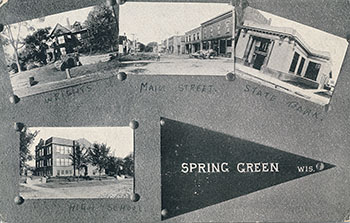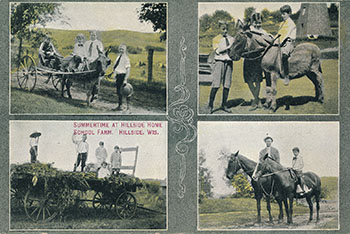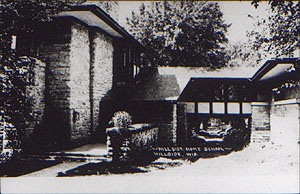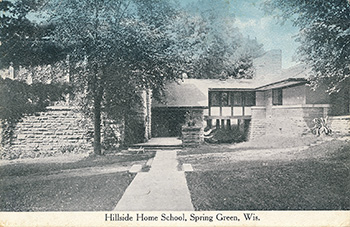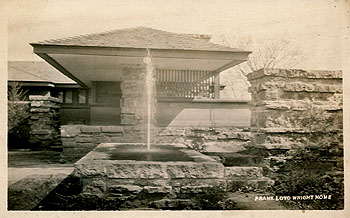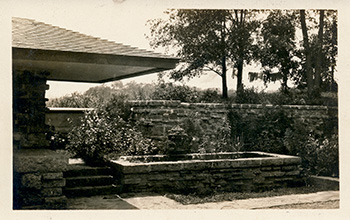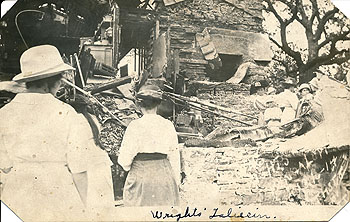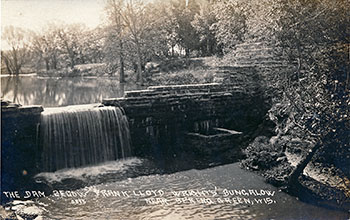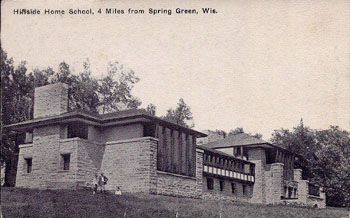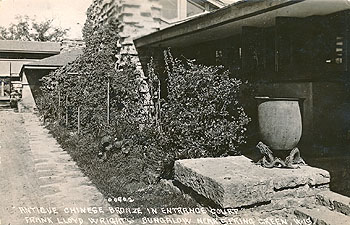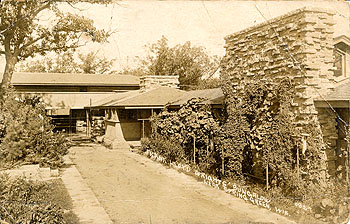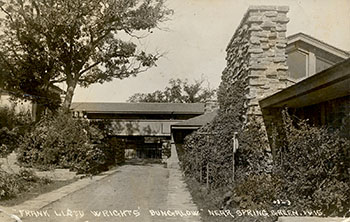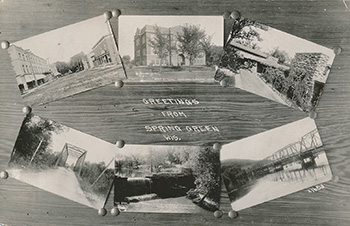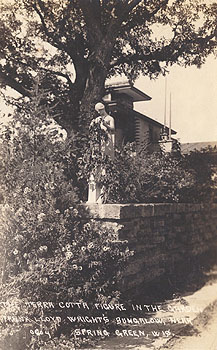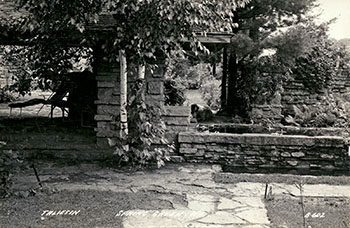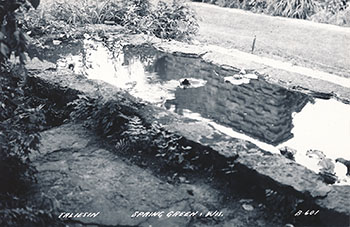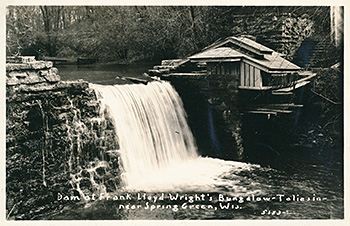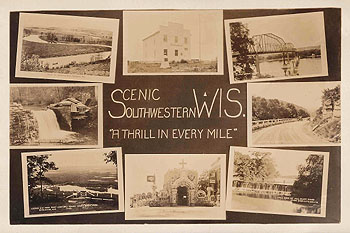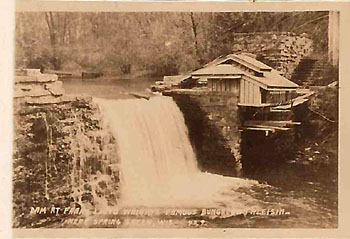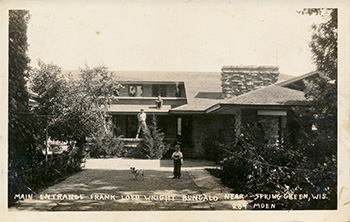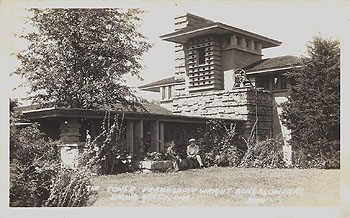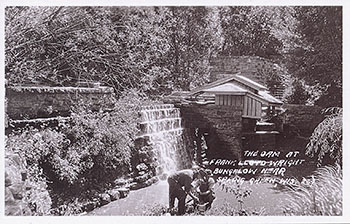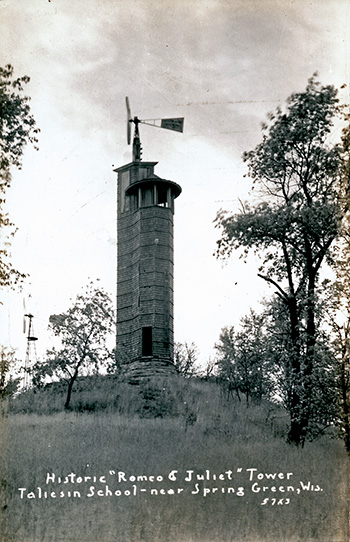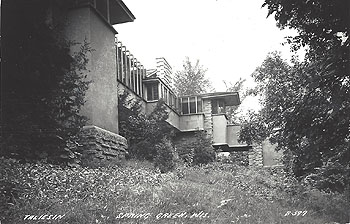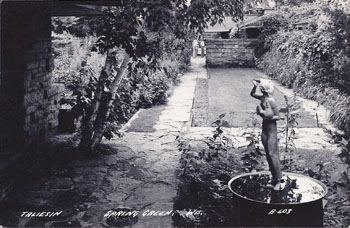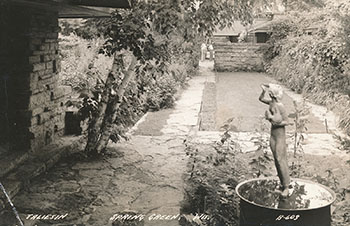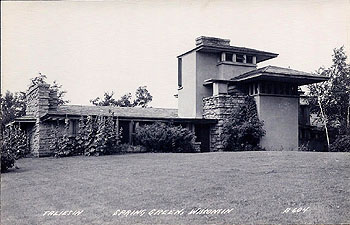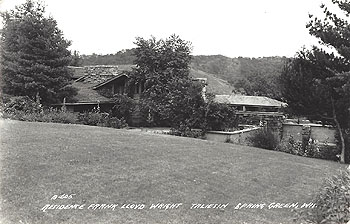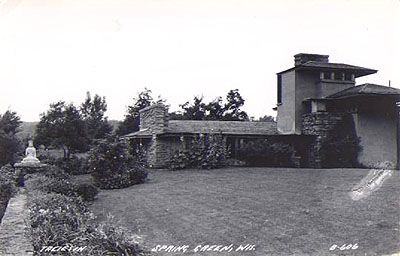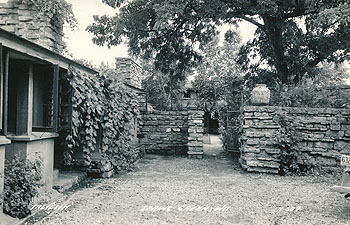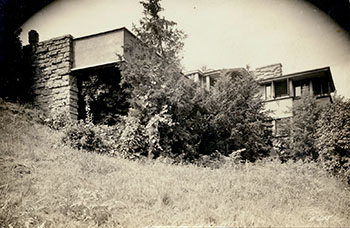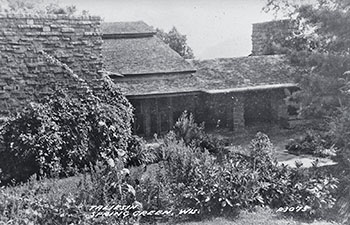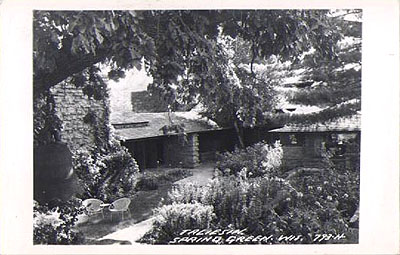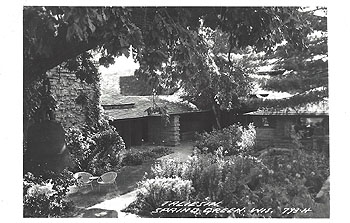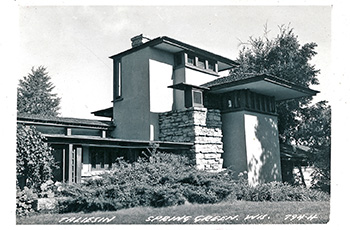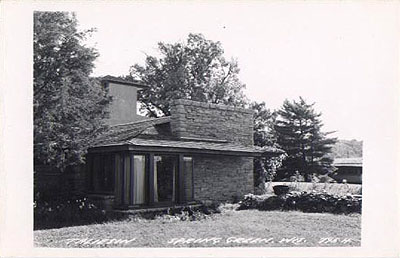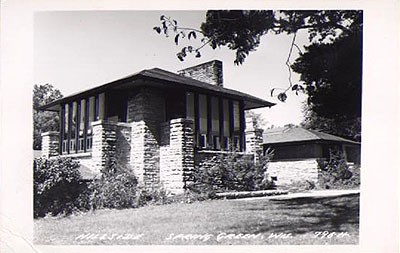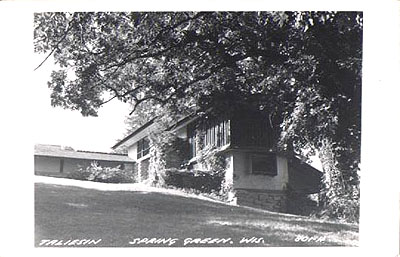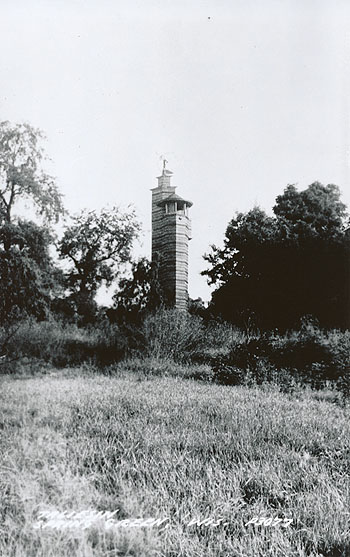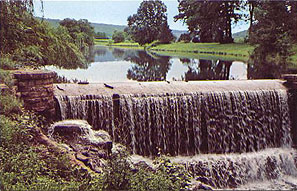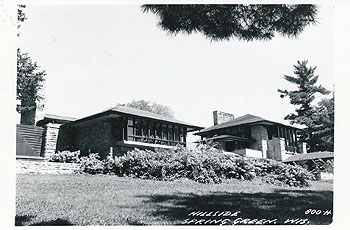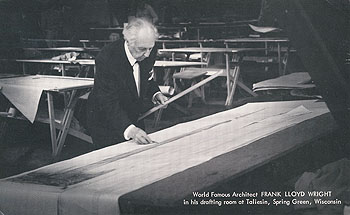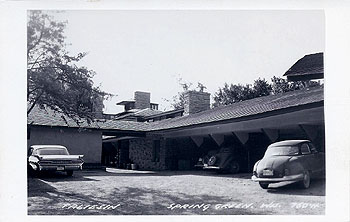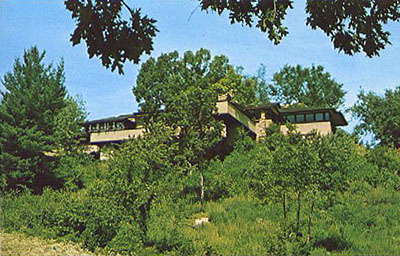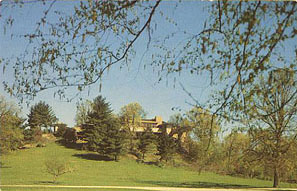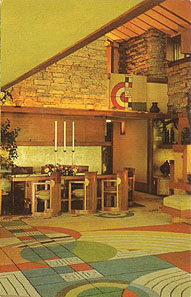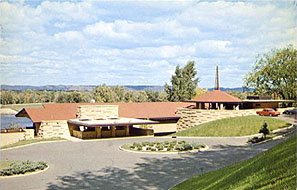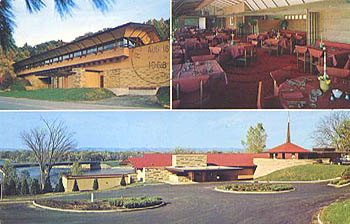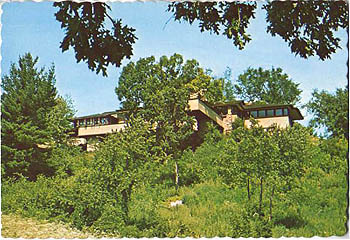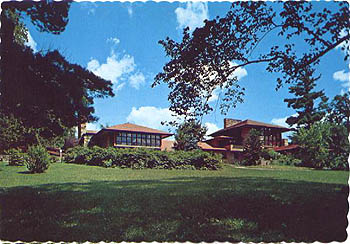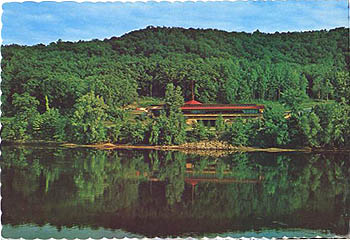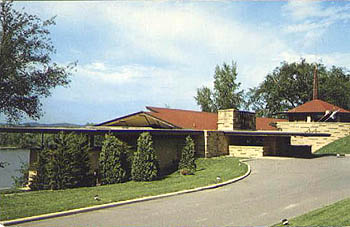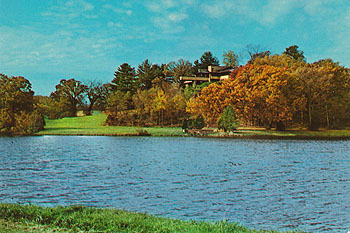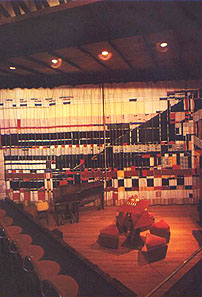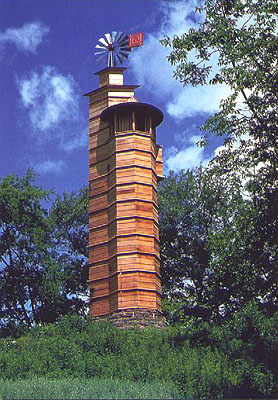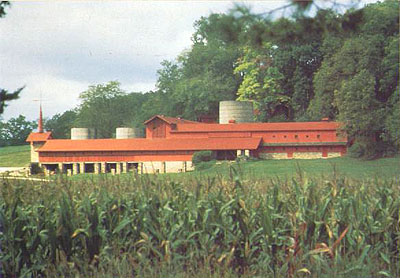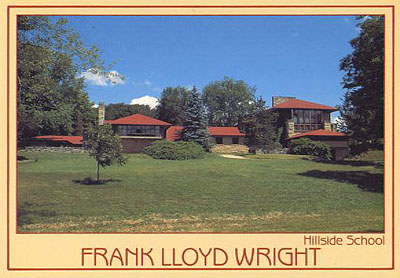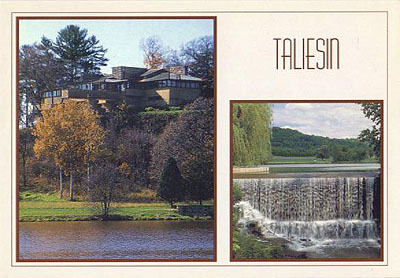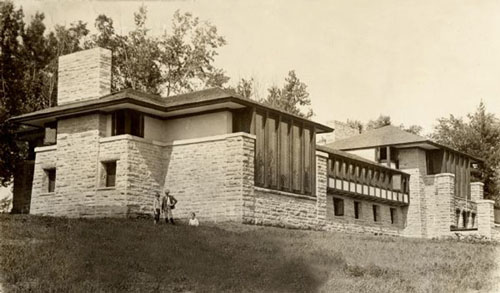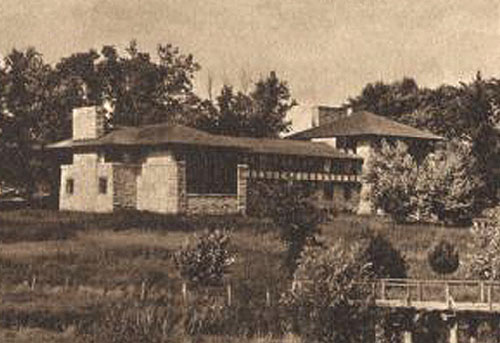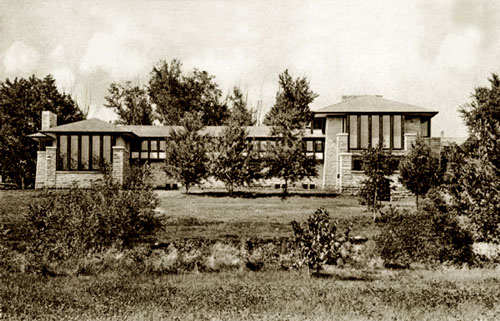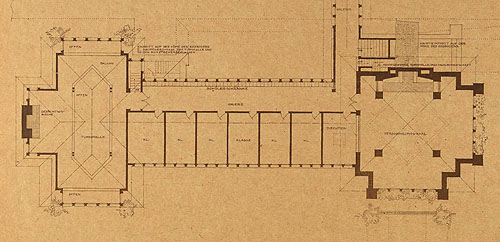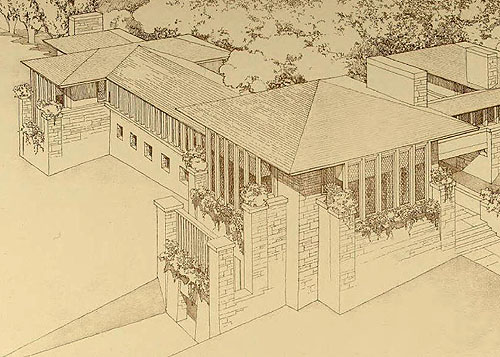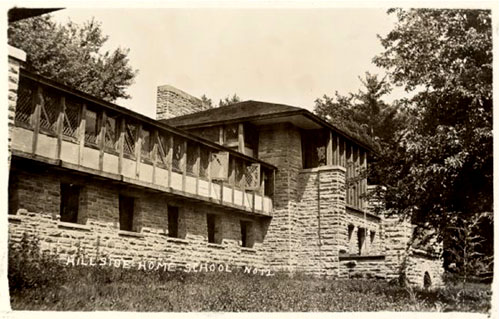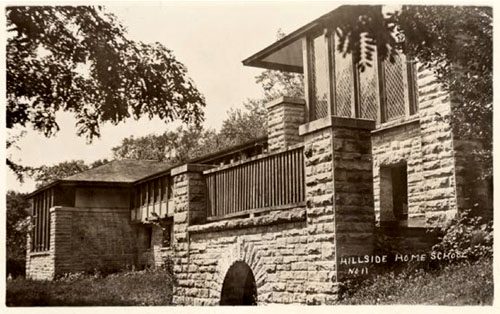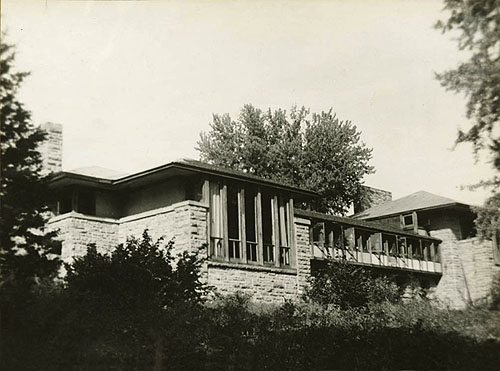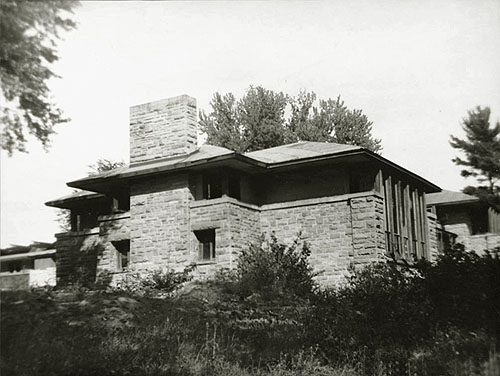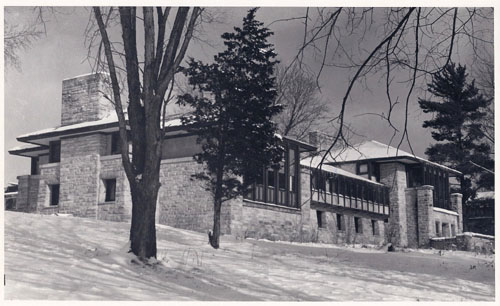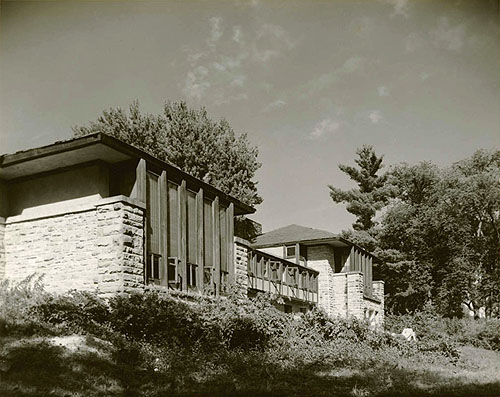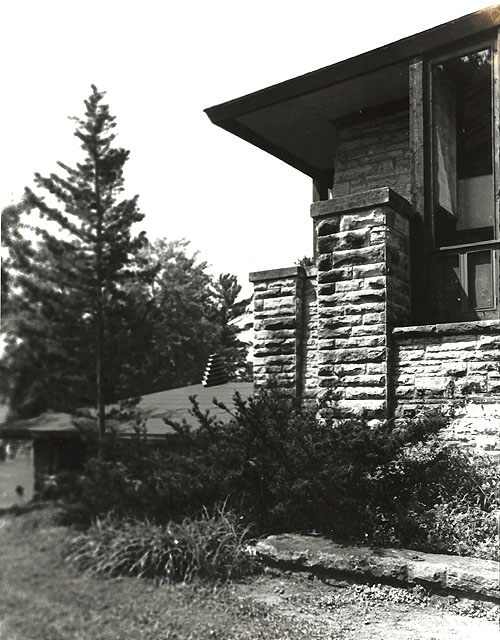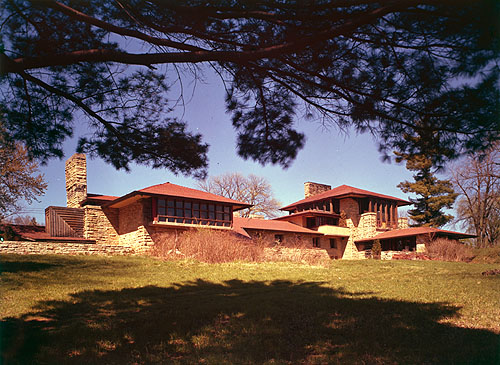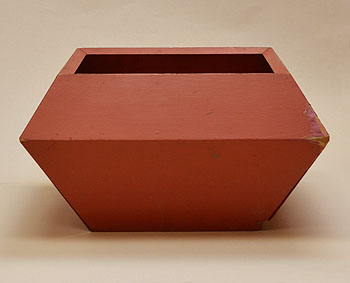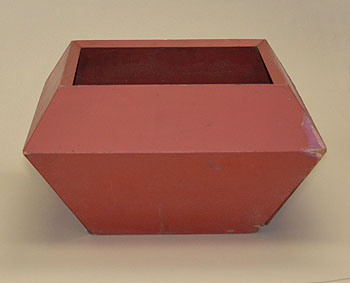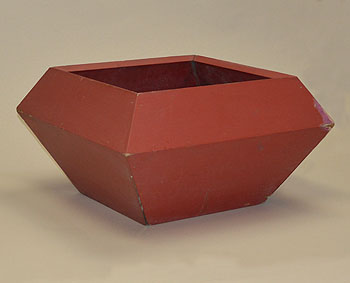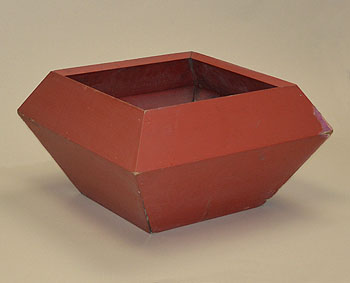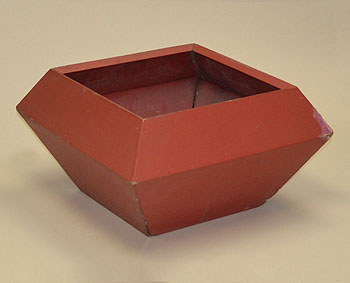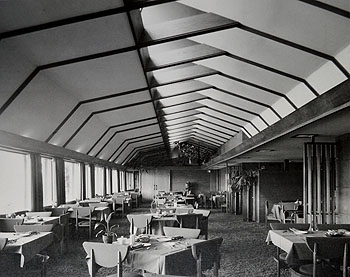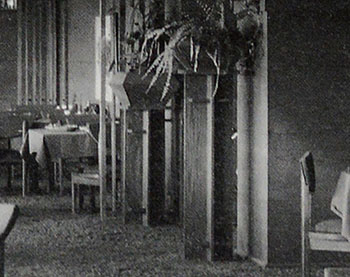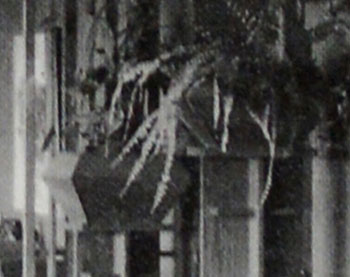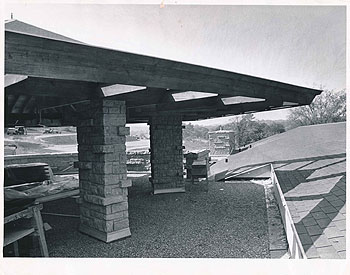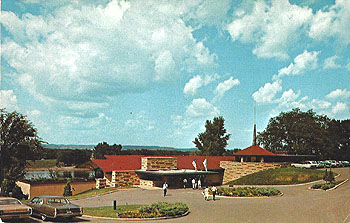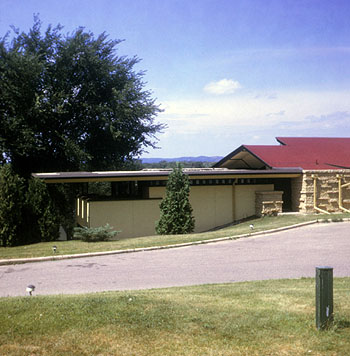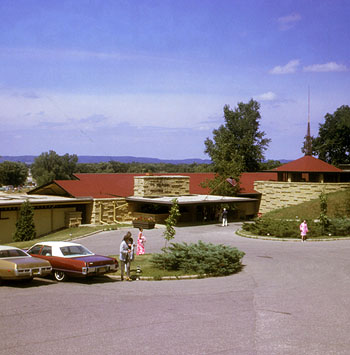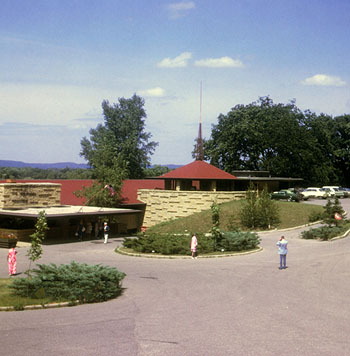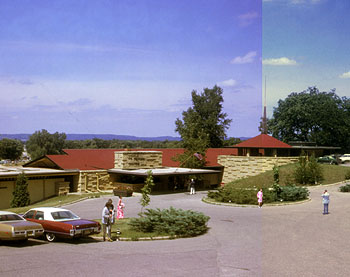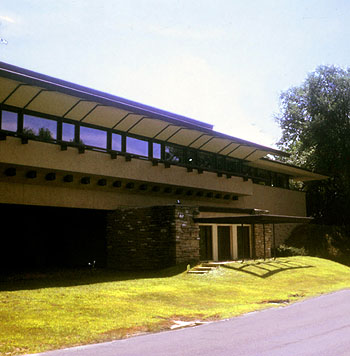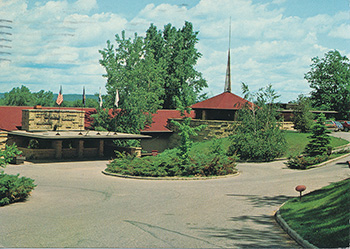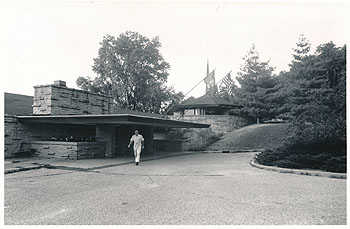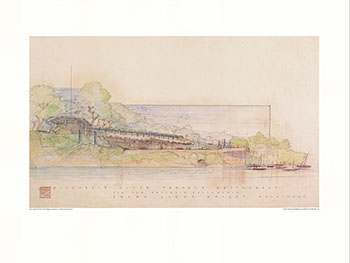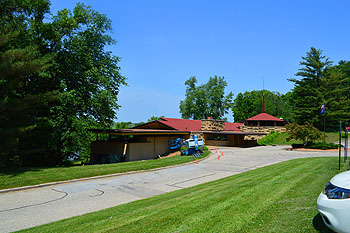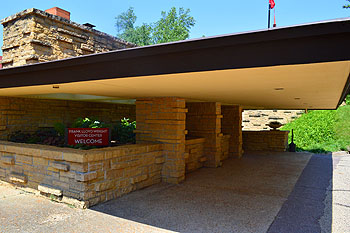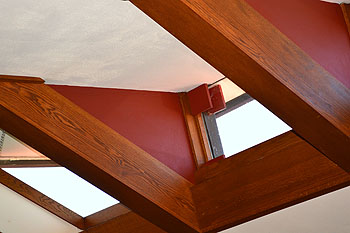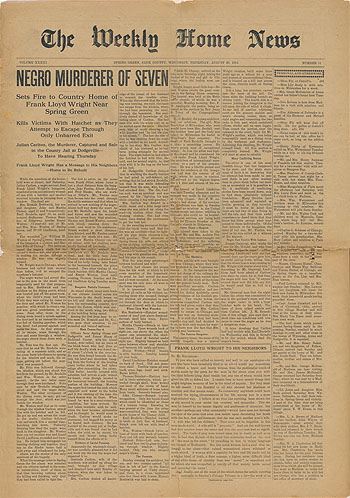
SUPPORT THE
WRIGHT LIBRARY
PROCEEDS FROM EVERY SALE GOES TO SUPPORT THE WRIGHT LIBRARY.
CLICK TO ORDER.
WE PROUDLY SUPPORT THE FRANK LLOYD WRIGHT FOUNDATION

WE PROUDLY SUPPORT THE FRANK LLOYD WRIGHT BUILDING CONSERVANCY
WE PROUDLY SUPPORT FALLINGWATER
AND THE WESTERN PENNSYLVANIA CONSERVANCY

TALIESIN (SPRING GREEN) UNITY CHAPEL (1886 - S.000)
HILLSIDE HOME SCHOOL I (1887 - S.001)
HILLSIDE HOME SCHOOL II (1902 - S.069)
ROMEO AND JULIET WINDMILL (1896, 1938 - S.037)
PORTER RESIDENCE TENYDERI (1907 - S.134)
TALIESIN I (1911) S.172 TALIESIN II (1914) S.182 TALIESIN III (1925 - S.218)
DAMS AND HYDROELECTRIC PLANT (1920 - S.219)
TALIESIN FELLOWSHIP COMPLEX (1932 - S.228) SUN TRAP (1937 - S.245)
MIDWAY BARNS (1938) S.246 DAIRY AND MACHINE SHEDS (1947 - S.247)
RIVERVIEW TERRACE RESTAURANT (1953 - S.367)AUDIOVISUAL BOOKS BROCHURES INVITATION LIGHTING MODELS PHOTOGRAPHS PORTER POSTCARDS
HILLSIDE HOME SCHOOL HILLSIDE HOME SCHOOL/TALIESIN FELLOWSHIP COMPLEX RIVERVIEW TERRACE RESTAURANT UNITY CHAPEL
WEEKLY HOME NEWS
UNITY CHAPEL (1886 - S.000) Date: 1973 Title: 1) Unity Chapel 1973 (1886 - S.000) viewed from the Northeast.
Description: The Entrance is on the right. After attending the University of Wisconsin, Madison, Frank Lloyd Wright headed for Chicago in 1887 and accepted a position as draftsman in the architectural firm of Joseph Lyman Silsbee. Later that year, he applied for and secured a position in the office of Alder and Sullivan. For additional information on Unity Chapel see "Prairie School Review," 1970, 4th Quarter, pp.14-16. A catalog of Silsbee's work dates the Chapel October 1885. The Entrance is dated 1886. Wright would have been 19 years old. But it has generally become known as Wright's first design. Like the Hillside Home School I building, it was designed in the shingle style. Photographed by Douglas M. Steiner on a trip to Spring Green in 1973, using a 110 slide camera.
Size: 110 color transparency and high res 10 x 10 digital image.
S#: 1940.11.0915-1
Date: 1973 Title: 2) Unity Chapel Entrance 1973 (1886 - S.000) viewed from the North through two stone pillars that grace either side of the sidewalk.
Description: Carved near the top of the right column, "1886 /|\." After attending the University of Wisconsin, Madison, Frank Lloyd Wright headed for Chicago in 1887 and accepted a position as draftsman in the architectural firm of Joseph Lyman Silsbee. Later that year, he applied for and secured a position in the office of Alder and Sullivan. For additional information on Unity Chapel see "Prairie School Review," 1970, 4th Quarter, pp.14-16. A catalog of Silsbee's work dates the Chapel October 1885. The Entrance is dated 1886. Wright would have been 19 years old. But it has generally become known as Wright's first design. Like the Hillside Home School I building, it was designed in the shingle style. Photographed by Douglas M. Steiner on a trip to Spring Green in 1973, using a 110 slide camera.
Size: 110 color transparency and high res 10 x 10 digital image.
S#: 1940.11.0915-2
Date: 1973 Title: 3) Unity Chapel (1886 - S.000). Grave of Frank Lloyd Wright.
Description: Wright was born on June 8, 1867 and passed away April 9, 1959, age 91. He was buried on April 12, 1959 at the small family cemetery on the grounds of Unity Chapel. Photographed by Douglas M. Steiner on a trip to Spring Green in 1973, using a 110 slide camera.
Size: 110 color transparency and high res 10 x 10 digital image.
S#: 1940.11.0915-3
HILLSIDE HOME SCHOOL Date: 1890 Copy Title: Hillside Home School, 1890-91 (Published by Hillside Home School, Hillside, Wisconsin. Printed by Henry O. Shepard & Co., Chicago)
Author: Lloyd-Jones, Ellen C. & Jane
Description: Booklet for the third year of Hillside Home School. "This Family and Farm School was opened in September 1887, in Iowa County, Wisconsin. It is located on a farm of a hundred acres, situated in one of the beautiful side valleys that open out into the Wisconsin River... It is equipped with a Home Building of thirty-three rooms furnished with all the modern improvements, steam-heating, bathrooms, etc..." Includes the courses of study, requirements to attend, cost, principals (2) and list of teachers (8),list of students, list of references and a calendar for the year. Photocopies from the State Historical Society, Madison, WI. Acquired from Kelmscott Galleries, Chicago. Two copies.
Size: Originals approximately 4.5 x 6.25.
Pages: Pp 15
S#: 0010.02.0113
Date: 1892 Copy Title: Hillside Home School, (Fifth Year) 1892-93 (Published by Hillside Home School, Hillside, Wisconsin)
Author: Lloyd-Jones, Ellen C. & Jane
Description: Booklet for the fifth year of Hillside Home School. "This is a Home, Farm and Industrial School, the result of experience won in many years of work in State and city Normal and other public school positions. It has had an experience of five years, and in June, 1892, sent out its second class of graduates, consisting of seven members... It has a group of six buildings on a farm of a hundred acres, in a beautiful valley, with neighbors friendly to the institution..." Includes the courses of study, requirements to attend, cost, principals (2) and list of teachers (11),list of students, list of references, a calendar for the year and a prospective for the year 1892-1893. It lists a total of 58 students, 25 home and 33 day. Photocopies from the State Historical Society, Madison, WI. Acquired from Kelmscott Galleries, Chicago. Two copies.
Size: Originals approximately 4.4 x 5.8
Pages: Pp 21
S#: 0013.06.0313
Date: 1893 Copy Title: Hillside Home School, (Sixth Year) 1893-94 (Published by Hillside Home School, Hillside, Wisconsin.)
Author: Lloyd-Jones, Ellen C. & Jane
Description: Booklet for the sixth year of Hillside Home School. "This is a Home, Farm and Industrial School, for a limited number of young women, boys and girls. It owed its early prosperity to the wide acquaintance of the principles, made during their extended connection with the city and state Normal Schools. It now recommends itself by its results. The limited number received makes it possible to give the pupils careful personal supervision. The location of the school removes them from the distraction of the city and surrounds them with the ennobling influences of nature... It has a group of six buildings on a farm of a hundred acres, in a beautiful valley, with neighbors friendly to the institution..." Includes the courses of study, requirements to attend, cost, principals (2) and list of teachers (13),list of graduates and students, list of references and a calendar for the year. It lists a total of 64 students, 34 home and 30 day. Photocopies from the State Historical Society, Madison, WI. Acquired from Kelmscott Galleries, Chicago. Two copies.
Size: Originals approximately 4.5 x 6.
Pages: Pp 20
S#: 0013.07.0313
Date: 1894 Copy Title: Hillside Home School, (Seventh) 1894-95 (Published by Hillside Home School, Hillside, Wisconsin.)
Author: Lloyd-Jones, Ellen C. & Jane
Description: Booklet for the seventh year of Hillside Home School. "The seventh year of work in this Home and Farm School is herein represented. It has passed beyond the experimental period, and its methods, location, and advantages are already familiar to a sufficiently large number of patrons to meet the needs of the school. The capacity is limited to about thirty home pupils and as many day pupils. To new inquires additional information will be given upon application..." Includes the courses of study, requirements for graduation and to attend, cost, plans for next year, principals (2) and list of faculty (14),list of graduates and students, list of references and a calendar for the year. It lists a total of 67 students, 38 home and 29 day. Photocopies from the State Historical Society, Madison, WI. Acquired from Kelmscott Galleries, Chicago. Two copies.
Size: Originals approximately 4.5 x 6.
Pages: Pp 23
S#: 0016.02.0313
Date: 1895 Copy Title: Hillside Home School, (Eighth) 1895-96 (Published by Hillside Home School, Hillside, Wisconsin. Printed by The Lakeside Press, R. R. Donnelley & Sons Co.)
Author: Lloyd-Jones, Ellen C. & Jane
Description: Booklet for the eighth year of Hillside Home School. "This is a Home, Farm and Industrial School for a limited number of young women, boys and girls. It has passed beyond the experimental period and now recommends itself by its results. The large corps of teachers employed, in proportion to the limited number of pupils, makes it possible to give careful personal supervision. The location of the school removes it from the distractions of the city, and surrounds the pupils with the ennobling influences of nature..." Includes the courses of study, requirements for graduation and to attend, cost, principals (2) and list of faculty (13),list of graduates and students, list of references and a calendar for the year. It lists a total of 60 students, 35 home and 25 day. Seven photographs including possibly the first published of the Hillside Home School I and Unity Chapel. Photocopies from the State Historical Society, Madison, WI. Acquired from Kelmscott Galleries, Chicago. Two copies.
Size: Originals approximately 4.5 x 6.
Pages: Pp 24
S#: 0018.30.0313
Date: 1895 Copy Title: Hillside Home School Calendar, 1895 (Published by Hillside Home School, Hillside, Wisconsin)
Author: Lloyd-Jones, Ellen C. & Jane
Description: Twelve month calendar for the Hillside Home School for the year 1895. 21 photographs include the Hillside Home School I, Unity Chapel and the countryside. Possibly the first published of the Hillside Home School I and Unity Chapel. Photocopies from the State Historical Society, Madison, WI. Acquired from Kelmscott Galleries, Chicago. Two copies.
Size: Originals approximately 5.75 x 7.5
Pages: Pp 13
S#: 0018.31.0313
Date: 1895 Copy Title: Hillside Photo Album, Circa 1895 (Published by Hillside Home School, Hillside, Wisconsin)
Author: Lloyd-Jones, Ellen C. & Jane
Description: Collection of eight photographs of the Hillside countryside, many which were published in the 1895 Hillside Home School Calendar. Photocopies from the State Historical Society, Madison, WI. Acquired from Kelmscott Galleries, Chicago. Two copies.
Size: Originals approximately 8.25 x 6.25
Pages: Pp 9
S#: 0018.32.0313
Date: 1898 Copy Title: Hillside Home School, (Eleventh) 1898-99 (Published by Hillside Home School, Hillside, Wisconsin. Printed by The Lakeside Press, R. R. Donnelley & Sons Company, Chicago)
Author: Lloyd-Jones, Ellen C. & Jane
Description: Booklet for the eleventh year of Hillside Home School. "This is a Home School for a limited number of boys and girls. It has passed beyond the experimental period and now recommends itself by its results. The large corps of teachers employed, in proportion to the limited number of pupils, makes it possible to give careful personal supervision. It is found by those that are studying the deep problems of the education of children, that city environments are to exciting and stimulating for the healthful growth of the child. He often becomes the victim of arrested development or of an overtrained nervous condition. The location of this school removes it from the distractions of the city..." Includes the courses of study, requirements for graduation and to attend, outlined course of study for first through twelfth grades, cost, list of faculty including principles (15), list of graduates and pupils, list of references and a calendar for the year. It lists a total of 68 students, 39 home and 29 day, testimonials and references. Eight photographs including one each of Hillside Home School I and Unity Chapel. Photocopies from the State Historical Society, Madison, WI. Acquired from Kelmscott Galleries, Chicago. Two copies.
Size: Originals approximately 4.5 x 6.
Pages: Pp 42
S#: 0032.13.0313
Date: 1899 Copy Title: Hillside Home School, (Twelfth) 1899-00 (Published by Hillside Home School, Hillside, Wisconsin.)
Author: Lloyd-Jones, Ellen C. & Jane
Description: Booklet for the twelfth year of Hillside Home School. "This is a Home School for a limited number of boys and girls. It has passed beyond the experimental period and now recommends itself by its results. The large corps of teachers employed, in proportion to the limited number of pupils, makes it possible to give careful personal supervision. It is found by those that are studying the deep problems of the education of children, that city environments are to exciting and stimulating for the healthful growth of the child. He often becomes the victim of arrested development or of an overtrained nervous condition. The location of this school removes it from the distractions of the city..." Includes the courses of study, requirements for graduation and to attend, outlined course of study for first through twelfth grades, cost, list of faculty including principles (16), list of graduates and pupils, list of references and a calendar for the year. It lists a total of 81 students, 42 home and 39 day, testimonials and references. Includes Anna L. Wright as a reference. Photocopies from the State Historical Society, Madison, WI. Acquired from Kelmscott Galleries, Chicago. Two copies.
Size: Originals approximately 4.5 x 6.
Pages: Pp 40
S#: 0036.02.0313
Date: 1903 Copy Title: Hillside Home School, (Seventeenth) 1903-04 (Published by Hillside Home School, Hillside, Wisconsin.)
Author: Lloyd-Jones, Ellen C. & Jane
Description: Booklet for the seventeenth year of Hillside Home School. "It is found by those that are studying the deep problems of the education of children, that city environments are to exciting and stimulating for the healthful growth of the child. He often becomes the victim of arrested development or of an overtrained nervous condition. In order to have a normal development the boy and the girl need the simple routine and the out-of-door of a country life... The school enters upon its seventeenth year with enlarged accommodations and greatly improved facilities. During the past year a commodious and artistic school building has been completed, containing - together with a most delightful assembly room and recitation rooms - a thoroughly equipped gymnasium, Manual Training room, and a Home Science Kitchen. A beautiful Art and Science hall, connected with the main building by a covered way, has been erected through the generosity of Mrs. Susan Lawrence, of Springfield, Ill..." Includes the courses of study, requirements for graduation and to attend, outlined course of study for first through twelfth grades, cost, list of faculty including principles (18), list of graduates and pupils, list of references and a calendar for the year. It lists a total of 76 students, 53 home and 23 day, testimonials and references. Includes Anna L. Wright as a reference. Includes Anna L. Wright as a reference. Photocopies from the State Historical Society, Madison, WI. Acquired from Kelmscott Galleries, Chicago. Two copies.
Size: Originals approximately 5 x 6.75.
Pages: Pp 41
S#: 0054.05.0313
Date: 1904 Copy Title: Hillside Home School, (Eighteenth) 1904-05 (Published by Hillside Home School, Hillside, Wisconsin.)
Author: Lloyd-Jones, Ellen C. & Jane
Description: Booklet for the eighteenth year of Hillside Home School. "It is found by those that are studying the deep problems of the education of children, that city environments are to exciting and stimulating for the healthful growth of the child... The school enters upon its eighteenth year with enlarged accommodations and greatly improved facilities. During the year 1903, a commodious and artistic school building was completed, containing - together with a most delightful assembly room and recitation rooms - a thoroughly equipped gymnasium, Manual Training room, and a Home Science Kitchen. A beautiful Art and Science hall, connected with the main building by a covered way, has been erected through the generosity of Mrs. Susan Lawrence, of Springfield, Ill..." Includes the courses of study, requirements for graduation and to attend, outlined course of study for first through twelfth grades, cost, list of faculty including principles (21), list of graduates and pupils, list of references and a calendar for the year. It lists a total of 61 students, 41 home and 20 day, testimonials and references. It lists two of Wright's sons, Frank Lloyd, Jr., and John as students. Includes Mrs. Anna Lloyd Wright as a reference. Photocopies from the State Historical Society, Madison, WI. Acquired from Kelmscott Galleries, Chicago. Two copies.
Size: Originals approximately 5 x 6.75.
Pages: Pp 46
S#: 0055.04.0313
Date: 1906 Copy Title: Hillside Home School, (Twentieth) 1906-07 (Published by Hillside Home School, Hillside, Wisconsin.)
Author: Lloyd-Jones, Ellen C. & Jane
Description: Booklet for the twentieth year of Hillside Home School. "It is found by those that are studying the all-important problems of the education of children that city environment is to exciting and stimulating for the healthy growth, and the child often becomes a victim of arrested development... Freedom from city distraction, abundance of pure air and water... The school building is a fine stone structure, with a well-equipped gymnasium, shop, home-science kitchen, and music- rooms. The Lawrence Art and Science rooms..." Includes the courses of study, requirements for graduation and to attend, outlined course of study for first through twelfth grades, cost, list of faculty including principles (19), list of graduates and pupils, list of references and a calendar for the year. It lists a total of 87 students, 67 home and 20 day, testimonials and references. It lists two of Wright's sons, Frank Lloyd, Jr. (Class of 1909), and John Kenneth (Class of 1910) as students. Includes Mrs. Anna Lloyd Wright as a reference. Nine photographs include the Hillside Home School I & II and the Romeo and Juliet Windmill. Photocopies from the State Historical Society, Madison, WI. Acquired from Kelmscott Galleries, Chicago. Two copies.
Size: Originals approximately 5 x 7.
Pages: Pp 45
S#: 0064.11.0313
Date: 1909 Copy Title: Hillside Home School, (Twenty-third) 1909-10 (Published by Hillside Home School, Hillside, Wisconsin.)
Author: Lloyd-Jones, Ellen C. & Jane
Description: Booklet for the twenty-third year of Hillside Home School. "It is found by those that are studying the all-important problems of the education of children that city environment is to exciting and stimulating for the healthy growth, and the child often becomes a victim of arrested development... Freedom from city distraction, abundance of pure air and water... The school building is a fine stone structure, with a well-equipped gymnasium, shop, home-science kitchen, and music-rooms. The Lawrence Art and Science rooms..." Includes the courses of study, requirements for graduation and to attend, outlined course of study for first through twelfth grades, cost, list of faculty including principles (19), list of graduates and pupils, list of references and a calendar for the year. It lists a total of 76 students, 55 home and 21 day, testimonials and references. It lists two of Wright's sons, Frank Lloyd, Jr. (Class of 1909), and John Kenneth (Class of 1910) as students, their seventh year each. Includes Mrs. Anna Lloyd Wright as a reference. 12 photographs include the Hillside Home School I & II and the Romeo and Juliet Windmill. Photocopies from the State Historical Society, Madison, WI. Acquired from Kelmscott Galleries, Chicago. Two copies.
Size: Originals approximately 5 x 7.
Pages: Pp 52
S#: 0086.12.0313
Date: Circa 1910 Title: Hillside Home School Photo Booklet, Circa 1910 (Published by Hillside Home School, Hillside, Wisconsin.)
Author: Lloyd-Jones, Ellen C. & Jane
Description: Photo booklet for the Hillside Home School. Fifteen photographs are on the right side of the spread, left side is left blank. 15 photographs include the Hillside Home School I & II and the Romeo and Juliet Windmill. Photocopies from the State Historical Society, Madison, WI. Acquired from Kelmscott Galleries, Chicago. Two copies.
Size: Originals approximately 4.25 x 4.25.
Pages: Pp 33
S#: 0094.34.0313
Date: 1910 Copy Title: Hillside Home School Yearbook, The Whisperings of the Hillside Pine 1910 (Published by Hillside Home School, Hillside, Wisconsin. Printed by the Print Shop, Madison, Wis.)
Author: Lloyd-Jones, Ellen C. & Jane
Description: Yearbook for the Class of 1910. Photograph of graduating class includes John K. Wright, son of Frank Lloyd Wright. Class of 1909... Frank Lloyd Wright Jr., who expects to take up landscape architecture as a profession, is in Boston, Mass., where he as a position with Mr. Olmstad, a landscape artist. Two poems by Frank Lloyd Wright, Jr., "To the Pasque Flower", first published in The LaFollette, and Arbor and Bird Day Manual, 1910, and the second "The Pool". Basketball Team... John Wright, Captain, includes photograph. Baseball... John Wright, Pitcher, Second base, Includes photograph. Includes four photographs related to the Hillside Home School Buildings I & II. Photocopies from the State Historical Society, Madison, WI. Acquired from Kelmscott Galleries, Chicago.
Size: Originals approximately 6 x 9.
Pages: Pp 61
S#: 0094.35.0313
Date: 1912 Copy Title: Hillside Home School Yearbook, The Whisperings of the Hillside Pine, 1912 (Published by Hillside Home School, Hillside, Wisconsin. Printed by the Dominion Press, Chicago)
Author: Lloyd-Jones, Ellen C. & Jane
Description: Yearbook for the Class of 1912. Alumni News: Lloyd Wright, '09, is in San Diego, California at work with the Olmstead Brothers, landscape Architect... John Kenneth Wright is an architect in San Diego. Includes three photographs related to the Hillside Home School Buildings I & II. Photocopies from the State Historical Society, Madison, WI. Acquired from Kelmscott Galleries, Chicago.
Size: Originals approximately 4 x 6
Pages: Pp 54
S#: 0114.14.0313
Date: 1913 Title: Hillside Home School, (Twenty-seventh) 1913-14 (Published by Hillside Home School, Hillside, Wisconsin.)
Author: Lloyd-Jones, Ellen C. & Jane
Description: Booklet for the twenty-seventh year of Hillside Home School. "It is found by those that are studying the all-important problems of the education of children that city environment is to exciting and stimulating for the healthy growth, and the child often becomes a victim of arrested development ... Freedom from city distraction, abundance of pure air and water... The school building is a fine stone structure, with a well-equipped gymnasium, shop, home-science kitchen, and music-rooms. The Lawrence Art and Science rooms..." Includes the courses of study, requirements for graduation and to attend, outlined course of study for first through twelfth grades, cost, list of faculty including principles (15), list of graduates and pupils, list of references and a calendar for the year. Includes Mrs. Anna Lloyd Wright as a reference. Hillside Home School closed in 1915, and the building fell into disrepair. 12 photographs include the Hillside Home School I & II and the Romeo and Juliet Windmill. One Original. (Two photocopies from the State Historical Society, Madison, WI, acquired from Kelmscott Galleries, Chicago.)
Size: Originals approximately 5 x 7.
Pages: Pp 49
S#: 0120.13.0915
Note: Of the twelve photographs, eight relate to the Hillside Home School I & II, designed by Frank Lloyd Wright in 1887 (S.001) and 1902 (S.069), respectively. We take the liberty to reproduce nine of the images. The Hillside Home School closed in 1915, and the buildings fell into disrepair. When Wright began the Taliesin Fellowship in 1932, it became part of the Taliesin Fellowship complex. Designed in 1902, Wright began restoring and remodeling the Hillside Home School Building II. These images give us a glimpse of the original buildings, I & II, as Wright designed them. Published in 1913. Courtesy of the Hillside Home School.
1) "The Farm." Most likely looking South.
2) "The Hillside School." Viewed from the South.
3) "Entrance to School."
4) "The School Site from the South."
5) "The Home Building, South Front." Hillside Home School I designed by Frank Lloyd Wright in 1887 (S.001).
6) "The Assembly Room."
7) "Library - Balcony of the Assembly Room."
8) "Stage and Gymnasium."
9) "Balcony of the Gymnasium."
AUDIOVISUAL Date: 1990 Title: Taliesin: The Tradition of Frank Lloyd Wright. (Produced by Steven M. Snow and the Frank Lloyd Wright Foundation.)
Author: Snow, Steven M.
Description: Falling Water, Johnson Wax Administrative Building, and the Guggenheim Museum...these are but a few of the masterworks created by the prolific architect Frank Lloyd Wright. This program reaches back to 1932 when Wright and his wife, Olgivanna Lasovich, co-founded the Taliesin Fellowship, in which Wright actively participated by sharing his unique theories on organic architecture with his students. (Publisher's description.) Narrated by Martin Sheen.
Size: 30 minutes.
ST#: 1990.111.1014
Date: 1996 Title: Frank Lloyd Wright's Taliesin. A video tour of his Wisconsin home.
Author: Erickson, David
Description: VHS. "In 1911, Frank Lloyd Wright returned to the land he knew as a child. A fertile, beautiful valley near Spring Green, Wisconsin promised good farming and a new life to Frank Lloyd Wright's Welsh immigrant ancestors. This same valley would lure the prominent architect back at the age of 44 to build his home, studio, and farm, Taliesin. Over the next 50 years of his life, Taliesin became the epicenter of Wright's personal and professional life. He would design such masterpieces as Fallingwater and the Guggenheim Museum Museum at Taliesin, drawing on his surroundings for inspiration..." Publisher's description.)
Size: 30 Minutes
ST#: 1996.76.0116
Date: 1996
Title: Frank Lloyd Wright's Taliesin. A video tour of his Wisconsin home.
Author: Erickson, David
Description: DVD. "In 1911, Frank Lloyd Wright returned to the land he knew as a child. A fertile, beautiful valley near Spring Green, Wisconsin promised good farming and a new life to Frank Lloyd Wright's Welsh immigrant ancestors. This same valley would lure the prominent architect back at the age of 44 to build his home, studio, and farm, Taliesin. Over the next 50 years of his life, Taliesin became the epicenter of Wright's personal and professional life. He would design such masterpieces as Fallingwater and the Guggenheim Museum Museum at Taliesin, drawing on his surroundings for inspiration..." Publisher's description.) Original list price $29.95.
Size: 30 Minutes
ST#: 1996.78.0516Date: 2004 Title: Frank Lloyd Wright's Taliesin. (Published by In-D Press, Los Angeles.)
Author: Lockhart, Susan Jacobs
Description: Interactive CD. Frank Lloyd Wright's architectural masterpiece Taliesin served as his residence and studio from 1911 until his death in 1959. It remains home to the architectural school he founded in 1932, and to the offices of Taliesin architects. This interactive CD-rom contains a comprehensive two-hour multimedia overview of the entire Taliesin estate by Susan Jacobs Lockhart. Lockhart, who joined the fellowship in 1958 to live and work as an artist, educator, and musician, draws upon her forty-five years at Taliesin to provide insight into the buildings" histories as well as Wright's life and career.
Size: 5.5 x 5
ST#: 2004.41.1014
BOOKS Frank Lloyd Wright Selected Houses 2 (1990) Date: 1968 Title: The Spring Green (Published by The Wisconsin River Development Corporation)
Author: Keland, W.H.
Description: Spiral bound presentation booklet for "The Spring Green", which included the Restaurant (completed), proposed Ski Slopes, Homes, Country Club and Golf Course. The restaurant was designed in 1953, begun in 1957, halted at Wright's death, completed in 1968. Project to date has not begun. Embossed logo on cover. (First Edition)
Size: 10.75 x 11.25.
Pages: Pp 22
S#: 1732.02.0205
Date: 1978 Title: Further Teachings of Gurdjieff, Journey Through the World (Soft Cover) (Published by Routledge & Kegan Paul, London and Henley. First published by Routledge & Kegan in 1969. Reprinted in 1974. Reprinted and first published as a paperback 1978.)
Author: Nott, C.S.
Description: Chapter 17, pages 138-156: "Taliesin and the Frank Lloyd Wrights." From the back cover: "...This book includes an account of the time the author and his family spent with the Frank Lloyd Wrights at their estate Taliesin, in Wisconsin..." (Summer 1939) Olgivanna Hinzenberg was one of Gurdjieff's pupils from 1919 to 1924. On November 30, 1924, Wright met Olgivanna at a Russian Ballet. Wright remembered the moment vividly, recalling it in his Autobiography, p.508. She visited Taliesin in January, and by the end of the month came back to stay. Gurdjieff and Wright first met in June or July of 1934 at Taliesin. Includes two photographs, one of Taliesin in 1940, one of Wright and the author. (Third Edition) (Sweeney 1964)
Size: 5.5 x 8.5
Pages: Pp 254
S#: 1772.03.1214
Date: 1992 Title: "At Taliesin". Newspaper Columns by Frank Lloyd Wright and the Taliesin Fellowship 1934-1937 (Hard Cover - DJ) (Published by the Southern Illinois University Press, Carbondale & Edwardsville)
Author: Henning, Randolph C.
Description: Original HC List Price $39.95 (First Edition)
Size:
Pages: Pp 322
ST#: 1992.26.0702
Date: 1935
Title: At Taliesin, March 22, 1935.
Description: Carbon Copy of an article published on March 22, 1935. Anonymous. "One midnight last week the Fellowship's Hacienda was astir with commotion, then, soon all lights out, the big front gates closed and the Taliesin caravan again took to the open road. This time westward down through the desert and the mountains, across the Colorado and the Imperial Valley and onto California's grandiose Los Angeles. This was not a pleasure jaunt to see the sights of this money-mad paradise of the Pacific Coast but it was an architectural pilgrimage to the concrete residences already world-famous that have emanated from Taliesin's studio..." Published in At Taliesin, Henning, 1992, p.118-120. Acquired from the estate of Cary Caraway.
Size: Three pages, 8.5 x 11.
S#: 0397.55.0720Date: 1935
Title: Edgar Tafel, At Taliesin, March 27, 1935.
Description: Carbon Copy of an article written by Edgar Tafel. Frank Lloyd Wright - Should Madison City Hall Be Torn Down.
A few days ago, while we were all working on the Broadacre Model, Mr. Wright walked out into the Patio with a letter in his hand that he wished to read us. Most often, these letters are from curious people, or people curiously interested in architecture. However, all these letters are interesting and informing to us, since we are removed from civilization and "The Public". The letter was from a Madison citizen asking architectural advice. That was curious. Madison, with a master at close range, hardly makes use of his services. The Madison citizen wanted to know which side of the city Hall tearing-down question Mr. Wright would be on. It seems as if Madison wants to show some progress, and presumably the quickest way is to show progress is to tear down landmarks.
We asked Mr. Wright what he thought of ripping down the little sand stone building. Naturally, Mr. Wright's answer was vigorous. He thinks Madison should keep it, and tear down most of its other buildings. The city Hall, unispiring (sic) as it may be, is a straightforward simple, dignified structure. It's lean Gothic tracery. The long narrow windows and the high ceilings, are distinguished, Tho it belongs to a period which has little to do with Wisconsin's soil or customs. There is a spirit of repose in its native stone. The building does not force itself upon the populace, or try to be anything that it isn't. One only needs to look across the street at the Capitol building, and see why the City Hall should stand, if many of the buildings are to stand.
One could feel at home in the City Hall as he is dressed, but he would have to wear a Roman Toga for the same effect in the Capitol building. There are too few good buildings down by the ecclectics. Now Madison has a chance to keep one, even though it's face doesn't shining so brightly. If the building is to be torn down, how about the Roman bath across the street.
Edgar Tafel
Mar 27, 1934 (1935)
Note: Published in At Taliesin, Henning, 1992, p.120-122., and is dated 1935. Construction on the Broadacre model did not begin until November 1934. Single Sheet typed front and back. Acquired from the estate of Cary Caraway.
Size: 8.5 x 11.
S#: 0397.56.0720Date: 1995 Title: Taliesin, The Work of a Lifetime (Published by the Taliesin Preservation Commission, Spring Green, Wisconsin)
Author: Taliesin Preservation Commission
Description: Descriptive booklet pertaining to Taliesin, Spring Green. Includes history of Taliesin and additional descriptive sections on Hillside, Midway Farm, Romeo and Juliet, Tan-Y-Deri, Unity Chapel, Wright's Landscape and the Frank Lloyd Wright Visitor's Center. (First Edition)
Size: 11.5 x 8.5
Pages: Pp 20
ST#: 1995.63.0413
Date: 1997 Title: Frank Lloyd Wright's Taliesin & Taliesin West (Hard Cover - DJ) (Published by Harry N. Abrams, Inc., Publishers)
Author: Smith, Kathryn
Description: Original HC List Price $39.95, SC List Price $24.95. (First Edition)
Size:
Pages: Pp 160
ST#: 1997.05.0399
Date: 1998 Title: Midway Barn and Farm Building (Model Booklet) (Published by Ertl Collectibles Limited, Dyersville, IA)
Author: Ertl Collectibles Limited
Description: Information booklet that accompanied the Cold Cast Porcelain model of the Midway Barn and Farm Buildings. Includes information of the model, Wright and his career, and the Frank Lloyd Wright Foundation. Includes nine photographs.
Size: 5 x 4
Pages: Pp 16
ST#: 1998.60.0405
Date: 1992 Title: Taliesin 1911-1914: Wright Studies Volume 1 (Hard Cover - DJ)
Author: Edited: Menocal, Narciso
Description: Five Studies: Neil Levine, Scott Gartner, Anthony Alofsin, Narciso Menocal, Anthony Alofsin. Original HC List Price $50.00. (First Edition)
Size: 8.5 x 11
Pages: Pp 141
ST#: 1992.25.0502
Date: 1992 Title: Taliesin 1911-1914: Wright Studies Volume 1 (Soft Cover)
Author: Edit: Menocal, Narciso
Description: Five Studies: Levine, Neil; Gartner, Scott; Alofsin, Anthony; Menocal, Narciso; Alofsin, Anthony. Original SC List Price $22.50. (First Edition)
Size: 8.5 x 11
Pages: Pp 141
ST#: 1992.16.0701
Date: 2000 Title: Frank Lloyd Wright And Taliesin (Hard Cover - DJ) (Published by Pomegranate)
Frank Lloyd Wright And Taliesin (Hard Cover DJ) (Published by Pomegranate Communications, Inc., Petaluma, CA)
Author: Nemtin, Frances
Description: Dust jacket: Frances Nemtin met Frank Lloyd Wright in the mid-1940s, when she was arranging a show of his work at the Milwaukee Art Institute. She soon gravitated to Taliesin, Wright's estate in southwestern Wisconsin. This legacy of Wright's farming forebears, on which the architect built, rebuilt, modified, refined, tinkered, and innovated from 1911 until his death in 1959, is a singular place that has seen widely diverse uses over the last ninety years. It has been a self-sufficient farm, a boarding school, a world-class architectural studio, a refuge for Wright's family and friends, and a school for the study of architecture. The men and women who apprenticed here received a unique education, and they came away with a lifelong loyalty and respect for their fellowship and their mentor. At Taliesin, Ms. Nemtin did a little of everything farm work, upholstery, writing, and cooking. She led tours, poured concrete, and played in the chamber quintet. And she married a Taliesin apprentice, bore children, and chose to stay on the estate for the rest of her life... Original HC List Price $19.95. (First Edition)
Size: 10.25 x 8.25
Pages: Pp 80
ST#: 2000.02.1200
Date: 2000
Title: Frank Lloyd Wright And Taliesin (Hard Cover DJ) (Published by The Frank Lloyd Wright Foundation, Scottsdale, Arizona)
Author: Nemtin, Frances
Description: First published by Pomegranate Communications, Inc., Petaluma, CA. (Note: This is an exact reprint, dated 2000.) Dust jacket: Frances Nemtin met Frank Lloyd Wright in the mid-1940s, when she was arranging a show of his work at the Milwaukee Art Institute. She soon gravitated to Taliesin, Wright's estate in southwestern Wisconsin. This legacy of Wright's farming forebears, on which the architect built, rebuilt, modified, refined, tinkered, and innovated from 1911 until his death in 1959, is a singular place that has seen widely diverse uses over the last ninety years. It has been a self-sufficient farm, a boarding school, a world-class architectural studio, a refuge for Wright's family and friends, and a school for the study of architecture. The men and women who apprenticed here received a unique education, and they came away with a lifelong loyalty and respect for their fellowship and their mentor. At Taliesin, Ms. Nemtin did a little of everything farm work, upholstery, writing, and cooking. She led tours, poured concrete, and played in the chamber quintet. And she married a Taliesin apprentice, bore children, and chose to stay on the estate for the rest of her life... Original HC List Price $30.00. (First Edition)
Size: 10.25 x 8.25
Pages: Pp 80
ST#: 2000.93.1019Date: 2001 Title: Wright for Wright (Hard Cover - DJ) (Published by Rizzoli International Publications, Inc., New York)
Author: Howard, Hugh; Photographed by Straus, Roger III
Description: The buildings of Frank Lloyd Wright exercise a kind of architectural magic on the people who visit them, inspiring a sense of wonder at their visual elements, dramatic energy, and ingenious compositional features. These qualities are no more evident than in the buildings that Wright designed for himself and his family. Wright for Wright is the first book to focus exclusively on these seven houses and ten other structures. Free from the constraints of the client-architect relationship, the buildings present Wright at his unfettered best. Photographed for the first time in exquisite, full-color panoramic views by longtime Wright photographer Roger Straus, these images capture the buildings as part of the landscape-- the way Wright envisioned them. As well, Hugh Howard's insightful text reveals an intimate understanding of the great architect's art and philosophy. (Dust Jacket) First Edition. Original HC List Price $50.00. Two copies. (First Edition)
Size: 10.25 x 10.25
Pages: Pp 160
ST#: 2001.27.0603, 2001.52.0511
Frank Lloyd Wright Taliesin, GA Traveler 002 (2002) Date: 2002 Title: Backroads of Wisconsin, Your Guide to Wisconsin's Most Scenic Backroad Adventures (Published by Voyageur Press, Inc., Stillwater, MN)
Author: Hintz, Martin; Rashid, Bob
Description: Pages 120-123: "Frank Lloyd Wright's spirit is strongest at Taliesin, a National Historic Landmark. The visitor center, its Riverview Terrace Cafe, gallery, and bookstore are located..." Includes a short biography and three photographs. Original list price $19.95. (Third Edition)
Size: 8.5 x 11
Pages: Pp 160
ST#: 2002.02.0214
Date: 2006
Title: Roofs of Taliesin (Soft Cover, Spiral Bound) (Published by Frances Nemtin)
Author: Nemtin, Frances
Description: Introduction: Taliesin was under construction from 1911 to 1959, the year of Mr. Wright's death. He was constantly altering and improving the many buildings comprising the Taliesin estate and included in this brief survey, in addition to his home, are the Midway Farm, the Chapel, the Romeo & Juliet tower, Hillside, and Tan-y-deri, his home for Jane Porter. Mr. Wright wrote in his Autobiography.
"Taliesin was to be an abstract composition of stone and wood as they naturally met in the aspect of the hills around about. And the lines of the hills were the lines of the roofs, the slopes of the hills their slopes, the plastered surfaces of the light wood-walls, set back into shade beneath broad eaves, were like the flat stretches of sand in the river below and the same in color, for that is where the material that covered them came from."
"The finished wood outside was the color of gray tree-trunks in violet light..." Includes 47 photographs.
Size: 11.75 x 8.75
Pages: Pp 57
ST#: 2006.75.0625Date: 2009 Title: Vintage Postcards of Frank Lloyd Wright's Taliesin - Romeo & Juliet - Hillside Home School from the collection of Randolph C. Henning. (C) Randolph C. Henning 2009 (Produced individually by hand by Randolph C. Henning)
Author: Henning, Randolph C.
Description: A collection of 52 rare vintage postcards from the collection of Randolph C. Henning printed and spiral bound by hand by Randolph C. Henning. Last page: "Special thanks to Patrick J. Mahoney, Patrick J. Meehan, William B. Scott, Jr., George Shutack, Kathryn A. Smith, Brian A. Spencer, Douglas Steiner & the Frank Lloyd Wright Archives (Bruce Brooks Pfeiffer, Oskar Munoz & Margo Stipe)." Gift from Randolph C. Henning. (First Edition)
Size: 8.5 x 8.5
Pages: Pp 52
ST#: 2009.03.0809
Date: 2011 Title: Frank Lloyd Wright's Taliesin, Illustrated By Vintage Postcards (Soft Cover) (Published by The University of Wisconsin Press, Madison, Wisconsin)
Author: Henning, Randolph C., Foreward by Smith, Kathryn A.
Description: Randolph C. Henning has assembled a splendid collection of rare vintage postcards, some never before published, that provides a revealing and visually unique journey through Wright's work at Taliesin. Included are intimate images of Taliesin at various stages and views of the building just after the tragic 1914 fire. The postcards also depict nearby buildings designed by Wright, including the Romeo and Juliet windmill and two buildings for the Hillside Home School. Henning provides useful explanations that highlight relevant details and accompany each image. Frank Lloyd Wright's Taliesin documents and celebrates Wright's 100-year-old masterpiece. (Publisher's description.) Original cover price $24.95. (First Edition)
Size: 8 x 8
Pages: Pp 125
ST#: 2011.02.0711
Date: 2010
Title: Frank Lloyd Wright, Taliesin, Spring Green, Wisconsin, U.S.A., 1911- / Taliesin West, Scottsdale, Arizona, U.S.A., 1937- (Soft Cover) (Published by ADA Edita, Tokyo)
Author: Edited and photographed by: Futagawa, Yukio; Text: Pfeiffer, Bruce Brooks
Description: GA: Residential Masterpieces 09. Published in Japanese and English. Publisher's description: "This large book of two pivotal Frank Lloyd Wright projects is an examination of just one: the architect's self-designed home, as built at different locations in Wisconsin and Arizona from 1911 to the late 1930s. Colour photography by Yukio Futugawa captures the pioneering spirit of Wright's domestic innovation, while Bruce Brooks Pfeiffer's text examines these buildings' architectural significance and their fascinating and sometimes tragic personal meaning for Wright." Original list price $50.00. (First Edition)
Size: 10.25 x 14.4
Pages: Pp 111
ST#: 2010.38.0419Date: 2012 Title: Building Taliesin, Frank Lloyd Wright's Home of Love and Loss (Soft Cover) (Published by the Wisconsin Historical Society Press, Madison, Wisconsin)
Author: McCrea, Ron
Description: Through letters, memoirs, contemporary documents, and a stunning assemblage of photographs - many of which have never before been published - author Ron McCrea tells the fascinating story of the building of Frank Lloyd Wright's Taliesin, which would be the architect's principal residence for the rest of his life. Photos taken by Wright's associates show rare views of Taliesin under construction and illustrate Wright's own recollections of the first summer there and the craftsmen who worked on the site. The book also brings to life Wright's "kindred spirit," "she for whom Taliesin had first taken form," Mamah Borthwick. Wright and Borthwick had each abandoned their families to be together, causing a scandal that reverberated far beyond Wright's beloved Wisconsin valley. The shocking murder and fire that took place at Taliesin in August 1914 brought this first phase of life at Taliesin to a tragic end. (Publisher's description.) Original list price $35.00. (First Edition)
Size: 10.9 x 8.25
Pages: Pp 223
ST#: 2012.18.0714
Date: 2012
Title: A Little More Line, A Kite's View of Wisconsin & Beyond (Soft Cover) (Published by Itchy Cat Press, Blkue Mounds, Wisconsin)
Author: Wilson, Craig M.
Description: A Little More Line has stunning images taken from an unusual perspective: a camera suspended from a kite and operated by remote control. Wilson's photographs are from a real bird's eye view and reveal a fresh new perspective. Scenes from around Wisconsin and over the borders into Michigan, Minnesota, Iowa, and Illinois include capitols and bike races, farms and forests, Apostle Islands National Lakeshore, Chicago's Millennium Park, and Iowa's Field of Dreams, Duluth's harbor and Horicon National Wildlife Refuge. (Publisher's description.) Includes six photographs of Monona Terrace and four photographs of Taliesin. Original list price $25.00. (First Edition)
Size: 8.5 x 10.5
Pages: Pp 129
ST#: 2012.26.0217Date: 2019
Title: Affinity. A Play of Frank Lloyd Wright and Taliesin (Soft Cover) (Published by Charles LaBorde, Charlotte, NC)
Author: LaBorde, Charles
Description: Back cover: "Affinity tells of the early years of the career of celebrated architect, Frank Lloyd Wright, including the beginnings of his growth to fame, his first marriage, his trials as he became a famous designer of homes, and the dissolution of his marriage after beginning an affair with one of his clients. The play begins in 1937 with the construction of Taliesin West in Arizona and then retells the years from 1888 until the events of 1914 that led to the destruction of the first Taliesin in Wisconsin. The cast consists of three principal men, two principal women, one boy, one girl, and a chorus of four men and two women. There is doubling. Unit set." (First Edition)
Size: 6 x 9
Pages: Pp 134
ST#: 2019.29.0421Date: 2019
Title: Taliesin. "I Feel My Roots in These Hillsides..." (Soft Cover) (Published by Taliesin Preservation, Inc., Spring Green, Wisconsin)
Author: Taliesin Preservation, Inc.
Description: "Along a county road in southwestern Wisconsin, there is a stretch of hill and valley that catches the eye and holds it. As the landscape goes full to the horizon, hidden details can be glimpsed. A flash of low roof or stately spire. The unmistakably simple lines of a long red barn. The fleeting reflection of sunlit stone walls. This is Taliesin, home of Frank Lloyd Wright, the most celebrated of American architects. And this is the place, beyond all others..." Photographs by T. S. Long, unless otherwise noted. Original list price $9.95. 1
Size: 1.5 x 8.5
Pages: Pp 18 (Unpaginated)
ST#: 2019.56.0922
BROCHURES Date: 1981 Title: Unity Chapel, established 1886.
Description: Spring Green, Wisconsin (S.000 - 1886). "In 1886 a small chapel designed by Joseph Lyman Silsbee was constructed in a grove of pine trees near Hillside School for the Richard Lloyd-Jones family. On August 15th of that year it was named Unity Chapel..." (Attributed to Wright, see Storrer.) Includes one photograph and two illustrations. Gift from Kathryn Smith.
Size: 4.25 x 8
Pages: Pp 4
ST#: 1981.24.0811
Date: 1987 Title: "Tour Hillside Home School at Taliesin, Spring Green, Wisconsin." (Produced by The Frank Lloyd Wright Foundation, Scottsdale)
Description: Inside: "Built of sandstone and native oak, Hillside School blends into the gently sloping hillside demonstrating Frank Lloyd Wright's philosophy that land, nature, buildings and furnishings should be treated as one..." Information about guided tours. Includes two photographs and one illustration.
Size: 3.75 x 8.5
Pages:
ST#: 1987.59.0507
Date: 1987
Title: Taliesin, The Home in Wisconsin (Published by The Frank Lloyd Wright Foundation, Spring Green, Wisc.)
Description: "Share America's Pride. Frank Lloyd Wright's beloved Taliesin is an architectural legacy for all America. At Taliesin, we sense Wright's presence still; the signs of his genius are everywhere. This is as it should be. In Virginia, Thomas Jefferson's Monticello affirms his innovative genius and intellectual energy..."
Size: 8.5 x 8.5
Pages: Pp 4
ST#: 1987.93.0616Date: 2002 Title: Taliesin, Spring Green, Wisconsin (Published by Taliesin Preservation, Inc.).
Description: Brochure for tour information, including map and seven photographs.
Size: 3.75 x 8.5
Pages: Pp 6
ST#: 2002.60.0305
INVITATION Date: 1992 Title: Frank Lloyd Wright: 125th Birthday Celebration (Produced by the Taliesin Preservation Commission, Spring Green)
Description: "A Man and His Legacy." Saturday, June 6, 1992, Spring Green, Wisconsin. "...a very young faith undertook to build that house. It was the same faith that plants twigs for orchards, vineslips for vineyards, and small whips to become beneficient shade trees: and it planted them all about!" For the preservation of Taliesin. $1000 per person. Includes vellum insert with silhouette of Wright.
Size: 4.2 x 5.8
Pages: Pp 6
ST#: 1992.61.0807
LIGHTING Date: Circa 1961
Title: Taliesin Table Lamp circa 1961.
Description: Frank Lloyd Wright originally designed this lamp for Taliesin (Spring Green) in 1925. The shade cantilevers over a square base. In April 1925, fire struck Taliesin for the second time and destroyed the living quarters. Wright rebuilt again, expanding and enlarging the Dining and Living Room. This lamp can be found in photographs was taken by Henry Fuermann, circa 1926 (below). Also published in "Frank Lloyd Wright, Complete Works 1917-1942", Pfeiffer, 2010, p. 155. Photograph of Wright's bedroom photographed in 1937 by Hedrich-Blessing. Robert Warn joined Taliesin on June 1, 1945 and apprenticed for three years. After leaving the fellowship he settled in Northfield, Minnesota, which is South of Minneapolis. He maintained his interest in Wright, published articles and gave lectures in the 1960s and 70s on Wright's architecture. He worked for the architectural firm of Sovik, Mathre and Madison. In 1961, Warn designed a home for John and Lota Bare in Northfield. According to the neighbor we acquired the lamp from, she received the lamp as a gift from Lota, after John past away. "The lamp was always on a side table in the living room of the Bare home. Much of the living room's furnishings were built-in, in classic Prairie style. I assumed that the lamp was acquired as part of the building and decorating process," she said.
Size: Constructed of oak, the lamp is 20 inches tall. The base is 9 inches square. The top arm is 10 inches. The shade is 16 inches square at the bottom, 6 inches high, and 4 inches square at the top.
S#: 1483.30.0117Date: Circa 1978
Title: Taliesin Table Lamp A circa 1978.
Description: From the estate of William Krebe who lived in the home "Redleaf" designed by John Howe. Howe was born and raised in Evanston, Illinois, and it began at the age of nine, on his bicycle, spending hours exploring Prairie-styled houses in the Chicago suburbs, "John H. Howe, Architect", Hession, Quigley, 2015, p.14. In 1931, Howe and his mother heard Wright speak at the Art Insinuate of Chicago, and had the opportunity to meet Wright afterward. During his Senior year in High School, Charles Morgan gave a chalk-talk lecture at his high school, shared with him Wright's plan to start the Taliesin Fellowship, and invited Howe accompany him to Taliesin, Spring Green in the Spring of 1932. In October, 1932, at nineteen, he became a charter member of the Taliesin Fellowship and during the next twenty-seven years, until Wright's death in 1959, became know as "the pencil in Wright's hand." He stayed on as Taliesin Associated Architects lead architect and then worked in Aaron Greens office in San Francisco. In 1967, he moved to Minneapolis, Minnesota and began John H. Howe, Architect at age fifty-four. Howe took a three year break from Taliesin, 1943-1946, when he was sentenced to three years at the low-security Sandstone Federal Correctional Institution in Minnesota for being a World War II conscientious objector. During evenings he taught drawing and furniture design. It was there, as a student, that William Krebe, another CO met John Howe. They became life-long friends. Between 1967 and 1990, Krebes commissioned Howe to design eleven projects, including: 1) William and Mary Krebes, House I (project), Minneapolis, Minn. 1973. 2) William and Mary Krebes, House Alterations (project), Minneapolis, Minn. 1977. Continue...
Size: Constructed of Maple or Birch. 21.5 inches high; Base 10.25 x 10.25; Shade 15.75 x 15.75 x 5.25; Base of shade is 1.8 x .25.
ST#: 1978.54.0918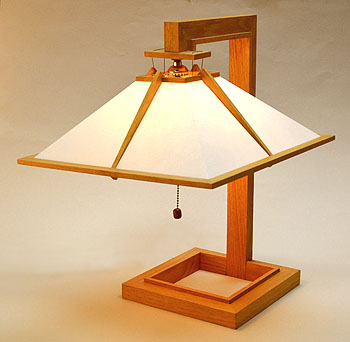
Date: Circa 1978
Title: Taliesin Table Lamp B Circa 1978.
Description: ...Continue 3) William Krebes, House Redleaf, Lakeville, Minn. 1978. 4) William Krebes, Condominium Apartment, Minneapolis, Minn. 1982. 5) William Krebes, Condominium Apartment, Phoenix, Arizona. 1984. 6) William Krebes, House (project), Scottsdale, Arizona. 1988. 7) William Krebes and Helen Durand, Condominium II at Lake Point, Minneapolis, Minn. 1990. (Note: information relating to Howe and Krebes acquired in John H. Howe, Architect", Hession, Quigley, 2015.) Krebes also collaborated with Howe fabricating Howe designed furniture, indicating that it was Krebes that crafted these two lamps. Seeing that Redleaf was the first project completed by Krebes in 1978, it would stand to reason that 1978 was when these lamps were created. William Krebes passed away in October, 2009. Alcuin Books, Scottsdale, acquired his library as well as these two lamps. The John H. Howe Cottage,Wyoming Valley, Wisconsin, 1953-1958, published in House Beautiful, October 1959, p.228-229 shows one lamp on the dining room table, even going as far as including it in the floor plan drawing. Photographs of Redleaf are published in "John H. Howe, Architect", pp.10, 149, which show two Taliesin lamps. Other Howe designed homes with Taliesin lamps can be seen on pages 153, 154, 170 and 171. Two Taliesin Table Lamp, Provenance William Krebes Estate. Acquired from Alcuin Books, Scottsdale.
Size: Constructed of Oak. 20.6 inches high; Base 9.75 x 9.75; Shade 15.5 x 15.5 x 5.25; Base of shade is .75 x .25.
ST#: 1978.55.0918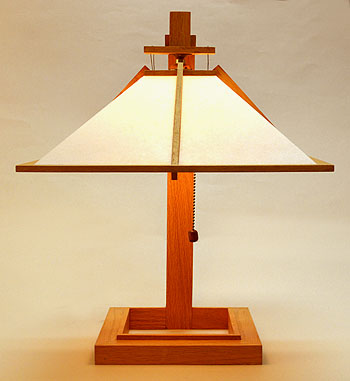
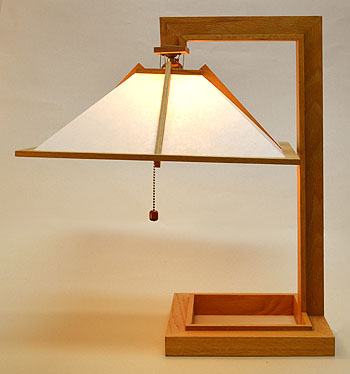
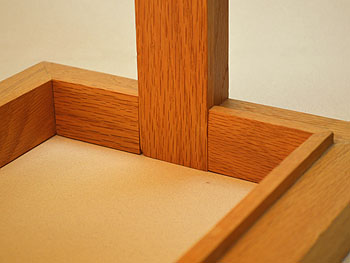
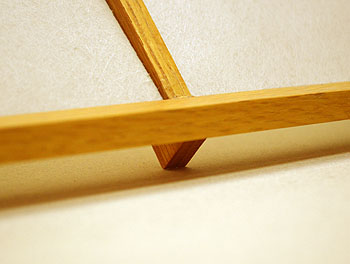
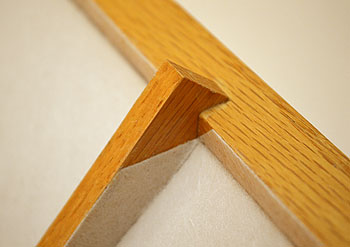
Date: 1994 Title: Taliesin Lamp 1994 (Designed in 1925)
Description: Frank Lloyd Wright originally designed this lamp for Taliesin (Spring Green) in 1925. The shade overhangs a square base. In April 1925, fire struck Taliesin for the second time and destroyed the living quarters. Wright rebuilt again, expanding and enlarging the Dining and Living Room. This lamp can be found in photographs was taken by Henry Fuermann, circa 1926 (below). Also published in "Frank Lloyd Wright, Complete Works 1917-1942", Pfeiffer, 2010, p. 155. Photograph of Wright's bedroom photographed in 1937 by Hedrich-Blessing. Manufactured by Yamagiwa, Cherry wood and an acrylic insert in the shade. Medal label on base: Frank Lloyd Wright FND. 1994. Stamped: U00364. For additional information see "Fifty Favorite Furnishings By Frank Lloyd Wright" Maddex, 1999, page 114-115. Original list price $750.00.
Size: 14 (W) x 20 (H) x 16 (D). Also comes in smaller size.
ST#: 1994.72.1013
Date: Circa 1926
Title: Dining Room and Living Room, Taliesin III
Description: Detail of Taliesin Lamp circa 1926. In April 1925, fire struck Taliesin for the second time and destroyed the living quarters. Wright rebuilt again, expanding and enlarging the Dining and Living Room. This photograph was taken by Henry Fuermann, circa 1926.
Size: 10 x 8 B&W Photograph
S#: 0172.02.1209
Date: Circa 1926
Title: Dining Room and Living Room, Taliesin III
Description: Detail of Taliesin Lamp circa 1926. In April 1925, fire struck Taliesin for the second time and destroyed the living quarters. Wright rebuilt again, expanding and enlarging the Dining and Living Room. This photograph was taken by Henry Fuermann, circa 1926.
Size: 10 x 8 B&W Photograph
S#: 0172.03.1209
Date: 2010 Title: Taliesin Playhouse Theater Pendant Lamp 2010 (Adaptation).
Description: Seven light pendant lamp. Wright designed Hillside Home School II in 1902. The building was constructed of light rose colored sandstone, heavy oak beams and red roof tiles. When the Hillside Home School closed in 1915, it fell into disrepair. When Wright began the Taliesin Fellowship in 1932, it became part of the Taliesin Fellowship complex. Wright converted the original gymnasium into a theater in 1933, and designed lighting pendants which he suspended from the ceiling. In 1952, after the theater was rebuilt following a fire, Wright modified the original design. He also created standing floor lamp utilizing the same design. Gift from James C. Rust.
Size: 15.5 x 6 x 64.5
ST#: 2010.22.0610
Date: 2012 Title: Taliesin Playhouse Theater Pendant Lamp 2012
Description: Two pendant lamps in the Taliesin Playhouse Theater, Spring Green. Wright designed Hillside Home School II in 1902. When the Hillside Home School closed in 1915, it fell into disrepair. When Wright began the Taliesin Fellowship in 1932, it became part of the Taliesin Fellowship complex. Wright converted the original gymnasium into a theater in 1933, and designed lighting pendants which he suspended from the ceiling. In 1952, after the theater was rebuilt following a fire, Wright modified the original design of the pendant lamps. Photographed in 2012, courtesy of Demi.
Date: 1952
Title: Marden Residence Pendant Lamp
Description: Marden Residence (1952 - S.357). Designed by Frank Lloyd Wright in 1952, the home was completed in 1959. Eight light pendant lamp. Example of the more complex, earlier variations of the pendant lamp. Photographed by Douglas M. Steiner, April 6, 2015. (See our Wright Study on the Marden Residence.)
Date: 1956
Title: Wright at 89. 1956.
Description: Ten light pendant floor lamp. Frank Lloyd Wright working at his desk in the Workroom at Taliesin, Spring Green. At the left is an floor lamp adaptation of the Pendant Lamp Wright originally designed in 1933 for the Taliesin Fellowship Playhouse Theater. The original light pendants were suspended from the ceiling. In 1952, after the theater was rebuilt following a fire, Wright modified the original design. Situated around Wright's desk are possibly three Allen Friedman chairs (1956 - S.403). The design is also similar to the Hanna and Olfelt designs. On the far right is a Dana windows. Photographed by Edgar Obma.
Size: 10 x 7.5 B&W photograph.
S#: 1147.68.0615
MIDWAY BARNS Date: 1995
Title: Romeo and Juliet Windmill Model, 1995 (1896 - S.037).
Description: Designed in 1896 for Wright's two aunts Ellen and Jane Lloyd-Jones and the Hillside Home School, it was completed in 1897. They requested it to stand in harmony with Hillside Home School I, the building he had designed for them ten years earlier. Wright's 60 foot tall structure functioned as a windmill and a belvedere. The design combined a diamond-shaped column wedged into an octagonal structure, symbolizing the embrace of Shakespeare's lovers. "...The reservoir finished, the Aunts intended to erect a windmill over it. This was decided upon by a family gathering which the clan usually held to make such decisions concerning the school or important affairs of their own. Said Aunt Nell, managerial mind of the school: "Why not a pretty windmill tower in keeping with our school building instead of an ugly steel tower or, for that matter, the timber ones I have seen? I am going to ask Frank for a design." An Autobiography, Wright, 1932, page 130. The original windmill was covered in shingles, and in 1938 it was resurfaced in board and batten siding. In 1990, it was torn down and completely rebuilt on its original stone base. Manufactured by The Danbury Mint. Cold-cast porcelain sculpture, hand painted. Serial number A8530.
Size: 5.4" x 3.75 x 6.75" tall. Box" 8.25 x 6 x 7.4.
ST#: 1995.96.1219Date: 1998 Title: Midway Barn and Farm Buildings. American Country Signature Series. Ertl Collectibles Limited.
Description: The model was created by Lowell Davis and produced by Ertl Company Inc. Dyersville, Iowa, 1998. Cold cast in porcelain.
Size: 9.75W x 4.5D x 2.5H
ST#: 1998.48.0406Date: 1998 Title: Midway Barn and Farm Building (Model Booklet) (Published by Ertl Collectibles Limited, Dyersville, IA)
Author: Ertl Collectibles Limited
Description: Information booklet that accompanied the Cold Cast Porcelain model of the Midway Barn and Farm Buildings. Includes information of the model, Wright and his career, and the Frank Lloyd Wright Foundation. Includes nine photographs.
Size: 5 x 4
Pages: Pp 16
ST#: 1998.60.0405
PHOTOGRAPHS Date: 1892 Title: Hillside Home School I 1892 (1897 - S.001).
Description: Ellen (Nell) and Jane Lloyd Jones, Frank Lloyd Wright's aunts, formed the Hillside Home School in 1887 and ran it until 1915 when it closed. The private school accepted students between the ages of seven and seventeen. It espoused non-conventional teaching methods, and was the first coeducational school in the nation. After attending the University of Wisconsin, Madison, Wright headed for Chicago in 1887 and accepted a position as draftsman in the architectural firm of Joseph Lyman Silsbee. That year, his Aunt's drafted him to design a school building for them, a large Shingle styled building, reflected the designs of his mentor Silsbee, and in the style of his first project, Unity Chapel, in Spring Green. It was demolished in 1950. Photographed by Frank Lloyd Wright. Courtesy of the Wisconsin Historical Society.
Size: 3.75 x 7 B&W photograph.
S#: 0013.08.1213
Each print was titled in Wright's handwriting.
Date: 1898 Title: "Down The Valley" Spring Green, Wisconsin 1898.
Description: Photographed by Frank Lloyd Wright. Wright printed a series of photographs for an album showing the Hillside Home School (S.001 - 1887) run by his Aunts in Spring Green, Wisconsin. The album included a number of horizontal panoramic prints. Five of which are part of the CCA, Canadian Centre for Architecture collection. Each print was titled in Wright's handwriting. When placed side-by-side, three of the images; "N.W", "Down the Valley", and "Bryn Mawr" form a panoramic view of the Jones Valley looking north. A number of these photographs are also part of the Wisconsin Historical Society collection. Clipping pasted on verso: " Down the Valley" (Spring Green, Wis.) c. 1898, by Frank Lloyd Wright." Acquired from the archives of the Chicago Tribune.
Size: Original 10 x 8 B&W photograph, (cropped).
S#: 0032.04.0911
"N.W" "Down The Valley" "Bryn Mawr" "N.W" and "Bryn Mawr" courtesy of the Canadian Centre for Architecture. Date: C 1900
Title: Hillside Home School I Circa 1900 (1887 - S.001).
Description: View from the driveway. This is considered the first building designed by Frank Lloyd Wright. Ellen (Nell) and Jane Lloyd Jones, Frank Lloyd Wright's aunts, formed the Hillside Home School in 1887 and ran it until 1915 when it closed. The private school accepted students between the ages of seven and seventeen. It espoused non-conventional teaching methods, and was the first coeducational school in the nation. After attending the University of Wisconsin, Madison, Wright headed for Chicago in 1887 and accepted a position as draftsman in the architectural firm of Joseph Lyman Silsbee. That year, his Aunt's drafted him to design a school building for them, Hillside Home School I, a large Shingle styled building, reflected the designs of his mentor Silsbee, and in the style of his first project, Unity Chapel, in Spring Green. As the school grew, so did the need for more space. In 1902 Wright designed a second and larger building for his aunts, Hillside Home School II (S.069) which later was incorporated into the Taliesin Fellowship complex. This building was demolished in 1950. Text in lower left hand corner: "H 22." Published in The Valley of the God-Almighty Joneses, Barney, 1965, p.62e. Also published in Frank Lloyd Wright 1885-1916, Pfeiffer, 2011, p.19. Stamped on verso: "Jun 17 1965." Hand written on verso: "Hillside School. First building by Frank Lloyd Wright. From "The Valley of the God-Almighty Joneses," by Maginel Wright Barney, 1965. This image used in conjunction with the release of the book.
Size: Original 8 x 10 B&W photograph.
S#: 0041.31.0619Date: Circa 1900 Title: Romeo and Juliet Windmill circa 1900 (1896 - S.037).
Description: Designed in 1896 for Wright's two aunts Ellen and Jane Lloyd-Jones and the Hillside Home School, it was completed in 1897. They requested it to stand in harmony with Hillside Home School I, the building he had designed for them ten years earlier. Wright's 60 foot tall structure functioned as a windmill and a belvedere. The design combined a diamond-shaped column wedged into an octagonal structure, symbolizing the embrace of Shakespeare's lovers. Photographed by Frank Lloyd Wright. Courtesy of the Wisconsin Historical Society.
Size: 3 x 7 B&W photograph.
S#: 0041.14.1213
Date: Circa 1906 Title: Hillside Home School II circa 1906 (1902 - S.069).
Description: View from the South. Ellen (Nell) and Jane Lloyd Jones, Frank Lloyd Wright's aunts, formed the Hillside Home School in 1887. Wright designed Hillside Home School I in 1892 (1897 - S.001). As the school grew, so did the need for more space. Wright designed Hillside Home School II in 1902, which was completed in 1903. (Plate X, Ausgefuhrte Bauten.) The building was constructed of light rose colored sandstone, heavy oak beams and red roof tiles. The gymnasium/theatre was on the left, two floors of classrooms and offices in the center, and a three story assembly hall on the right. The windows were diamond patterned leaded glass. Hillside Home School closed in 1915, and the building fell into disrepair. When Wright began the Taliesin Fellowship in 1932, it became part of the Taliesin Fellowship complex. He began restoring and remodeling the building. Image is from a real photo postcard, enhanced and enlarged. (See progression of the Hillside Home School / Taliesin Complex)
Size: 8 x 5 B&W photograph.
S#: 0094.43.0215
Date: Circa 1908 Title: Hillside Home School II circa 1908 (1902 - S.069).
Description: View from the Southwest. Three students can be seen in front of the building. Ellen (Nell) and Jane Lloyd Jones, Frank Lloyd Wright's aunts, formed the Hillside Home School in 1887 and ran it until 1915 when it closed. The private school accepted students between the ages of seven and seventeen. It espoused non-conventional teaching methods, and was the first coeducational school in the nation. After attending the University of Wisconsin, Madison, Wright headed for Chicago in 1887 and accepted a position as draftsman in the architectural firm of Joseph Lyman Silsbee. That year, his Aunt's drafted him to design a school building for them, Hillside Home School I, a large Shingle styled building, reflected the designs of his mentor Silsbee, and in the style of his first project, Unity Chapel, in Spring Green. As the school grew, so did the need for more space. Wright designed Hillside Home School II in 1902, which was completed in 1903. (Plate X, Ausgefuhrte Bauten.) It eventually became part of the Taliesin Fellowship complex. When Wright began the Taliesin Fellowship in 1932, he began restoring and remodeling the building. Courtesy of the Wisconsin Historical Society. (See progression of the Hillside Home School / Taliesin Complex)
Size: 7 x 4 B&W photograph.
S#: 0085.29.1213
Date: Circa 1910 Title: Hillside Home School II circa 1910 (1902 - S.069).
Description: View from the Southwest. A bridge is seen in the foreground. Ellen (Nell) and Jane Lloyd Jones, Frank Lloyd Wright's aunts, formed the Hillside Home School in 1887 and ran it until 1915 when it closed. The private school accepted students between the ages of seven and seventeen. It espoused non-conventional teaching methods, and was the first coeducational school in the nation. After attending the University of Wisconsin, Madison, Wright headed for Chicago in 1887 and accepted a position as draftsman in the architectural firm of Joseph Lyman Silsbee. That year, his Aunt's drafted him to design a school building for them, Hillside Home School I, a large Shingle styled building, reflected the designs of his mentor Silsbee, and in the style of his first project, Unity Chapel, in Spring Green. As the school grew, so did the need for more space. Wright designed Hillside Home School II in 1902, which was completed in 1903. (Plate X, Ausgefuhrte Bauten.) It eventually became part of the Taliesin Fellowship complex. When Wright began the Taliesin Fellowship in 1932, he began restoring and remodeling the building. Courtesy of the Wisconsin Historical Society. (See progression of the Hillside Home School / Taliesin Complex)
Size: 7 x 5 B&W photograph.
S#: 0094.36.1213
Date: 1910 Title: Hillside Home School II Floor Plan 1910 (1902 - S.069).
Description: Photograph of Plate X (tissue), "Hillside Home School, Lloyd Jones Sisters, Hillside Wisconsin. Floor Plan on the Main Floor." From the Ausgefuhrte Bauten und Entwurfe von Frank Lloyd Wright. "Studies and Executed Buildings". Published by Ernst Wasmuth A.-G., Berlin, 1910. Ellen (Nell) and Jane Lloyd Jones, Frank Lloyd Wright's aunts, formed the Hillside Home School in 1887. Wright designed Hillside Home School I in 1892 (1897 - S.001). As the school grew, so did the need for more space. Wright designed Hillside Home School II in 1902, which was completed in 1903. The building was constructed of light rose colored sandstone, heavy oak beams and red roof tiles. The gymnasium/theatre was on the left, two floors of classrooms and offices in the center, and a three story assembly hall on the right. Hillside Home School closed in 1915. When Wright began the Taliesin Fellowship in 1932, it became part of the Taliesin Fellowship complex. (See progression of the Hillside Home School / Taliesin Complex)
Size: 10 x 6 Color photograph.
S#: 0094.44.0215
Date: 1910 Title: Hillside Home School II Bird's-Eye View, 1910 (1902 - S.069).
Description: Photograph of Plate X, "Hillside Home School, Lloyd Jones Sisters, Hillside Wisconsin, Bird's-Eye View." From the Ausgefuhrte Bauten und Entwurfe von Frank Lloyd Wright. "Studies and Executed Buildings". Published by Ernst Wasmuth A.-G., Berlin, 1910. Ellen (Nell) and Jane Lloyd Jones, Frank Lloyd Wright's aunts, formed the Hillside Home School in 1887. Wright designed Hillside Home School I in 1892 (1897 - S.001). As the school grew, so did the need for more space. Wright designed Hillside Home School II in 1902, which was completed in 1903. The building was constructed of light rose colored sandstone, heavy oak beams and red roof tiles. The gymnasium/theatre was on the left, two floors of classrooms and offices in the center, and a three story assembly hall on the right. Hillside Home School closed in 1915. When Wright began the Taliesin Fellowship in 1932, it became part of the Taliesin Fellowship complex. (See progression of the Hillside Home School / Taliesin Complex)
Size: 10 x 6 Color photograph.
S#: 0094.45.0215
Date: Circa 1911-12 Title: Taliesin I Entrance Gate circa 1911-12 (1911 - S.172).
Description: Taliesin I was designed by Frank Lloyd Wright in 1911, it was partially destroyed by fire on August 15, 1914. Three stone masons working on the entrance gate to Taliesin. Wright wrote, "Country masons laid all the stone with the quarry for a pattern and the architect for teacher. They learned to lay the walls in the long, thin, flat ledges natural to it, natural edges out. As often as they laid a stone they would stand back to judge the effect. They were soon as interested as sculptures fashioning a statue..." "An Autobiography" Wright, 1932, p.174. Photographed by Taylor Woolley, a draftsman who lived and worked at Taliesin from September 1911 though the Spring of 1912. His photographs are an invaluable record of the birthing of Taliesin I.
Size: 10 x 7 B&W photograph.
S#: 0104.20.0215
Date: 1912
Title: Taliesin I, Spring Green, 1912 (1911 - S.172).
Description: View of Frank Lloyd Wright's Living quarters from the West. The fore court is in the foreground. The carriage approach to Taliesin I was from the South (right), through the porte-cochere seen in the center. Taliesin I was designed by Wright in 1911, it was partially destroyed by fire on August 15, 1914. Published in "Taliesin 1911-1914", Menocal, 1992, p.129. Also published in the "Journal of Organic Architecture," O'Mallery; Smith; Kalec, p.30. Photographed by Henry Fuermann in the Summer of 1912. Clipping pasted to verso: "A vista at the first Taliesin." Stamped on clipping: "Su May 23 1965." Hand written on verso: "Taliesin I."
Size: Original 10 x 8 B&W photograph.
S#: 0114.29.0619
Date: 1914
Title: Taliesin I Entrance Gate circa 1914 (1911 - S.172). Picnic near Taliesin Gate.
Description: A group of unidentified picnic goers relaxing near the gate at Taliesin. Taliesin I was designed by Frank Lloyd Wright in 1911. The Entrance masonry was built between 1911-1912. Taliesin was partially destroyed by fire on August 15, 1914. Group of seven photographs pasted front and back to a scrap book page. Acquired from the granddaughter of Emma Stephenson who lived in Mineral Point, Wisconsin, 25 miles South of Taliesin. The photograph album from which these photos were taken begins in February of 1914.
1) Bottom Center: Group of picnicker standing at the open entrance gate at Taliesin. Large Wright designed planter urns set atop the walls and piers constructed of Limestone. The right urn is missing its cantilevered top. Frank Lloyd Wright wrote of the stone masons that working on the entrance gate to Taliesin, "Country masons laid all the stone with the quarry for a pattern and the architect for teacher. They learned to lay the walls in the long, thin, flat ledges natural to it, natural edges out. As often as they laid a stone they would stand back to judge the effect. They were soon as interested as sculptures fashioning a statue..." "An Autobiography" Wright, 1932, p.174. Embedded in the left pier is a carved plaque which reads "Frank Lloyd Wright Architect." The iron gate and trellis matches the iron in the courtyard of Taliesin. According to Randolph Henning, attached to the iron gate, top left, is a hand written sign that reads "No Admittance." Frank Lloyd Wright's Taliesin, Henning, 2011, p.10-11. Emma Stephenson, far left.
2) Top left: Group of picnickers, dressed in their finest Sunday dress, possibly near Taliesin. The license plate reads "1914."
3) Top right: Same group of picnickers, dressed in their finest Sunday dress, possibly near Taliesin. The license plate reads "1914."
4-7) Sunday drive? The same car and passengers attending the picnic are in these four photographs. Top right, is the same license plate. Group of seven photographs pasted front and back to a scrap book page.
Size: Scrap book page 12 x 9, Seven B&W photographs 5.5 x 3.25
S#: 0124.28.0918Date: Circa 1915-17
Title: Taliesin II Circa 15-17 (1914 - S.182).
Description: View of Taliesin from the Southeast. The Tower and Hill apartments are on the left, the Private Residence is to the right. The garden can be seen at the base of the hill. Written in the negative, bottom left hand corner "W-25." Hand written on verso: "6 3 25." Also: "Taliesin. 5/22/32 Mag Sect. Taliesin, the magnificent home of Frank Lloyd Wright." Very similar view, but taken from the right, in Frank Lloyd Wright's Taliesin and Taliesin West, Smith, 1997, p.56. According to the Art Institute of Chicago, Ryerson and Burnham Libraries, this was photographed by Henry-Russell Hitchcock.
Size: Original 10 x 8 B&W photograph.
S#: 0128.54.0218Date: 1915 Title: Dining Room, Taliesin II, 1915.
Description: Taken at the same time as a photograph published in "Architectural Record", October, 1915. This was taken after rebuilding from the fire of August 15, 1914, but before August, in time to go to production for publishing in October, 1915. Photographed by Henry Fuermann and Sons, most likely in July or August, 1915. Dated incorrectly, but courtesy of the Wisconsin Historical Society. For more information see our Wright Study on the Japanese Print Stand. (Wright Chairs.)
Size: 8 x 10 B&W photograph.
S#: 0128.09.1211
Date: Circa 1915-17
Title: Taliesin II Sitting Room Circa 15-17 (1914 - S.182). Rare view of the Sitting Room at Taliesin II.
Description: When Taliesin I was built, this was the Sitting Room adjacent to two Bedrooms on the South end of the Private Residence. See floor plan Frank Lloyd Wright Select Houses 2, Pfeiffer, 1996, p.28. The doorway on the far left did not exist. The room actually ended on the left side of the fireplace and that wall as well as the wall on the right were exterior walls. "Taliesin 1911-1914," Menocal, 1992, p.129 clearly illustrates the absence of rooms to the South of the fireplace in 1912. Fire struck in 1914 and destroyed the Private Residence. Frank Lloyd Wright rebuilt, Taliesin II, extending the sitting Room toward the South, and adding his Bedroom through the doorway on the left, as well as a second Bedroom for Mrs. Wright. This is a view of the sitting room at Taliesin II. See floor plan in The Life-Work of the American Architect Frank Lloyd Wright, 1925, p.38. Fire struck for a third time in 1925, and Wright rebuilt again, Taliesin III. Over the years, he extended the house behind the fireplace, added the Garden Room. The Sitting Room became the alcove it is today, with passage to the Garden Room on either side of the fireplace. Wright also rebuilt the fireplace. Where it serviced just the Sitting Room, it now services this side as well as the opposite side. The metal arm holding the small kettle is still within the fireplace, and hanging on the are is a horseshoe, which sits on the fireplace's cantilevered stone mantel today. Curtis Besinger wrote: "Spring and Summer 1943... I became intrigued with the fragments of Chinese ceramics that Mr. Wright had had incorporated in the stonework of these peers when rebuilding Taliesin after one of the fires. From the entrance The process of renewal moved to the loggia of the house and initiated a much larger project, the enclosure of the covered terrace that extended toward the hill garden in Garden Court, making it a library. The roof over this terrace had, in the original scheme for Taliesin, been a porte cochere; the entrance drive coming up to the house from the south had passed under it. This entrance drive had been removed many years before... As a part of turning this roofed area into a library Mr. Wright decided that the fireplace that was on the west side of the loggia, in a lower ceiling area, should be open through to this new room. This required much reworking of the fireplace and building of hoods on both sides..." Working with Mr. Wright, 1995/1997, p.147-8. Written in the negative, bottom right hand corner "W-2" or W-3." Hand written on face: "Taliesin." Hand written on verso: "A Living Room at Taliesin. Home of Frank Lloyd Wright. Filed 5/20/32." Thank you Keiran Murphy at the Taliesin Preservation for your help in identifying this photograph.
Size: Original 10 x 8 B&W photograph.
S#: 0128.55.0218
Left: Fireplace Circa 1915-17
Right: Fireplace 2016Date: 1915 Title: Hillside Home School II, 1915 (1902 - S.069).
Description: View from the Southwest. Ellen (Nell) and Jane Lloyd Jones, Frank Lloyd Wright's aunts, formed the Hillside Home School in 1887. Wright designed Hillside Home School I in 1892 (1897 - S.001). As the school grew, so did the need for more space. Wright designed Hillside Home School II in 1902, which was completed in 1903. The building was constructed of light rose colored sandstone, heavy oak beams and red roof tiles. The gymnasium/theatre was on the left (out of frame), two floors of classrooms and offices in the center, and a three story assembly hall on the right. The windows were diamond patterned leaded glass and visible in this image. Hillside Home School closed in 1915, and the building fell into disrepair. When Wright began the Taliesin Fellowship in 1932, it became part of the Taliesin Fellowship complex. He began restoring and remodeling the building. Courtesy of the Wisconsin Historical Society. (See progression of the Hillside Home School / Taliesin Complex)
Size: 7 x 5 B&W photograph.
S#: 0128.18.0215
Date: 1915 Title: Hillside Home School II, 1915 (1902 - S.069).
Description: View from the Southeast. Ellen (Nell) and Jane Lloyd Jones, Frank Lloyd Wright's aunts, formed the Hillside Home School in 1887. Wright designed Hillside Home School I in 1892 (1897 - S.001). As the school grew, so did the need for more space. Wright designed Hillside Home School II in 1902, which was completed in 1903. The building was constructed of light rose colored sandstone, heavy oak beams and red roof tiles. The gymnasium/theatre was on the left (out of frame), two floors of classrooms and offices in the center, and a three story assembly hall on the right. The windows were diamond patterned leaded glass and visible in this image. Hillside Home School closed in 1915, and the building fell into disrepair. When Wright began the Taliesin Fellowship in 1932, it became part of the Taliesin Fellowship complex. He began restoring and remodeling the building. Courtesy of the Wisconsin Historical Society. (See progression of the Hillside Home School / Taliesin Complex)
Size: 7 x 5 B&W photograph.
S#: 0128.19.0215
Date: Circa 1917-19 Title: Dining Room, Taliesin II
Description: This photograph was first published in "The Nature of Materials: 1887 - 1941, The Buildings of Frank Lloyd Wright" Hitchcock, 1942, plate 177. Hitchcock mistakenly dates this photograph at 1911 (pg xvi). One of the many items in the photograph is an Imperial Hotel Coffee Service. Very similar to a photograph published in "Architectural Record", October 1915, page 395, which was the very first published interior of Taliesin II. Also published in "Frank Lloyd Wright Monograph 1907-1913 Volume 3" ill 275 and dated 1911. Photographed by Henry Fuermann. High res digital image. (For further information see our Wright study.) (Wright Chairs.)
Size: 10 x 8 Print
S#: 0138.04.1209
Date: Circa 1917-19 Title: Living Room, Taliesin II, circa 1917-19.
Description: Taken around the same time as a photograph of the Dining Room published in "Architectural Record", October 1915, page 395, which was the very first published interior of Taliesin II. Also published in "Wright Studies, Taliesin 1911-1914", Menocal, 1992, page 111, and dated circa 1915. Possibly photographed by Henry Fuermann. Courtesy of the Wisconsin Historical Society. For more information see our Wright Study on the Japanese Print Stand.
Size: 10 x 7.25 B&W Photograph.
S#: 0138.05.1211
Date: Circa 1917-19
Title: Taliesin II, Loggia, Circa 1917-19 (1914 - S.182).
Description: View of the Loggia. Seating appears to be built-in. A Chinese screen is affix to the wall. Small prairie styled table is to the left and right of the seating. A Chinese carpet is on the floor, Japanese textile and Chinese bust are on the table. The statue on the right is still at Taliesin today, in the Living Room. Published in "Frank Lloyd Wright Monograph 1914-23 (4)" Pfeiffer, 1990, p.8; Select Houses 2, Pfeiffer, 1996, p.43; and Taliesin and Taliesin West, Smith, 1997, p.59. Hand written on verso: "Logia (sic) at Taliesin. 5/22/32 Mag Sect. Interior view of a corner of Taliesin. Frank Lloyd Wright - Home of."
Size: Original 8 x 10 B&W photograph.
S#: 0138.20.0218Date: 1925 Title: Taliesin, Spring Green, December 1, 1925.
Description: Label pasted to verso: "Turmoil Now Reigns in "Love Nest" of Frank Lloyd Wright. A view of the costly "love nest" of Frank Lloyd Wright, famous architect, at Spring Green, Wisc., the scene of his many free love settings in alleged defiance to the code laid down by society, and wherein discord now reigns as a result of the proceedings of Mrs. Mariam (Miriam) Noel Wright, the sculptress, who he married four years ago after they had lived together seven years without the legal knot being tied. Mrs. Wright has withdrawn her divorce bill and instead seeks separate maintenance, thereby denying him his liberty to wed Olga Milanoff, his Russian servant, whom she declares is now the target for his affections. Mrs. Wright is also making every effort to have the middle-aged Russian deported, in which attempt she is being balked by her architect-husband. Wright came into great prominence as the builder of the Imperial Hotel in Tokio (sp) the only building to withstand the earthquake unimpaired. 12-1-25." View to the east from the Driveway. The Living Room is to the far left out of the picture. The bedrooms are through the passage in the center and to the left and right. The sitting room is on the other side of the large fireplace. The Porte Cochere is in the foreground on the right. Note the new construction and the wood sitting atop the Chimney. This was possibly the new construction of Taliesin III. Similar image in Taliesin 19-11-1914, Menocal, 1992, Page 129; Frank Lloyd Wright, Monograph 1914-1923, Futagawqa, Pfeiffer, 1985, Page 3.
Size: Original 8.4 x 6.2 B&W Photograph
S#: 0171.14.0413
Date: Circa 1926 Title: Dining Room (left) and Living Room, Taliesin III
Description: In April 1925, fire struck Taliesin for the second time and destroyed the living quarters. Wright rebuilt again, expanding and enlarging the Dining and Living Room. (Notice the ball and baby rattle under the chair in the foreground, for their daughter Iovanna.) Taken at the same time as S#172.03. Photographed by Henry Fuermann, W-49. (For further information see our Wright study.)
Size: 10 x 8 B&W Photograph
S#: 0172.02.1209
Date: Circa 1926 Title: Dining Room (left) and Living Room, Taliesin III
Description: In April 1925, fire struck Taliesin for the second time and destroyed the living quarters. Wright rebuilt again, expanding and enlarging the Dining and Living Room. Taken at the same time as S#172.02. Photographed by Henry Fuermann, W-42. (For further information see our Wright study.) (Wright Chairs.)
Size: 10 x 8 B&W Photograph
S#: 0172.03.1209
Date: Circa 1926 Title: Studio, Private Office, Taliesin III, Circa 1926.
Description: In August 1925, fire struck Taliesin for the second time and destroyed the living quarters. Wright rebuilt again, expanding and enlarging the Dining and Living Room. Three armchairs, two variations. The back in the center chair varies from the back on the two outside chairs. A variation of the arm chair is visible in the 1915 Dining Room photograph, but the horizontal back is longer. The example on the left and right is also seen in the 1926 Dining Room. Possibly taken at the same time as S#172.02 and 172.03. Photographed by Henry Fuermann, W-21. (Wright Chairs.)
Size: 6.5 x 8 B&W photograph.
S#: 0172.16.1213
Date: 1927
Title: Hillside Home School II, 1927 (1902- - S.069).
Description: View of the Hillside Home School from the Southwest. Ellen (Nell) and Jane Lloyd Jones, Frank Lloyd Wright's aunts, formed the Hillside Home School in 1887. Wright designed Hillside Home School I in 1892 (1897 - S.001). As the school grew, so did the need for more space. Wright designed Hillside Home School II in 1902, which was completed in 1903. The building was constructed of light rose colored sandstone, heavy oak beams and red roof tiles. The gymnasium/theatre was on the left, two floors of classrooms and offices in the center, and a three story assembly hall on the right. Hillside Home School closed in 1915, and the building fell into disrepair. Hand written on verso: "11/13/27 - Mag Sect. School near Spring Green Wis. which was created by Frank Lloyd Wright now stands idle - Hillside Home School."
Size: Original 9 x 6.75 B&W photograph.
S#: 0198.29.0619Date: 1932
Title: Rochester Democrat & Chronicle - November 16, 1932 (Published daily by the Rochester Democrat & Chronicle, Rochester, New York)
Author: Anonymous
Description: Frank Wright Guarded After Kidnap Threat. Money Demanded from Famed Architect Who Spoke Here Monday
Madison, Wis., Nov. 15 (AP) - When Frank Lloyd Wright, famous architect. returns from the East this weekend to Taliesin, his beautiful home near Spring Green, Wis., he will be accompanied by a bodyguard to protect him against a threatened kidnaping, friends here said today.
The news that Wright had received a letter from an extortionist Nov. 5 demanding money under the threat of abduction for ransom leaked out today. Madison police sought the author of the letter, postmarked from this city, Nov. 4.
Considerable secrecy surrounded this latest episode in the colorful career of the noted architect. Inquiry at Taliesin, near where Wright recently founded a unique school embracing all the arts, revealed that he had been in New York for several days. A group of students at the Wright School, it was reported, has maintained an armed guard at Taliesin daily.
The exact contents of the threatening letter were not made public. It was signed "Committee of Vigilantes." Whoever wrote the letter, friends of the architect said, was familiar with Wright's life, for it contained slurring references to episodes in his career.
The incident focused public attention on Wright for the second time in two weeks. He recently was engaged in a fist fight on a street in Madison with C. R. Secrest. In the melee the architect's nose was broken. The following day five students of the Wright School gave Secrest a horsewhipping.
Wright spoke in Rochester Monday night at the Little Theater of Memorial Art Gallery.
Original cover price 3c.
Size: 17 x 22
Pages: Pp 1
S#: 0361.26.0723Date: 1932 Title: C. R. Secrest (he broke Wright's nose) and his wife.
Description: Clipping pasted to verso: "Beaten By Students After Fight With Wright. Following street fight in which C. R. Secrest of Madison, Wisc., is said to have fractured the nose of Frank Lloyd Wright, world famous architect, four students of Wright's trade and craft school at Taliesin, Wisc., drove to Madison, entered Secrest's home, and horse-whipped him until the victim drove them off with a butcher knife. In court the students, Karl Jansen, 25, of Copenhagen, Denmark; Sam Ratensky, 22, New York City; Rudolph Mock, 29, Basel, Switzerland; and William Peters, 20, Spring Green, Wisc., plead guilty and are awaiting sentence. C. R. Secrest and his wife, who witnessed the attack, are shown above at their home. 11-4-32." Stamped on verso "Nov 8 1932." According to Wright in "An Autobiography", 1943, page 432-3, Wright was struck "violently several times on the back of the head." during the struggle he was kicked "on the bridge of the nose with his boot heel... Blood spurted all over him. ...unknown to me, my boys (four of them) went out after their man, got into his house... the police came and arrested the boys and the assassin. ...they spent a couple nights in the county jail... The boys were paying a fine of several hundred dollars. On the "installment plan," of course. The Taliesin Fellowship had got off to a very bad start." According to Brendan Gill, "Many Masks", page 332, "...his grievance against Wright was based on the fact that Wright allegedly had long owned his wife money for domestic service at Taliesin - by Wright's account, he was found guilty, fined, and soon thereafter left town. Karl Jansen was Wright's secretary at the time before Gene Masselink replaced him.
Size: Original 8 x 6 B&W photograph.
S#: 0361.05.0614
Date: 1932 Title: Wright in court with apprentices.
Description: According to Wright in "An Autobiography", 1943, page 432-3, Wright was struck "violently several times on the back of the head." during the struggle he was kicked "on the bridge of the nose with his boot heel... Blood spurted all over him. ...unknown to me, my boys (four of them) went out after their man, got into his house... the police came and arrested the boys and the assassin. ...they spent a couple nights in the county jail... The boys were paying a fine of several hundred dollars. On the "installment plan," of course. The Taliesin Fellowship had got off to a very bad start." According to Brendan Gill, "Many Masks", page 332, "...his grievance against Wright was based on the fact that Wright allegedly had long owed his wife money for domestic service at Taliesin - by Wright's account, he was found guilty, fined, and soon thereafter left town. Clipping pasted to verso: "Architect's students admit whipping his foe. Rudolph Mock (left), Karl Jansen, Frank Lloyd Wright Portrait, noted architect; Sam Ratensky, and William Peters. The four students at Wright's trade and craft school at Taliesin, Wis., who are shown here with the architect admitted horsewhipping C. R. Secrest of Madison, Wis., after Secrest had broken Wright's nose in fight over debt. (Acme Photo.)" Karl Jansen was Wright's secretary at the time before Gene Masselink replaced him. Stamped on clipping: "Nov 6 - 1932". Stamped on Verso: "Photo by Acme Newspapers, Inc. Chicago Bureau, Tribune Towers, Chicago, ILL. Published in "Many Masks", page 331.
Size: Original 9 x 6.5 B&W photograph.
S#: 0361.02.0811
Date: 1932
Title: News Clipping - 11/6/32 (Associated Press)
Description: News clipping of Frank Lloyd Wright in court with apprentices. Caption: "In Court Again and with a battered nose, Frank. Lloyd Wright, famous "rebel" architect of Madison, Wis., (right), appeared to air his latest trouble -- a battle with C. R. Secrest who is alleged to have been horsewhipped by five of Wright's students afterward. With Wright are two of the students, Rudolph Mock (left) and Earl Jensen. Associated Press Photo." Hand written on clipping: "Nov. 6, 1932." According to Wright in "An Autobiography", 1943, page 432-3, Wright was struck "violently several times on the back of the head." during the struggle he was kicked "on the bridge of the nose with his boot heel... Blood spurted all over him. ...unknown to me, my boys (four of them) went out after their man, got into his house... the police came and arrested the boys and the assassin. ...they spent a couple nights in the county jail... The boys were paying a fine of several hundred dollars. On the "installment plan," of course. The Taliesin Fellowship had got off to a very bad start."
According to Brendan Gill, "Many Masks", page 332, "...his grievance against Wright was based on the fact that Wright allegedly had long owned his wife money for domestic service at Taliesin - by Wright's account, he was found guilty, fined, and soon thereafter left town.
Size: 6 x 7
S#: 0361.22.0323Date: 1933
Title: Taliesin Fellowship Complex, 1933 (1932 - S.228).
Description: Perspective, Section and Plan for a dormitory room at the Taliesin Fellowship Complex. Perspective includes a drawing board and seat, hassock, bed closet and bookshelf. Of note is a model of the Nakoma sculpture atop the bookshelf, included in the Perspective and Section. Clipping pasted to verso: "A drawing by Frank Lloyd Wright of the layout of one of the boys' rooms in the dormitory at his new school, Taliesin Fellowship." Stamped on verso: "Mar 14 1933. N.E.A."
Size: Original 7.75 x 7.5 B&W photograph.
S#: 0370.17.0920
Date: Circa 1933 Title: Taliesin Spring Green, Yen Liang with Lamb Circa 1933.
Description: Yen Liang was born in 1908 in Tokyo. In 1910, his family moved to China . In 1928, he travel to the United States to study architecture. He attended Cornell, M.I.T. and Yale, and received his degree in three years. He enrolled in the Harvard graduate school, but after reading Frank Lloyd Wright's "An Autobiography" he immediately applied to the Taliesin Fellowship. In 1932 at 23, he became Wright's first apprentice. He and Edgar Tafel became close friends. In 1934, Liang returned to China where he became a prominent architect. "Colossus. Last week we had, among our visitors, two professors of architectural design from one of the leading universities of the east coast. They are typical of teachers of design of all the instituted architectural schools. They are graduates of some American school, were sent on bountiful scholarships to France to study... and have returned to teach what they have just been taught. They have had negligible contact with actual building practice..." Liang, "Taliesin", Volume 1, No 1, 1934, pp. 12-13. Also see "Frank Lloyd Wright, Recollections", Tafel, 1993, pp. 127-132, and "Years with Frank Lloyd Wright" Tafel, 1979, pp 136-143.
Size: Original 7.75 x 10 B&W photograph.
S#: 0370.14.0215
Date: Circa 1934 Title: Taliesin, Spring Green, Taliesin Apprentices circa 1934.
Description: Taliesin apprentices pushing vehicle. In 1932, Frank Lloyd Wright formed the Taliesin Fellowship with twenty-three apprentices who came to live, learn and work at Taliesin, in Spring Green. Published in "Taliesin," Wright, 1934 Volume 1, No 1., page 26.
Size: Original 7 x 5 B&W photograph.
S#: 0370.05.0514
Date: Circa 1934 Title: Taliesin, Spring Green, Taliesin Apprentices circa 1934.
Description: Taliesin apprentices farming. The young girl in the foreground could possibly be Wright's daughter Iovanna, born on December 2, 1925. She would have been approximately eight years old in 1933. Possibly Mr. & Mrs. Wright are in the background to the right. In 1932, Frank Lloyd Wright formed the Taliesin Fellowship with twenty-three apprentices who came to live, learn and work at Taliesin, in Spring Green.
Size: Original 7 x 5 B&W photograph.
S#: 0370.06.0514
Date: Circa 1934 Title: Taliesin, Spring Green, Taliesin Apprentices circa 1934.
Description: Possibly Olgivanna Lloyd Wright with apprentices sitting in the Tea Circle. In 1932, Frank Lloyd Wright formed the Taliesin Fellowship with twenty-three apprentices who came to live, learn and work at Taliesin, in Spring Green.
Size: Original 7 x 5 B&W photograph.
S#: 0370.07.0514
Date: Circa 1934 Title: Taliesin, Spring Green, countryside circa 1934. View of Taliesin.
Description: Taliesin can been seen on the hillside in the background. In 1932, Frank Lloyd Wright formed the Taliesin Fellowship with twenty-three apprentices who came to live, learn and work at Taliesin, in Spring Green.
Size: Original 7 x 5 B&W photograph.
S#: 0370.09.0514
Date: Circa 1934 Title: Taliesin, Spring Green, countryside circa 1934.
Description: Romeo and Juliet windmill and Taliesin can be seen on the hillside in the background. A Taliesin styled short wall can be seen in the foreground. In 1932, Frank Lloyd Wright formed the Taliesin Fellowship with twenty-three apprentices who came to live, learn and work at Taliesin, in Spring Green.
Size: Original 7 x 5 B&W photograph.
S#: 0370.10.0514
Date: Circa 1934 Title: Willey Residence, Scheme II, 1934.
Description: Part of a set of six photographs. The drawing for Willey Residence Scheme II was Wright's Project #3401, which would indicate drawings were completed in 1934. Walls are complete, trellis is under construction. The roof of the master bedroom in the background is complete. Malcolm and Nancy Willey moved in to their new house in December 1934. This image of the set of six helps date the other five. (A thank you to Robert Barros for identifying this image.)
Size: Original 7 x 5 B&W photograph.
S#: 0370.08.0514
Taliesin III, Spring Green circa 1935 (1925 - S.218). The Oak Park Library holds the Gilman Lane collection, including 32 images attributed to Lane of: Hillside Home School, Tanyderi (Porter), Romeo and Juliet Windmill, and Taliesin III. It is not clear when Gilman Lane visited Taliesin, or how many times. They were taken before 1938, when the original windmill was covered in shingles. In 1938 it was resurfaced in board and batten siding. This set of 14 photographs are of Taliesin, but taken at two different times It is not clear if the pre circa 1935 were taken by Lane or in his collection. Date: Circa 1935-1 A&B Title: Taliesin III, Spring Green entrance, circa 1935 (1925 - S.218).
Description: The "Entrance Wall" still exists, but the road and mailbox do not. Viewed from the Northeast, looking Southwest. To the left is the mail box. Midway Barn can be seen in the background directly above the stone with the letters "Taliesin" carved in it. Taliesin is out of the photograph to the right. Photographed by Gilman Lane.
Size: 8.25 x 5.5 and original 5 x 3.5 B&W photograph.
S#: 0397.26.0514 -1 A&B
Date: 2013 Title: Taliesin III, Spring Green entrance, 2013 (1925 - S.218).
Description: The "Entrance Wall" still exists, but the road does not. Viewed from the Northeast, looking Southwest. The mailbox is gone, but the lower wall that formed the base for the mailbox still exists. The matching lower wall on the right side, that was in front of the stone with the letters "Taliesin" carved in it, is gone. Photographed in September 2013. Courtesy of Google.
Size: Original 10 x 6 color photograph.
S#: 2013.11.0514
Date: Circa 1935-2 A&B Title: Taliesin III, Spring Green Mail Box, circa 1935 (1925 - S.218).
Description: Attached to the "Entrance Wall", constructed of stone, wood, and appears to be stucco. The lower door is open. Viewed from the Northeast. Photographed by Gilman Lane.
Size: 5.5 x 8.25 and original 3.5 x 5 B&W photograph.
S#: 0397.26.0514 -2 A&B
Date: Pre 1935-3 A&B Title: Taliesin III, Spring Green Tower and Hill Apartment, First view, pre 1935 (1925 - S.218).
Description: These two views (3 & 4) indicate that either Lane made two trips to Taliesin, or that this image was in his collection. Viewed from the South toward the Tower and Hill Apartment. "The Hill Tower was originally planned primarily as a farm unit but was later adapted for housing and fellowship functions." "Frank Lloyd Wright's Taliesin," Henning, 2011, page 36. The Southwest wall of the tower is covered with decorative horizontal boards and holes, creating a dovecote. A large dinner bell sets in the balcony. Photographed by Gilman Lane.
Size: 5.5 x 8.25 and original 3.5 x 5 B&W photograph.
S#: 0397.26.0514 -3 A&B
Date: Circa 1935-4 A&B Title: Taliesin III, Spring Green Tower and Hill Apartment, second view, circa 1935 (1925 - S.218).
Description: These two views (3 & 4) indicate that either Lane made two trips to Taliesin, or #3 was in his collection. Viewed from the South toward the Tower and Hill Apartment. The dovecote on the Southwest wall of the tower has been removed, and the wall extended and enlarged out to the edge of the overhanging eave. The large dinner bell sets in the balcony. Photographed by Gilman Lane.
Size: 5.5 x 8.25 and original 3.5 x 5 B&W photograph.
S#: 0397.26.0514 -4 A&B
Date: Pre 1935-5 A&B Title: Taliesin, Spring Green Tower and Hill Apartment, pre 1935 (1925 - S.218).
Description: Viewed from the West toward the Tower and Hill Apartment. The Southwest wall of the tower is covered with decorative horizontal boards and holes, creating a dovecote. Just beyond it sets a large dinner bell sets in the balcony. Photographed by Gilman Lane.
Size: 5.5 x 8.25 and original 3.5 x 5 B&W photograph.
S#: 0397.26.0514 -5 A&B
Date: Circa 1935-6 A&B Title: Taliesin III, Spring Green Tower and Hill Apartment, circa 1935 (1925 - S.218).
Description: Viewed from the Southeast toward the Tower and Hill Apartment. The Southwest wall of the tower has been extended and enlarged out to the fascia. The large bell sets in the balcony. A sculpture is seen on the right. Similar to the sculpture in the Living Room seen on the cover of "Frank Lloyd Wright Select Houses 2." Photographed by Gilman Lane.
Size: 5.5 x 8.25 and original 3.5 x 5 B&W photograph.
S#: 0397.26.0514 -6 A&B
Date: Circa 1935-7 A&B Title: Taliesin III, Spring Green Tower and Hill Apartment, circa 1935 (1925 - S.218).
Description: Viewed from the West toward the Tower and Hill Apartment. The Southwest wall of the tower has been extended and enlarged out to the fascia. The wing and fireplace on the right, heading South from the tower has been added, (see #5). Photographed by Gilman Lane.
Size: 5.5 x 8.25 and original 3.5 x 5 B&W photograph.
S#: 0397.26.0514 -7 A&B
Date: Circa 1935-8 A&B Title: Taliesin III, Studio fireplace mass, circa 1935 (1925 - S.218).
Description: Viewed from the West. For similar views see "Frank Lloyd Wright Select Houses 2," page 60-61, 92-93, 96,100-101. Photographed by Gilman Lane.
Size: 5.5 x 8.25 and original 3.5 x 5 B&W photograph.
S#: 0397.26.0514 -8 A&B
Date: Circa 1935-9 A&B Title: Taliesin III, Spring Green, circa 1935 (1925 - S.218).
Description: View of Taliesin from the hillside. Appears to be a sculpture in the window.
Size: 8.25 x 5.5 and original 3.5 x 5 B&W photograph.
S#: 0397.26.0514 -9 A&B
Date: Circa 1935-10 A&B Title: Taliesin III, Spring Green, circa 1935 (1925 - S.218).
Description: Detailed view of Taliesin from the hillside. Appears to be a sculpture in the window.
Size: 5.5 x 8.25 and original 3.5 x 5 B&W photograph.
S#: 0397.26.0514 -10 A&B
Date: Circa 1935-11 A&B Title: Taliesin III, Spring Green, circa 1935 (1925 - S.218).
Description: View of Taliesin from the hillside.
Size: 8.25 x 5.5 and original 3.5 x 5 B&W photograph.
S#: 0397.26.0514 -11 A&B
Date: Circa 1935-12 A&B Title: Taliesin III, Spring Green, circa 1935 (1925 - S.218).
Description: Detailed view of Taliesin from the hillside.
Size: 8.25 x 5.5 and original 3.5 x 5 B&W photograph.
S#: 0397.26.0514 -12 A&B
Date: Circa 1935-13 A&B Title: Taliesin III, Spring Green, circa 1935 (1925 - S.218).
Description: View of Taliesin.
Size: 8.25 x 5.5 and original 3.5 x 5 B&W photograph.
S#: 0397.26.0514 -13 A&B
Date: Circa 1935-14 A&B Title: Taliesin III, Spring Green, circa 1935 (1925 - S.218).
Description: Detailed view of Taliesin.
Size: 5.5 x 8.25 and original 3.5 x 5 B&W photograph.
S#: 0397.26.0514 -14 A&B
Date: Circa 1935 Title: Taliesin, Spring Green, Romeo and Juliet windmill Circa 1935.
Description: Designed in 1896 for Wright's two aunts Ellen and Jane Lloyd-Jones and the Hillside Home School, it was completed in 1897. "...The reservoir finished, the Aunts intended to erect a windmill over it. This was decided upon by a family gathering which the clan usually held to make such decisions concerning the school or important affairs of their own. Said Aunt Nell, managerial mind of the school: "Why not a pretty windmill tower in keeping with our school building instead of an ugly steel tower or, for that matter, the timber ones I have seen? I am going to ask Frank for a design." "An Autobiography," Wright, 1932, page 130. Wright's 60 foot tall structure functioned as a windmill and a belvedere. The design combined a diamond-shaped column wedged into an octagonal structure, symbolizing the embrace of Shakespeare's lovers. The original windmill was covered in shingles, and in 1938 it was resurfaced in board and batten siding. Still covered in shingles, this photograph was taken before 1938. Label pasted to verso: "The Museum of Modern Art. Wright, Frank Lloyd. "Romeo and Juliet" Windmill, Spring Green, Wisconsin, Hillside, 1896."
Size: Original 10 x 8 B&W photograph.
S#: 0397.38.0216
Date: Circa 1935 Title: Hillside Home School, Taliesin Fellowship Complex Circa 1935 (1932- - S.228).
Description: View from the Southwest. Ellen (Nell) and Jane Lloyd Jones, Frank Lloyd Wright's aunts, formed the Hillside Home School in 1887. Wright designed Hillside Home School I in 1892 (1897 - S.001). As the school grew, so did the need for more space. Wright designed Hillside Home School II in 1902, which was completed in 1903. The building was constructed of light rose colored sandstone, heavy oak beams and red roof tiles. The gymnasium/theatre was on the left, two floors of classrooms and offices in the center, and a three story assembly hall on the right. Hillside Home School closed in 1915, and the building fell into disrepair. When Wright began the Taliesin Fellowship in 1932, it became part of the Taliesin Fellowship complex. Edgar Tafel pictured the decapitated condition in 1932, "Years With Frank Lloyd Wright," p.29. Leaded glass windows broken and front columns above archway demolished. He began restoring and remodeling the building, windows have been replaced with plate glass, and lower portion of windows in the theatre now open. Lane visited Taliesin around 1935, and these could have been taken at this time. (See progression of the Hillside Home School / Taliesin Complex)
Size: 10 x 7.5 B&W photograph.
S#: 0397.33.0215
Date: Circa 1935 Title: Hillside Home School, Taliesin Fellowship Complex Circa 1935 (1932- - S.228).
Description: View from the West. Ellen (Nell) and Jane Lloyd Jones, Frank Lloyd Wright's aunts, formed the Hillside Home School in 1887. Wright designed Hillside Home School I in 1892 (1897 - S.001). As the school grew, so did the need for more space. Wright designed Hillside Home School II in 1902, which was completed in 1903. The building was constructed of light rose colored sandstone, heavy oak beams and red roof tiles. The gymnasium/theatre was on the left, two floors of classrooms and offices in the center, and a three story assembly hall on the right. Hillside Home School closed in 1915, and the building fell into disrepair. When Wright began the Taliesin Fellowship in 1932, it became part of the Taliesin Fellowship complex. Edgar Tafel pictured the decapitated condition in 1932, "Years With Frank Lloyd Wright," p.29. Leaded glass windows broken and front columns above archway demolished. He began restoring and remodeling the building, windows have been replaced with plate glass, and lower portion of windows in the theatre now open. Lane visited Taliesin around 1935, and these could have been taken at this time. (See progression of the Hillside Home School / Taliesin Complex)
Size: 10 x 7.5 B&W photograph.
S#: 0397.34.0215
Date: 1936 Title: Taliesin III, Spring Green, Enlarging Frank Lloyd Wright's Bedroom 1936 (1925 - S.218).
Description: Published in "At Taliesin," Henning, 1992, p.197. Caption: "Last summer saw quite a bit this seasonal growth... a sunny new bedroom, also developed from an old one, for Mr. Wright" (Noverre Musson, "At Taliesin," March 12, 1937). Apprentices Blaine Drake and Jim Thomson enlarging Frank Lloyd Wright's bedroom in 1936. Photo courtesy of John H. Howe, Architect.
Size: Original 8 x 10 B&W photograph.
S#: 0404.26.0215
Date: 1936 Title: Wright at Taliesin Spring Green, Circa 1936.
Description: Frank Lloyd Wright operating a road grader at Taliesin, Spring Green circa 1936. Wright is wearing a double-breasted suit, tie, hat and work boots. Wright formed the Taliesin Fellowship in 1932 with 23 apprentices. The tractor pulling the road grader could have been operated by one of the apprentices. In a letter to the Hanna's on June 17, 1936, Wright wrote "...We are busy and pushing on. I got tossed [off] the road grader making our new road to Hillside. Wrenched neck and leg, couple of ribs knocked in damn'd painful as I sit here writing, but worse when I try to lie down." "Frank Lloyd Wright's Hanna House" Hanna, 1981, p.25. One would assume that this was taken before his painful mishap on the road grader. Published in "At Taliesin" Henning, 1992, p.8.
Size: 8 x 8 B&W photograph.
S#: 0404.24.0215
Date: 1936 Title: Wright at Taliesin Spring Green, Circa 1936.
Description: Frank Lloyd Wright operating a road grader at Taliesin, Spring Green circa 1936. Wright is wearing a double-breasted suit, tie, hat and work boots. Wright formed the Taliesin Fellowship in 1932 with 23 apprentices. The tractor pulling the road grader could have been operated by one of the apprentices. In a letter to the Hanna's on June 17, 1936, Wright wrote "...We are busy and pushing on. I got tossed [off] the road grader making our new road to Hillside. Wrenched neck and leg, couple of ribs knocked in damn'd painful as I sit here writing, but worse when I try to lie down." "Frank Lloyd Wright's Hanna House" Hanna, 1981, p.25. One would assume that this was taken before his painful mishap on the road grader.
Size: 8 x 8 B&W photograph.
S#: 0404.25.0215
Date: 1937
Title: Taliesin III, Spring Green, Aerial View1937 (1925 - S.218).
Description: Published in the January 1938 issue of Architectural Forum, page 4. Caption: "Air view of Taliesin in November . . . Hillside group of Fellowship buildings old and new are a quarter of a mile over the hill to the South." Hand written on verso: "Feb 13 / 38, pages 4 & 5. Frank Lloyd Wright - Home of." Clipping pasted to verso: "Taliesin from the air spreads out on the hillside with a serpent-like road almost surrounding it. Photo by Roy E. Peterson, Racine." Stamped on verso: "Photography by Roy E. Peterson, Racine, Wis." Photographed by Roy E. Peterson.
Size: Original 10 x 8 B&W photograph.
S#: 0429.39.0218Date: 1937 Title: Taliesin III, Spring Green, viewed from the Southwest 1937 (1925 - S.218).
Description: Photographed by Hedrich-Blessing at the time he photographed Taliesin in preparation for the January 1938 issue of the Architectural Forum. Similar detailed view published on page 17. Note: The shrine and furniture seen on the left side of page 17 is visible in this photograph. Large garden visible in the foreground on the left. Earlier view published in Monograph 1914-1923, p.2. Courtesy Hedrich-Blessing Photographers.
Size: Original 10 x 8 B&W photograph.
S#: 0429.20.0215
Date: 1937 Title: Taliesin III, Spring Green, 1937.
Description: Verso: "South corner of dining-room at Taliesin, Looking from the South across the top of the hill garden." "ROTO May 1, 1938." "April 2, 1954 P 36." Written in pencil: "Hedrich Blessing Studio, Courtesy The Architectural Forum." Photographed by Hedrich Blessing Studios, taken in preparation for the January 1938 issue of "Architectural Forum", published on page 17. Original 8 x 10 vintage silver gelatin photograph.
Size: 8 x 10
S#: 0429.09.1209
Date: 1937
Title: Taliesin III, Spring Green, viewed from the Northeast 1937 (1925 - S.218).
Description: Photographed by Hedrich-Blessing at the time he photographed Taliesin in preparation for the January 1938 issue of the Architectural Forum. The tea circle is on the left, stairs lead up to the tower and hill apartments. A bell can be seen on the roof. The Chinese vase was placed in the same spot in 1940 (S#0531.18). Two copies.
Size: Original 10 x 8 and 9 x 6 B&W photograph.
S#: 0429.63.0323, 0429.65.1124Date: Circa 1937 Title: Taliesin III, Spring Green, Living Room circa 1937 (1925 - S.218).
Description: "View of Living room showing furniture as part of the building," Frank Lloyd Wright, caption page 11, Architectural Forum, January, 1938. Note Wright designed furniture and copper weed holder. Photographed by Hedrich-Blessing Studios, taken in preparation for the January 1938 issue of Architectural Forum. Similar view published in the January 1938 issue, page 11. Published in "At Taliesin," Henning, 1992, p.52. Courtesy Hedrich-Blessing Photographers.
Size: Original 8 x 10 B&W photograph.
S#: 0429.19.0215
Date: 1937
Title: Taliesin III, Spring Green, view of the Loggia 1937 (1925 - S.218).
Description: Photographed by Bill Hedrich, Hedrich-Blessing at the time he photographed Taliesin in preparation for the January 1938 issue of the Architectural Forum. Caption: "South wall of Loggia taken from under the balcony looking away from stone fireplace on North wall, across Taliesin farmlands to the South." Stamped on verso: "Feb 13 / 38, Pages 4 & 5. Frank Lloyd Wright", Home of." Clipping pasted to verso: "Through the windows of the loggia at Taliesin, the Wright home near Spring Green, Wis., the view is south across the rolling farmlands. - Hedrich-Blessing Studio Photo." Stamped on verso: "Hedrich-Blessing Studio... Chicago." Published in the January 1938 issue, page 14.
Size: Original 8 x 10 B&W photograph.
S#: 0429.38.0218Date: 1937
Title: Taliesin III, Spring Green, Wisconsin, 1937 (1925 - S.218).
Description: Photograph of Taliesin III during the winter, looking up at the private living quarters, bedroom wing. Taliesin I was designed by Frank Lloyd Wright in 1911. After the fire, Taliesin II was designed by Wright in 1914. Taliesin III was designed by Wright in 1925. This photograph, captured before the Birdwalk was constructed, was taken with a 4x5 camera using AGFA Safety Film (as indicated by the stamp on the negative). AGFA Safety Film was introduce in the mid-1930s. A similar is the postcard S#0460.22 and photograph S#0429.67. This photograph was included with a Letter of Recommendation for Noverre Musson in 1939 (S#501.72).
Size: Original 10 x 8 B&W photograph.
S#: 0429.68.1025Date: 1937
Title: Taliesin III, Spring Green, Wisconsin, 1937 (1925 - S.218).
Description: Photograph of Taliesin III, looking up at the private living quarters, bedroom wing. Taliesin I was designed by Frank Lloyd Wright in 1911. After the fire, Taliesin II was designed by Wright in 1914. Taliesin III was designed by Wright in 1925. This photograph, captured before the Birdwalk was constructed, was photographed by Bill Hedrich. Very similar to the postcard S#0460.22 and photograph S#0429.68. Courtesy of Chicago History Museum.
Size: 10 x 8 B&W photograph.
S#: 0429.67.1125Date: 1940 Title: Hillside Home School, Taliesin Fellowship Complex, 1940 (1932- - S.228).
Description: View from the Southwest. Ellen (Nell) and Jane Lloyd Jones, Frank Lloyd Wright's aunts, formed the Hillside Home School in 1887 and ran it until 1915 when it closed. Wright designed Hillside Home School II in 1902, which was completed in 1903. (Plate X, Ausgefuhrte Bauten.) It eventually became part of the Taliesin Fellowship complex. When Wright began the Taliesin Fellowship in 1932, he began restoring and remodeling the building. The building was constructed of light rose colored sandstone, heavy oak beams and red roof tiles. The gymnasium/theatre was on the left, two floors of classrooms and offices in the center, and a three story assembly hall on the right. Photographed during the winter. Label on verso: "Exterior of Hillside 1940." Original 10 x 8 B&W photograph. (See progression of the Hillside Home School / Taliesin Complex)
Size: Original 10 x 8 B&W photograph.
S#: 0531.44.0514
Date: 1940 Title: Taliesin Draughting Room, Spring Green, 1940.
Description: In the foreground on the right is a model of Broadacre City. In the background is a photograph of the Robie House and a model of St. Mark's in-the-Bouwerie. Pedro Guerrero was an apprentice with Frank Lloyd Wright from May, 1940 until May 1941. According to "Picturing Wright", Guerrero ..., Wright and the apprentices arrived in Spring Green in May, 1940 after caravanning from Taliesin West. They would spend summer and fall in Wisconsin, then head to Taliesin West, Scottsdale in as the cold set in. Another view of the draughting room at Taliesin, page 91. Photographed by Pedro Guerrero during the summer of 1940.
Size: 7 x 10 B&W photograph.
S#: 0531.46.0115
Date: 1940
Title: Taliesin, Spring Green, 1940 (1925 - S.218).
Description: Frank Lloyd Wright looks over the model of Wingspread, the home for Herbert Johnson, in the Hillside Drafting Studio, Taliesin. The model was first shown at The Museum of Modern Art, November 1940, "In the Nature of Materials, The Work of Frank Lloyd Wright." In the background are Suntop Homes, S.C. Johnson Administration Building, and in the background, the Jester House. Published in "The Show To End All Shows," Reed and Kasizen, 2004, p.39. Also published in "Wright on Exhibit," Smith, 2017, page x. Hand written on verso: "Frank Lloyd Wright at Taliesin." Stamped on verso: "Aug 4 1941."
Size: Original 11 x 8.5 B&W photograph.
S#: 0531.72.0218Date: Circa 1940 Title: Taliesin circa 1940
Description: View toward garden court and Wright's residence and forecourt from the studio (Frank Lloyd Wright Taliesin, GA Traveler 002 (2002) Pfeiffer/Futagawa, page 136-137). In 1938 Wright designed a home for Charles L. Manson, Wausau, Wisc. (S.249), one of Wright's uniquely designed Usonian homes. On many occasions, Wright's clients were invited to visit him, and this photograph was taken on one of those visits. In August of 1940 Manson personally was invited to attend "The Playhouse Program The Playhouse Program" August 11, 18, 25, 1940 (S#2040.01).
Size: Original 8 x 10 silver gelatin photograph.
S#: 0531.18.0607
Date: 1940 Title: Saturday afternoon picnic with the Wright's 1940.
Description: "Lunch was often held picnic fashion somewhere on the vast grounds. On one Saturday in 1940, the entire fellowship and some guests gathered on the hill below Taliesin to enjoy the summer's bounty." Photographed by Pedro Guerrero. Published in "Pedro E. Guerrero, A Photographer's Journey" 2007, Page 61.
Size: 6.5 x 10 B&W photograph.
S#: 0531.42.0214
Date: 1940 Title: Apprentice picnic 1940, Taliesin, Spring Green.
Description: "The daily picnics were expertly organized. Once the food arrived at the site, everyone got into the spirit of things. It was a relaxing informal break that was always welcome." Female on the left possibly Kay (Schneider) Rattenbury and on the right with his back to the camera is possibly Wes Peters. Published in "Taliesin" Vol. 1 No 2, February 1941. Also published in "Picturing Wright" Guerrero 1994, Page 88. Photographed by Pedro E. Guerrero.
Size: Original 8 x 10 silver gelatin photograph.
S#: 0531.14.0207
Date: Circa 1945 Title: Romeo and Juliet Windmill circa 1945-53, Taliesin Spring Green (1896, 1938 - S.037).
Description: Full view of the windmill tower. Frank Lloyd Wright designed the windmill tower for his aunts Jane and Nell Lloyd Jones in 1896. "...The reservoir finished, the Aunts intended to erect a windmill over it. This was decided upon by a family gathering which the clan usually held to make such decisions concerning the school or important affairs of their own. Said Aunt Nell, managerial mind of the school: "Why not a pretty windmill tower in keeping with our school building instead of an ugly steel tower or, for that matter, the timber ones I have seen? I am going to ask Frank for a design." "An Autobiography," Wright, 1932, page 130. The original windmill was covered in shingles, and in 1938 it was resurfaced in board and batten siding. In 1990, it was torn down and and completely rebuilt on its original stone base. Ezra Stoller photographed Taliesin in 1945 and again in the 1953.
Size: Original 4 x 5 contact print and 8 x 10 B&W photograph.
S#: 0647.27.0514
Date: Circa 1945 Title: Romeo and Juliet Windmill circa 1945-53, Taliesin Spring Green (1896, 1938 - S.037).
Description: View of the windmill tower from the base. Frank Lloyd Wright designed the windmill tower for his aunts Jane and Nell Lloyd Jones in 1896. "...The reservoir finished, the Aunts intended to erect a windmill over it. This was decided upon by a family gathering which the clan usually held to make such decisions concerning the school or important affairs of their own. Said Aunt Nell, managerial mind of the school: "Why not a pretty windmill tower in keeping with our school building instead of an ugly steel tower or, for that matter, the timber ones I have seen? I am going to ask Frank for a design." "An Autobiography," Wright, 1932, page 130. The original windmill was covered in shingles, and in 1938 it was resurfaced in board and batten siding. In 1990, it was torn down and and completely rebuilt on its original stone base. Ezra Stoller photographed Taliesin in 1945 and again in the 1953.
Size: Original 4 x 5 contact print and 8 x 10 B&W photograph.
S#: 0647.28.0514
Date: Circa 1945
Title: Taliesin, Spring Green Circa 1945 (1925 - S.218).
Description: View of the Garden Court from the West. Studio fireplace mass is on the left. The Entrance is in the center, the private quarters are on the right. Photographed by Wayne Andrews, published in "Architecture, Ambition and Americans" p.241, which was first published in 1947. Label pasted to face: "University of California, Berkeley. 20th Century - United States. Wright, Frank Lloyd. Taliesin East. Spring Green, Wisconsin. 1925. Courtyard. Andrews 943. Department of Architecture." Acquired from the archives of the University of California, Berkeley.
Size: Mounted to 14 x 11 gray board. Original 9 x 7 B&W print.
S#: 0647.33.1218Date: Circa 1945
Title: Taliesin, Spring Green Circa 1945 (1925 - S.218).
Description: View of the Tower and Hill Apartments from the hill crown looking Northwest. When comparing this to the view from 1937 (0429.09), clerestory windows have been added above the roof-line on the left. Photographed by Wayne Andrews, taken at the same time as (647.33). Label pasted to face: "University of California, Berkeley. 20th Century - United States. Wright, Frank Lloyd. Taliesin East. Spring Green, Wisconsin. 1925. Dining Room Unit. Andrews 942. Department of Architecture." Acquired from the archives of the University of California, Berkeley. Mounted to 14 x 11 gray board.
Size: Original 9 x 7.25 B&W print.
S#: 0647.34.1218Date: 1947
Title: Taliesin, Spring Green, Apprentices Working on Guggenheim Museum Model No. 1, 1945 (1925 - S.218).
Description: Five apprentices are working on the model of the Guggenheim Museum. Left to right: Burton Goodrich, John de Koven Hill, Douglas Lockwood, Beatrice Reik and Lee Kawahara. On September 20, 1945, Frank Lloyd Wright, Hilla Rebay and Solomon R Guggenheim held a new conference at the Plaza Hotel, New York, to unveil the model for the new Guggenheim Museum. It was designed in two pieces to reveal the interior cross-section of the museum. In the background, center right, is a large photograph of the S. C. Johnson headquarters. Just beneath it on a table sets another model. Hand written on verso: "Frank L. Wright - Homes of Taliesin. Students. Filed 9/27/45." Stamped on verso: "Acme Newspictures, Inc." Published in "Wright on Exhibit," Smith, 2017, p.187.
Size: Original 9 x 7 B&W photograph.
S#: 0720.25.0919Date: Summer 1947 Title: Picnic at Borglum Rock with apprentices
Description: Borglum Rock was a lovely wooded terrace some miles away from Taliesin on a sheer escarpment overlooking a breathtaking ravine. "During one summer of late the 1930's while Gutzon Borglum was working on the Mount Rushmore heads, he visited Taliesin and attended one of the picnics. They later named the spot Borglum Rock". Mr. And Mrs. Wright seated. Apprentices include: Foreground (l-r) Alan Lape Davison, Davy (far left); Ernst Wallfisch (in hat); Donald Brown (third); Ann Purcell (far right, violinist and part of the piano quartet from the Dallas Symphony that summer, which also included Ernst & Lorry Walfish, piano and viola respectively, and Signa Sandstrom, cello). It was a tradition of the Wrights when they were at Taliesin Spring Green, to have a picnic Sunday afternoons. Apprentices cooked the food, packed it, the dishes and silverware, and hauled everything to a scenic spot at Taliesin or close by. "Working with Mr. Wright" Besinger (1937- 55) 1997, Pp 179 (Bob Brevick and Mansinh Rana also appear in a photo in Besinger). Photographer possibly Wes Peters. 5 x 4 acquired from the estate of Noverre Musson. Stamped on verso: "905F. "Thank you John Geiger for his help in identifying those in this photo.
Size: One original 8 x 10 silver gelatin photograph, and one original 5 x 4 B&W photograph.
S#: 0720.03.0107, 0720.19.0917
Date: 1947
Title: Picnic at Borglum Rock, Summer 1947.
Description: Borglum Rock was a lovely wooded terrace some miles away from Taliesin on a sheer escarpment overlooking a breathtaking ravine. "During one summer of late the 1930's while Gutzon Borglum was working on the Mount Rushmore heads, he visited Taliesin and attended one of the picnics. They later named the spot Borglum Rock". Mr. Wright is on the left, gesturing with his hands, talking to the apprentices. Five apprentices are on the right. Acquired from the estate of Taliesin Apprentice Noverre Musson. Stamped on verso: "862F."
Size: Original 5 x 4 B&W photograph.
S#: 0720.20.0917Date: Summer 1947 Title: Picnic at Borglum Rock with apprentices
Description: Apprentices include (l-r): Tore Bjornstadt (second from left with blond hair); Paolo Solari (third from left, facing camera); Next might be John Geiger, (but he does not remember the shirt); Next is probably Ivovanna Wright (John vaguely remembers her in a halter that day); Mansinh Rana (with bent head. He was a friend of Indira Gandhi and became the state architect for India); Ernst Wallfisch (in hat, behind and to the left of Mansinh Rana); Next is Bob Brevic (looking to the left). Photographer possibly Wes Peters. Thank you John Geiger for his help in identifying those in this photo.
Size: Original 8 x 10 silver gelatin photograph.
S#: 0720.04.0107
Date: Circa 1949 Title: Taliesin, Spring Green (Taliesin III 1925 - S.218) Circa 1949.
Description: Frank Lloyd Wright's 1940 Lincoln Cabriolet parked outside at Taliesin West. Wright ordered it in 1939, and it was the 16th one built that year, completed on December 28, 1939 and shipped on January 5, 1940. As with all of Wright's other automobiles, it was painted in his personal color, Cherokee Red. Shortly after it was delivered, Wright and Wesley Peters, Wright's son-in-law had a heated argument. Peters stormed out of the residence, took the first car he say, sped down the road and rolled it, crushing the top. Wright took the opportunity to modify the top. He rounded the steel top, covering only the back seat, eliminated the back window and added two semi-circular side windows. Photographed by Bruce Brooks Pfeiffer.
Size: 10 x 8 B&W photograph.
S#: 0798.16.0115
Date: Circa 1950 Title: Hillside Home School, Taliesin Fellowship Complex Circa 1950 (1932- - S.228).
Description: View from the Southwest. Ellen (Nell) and Jane Lloyd Jones, Frank Lloyd Wright's aunts, formed the Hillside Home School in 1887 and ran it until 1915 when it closed. Wright designed Hillside Home School II in 1902, which was completed in 1903. It eventually became part of the Taliesin Fellowship complex. When Wright began the Taliesin Fellowship in 1932, he began restoring and remodeling the building. The building was constructed of light rose colored sandstone, heavy oak beams and red roof tiles. The gymnasium/theatre was on the left, two floors of classrooms and offices in the center, and a three story assembly hall on the right. Photographed by Wayne Andrews before the fire that destroyed the theatre and classrooms in the Spring of 1952. (See progression of the Hillside Home School / Taliesin Complex)
Size: 10 x 8 B&W photograph.
S#: 0831.44.0215
Date: 1950
Title: Taliesin, Spring Green Circa 1950 (Taliesin III 1925 - S.218).
Description: Viewed from the East, from across the lake. Frank Lloyd Wright borrowed the term Taliesin, Welsh for "Shining Brow," positioning the home just under the crown of the hill. Acquired from the archives of the New York Sun. New York Sun was published between 1833 and 1950. It published the New York Morning Sun and the New York Evening Sun editions. In 1920 the Morning Sun was closed, and it was simply called the New York Sun. In 1950 it was sold and merged into the New York World-Telegram. Stamped on verso: "May 16 1968." Hand written on verso: "#3. Bldgs, Frank Lloyd Wright. Taliesin. Kem." Original 8 x 10 B&W photograph.
Size: Original 8 x 10 B&W photograph.
S#: 1757.20.0617Date: Circa 1950
Title: Taliesin, Spring Green Circa 1950 (Taliesin III 1925 - S.218).
Description: Viewed from the South. Tower and Hill Apartments. "The Hill Tower was originally planned primarily as a farm unit but was later adapted for housing and fellowship functions." "Frank Lloyd Wright's Taliesin," Henning, 2011, page 36. In 1935 (0397.26) the stonework on the far left intersected the wall to its right, without the gap that is seen in this image. A long vertical window has been added within that gap. Acquired from the archives of the New York Sun. New York Sun was published between 1833 and 1950. It published the New York Morning Sun and the New York Evening Sun editions. In 1920 the Morning Sun was closed, and it was simply called the New York Sun. In 1950 it was sold and merged into the New York World-Telegram. Stamped on verso: "May 16 1968." Hand written on verso: "#5. Bldgs, Frank Lloyd Wright. Taliesin. Kem."
Size: Original 8 x 10 B&W photograph.
S#: 0831.68.1217Date: Circa 1950
Title: Taliesin, Spring Green Apprentice Picnic Circa 1950 (Taliesin III 1925 - S.218).
Description: Apprentice picnic at Taliesin near remains of Midway Gardens. Possibly one of the Sunday afternoon picnics. Photographed by Allan J. Gelbin, apprentice from 1949 - 1953. There appears to be the remains of five Sprite, possibly a partial figure from the interior fountain and three decorative blocks. Mr. And Mrs. Wright are seated on the ground in the center. For an additional view of the remains at Taliesin, A Way Of Life, Gottlieb, 2001, p.35. Text on sleeve: "A-20-Gel-ArchFLW-0-5. Portraits & Bkgrd. Materials. Mr. & Mrs. Wright, A.D..A." Acquired from the archives of the University of Virginia.
Size: 35mm Color slide, sandwiched between glass, plastic mount.
S#: 0831.88.0520Date: 1952
Title: Taliesin, Spring Green 1952.
Description: 1) Frank Lloyd Wright oversees the Apprentices as they gather rolls of hay to be stored at the Midway Barn. Similar view published in "Picturing Wright" Guerrero, 1994, p.57. Caption: "Here in 1953 Mr. Wright watches while rolls of hay are stacked." But, Curtis Besinger, "Working with Mr. Wright" 1995/1997, page 240, dates this groups of images, as well as the fire during 1952. Earl Nisbet, "Taliesin Reflections" 2006, p.77 and p.90, dates the fire1952, and farming photographs by Guerrero, 1951. The hat in these photographs give away the time period. Guerrero wrote, p.93, "...When I saw him I really wanted to say, "Would you please take off that damned crocheted cap and go get a hat?" But I did not have the nerve." Photographed at Taliesin, Spring Green, by Pedro E. Guerrero 1952. Written on contact: "2-4."
Size: One of twenty 2.25 x 2.25 B&W proofs and one 8 x 8 study B&W photograph.
S#: 0910.37.0218 -1Date: 1952
Title: Taliesin, Spring Green 1952.
Description: 2) Taliesin, Spring Green Circa 1952. Frank Lloyd Wright oversees the Apprentices as they gather rolls of hay to be stored at the Midway Barn. Similar view published in "Picturing Wright" Guerrero, 1994, p.57. Caption: "Here in 1953 Mr. Wright watches while rolls of hay are stacked." But, Curtis Besinger, "Working with Mr. Wright" 1995/1997, page 240, dates this groups of images, as well as the fire during 1952. Earl Nisbet, "Taliesin Reflections" 2006, p.77 and p.90, dates the fire1952, and farming photographs by Guerrero, 1951. The hat in these photographs give away the time period. Guerrero wrote, p.93, "...When I saw him I really wanted to say, "Would you please take off that damned crocheted cap and go get a hat?" But I did not have the nerve." Photographed at Taliesin, Spring Green, by Pedro E. Guerrero 1952. Written on contact: "2-11."
Size: One of twenty 2.25 x 2.25 B&W proofs and one 8 x 8 study B&W photograph.
S#: 0910.37.0218 -2Date: 1952
Title: Taliesin, Spring Green 1952.
Description: 3) Taliesin, Spring Green Circa 1952. Frank Lloyd Wright oversees the Apprentices as they gather hay. Taliesin can be seen in the center background. Photographed at Taliesin, Spring Green, by Pedro E. Guerrero 1952.
Size: One of twenty 2.25 x 2.25 B&W proofs and one 8 x 8 study B&W photograph.
S#: 0910.37.0218 -3Date: 1952
Title: Taliesin, Spring Green 1952.
Description: 4) Taliesin, Spring Green Circa 1952. Apprentices clear, rake and burn brush. Which is how the fire started in 1952 Photographed at Taliesin, Spring Green, by Pedro E. Guerrero 1952.
Size: One of twenty 2.25 x 2.25 B&W proofs and one 8 x 8 study B&W photograph.
S#: 0910.37.0218 -4Date: 1952
Title: Taliesin, Spring Green 1952.
Description: 5) Taliesin, Spring Green Circa 1952. Apprentices clear, rake and burn brush. Which is how the fire started in 1952 Photographed at Taliesin, Spring Green, by Pedro E. Guerrero 1952.
Size: One of twenty 2.25 x 2.25 B&W proofs and one 8 x 8 study B&W photograph.
S#: 0910.37.0218 -5Date: 1952
Title: Taliesin, Spring Green 1952.
Description: 6) Apprentices work on a downed tree. Photographed at Taliesin, Spring Green, by Pedro E. Guerrero 1952.
Size: One of twenty 2.25 x 2.25 B&W proofs and one 8 x 8 study B&W photograph.
S#: 0910.37.0218 -6Date: 1952
Title: Taliesin, Spring Green 1952.
Description: 7) Mr. Wright and most likely Olgivanna riding horses. Photographed at Taliesin, Spring Green, by Pedro E. Guerrero 1952.
Size: One of twenty 2.25 x 2.25 B&W proofs and one 8 x 8 study B&W photograph.
S#: 0910.37.0218 -7Date: 1952
Title: Taliesin, Spring Green 1952.
Description: 8) Four Apprentices working on the roof of one of the silos at Taliesin. Photographed at Taliesin, Spring Green, by Pedro E. Guerrero 1952.
Size: One of twenty 2.25 x 2.25 B&W proofs and one 8 x 8 study B&W photograph.
S#: 0910.37.0218 -8Date: 1952
Title: Taliesin, Spring Green 1952.
Description: 9) Three Apprentices working on the roofing material of one of the silos at Taliesin. Midway Barn can be seen in the background. Photographed at Taliesin, Spring Green, by Pedro E. Guerrero 1952.
Size: One of twenty 2.25 x 2.25 B&W proofs and one 8 x 8 study B&W photograph.
S#: 0910.37.0218 -9Date: 1952
Title: Taliesin, Spring Green 1952.
Description: 10) Three Apprentices work on the roof of one of the silos at Taliesin applying hot tar. One apprentice is to the left working with the hot tar. Midway Barn can be seen in the background. Photographed at Taliesin, Spring Green, by Pedro E. Guerrero 1952.
Size: One of twenty 2.25 x 2.25 B&W proofs and one 8 x 8 study B&W photograph.
S#: 0910.37.0218 -10Date: 1952
Title: Taliesin, Spring Green 1952.
Description: 11) Fire broke out at Taliesin on April 26, 1952. Apprentices begin the cleanup and reconstruction of the Playhouse at Taliesin. Curtis Besinger Wrote, "In late April we got word that there had been a fire at Hillside in Wisconsin. This unsettling news did not offer me any details. We had started packing the van for the move to Wisconsin a few days earlier. Now, not knowing quite what to expect when we arrived, we started on the trip in small groups. I was driving my hot shot. John Rattenbury, who had arrived or year or so before was assigned to ride with me." "Working with Mr. Wright" 1995/1997, page 238. Photographed at Taliesin, Spring Green, by Pedro E. Guerrero 1952.
Size: One of twenty 2.25 x 2.25 B&W proofs and one 8 x 8 study B&W photograph.
S#: 0910.37.0218 -11Date: 1952
Title: Taliesin, Spring Green 1952.
Description: 12) An Apprentice begins reconstructing the Hillside Playhouse. Fire broke out at Taliesin on April 26, 1952. Curtis Besinger wrote, "When we arrived at Taliesin early in May the cause of the fire and the extent of the damage became clear. Mr. and Mrs. Wright had gone directly to Taliesin when they return from their trip to Paris. On Saturday afternoon, April 26 (1952) Mr. Wright organize the crew to clean up the grounds around the Hillside buildings. This was an area that had not been mowed the previous summer and which had become covered with a high, weedy growth." "Working with Mr. Wright" 1995/1997, page 239. Written on contact: "1-2." Photographed at Taliesin, Spring Green, by Pedro E. Guerrero 1952.
Size: One of twenty 2.25 x 2.25 B&W proofs and one 8 x 8 study B&W photograph.
S#: 0910.37.0218 -12Date: 1952
Title: Taliesin, Spring Green 1952.
Description: 13) Apprentices reconstruct the Hillside Playhouse after the fire. Fire broke out at Taliesin on April 26, 1952. Curtis Besinger wrote, "Mr. Wright was trying to start a fire to burn away this overgrowth. He had run out of matches and had sent Davy to get more matches and some gasoline. While Davy was away, Mr. Wright left the area where he had been trying to start the fire. The wind, which had been blowing away from the building, suddenly change directions. The fire flared up quickly and was driven by the wind toward the building. How the flames got inside the building was not too clear." "Working with Mr. Wright" 1995/1997, page 239. Written on contact: "1-3." Photographed at Taliesin, Spring Green, by Pedro E. Guerrero 1952.
Size: One of twenty 2.25 x 2.25 B&W proofs and one 8 x 8 study B&W photograph.
S#: 0910.37.0218 -13Date: 1952
Title: Taliesin, Spring Green 1952.
Description: 14) Apprentices reconstruct the Hillside Playhouse after the fire. Fire broke out at Taliesin on April 26, 1952. Curtis Besinger wrote, "The fire spread quickly through the upper floor of the classroom section and into the theater. It destroyed the roof and walls of the upper level of this central section, and most of the theater. Only the stonewalls and a portion of the roof on the north end of the theater were left standing. Fortunately the fire was stopped at the east end of the central section. If it had not been stopped, it could have spread into the living room and the northern section of the building, including the drafting room and the apprentice rooms along side it." "Working with Mr. Wright" 1995/1997, page 239. Possibly Kelly Oliver standing on the right, pointing. (See "Working with Mr. Wright" p.40.) Written on contact: "1-4." Photographed at Taliesin, Spring Green, by Pedro E. Guerrero 1952.
Size: One of twenty 2.25 x 2.25 B&W proofs and one 8 x 8 study B&W photograph.
S#: 0910.37.0218 -14Date: 1952
Title: Taliesin, Spring Green 1952.
Description: 15) Apprentices reconstruct the Hillside Playhouse after the fire. Fire broke out at Taliesin on April 26, 1952. Curtis Besinger wrote, "The remains of the fire had not cooled Sunday morning when Mr. Wright was at a drafting table making plans for the rebuilding. On Monday morning he started the work of clearing away the debris. The repair of the damage done by the fire and the rebuilding of the portions destroyed was the main construction project of the summer. Kelly Oliver was assigned to be in charge of this project, more or less (Mr. Wright was there directing the work much of the time)." "Working with Mr. Wright" 1995/1997, page 239. See this apprentice in "Picturing Wright" Guerrero, 1994, p.93. Photographed at Taliesin, Spring Green, by Pedro E. Guerrero 1952.
Size: One of twenty 2.25 x 2.25 B&W proofs and one 8 x 8 study B&W photograph.
S#: 0910.37.0218 -15Date: 1952
Title: Taliesin, Spring Green 1952.
Description: 16) Apprentices reconstruct the Hillside Playhouse after the fire. Fire broke out at Taliesin on April 26, 1952. Curtis Besinger wrote, "The replacement of the dining-room roof went rather quickly. It's construction was interesting. Mr. Wright wanted to make it fireproof. It was framed with heavy Douglas fir timbers. These were spaced at the same interval that the oak beams of the previous floor had been. The sandstone walls on which the Timbers were to rest were about twenty-one inches thick at the top. They were even thicker at the floor level since the outside surface battered inward toward the top." "Working with Mr. Wright" 1995/1997, page 239. See this apprentice in "Picturing Wright" Guerrero, 1994, p.93. Photographed at Taliesin, Spring Green, by Pedro E. Guerrero 1952.
Size: One of twenty 2.25 x 2.25 B&W proofs and one 8 x 8 study B&W photograph.
S#: 0910.37.0218 -16Date: 1952
Title: Taliesin, Spring Green 1952.
Description: 17) Apprentices reconstruct the Hillside Playhouse after the fire. The drafting room can be seen in the background on the right. Fire broke out at Taliesin on April 26, 1952. Curtis Besinger wrote, "The construction of the roof over the theater went more slowly. Mr. Wright seemed uncertain about how he wanted to rebuild this. Iovanna, with Mrs. Wright's backing and with the help of the "movements" group, was insisting on a larger stage for the practice and performance of "movements." Mr. Wright wanted to retain the charm and intimacy of the former Playhouse, but at the same time he wanted to make a change. The roof of the theater was not framed until the middle of October. The theater was not covered over until shortly before we left for Arizona in early November." "Working with Mr. Wright" 1995/1997, p.240. See this apprentice in "Picturing Wright" Guerrero, 1994, p.93. Photographed at Taliesin, Spring Green, by Pedro E. Guerrero 1952.
Size: One of twenty 2.25 x 2.25 B&W proofs and one 8 x 8 study B&W photograph.
S#: 0910.37.0218 -17Date: 1952
Title: Taliesin, Spring Green 1952.
Description: 18) Taliesin, Spring Green 1952. Apprentices reconstruct the Hillside Playhouse after the fire. Fire broke out at Taliesin on April 26, 1952. Earl Nisbet wrote, "Repairing the fire damage became the foremost priority in the days ahead. Several of us were doing the construction, as Wright wanted his plans realized before the summers end. Removing the charred oak timbers took several days. Then followed a thorough cleaning before the start of a new work." "Taliesin Reflections" 2006, p.77. Photographed at Taliesin, Spring Green, by Pedro E. Guerrero 1952.
Size: One of twenty 2.25 x 2.25 B&W proofs and one 8 x 8 study B&W photograph.
S#: 0910.37.0218 -18Date: 1952
Title: Taliesin, Spring Green 1952.
Description: 19) Apprentices reconstruct the Hillside Playhouse after the fire. Earl Nisbet wrote, "The new work was designed to be more fireproof. Heavy Douglas fir timbers replaced the old timbers that it burned away. Fortunately, the sand stone walls needed cleaning only and could still be used. The dining room and it's roof were completed quickly, and the new dining area seemed nicer than before. The theater roof was another matter, as it had not been redesigned to Wright's specification. He preferred keeping the theater small on a more intimate scale, while Mrs. Wright and their daughter, Iovanna, wanted a largest stage for practicing dance movements. Wright's solution was to slightly expand the size of the stage, but to also lower it so the stage would seem to appear larger. Wright designed a curtain made from monk's cloth and appliqued, multicolored felt in and abstract pattern.." "Taliesin Reflections" 2006, p.77-78. Photographed at Taliesin, Spring Green, by Pedro E. Guerrero 1952.
Size: One of twenty 2.25 x 2.25 B&W proofs and one 8 x 8 study B&W photograph.
S#: 0910.37.0218 -19Date: 1952
Title: Taliesin, Spring Green 1952.
Description: 20) Curtis Besinger sits in his Crosley hot shot. He was at Taliesin from 1939 to 1955. Frank Lloyd Wright loved sports cars and so did the apprentices. Wes Peters owned Mercedes-Benz 300SL. Besinger Wrote, "In late April we got word that there had been a fire at Hillside in Wisconsin. This unsettling news did not offer me any details. We had started packing the van for the move to Wisconsin a few days earlier. Now, not knowing quite what to expect when we arrived, we started on the trip in small groups. I was driving my hot shot. John Rattenbury, who had arrived or year or so before was assigned to ride with me." "Working with Mr. Wright" 1995/1997, page 238. Photographed at Taliesin, Spring Green, by Pedro E. Guerrero 1952.
Size: One of twenty 2.25 x 2.25 B&W proofs and one 8 x 8 study B&W photograph.
S#: 0910.37.0218 -20Date: Blue Loggia Room 1953 Title: Taliesin, Spring Green, Blue Loggia Room.
Description: This room is the space between the living room on one end of the house and Wright's private quarters on the other. Wright was known for continually changing Taliesin. In 1953 he acquired steel tresses and extended the loggia balcony forward several feet. On the right is a pair of art glass doors and an iridescent wall scone (on shelf above), and in the hallway to the left is a mounted wall scone from the William R. Heath House, Buffalo (1905). For a 1952 view of the room see "Picturing Wright" Guerrero 1994, Page 80.
Size: Original 8 x 10 silver gelatin photograph
0S#: 987.09.0207
Date: Circa 1954 Title: Hillside Home School, Taliesin Fellowship Complex Circa 1954 (1932- - S.228).
Description: The Southeast corner of the assembly hall, viewed from the Northeast. The assembly hall became the Living room. When Frank Lloyd Wright began the Taliesin Fellowship in 1932, he began restoring and remodeling the building. The building was constructed of light rose colored sandstone, heavy oak beams and red roof tiles. In the Spring of 1952, a fire devastated the Theater on the west end of the facility and the two story section in the center of the complex. Wright took the opportunity to make changes. He completely changed the Theatre that was destroyed, retaining the masonry walls, but lowering the height of the roof. He lowered the center section, lowering to a single story. He also extended the lower level of the assembly hall to the south (seen to the left in this photograph. Judging from the landscape, this photograph appears to have been taken around 1954. (Note: the original photograph was flopped horizontally, we have corrected it.) (See progression of the Hillside Home School / Taliesin Complex)
Size: Original 8 x 10 B&W photograph.
S#: 1045.35.0215
Date: Circa 1954 Title: Hillside Home School, Taliesin Fellowship Complex Circa 1954 (1932- - S.228).
Description: Example of stonework at the Taliesin Fellowship Complex. When FL Wright began the Taliesin Fellowship in 1932, he began restoring and remodeling the building. The building was constructed of light rose colored sandstone, heavy oak beams and red roof tiles. In the Spring of 1952, a fire devastated the Theater on the west end of the facility and the two story section in the center of the complex. Wright took the opportunity to make changes. He completely changed the Theatre that was destroyed, retaining the masonry walls, but lowering the height of the roof. He lowered the center section, lowering to a single story. He also extended the lower level of the assembly hall to the south. This photograph was taken on the North side of the complex, looking North. In the center of the image is the Romeo and Juliet Windmill, located halfway between the Fellowship Complex on the South and Taliesin on the North.
Size: Original 8 x 10 B&W photograph.
S#: 1045.36.0215
Date: 1954
Title: Sixty Years of Living Architecture Exhibition, Los Angeles 1954 (Frank Lloyd Wright Foundation project #5427).
Description: A traveling exhibition of Wright's work, consisting of models, photographs and original drawings. A Preview of the exhibition was held in Philadelphia (January 1951). The world wide tour opened in Palazzo Strozzi Florence, Italy (June 1951). In "Sixty Years" (New York), Wright notes that from Florence the Exhibition traveled to "Switzerland, France, German and Holland". The Exhibition catalogs are dated: Paris (April 1952), Zurich (End of May 1952), Munich (May 16 - June 15, 1952), and Rotterdam (dated June 1, 1952). After two years in Europe the exhibition crossed the Atlantic to Mexico City, then to New York (1953). After an exhibition in Los Angeles, June, 1954, the final exhibition took place in Chicago, October, 1956. The Los Angeles exhibition premiere was held at Barnsdall Park's Municipal Art Center on June 1, 1954, then open to the public from June 2 to July 11, and was extended to July 25, 1954. Exhibition Panel #40. "Taliesin North III, Sprint Green, Wisc., 1925." Sixty Years of Living Architecture Exhibition, Los Angeles 1954. In April 1925, fire struck Taliesin and destroyed the living quarters. Wright rebuilt again, expanding and enlarging the Dining and Living Room. Photographed by Loch Crane in June, 1954.
Size: B&W 2.25" negative, high res scan, and 8 x 8 B&W photograph
S#: 1045.42.1116-6Date: 1954
Title: Sixty Years of Living Architecture Exhibition, Los Angeles 1954 (Frank Lloyd Wright Foundation project #5427).
Description: A traveling exhibition of Wright's work, consisting of models, photographs and original drawings. A Preview of the exhibition was held in Philadelphia (January 1951). The world wide tour opened in Palazzo Strozzi Florence, Italy (June 1951). In "Sixty Years" (New York), Wright notes that from Florence the Exhibition traveled to "Switzerland, France, German and Holland". The Exhibition catalogs are dated: Paris (April 1952), Zurich (End of May 1952), Munich (May 16 - June 15, 1952), and Rotterdam (dated June 1, 1952). After two years in Europe the exhibition crossed the Atlantic to Mexico City, then to New York (1953). After an exhibition in Los Angeles, June, 1954, the final exhibition took place in Chicago, October, 1956. The Los Angeles exhibition premiere was held at Barnsdall Park's Municipal Art Center on June 1, 1954, then open to the public from June 2 to July 11, and was extended to July 25, 1954. Exhibition Panel #40. "Taliesin North III, Sprint Green, Wisc., 1925." Sixty Years of Living Architecture Exhibition, Los Angeles 1954. In April 1925, fire struck Taliesin and destroyed the living quarters. Wright rebuilt again, expanding and enlarging the Dining and Living Room. Photographed by Loch Crane in June, 1954.
S#: 1045.42.1116-7Date: Circa 1955 Title: Taliesin, Spring Green Loggia (Taliesin III 1925 - S.218) Circa 1955.
Description: Photographed by Maynard L. Parker. "Loggia Room overlooking low rolling hills of Wisconsin." Published in "House Beautiful" November 1955, page 234 in color. Hand written on verso: "Loggia, Taliesin, Spring Green, Wis., Credit: House Beautiful Magazine." This room is a space between the living room on one end of the house and Wright's private quarters on the other. For a 1952 view of the room see "Picturing Wright" Guerrero 1994, Page 80. Acquired from the archives of the Chicago Sun Times.
Size: Original 8 x 10 B&W Print
S#: 1092.36.0310
Date: 1955
Title: Taliesin, Spring Green, Wisconsin, 1955, (Taliesin III 1925 - S.218).
Description: Set of 55 imaged by Maynard Parker photographed at Taliesin in May 1955 for the November issue of House Beautiful. In 1955, Elizabeth Gordon, editor of House Beautiful, dedicated the November issue to the work of Frank Lloyd Wright. "Frank Lloyd Wright, His Contribution to the Beauty of American Life." "House Beautiful is devoting this entire issue to Frank Lloyd Wright. He has created a new beauty in architecture and a new idea of beauty for our time... And now at last, America has found a framework equal to the greatness of its concept in the architecture of Frank Lloyd Wright, in the work he has done with such integrity, beauty and freedom all the long, dedicated years of his life..." In May, Maynard Parker photographed Taliesin for the November issue. This partial set of 55 photographs was photographed during that visit. 22 of the photographs were published in... Continue...
Size: Set of 55 original 8 x 10 B&W and Color photographs.
S#: 1092.190.1121 - 1092.244.1121
See the complete set of 55 photographs
by Maynard Parker...
See the complete set of 55 photographs
by Maynard Parker...
See the complete set of 55 photographs
by Maynard Parker...Date: 1955
Title: Wright at 89 (1955).
Description: Frank Lloyd Wright at 88 (Circa 1955). Frank Lloyd Wright at Taliesin, Spring Green. Wright is sitting at his desk enjoying a cup of tea. Photographed by John Engstead in 1955. Possibly around the same time when he was photographed on June 8, 1955 for his 88th birthday. Possibly the same suit and handkerchief, but different tie. On June 8th, Engstead photographed images for the November 1955 issue of House Beautiful.
Size: 8 x 10 B&W photograph.
S#: 1092.90.0715Date: 1955
Title: Frank Lloyd Wright at 88 (1955)
Description: Frank Lloyd Wright at Taliesin, Spring Green. Wright is sitting at his desk enjoying a cup of tea. Mr. Wright's bedroom also served as private workspace, as it is in this photograph. Photographed by John Engstead in 1955. Possibly around the same time when he was photographed on June 8, 1955 for his 88th birthday. Possibly the same suit and handkerchief, but different tie. On June 8th, Engstead photographed images for the November 1955 issue of House Beautiful. Colorized photograph attributed to Lucy Kuczyski.
Size: 8 x 10 Color photograph.
S#: 1092.245.1121Date: 1956 Title: Wright working on a large drawing of the Mile High Building "The Illinois", 1956.
Description: Frank Lloyd Wright in his drafting room at Taliesin Spring Green, finishing the drawing of the Mile high Building. Three drawings were prepared for the news conference held on October 16, 1956, in conjunction with "Sixty Years of Living Architecture," exhibited in Chicago from October 16, 17 and 18, 1956 at the Hotel Sherman. On October 16, Wright held a Press conference at the Hotel Sherman to open the exhibition and unveil the Mile High Building "The Illinois" for the first time. Wright proposed the building for Chicago. Photograph by Edgar Obma.
Size: 10 x 8 B&W photograph.
S#: 1147.64.0115
Date: 1956
Title: Taliesin, Spring Green 1956 (Taliesin III 1925 - S.218).
Description: Frank Lloyd Wright works on his Mile-High Building illustration in preparation for the news conference held on October 16, 1956, in conjunction with "Sixty Years of Living Architecture," exhibited in Chicago from October 16, 17 and 18, 1956 at the Hotel Sherman. On October 16, Wright held a Press conference at the Hotel Sherman to open the exhibition and unveil the Mile High Building "The Illinois" for the first time. Wright proposed the building for Chicago. Text on face: "9/21/56 - Spring Green, Wisc: Frank Lloyd Wright, (L), works at the drawing board in his Taliesin home on details of the mile-high building which he has developed and offered to Chicago. At right, Allen L. Davidson, senior apprentice, watches as the famous architect sketches. United Press Telephoto." Stamped on verso: "1956 Sept 21." Clipping pasted to verso: "Frank Lloyd Wright, left, worked at the drawing board in his Taliesin home at Spring Green, Wis., on details of the mile-high building which he has developed and offered to Chicago. Allen L. Davidson, senior apprentice, watched the famous architect sketch plans."
Size: Original 9 x 7 B&W photograph.
S#: 1147.90.0918Date: 1956 Title: Wright at 89. 1956.
Description: Frank Lloyd Wright working at his desk in the Workroom at Taliesin, Spring Green. At the left is an floor lamp adaptation of the Pendant Lamp Wright originally designed in 1933 for the Taliesin Fellowship Playhouse Theater. The original light pendants were suspended from the ceiling. In 1952, after the theater was rebuilt following a fire, Wright modified the original design. Situated around Wright's desk are possibly three Allen Friedman chairs (1956 - S.403). The design is also similar to the Hanna and Olfelt designs. On the far right is a Dana windows. Photographed by Edgar Obma.
Size: 10 x 7.5 B&W photograph.
S#: 1147.68.0615
Date: 1956 Title: Wright at Taliesin, Spring Green, 1956.
Description: Frank Lloyd Wright is standing outside the Drafting Studio at the Taliesin Fellowship complex. Two Mercedes-Benz automobiles have been delivered. The Mercedes on the left, a four-door red and black 300C for Wright. The one on the right is Wes Peters 300SL, gull-wing sports car.
Size: 10 x 5.5 B&W photograph.
S#: 1147.73.0416
Date: 1957
Title: Spring Green honors Frank Lloyd Wright.
Description: Wright is holding a card in his hands. His is looking to the left of the camera, standing next to the mayor of Spring Green Wisconsin. There is a pen in his right hand, a pair of glasses in his left. Caption printed on the face: "Spring Green, Wis., June 29 (1957) - Town honors Frank Lloyd Wright - Spring Green marking centennial, pain tribute today to Architect Frank Lloyd Wright, who has summer home and studio nearby. Wright, at left, is with Spring Green Mayor Archie Fleming. (AP Wire-..." Stamped on verso: "Jul 1 1957."
Size: Original 8 x 10 B&W photograph.
S#: 1205.93.0619Date: 1957
Title: Frank Lloyd Wright in the Courtyard at Taliesin Spring Green.
Description: Wright is wearing a dark suite and white hat, and facing to the right. He appears to be speaking to a small group of visitors. His Bedroom is to the right, the fireplace mass for his bedroom fireplace is behind him is on the left. Clipping pasted to verso: "When Spring Green paid homage to its most famous resident recently, it was a wonderful opportunity for the curious and the sincerely interested to visit Taliesin, the home of architect Frank Lloyd Wright. Thousands took advantage of the chance to tour the home and grounds which spreads over many acres in Sauk county. In doing so, they had a chance to see firsthand examples of Wright's "organic architecture." The present villa at Taliesin is the successor to others which were damaged or destroyed by fires. It is a magnificent rambling structure of stone and wood, built on a foundation of gravel or rather than concrete. As visitors found, it has eye appeal as well as fame." Caption: "Architect Frank Lloyd Wright at Taliesin." Stamped on clipping: "Fr July 12 1957." There are also clippings stamped "1974, 1979, 1986."
Size: Original 10 x 8 B&W photograph.
S#: 1205.94.0619Date: 1957
Title: Taliesin, Spring Green, Sculptured Bust of Frank Lloyd Wright 1957 (Taliesin III 1925 - S.218).
Description: Bust of Wright setting in the Garden Court at Taliesin, Spring Green. Text hand written on verso: "Head of Frank Lloyd Wright on grounds of Taliesin, Spring Green, Wisc. Stamped on verso: "Jul 16 1957." Possibly photographed during the open house at Taliesin, on July 12, 1957 (S#1205.94). During a visit to Taliesin in 2016, it was seen in the Living Room at Taliesin (ST# 2016.26.0218 -86).
Size: Original 8 x 10 B&W photograph.
S#: 1205.97.0719Date: 1957
Title: Taliesin, Spring Green, Frank Lloyd Wright's Study 1957 (Taliesin III 1925 - S.218).
Description: Visitors quizzically study items on Wright's desk. On July 12, when Spring Green paid homage to its most famous resident, Frank Lloyd Wright opened Taliesin to visitors. Thousands took advantage of the chance to tour the home and grounds of Taliesin. Wright's Studio was the only room that allowed visitors. Text hand written on verso: "Frank Lloyd Wright - Homes of." Clipping pasted to verso: "Here is Wright's desk in his study, the only room in the main villa in which visitors were allowed. Stone forms what room walls there are." Stamped on clipping: "Fr Jul 12 1957."
Size: Original 8.5 x 11 B&W photograph.
S#: 1205.98.0819Date: 1957
Title: Family portrait of Frank Lloyd Wright, Olgivanna and Iovanna at Taliesin, Spring Green.
Description: Wright is wearing a suite, and looking to the right. Clipping pasted to verso: "Wright posed for the formal portrait with his wife, Olgivanna, and daughter, Iovanna. His wife, a Montenegrin, was a dancer. Wright married her after a lengthy legal battle with an earlier spouse, Miriam Noel Wright. Their daughter plays the harp." Stamped on clipping: "Fr July 12 1957." There are also clippings stamped "1959, 1960."
Size: Original 10 x 8 B&W photograph.
S#: 1205.96.0719Date: 1957
Title: Taliesin, Spring Green Loggia 1957 (Taliesin III 1925 - S.218).
Description: View of the Loggia Room. To the left is a Wright designed Usonian "coffee table," seen in many of Wright's Usonian homes. One sits in the same spot today. Three Wright designed barrel chairs are in the center and to the right. Clipping pasted to verso: "This is the living room of Wright's quarters. For many years owners of Wright designed homes had difficulty obtaining furniture that would fit in with his designs. Ultimately, he designed his own furniture, which was introduced with great fanfare a few years ago." (Most likely referring to Heritage Henredon.) Stamped on clipping: "Jun 12 1957." Clipping pasted to verso: "A view of the living room of Frank Lloyd Wright's quarters at Taliesin East at Spring Green, Wisc." Stamped on clipping: "Su Jan 10 1988." Hand written on verso: "Frank Lloyd Wright - Homes of."
Size: Original 11 x 8 B&W photograph.
S#: 1205.92.0319Date: 1959 Title: Taliesin, Spring Green, circa 1937.
Description: View of the South corner of dining-room at Taliesin, Looking from the South across the top of the hill garden. Clipping pasted to verso: "Frank Lloyd Wright, most famous and controversial American architect of the century, died Thursday in Phoenix, Ariz. He was 89. For most of each year Mr. Wright lived and worked at Taliesin East (above), combination studio, farmhouse and school near Spring Green, Wisc." Stamped on clipping: "Apr 10 1959." Photographed by Hedrich-Blessing Studios, taken in preparation for the January 1938 issue of Architectural Forum. Published in the January 1938 issue, page 17. Photograph of published image.
Size: Original 10.75 x 8.75 B&W photograph.
S#: 1377.64.0513
Date: 1959
Title: Taliesin Fellowship Complex, Spring Green, Wisconsin. Circa 1959 (1932 - S.228 ).
Description: View from the Southwest. When Frank Lloyd Wright began the Taliesin Fellowship in 1932, he began restoring and remodeling the dilapidated Hillside Home School building. The building was constructed of light rose colored sandstone, heavy oak beams and red roof tiles. In the Spring of 1952, a fire devastated the Theater on the west end (left) of the facility and the two story section in the center of the complex. Wright took the opportunity to make changes. He completely changed the Theatre that was destroyed, retaining the masonry walls, but lowering the height of the roof. He lowered the center section to a single story. He also extended the assembly hall windows to the south. Mounted to gray board. Label pasted to board: "Arch. U.S.A. 20th cent. Frank Lloyd Wright. Hillside Home School, Sporing Green, Wis.. (1902 - ). Closeup. Wayne Andrews #2051. Indiana University, Fine Arts Department." Photographed by Wayne Andrews. Acquired from the archives of the Indiana University.
Size: Original 9.5 x 7.5 B&W Photograph.
S#: 1377.123.0920Date: 1959 Title: Wright's Funeral, Taliesin.
Description: Caption on face: "Spring Green, Wis., April 11 - Site of Wright's Burial -- This small almost secluded Unitarian cemetery will provide the final resting place for Frank Lloyd Wright, famed Wisconsin-born architect who lived a controversial and turbulent life through most of his 89 years. Wright, who died in Arizona Thursday, will be buried here tomorrow afternoon near the Hillside Unitarian chapel, a church he frequently attended during his youth. Many of his mother's relatives also are buried here. (AP Wirephoto) 1959." Wright was born on June 8, 1867 and passed away April 9, 1959, age 91. Stamped on verso: "Apr 14 1959". Acquired from the archived of the Chicago Tribune.
Size: Original 10 x 8 B&W Print.
S#: 1377.50.0811
Date: 1960
Title: Taliesin, Spring Green Catwalk and Living Room from Below Circa 1960 (1925 - S.218).
Description: View looking up toward the Catwalk on the left and the Living Room on the right. Photographed by Wayne Andrews circa 1960, possibly 1945, but going by the Andrew's numbering system, 1945s were numbered in the 900s. Photographed at the same time as 1458.65 and 1458.66 Label pasted to face: "University of California, Berkeley. 20th Century - United States. Wright, Frank Lloyd. Taliesin East. Spring Green, Wisconsin. 1925 -. Far View. Andrews 2053. Department of Architecture." Published in "Architecture in America" Andrews, 1960/1977, p.136. Acquired from the archives of the University of California, Berkeley.
Size: Mounted to 14 x 11 gray board. Original 9.5 x 7.5 B&W photograph.
S#: 1458.64.1218Date: 1960
Title: Taliesin, Spring Green, Mr. Wright's Bedroom Circa 1960 (1925 - S.218).
Description: View of Mr. Wright's Bedroom from the West. A planter is built-in to both exterior corners. The corner of the pool can be seen in the lower left. Stairs lead down to the Terrace, and the Balcony is to the right. Photographed by Wayne Andrews circa 1960, possibly 1945, but going by the Andrew's numbering system, 1945s were numbered in the 900s. Photographed at the same time as 1458.64 and 1458.66. Label pasted to face: "University of California, Berkeley. 20th Century - United States. Wright, Frank Lloyd. Taliesin East. Spring Green, Wisconsin. 1925 -. Mrs. Wright's wing. Close-up. Andrews 2057. Department of Architecture." Acquired from the archives of the University of California, Berkeley.
Size: Mounted to 14 x 11 gray board. Original 9.5 x 7.5 B&W photograph.
S#: 1458.65.1218Date: 1960
Title: Taliesin, Spring Green, Mr. Wright's Bedroom Circa 1960 (1925 - S.218).
Description: View of Mr. Wright's Bedroom from the southwest. The fireplace mass for Mr. Wright's bedroom fireplace is on the left. A planter is built-in to both exterior corners. Stairs lead down to the Terrace, the Balcony is to the right. Photographed by Wayne Andrews circa 1960, possibly 1945, but going by the Andrew's numbering system, 1945s were numbered in the 900s. Photographed at the same time as 1458.64 and 1458.65. Label pasted to face: "University of California, Berkeley. 20th Century - United States. Wright, Frank Lloyd. Taliesin East. Spring Green, Wisconsin. 1925 -. Mrs. Wright's wing. Far View. Andrews 2058. Department of Architecture." Published in "Architecture in America" Andrews, 1960/1977, p.138. Acquired from the archives of the University of California, Berkeley.
Size: Mounted to 14 x 11 gray board. Original 9.5 x 7.5 B&W photograph.
S#: 1458.65.1218Date: 1960
Title: Taliesin, Spring Green Living Room 1960 (1925 - S.218).
Description: View looking down from the balcony. Guests are attending Frank Lloyd Wright's traditional birthday celebration on the 8th of June. Although he had past away, Taliesin continued to celebrate his birthday. Olgivanna's invitation read: "We are traditionally celebrating Mr. Wright's birthday on June 8th at Taliesin. We would like to have you with us for 7 o'clock formal dinner and the concert which will follow. (Signed) Love Olgivanna Lloyd Wright." Clipping pasted to verso: "Guests filled the main living room, noted for a ceiling that soars to impressive height in a variety of levels. Rich oriental rugs are set off by floors of stone and polished wood." Hand written on verso: "Frank L:loyd Wright - Homes of - Taliesin." Stamped on verso: "1960 June 9" and "Theodore Rozumalski." Photographed by Theodore Rozumalski.
Size: Original 7.25 x 10.25 B&W photograph.
S#: 1458.76.0819Date: 1962 Title: Taliesin, Spring Green Living Room (Taliesin III 1925 - S.218) 1962.
Description: Portrait of Wright's mother is about the fireplace. Label pasted on verso: "Chicago's American. Date: Aug 15, 62. Photographer Howard Borvig. Subject & Location: Taliesin - Frank Lloyd Wright Foundation - Spring Green, Wisc. Caption: Views in the living room of Taliesin." Acquired from the archives of the Chicago Tribune.
Size: Original 10 x 8 B&W photograph.
S#: 1526.15.0212
Date: 1962 Title: Taliesin, Spring Green Grave site 1962.
Photographer: Howard Borvig
Description: Grave site of Frank Lloyd Wright, Unity Chapel. Label pasted to verso: "Chicago's American. Date: Aug. 15, 62. Photographer: Howard Borvig. Subject & Location: Taliesin - The Lloyd Wright Foundation. Spring Green, Wisconsin. Caption: The final resting place of the late Frank Lloyd Wright."
Size: Original 8 x 10 B&W photograph.
S#: 1526.10.0811
Date: 1964
Title: William Wesley Peters in the Drafting Room at Taliesin, Spring Green, 1964.
Description: The drafting room trusses are seen in the background. Hand written on verso: "(William Wesley Peters) Son-in law of Frank L. Wright. Filed 1964 - Oct. 11." Stamped on verso: "Ronald W. Nusbaum." Nusbaum was a photographer for the Milwaukee Sentinel. Stamped on a clipping taped to verso: "Apr 8 1970. Sentinel." Text on clipping: "William Wesley Peters. Sentinel." Text on second clipping: "Madison, Wisconsin. - William Wesley Peters, a close associate of Frank Lloyd Wright for 27 years and the nationally known architect in his own right, died early Wednesday at a Madison hospital after suffering a succession of strokes. He was 71. Intimately involved with public buildings and residences designed by Wright between 1930 to 1959, Peters was married to Wright's..." Photographed by Ronald W. Nusbaum. Acquired from the archives of the Milwaukee Sentinel.
Size: Original 10 x 8 B&W photograph.
S#: 1596.65.1117Date: Circa 1965 Title: Hillside Home School, Taliesin Fellowship Complex Circa 1965 (1932- - S.228).
Description: View from the Southwest. When FL Wright began the Taliesin Fellowship in 1932, he began restoring and remodeling the dilapidated Hillside Home School building. The building was constructed of light rose colored sandstone, heavy oak beams and red roof tiles. In the Spring of 1952, a fire devastated the Theater on the west end (left) of the facility and the two story section in the center of the complex. Wright took the opportunity to make changes. He completely changed the Theatre that was destroyed, retaining the masonry walls, but lowering the height of the roof. He lowered the center section, lowering it to a single story. He also extended the lower level of the assembly hall to the south. Courtesy of Library of Congress. (See progression of the Hillside Home School / Taliesin Complex)
Size: 10 x 8 Color photograph.
S#: 1628.46.0215
Date: 1967 Title: Taliesin, Spring Green, Midway Barns 1967 (1938 - S.246).
Description: Exterior view of the Midway Barns from the Southwest. Designed by Frank Lloyd Wright in 1938. Caption taped to verso: "A Blend with Nature. Spring Green, Wisc: No farm on earth looks like the farmstead designed by Frank Lloyd Wright, who believed in wedding architecture to its surroundings. This artistic result can be seen at the late famed architect's longtime home 'Taliesin' located near Spring Green, Wisconsin. 2/3/67."
Size: Original 10 x 6.25 B&W photograph.
S#: 1720.32.0723
Date: 1967
Title: Romeo and Juliet Windmill, Taliesin, Spring Green 1967 (1896/1938 - S.037).
Description: Designed in 1896 for Wright's two aunts Ellen and Jane Lloyd-Jones and the Hillside Home School, it was completed in 1897. "...The reservoir finished, the Aunts intended to erect a windmill over it. This was decided upon by a family gathering which the clan usually held to make such decisions concerning the school or important affairs of their own. Said Aunt Nell, managerial mind of the school: "Why not a pretty windmill tower in keeping with our school building instead of an ugly steel tower or, for that matter, the timber ones I have seen? I am going to ask Frank for a design." An Autobiography, Wright, 1932, page 130. Wright's 60 foot tall structure functioned as a windmill and a belvedere. The design combined a diamond-shaped column wedged into an octagonal structure, symbolizing the embrace of Shakespeare's lovers. The original windmill was covered in shingles, and in 1938 it was resurfaced in board and batten siding. Clipping pasted to verso: "The Romeo and Juliet Windmill Survives its Builders. - Ray Barth Photo." Hand written on clipping: "Spring Green, Wis." Stamped on clipping: "Tu Apr 4 1967. Sentinel." Hand written on verso: "(Frank Lloyd Wright - Buildings designed by.)" Stamped on verso: "Sentinel Copy," and "Ray Barth, Monroe, Wisconsin." Acquired from the archives of the Milwaukee Sentinel. Photographed by Ray Barth.
Size: Original 8 x 10 B&W photograph.
S#: 1720.55.1119Date: 1967
Title: Taliesin, Spring Green 1967 (Taliesin III 1925 - S.218).
Description: View of the Garden Room and pool from the Northwest. Stamped on verso: "Dec 19 1967." Clipping pasted to verso: "Taliesin, Which Frank Lloyd Wright designed for himself, will be open to visitors this season." Stamped on clipping: "Su May 3 - 1992." Clipping pasted to verso: "A special compound: This is a courtyard view of Taliesin taken in 1967. The home of architect Frank Lloyd Wright is to be named one of America's most endangered historic places." Stamped on clipping: "We Jun 15 1994." Acquired from the archives of the Milwaukee Sentinel.
Size: Original 10 x 8 B&W photograph.
S#: 1720.50.0619Date: 1967
Title: Andrew Porter Residence Tanyderi 1967 (1907 - S.134).
Description: Designed by Frank Lloyd Wright in 1907 for his sister and brother-in-law Jane and Andrew T. Porter. They moved to Taliesin when he became headmaster of Hillside Home School. Wright called it Tanyderi, meaning "Under the Oaks" in Welch. Stamped on verso: "Filed Dec 19 1967." Hand written on verso: "Frank Lloyd Wright - Homes Designed By Him.) Tany-Deri House. Porter House 1907 Taliesin."
Size: Original 10 x 8 B&W Photograph.
S#: 1720.46.0319Date: 1968
Title: Taliesin, Spring Green 1968 (Taliesin III 1925 - S.218).
Description: View from the East of the garage on the Northeast side of Taliesin. One of two Chinese Foo Dogs is seen on the right. Stamped on verso: "May 16 1968." Hand written on verso: "Frank Lloyd Wright Bldgs. Taliesin."
Size: Original 10 x 8 B&W photograph.
S#: 1757.21.0918Date: Circa 1968
Title: 1) Hillside Home School, Taliesin Fellowship Complex, Spring Green Wisconsin, Circa 1968 (1932 - S.228).
Description: Not Dated. View of the Taliesin Fellowship Complex from the Southwest. Originally designed by Frank Lloyd Wright in 1902. When Wright began the Taliesin Fellowship in 1932, he began restoring and remodeling the dilapidated Hillside Home School building. In the Spring of 1952, a fire devastated the Theater on the west end (left) of the facility and the two story section in the center of the complex. Wright completely changed the Theatre that was destroyed, retaining the masonry walls, but lowering the height of the roof. He lowered the center section, lowering it to a single story. Text on sleeve: "Wright, F. L. - Hillside Home School II, 4-3. Hillside Home School II. Ext., general view. Spring Green, WI, USA. 1903. Wright, Frank Lloyd. U of Virginia FAIC." Acquired from the archives of the University of Virginia.
Size: 35mm B&W slide, sandwiched between glass, plastic mount.
S#: 1757.37.0720Date: Circa 1968
Title: 2) Hillside Home School, Taliesin Fellowship Complex, Spring Green Wisconsin, Circa 1968 (1932 - S.228).
Description: Not Dated. View of the Taliesin Fellowship Complex from the South. Originally designed by Frank Lloyd Wright in 1902. When Wright began the Taliesin Fellowship in 1932, he began restoring and remodeling the dilapidated Hillside Home School building. In the Spring of 1952, a fire devastated the Theater on the west end (left) of the facility and the two story section in the center of the complex. Wright completely changed the Theatre that was destroyed, retaining the masonry walls, but lowering the height of the roof. He lowered the center section, lowering it to a single story. Text on sleeve: "Wright, F. L. - Hillside Home School II, 4-4. Hillside Home School II. Ext., general view. Spring Green, WI, USA. 1903. Wright, Frank Lloyd. U of Virginia FAIC." Acquired from the archives of the University of Virginia.
Size: 35mm B&W slide, sandwiched between glass, plastic mount.
S#: 1757.38.0720Date: 1969
Title: Taliesin, Spring Green 1969 (Taliesin III 1925 - S.218).
Description: View of Mr. Wright's Bedroom Study from the Southwest. Built-in planters are on either exterior corner of the room. The left planter is visible. The stairs lead down to a small pool on the far left hidden by the bush on the left. Hand written on verso: "Filed 69 - 12/10. Residence of Mrs. Frank Lloyd Wright. (Frank Lloyd Wright - Homes of Taliesin.)"
Size: Original 8 x 10 B&W photograph.
S#: 1803.28.0619Date: 1969 Title: Taliesin, Spring Green (Taliesin III 1925 - S.218) August 1969.
Description: View of the south corner of the Dining room at Taliesin. Three captions pasted to verso. 1) "Home of architect Frank Lloyd Wright at Spring Green, Wisconsin." 2) Stamped Aug 24 1969. "Taliesen (sp) East, Frank Lloyd Wright's home in Spring Green, Wis., integrates masses of stone and wood with the natural landscape without precedent from a previous style of architecture." 3) Stamped Apr 22 1978. "Frank Lloyd Wright's home in Spring Green Wis., sometimes referred to as Taliesen (sp) East."
Size: Original 9 x 7 B&W photograph
S#: 1803.07.0111
Date: Circa 1972
Title: 1) Hillside Home School, Taliesin Fellowship Complex, Spring Green Wisconsin, Circa 1972 (1932 - S.228).
Description: Not Dated. View of the Taliesin Fellowship Complex from the South. Originally designed by Frank Lloyd Wright in 1902. When Wright began the Taliesin Fellowship in 1932, he began restoring and remodeling the dilapidated Hillside Home School building. In the Spring of 1952, a fire devastated the Theater on the west end (left) of the facility and the two story section in the center of the complex. Wright completely changed the Theatre that was destroyed, retaining the masonry walls, but lowering the height of the roof. He lowered the center section, lowering it to a single story. Text on sleeve: "Wright, F. L. - Hillside Home School II, 4-5. Hillside Home School II. Ext., general view. Spring Green, WI, USA. 1903. Wright, Frank Lloyd. U of Virginia FAIC." Acquired from the archives of the University of Virginia.
Size: 35mm Color slide, sandwiched between glass, plastic mount.
S#: 1909.56.0720Date: Circa 1972
Title: 2) Hillside Home School, Taliesin Fellowship Complex, Spring Green Wisconsin, Circa 1972 (1932 - S.228).
Description: Not Dated. View of the Taliesin Fellowship Complex from the East. Originally designed by Frank Lloyd Wright in 1902. When Wright began the Taliesin Fellowship in 1932, he began restoring and remodeling the dilapidated Hillside Home School building. In the Spring of 1952, a fire devastated the Theater on the west end of the facility and the two story section in the center of the complex. Wright completely changed the Theatre that was destroyed, retaining the masonry walls, but lowering the height of the roof. He lowered the center section, lowering it to a single story. Text on sleeve: "Wright, F. L. - Hillside Home School II, 4-6. Hillside Home School II. Ext., library wing. Spring Green, WI, USA. 1903. Wright, Frank Lloyd. U of Virginia FAIC." Acquired from the archives of the University of Virginia.
Size: 35mm Color slide, sandwiched between glass, plastic mount.
S#: 1909.57.0720Date: Circa 1972
Title: 3) Hillside Home School, Taliesin Fellowship Complex, Spring Green Wisconsin, Circa 1972 (1932 - S.228).
Description: Not Dated. View of the interior of the Taliesin Fellowship Complex. Originally designed by Frank Lloyd Wright in 1902. When Wright began the Taliesin Fellowship in 1932, he began restoring and remodeling the dilapidated Hillside Home School building. In the Spring of 1952, a fire devastated the Theater on the west end of the facility and the two story section in the center of the complex. Wright completely changed the Theatre that was destroyed, retaining the masonry walls, but lowering the height of the roof. He lowered the center section, lowering it to a single story. Text on sleeve: "Wright, F. L. - Hillside Home School II, 4-6. Hillside Home School II. Int., library. Spring Green, WI, USA. 1903. Wright, Frank Lloyd. U of Virginia FAIC." Acquired from the archives of the University of Virginia.
Size: 35mm Color slide, sandwiched between glass, plastic mount.
S#: 1909.58.0720Date: 1973 Title: Romeo and Juliet Windmill 1973 (1896, 1938 - S.037). Viewed from the Southeast.
Description: Romeo and Juliet is located just North of the Taliesin Fellowship complex, on the crest of a hill. Frank Lloyd Wright designed the windmill tower for his aunts Jane and Nell Lloyd Jones in 1896. "...The reservoir finished, the Aunts intended to erect a windmill over it. This was decided upon by a family gathering which the clan usually held to make such decisions concerning the school or important affairs of their own. Said Aunt Nell, managerial mind of the school: "Why not a pretty windmill tower in keeping with our school building instead of an ugly steel tower or, for that matter, the timber ones I have seen? I am going to ask Frank for a design." "An Autobiography," Wright, 1932, page 130. The original windmill was covered in shingles, and in 1938 it was resurfaced in board and batten siding. Photographed by Douglas M. Steiner on a trip to Spring Green in 1973, using a 110 slide camera.
Size: 110 color transparency and high res 10 x 10 digital image.
S#: 1940.12.0915
Taliesin Fellowship Complex 1973 (1932 - S.228). Frank Lloyd Wright designed Hillside Home School II in 1902 for his two Aunts. The building was constructed of light rose colored sandstone, heavy oak beams and red roof tiles. When the Hillside Home School closed in 1915, it fell into disrepair. When Wright began the Taliesin Fellowship in 1932, it became part of the Taliesin Fellowship Complex. Wright converted the original gymnasium into a theater in 1933. In the Spring of 1952, a fire devastated the Theater on the west end of the facility and the two story section in the center of the complex. Wright took the opportunity to make changes. He completely changed the Theatre that was destroyed, retaining the masonry walls, but lowering the height of the roof. He lowered the center section, lowering it to a single story. He also extended the lower level of the assembly hall to the south. This set of 19 slides where photographed by Douglas M. Steiner on a trip to Spring Green in 1973, using a 110 slide camera. 110 color transparency and high res 10 x 10 digital images. (S#1940.13.0915 1-19) Date: 1973 Title: 1) Taliesin Fellowship Complex 1973 (1932 - S.228).
Description: West end of complex. View of the Theater from the South.
Size: 110 color transparency and high res 10 x 10 digital image.
S#: 1940.13.0915 -1
Date: 1973 Title: 2) Taliesin Fellowship Complex 1973 (1932 - S.228).
Description: East end of complex viewed from the Southwest. The Theater is on the left, Living Room and Kitchen are on the right.
Size: 110 color transparency and high res 10 x 10 digital image.
S#: 1940.13.0915 -2
Date: 1973 Title: 3) Taliesin Fellowship Complex 1973 (1932 - S.228).
Description: East end of complex viewed from the Southwest. View of the Living Room and Kitchen.
Size: 110 color transparency and high res 10 x 10 digital image.
S#: 1940.13.0915 -3
Date: 1973 Title: 4) Taliesin Fellowship Complex 1973 (1932 - S.228).
Description: East end of complex viewed from the South. The Theater is on the far left, Living Room and Kitchen are on the right.
Size: 110 color transparency and high res 10 x 10 digital image.
S#: 1940.13.0915 -5
Date: 1973 Title: 5) Taliesin Fellowship Complex 1973 (1932 - S.228).
Description: View of the East end of the complex, from the Southeast. The Living Room and Kitchen are in the center, the Drafting Studio is to the right.
Size: 110 color transparency and high res 10 x 10 digital image.
S#: 1940.13.0915 -5
Date: 1973 Title: 6) Taliesin Fellowship Complex 1973 (1932 - S.228).
Description: View of the Room and Kitchen from the Southeast. The east end of the Taliesin Fellowship Building is two stories tall. The second floor floats behind the tall, vertical windows. The building is constructed of light rose colored sandstone, heavy oak beams and red roof tiles. The Drafting Studio is to the right.
Size: 110 color transparency and high res 10 x 10 digital image.
S#: 1940.13.0915 -6
Date: 1973 Title: 7) Taliesin Fellowship Complex 1973 (1932 - S.228).
Description: The complex viewed from the East. The East ground floor entrance to the Living Room and Kitchen is on the left and is connected to the Drafting Studio by a second floor walkway. The Drafting Studio is to the right.
Size: 110 color transparency and high res 10 x 10 digital image.
S#: 1940.13.0915 -7
Date: 1973 Title: 8) Taliesin Fellowship Complex 1973 (1932 - S.228).
Description: The complex viewed from the East. The East ground floor entrance to the Living Room and Kitchen is on the left and is connected to the Drafting Studio by a second floor walkway. The Drafting Studio is to the right.
Size: 110 color transparency and high res 10 x 10 digital image.
S#: 1940.13.0915 -8
Date: 1973 Title: 9) Taliesin Fellowship Complex 1973 (1932 - S.228).
Description: Following the driveway, under the overhead walkway, you reach the West end of the complex, the North side of the Theater.
Size: 110 color transparency and high res 10 x 10 digital image.
S#: 1940.13.0915 -9
Date: 1973 Title: 10) Taliesin Fellowship Complex 1973 (1932 - S.228).
Description: The West entrance to the theater and the Taliesin Fellowship Building.
Size: 110 color transparency and high res 10 x 10 digital image.
S#: 1940.13.0915 -10
Date: 1973 Title: 11) Taliesin Fellowship Complex 1973 (1932 - S.228).
Description: Viewed from the West, the Drafting Studio is on the left.
Size: 110 color transparency and high res 10 x 10 digital image.
S#: 1940.13.0915 -11
Date: 1973 Title: 12) Taliesin Fellowship Complex 1973 (1932 - S.228).
Description: Viewed from the Northeast, the Living Room and Kitchen are obscured by trees. The Drafting Studio is on the right.
Size: 110 color transparency and high res 10 x 10 digital image.
S#: 1940.13.0915 -12
Date: 1973 Title: 13) Taliesin Fellowship Complex 1973 (1932 - S.228).
Description: Viewed from the Northeast, the Living Room and Kitchen are on the left, the Drafting Studio is on the right.
Size: 110 color transparency and high res 10 x 10 digital image.
S#: 1940.13.0915 -13
Date: 1973 Title: 14) Taliesin Fellowship Complex 1973 (1932 - S.228).
Description: The Drafting Studio viewed from the Southeast.
Size: 110 color transparency and high res 10 x 10 digital image.
S#: 1940.13.0915 -14
Date: 1973 Title: 15) Taliesin Fellowship Complex 1973 (1932 - S.228).
Description: The Southeast entrance to the Drafting Studio.
Size: 110 color transparency and high res 10 x 10 digital image.
S#: 1940.13.0915 -15
Date: 1973 Title: 16) Taliesin Fellowship Complex 1973 (1932 - S.228).
Description: Carved in stone marker, just to the right of the Drafting Studio entrance: "The Taliesin Fellowship, 1932. Hillside Home School, 1886."
Size: 110 color transparency and high res 10 x 10 digital image.
S#: 1940.13.0915 -16
Date: 1973 Title: 17) Taliesin Fellowship Complex 1973 (1932 - S.228).
Description: Southeast corner of the Drafting Studio, viewed from the South. Carved in stone marker: "F.LL.Wright Architect 1903."
Size: 110 color transparency and high res 10 x 10 digital image.
S#: 1940.13.0915 -17
Date: 1973 Title: 18) Taliesin Fellowship Complex 1973 (1932 - S.228).
Description: Drafting Studio viewed from the East. The Entrance is on the left, the apprentice's rooms run along the outside, with the Drafting studio in the center of the building.
Size: 110 color transparency and high res 10 x 10 digital image.
S#: 1940.13.0915 -18
Date: 1973 Title: 19) Taliesin Fellowship Complex 1973 (1932 - S.228).
Description: Very underexposed image that could not be placed.
Size: 110 color transparency and high res 10 x 10 digital image.
S#: 1940.13.0915 -19
Date: 1976
Title: Olgivanna Lloyd Wright
Description: Mrs. Wright greets guests at Taliesin. She is wearing a stripped dress and is engaged with visitors to Taliesin. Hand written on verso: "Mrs. Frank Lloyd Wright (Olgivanna) at Taliesin - greeting guest. Aug 1976." Stamped on verso: "76 Sep 1" and "Filed Sep 9 - 1976."
Size: Original 10 x 8 B&W photograph.
S#: 2020.41.0919Date: 1978
Title: Taliesin III, Spring Green, Upper Court. 1978 (1925 - S.218).
Description: Ralph Williamsen works on a project. The drive behind him leads to the Garden Court and the Wright's Private Residence. The enclosed storage is on the left. Storage and parking are on the left and right. Clipping pasted to verso: "The main house at Taliesin was the backdrop for Ralph Williamsen's carpentry work." Stamped on clipping: "Su Jul 9 1978." Stamped on verso: "Donald W. Nuseaum." Photographed by Donald W. Nuseaum.
Size: Original 7 x 10 B&W photograph.
ST#: 1978.58.1019Date: 1980
Title: Taliesin III, Spring Green, Garden Court 1980 (1925 - S.218).
Description: View of the Garden Court. The studio is toward the left, the private residence is to the right. Clipping pasted to verso: "Visitors viewed the courtyard at Taliesin during Saturday's special guided tour." Stamped on clipping: "Su Sep 14 1980." Hand written on verso: "(Frank Lloyd Wright - Homes of - Taliesin) Spring Green, Wis." Stamped on verso: "George R Cassidy." Photographed by George R Cassidy.
Size: Original 10 x 6 B&W photograph.
ST#: 1980.53.1019Date: 1981 Title: Taliesin, Spring Green Console circa 1912.
Description: Frank Lloyd Wright console designed for Taliesin I, circa 1912, was given to his niece, Elizabeth Enwright as a wedding present in the early 1930's. Front view facing slightly to the left, white oak, 28 (H) x 72 (W) x 24.25 (D). Note the terra-cotta Nakoma and Nakomis with black glaze. Acquired from Kelmscott Galleries.
Size: Three 4 x 5 color photographs.
ST#: 1981.111.0413
Date: 1981 Title: Taliesin, Spring Green Console circa 1912.
Description: Frank Lloyd Wright console designed for Taliesin I, circa 1912, was given to his niece, Elizabeth Enwright as a wedding present in the early 1930's. Three quarter view of side facing to the left, white oak, 28 (H) x 72 (W) x 24.25 (D). Acquired from Kelmscott Galleries.
Size: Four 4 x 5 color photographs.
ST#: 1981.12.0413
Date: 1981 Title: Taliesin, Spring Green Harp Stand, 1981.
Description: Frank Lloyd Wright designed Harp Stand. Three quarter view, facing forward and to the right. The Shelf is an isosceles trapezoid, the Post is composed of three pieces connected in the center, the Base is a triangle. Hand written on verso: "Taliesin Harp Stand. Hanks - Steelcase, Trade." Acquired from Kelmscott Galleries.
Size: One 8 x 10 color photograph.
ST#: 1981.13.0413
Date: 1981 Title: Taliesin, Spring Green Harp Stand, 1981.
Description: Frank Lloyd Wright designed Harp Stand. Three quarter side view, facing forward and to the right. The Shelf is an isosceles trapezoid, the Post is composed of three pieces connected in the center, the Base is a triangle. Acquired from Kelmscott Galleries.
Size: One 8 x 10 B&W photograph.
ST#: 1981.14.0413
Date: 1981 Title: Taliesin, Spring Green Harp Stand, 1981.
Description: Frank Lloyd Wright designed Harp Stand. Three quarter side view, facing backwards and to the right. The Shelf is an isosceles trapezoid, the Post is composed of three pieces connected in the center, the Base is a triangle. Acquired from Kelmscott Galleries.
Size: One 8 x 10 B&W photograph.
ST#: 1981.15.0413
Date: 1981 Title: Taliesin, Spring Green Harp Stand, 1981.
Description: Frank Lloyd Wright designed Harp Stand. Three quarter side view, facing backwards and slightly to the right. The Shelf is an isosceles trapezoid, the Post is composed of three pieces connected in the center, the Base is a triangle. Acquired from Kelmscott Galleries.
Size: One 8 x 10 B&W photograph.
ST#: 1981.16.0413
Date: Circa 1985
Title: Portrait of Frank Lloyd Wright, Taliesin Spring Green.
Description: Wright facing to the left looking slightly upward. Wearing a suit and stripped tie. A handkerchief and glasses are in his breast pocket. :Press photograph announcing the PBS documentary Uncommon Places, 1985. Text on faces: "Uncommon places: the architecture of Frank Lloyd Wright airing this fall on PBS, recounts how in his later years, Frank Lloyd Wright continued to expound his philosophy of design to a new generation. In 1910, Wright returned to his native Wisconsin to built his northern home on an outcropping of native sandstone and named it Taliesin. (Check local listings.) Taliesin photo by James Gill. Wright photo courtesy of The Capital Times." Photograph of Taliesin Spring Green circa 1985 by James Gill.
Size: Original 8 x 10 B&W photograph.
ST#: 1985.68.0119Date: 1986
Title: Taliesin, Spring Green Exterior 1986.
Description: Detailed exterior view of Frank Lloyd Wright's Private Residence viewed from the East. The Living Room is on the upper level, main level from the entrance. The hall that leads to the catwalk is on the left. Possible crack in the stone work to the right. Stamped on verso: "1986 Apr 29." Also stamped: "Ned Vespa. Staff Photo." Hand written on verso: "Taliesin Spring Green. Frank Lloyd Wright - Home of." Photographed by Ned Vespa.
Size: Original 10 x 8 B&W photograph
ST#: 1986.86.0219Date: 1986
Title: Taliesin, Spring Green Interior 1986.
Description: View of Frank Lloyd Wright's Studio in 1986. The six-panel Chinese screen is permanently displayed in the studio. Ink, color and gold leaf (See Taliesin 2016 #49). The ceiling is broken up with decorative trim. Wood muntins create decorative patterns within the outer vertical windows. The shelves to the right have been removed. The chairs were designed for the S.C. Johnson Building. The table on the lower right is one of the many at Taliesin. (See Taliesin 2016 #68, #71). Stamped on verso: "1986 Apr 29." Also stamped: "Ned Vespa. Staff Photo." Hand written on verso: "Hillside Home School - Spring Green (sic). Frank Lloyd Wright - Home of." Photographed by Ned Vespa.
Size: Original 10 x 7.5 B&W photograph.
ST#: 1986.87.0319Date: 1986
Title: Taliesin, Spring Green, Romeo and Juliet Windmill 1986 (1896, 1938 - S.037).
Description: View of Romeo and Juliet windmill. "...The reservoir finished, the Aunts intended to erect a windmill over it. This was decided upon by a family gathering which the clan usually held to make such decisions concerning the school or important affairs of their own. Said Aunt Nell, managerial mind of the school: "Why not a pretty windmill tower in keeping with our school building instead of an ugly steel tower or, for that matter, the timber ones I have seen? I am going to ask Frank for a design." An Autobiography, Wright, 1932, page 130. Designed in 1896 for Wright's two aunts Ellen and Jane Lloyd-Jones and the Hillside Home School, it was completed in 1897. They requested it to stand in harmony with Hillside Home School I, the building he had designed for them ten years earlier. Wright's 60 foot tall structure functioned as a windmill and a belvedere. The design combined a diamond-shaped column wedged into an octagonal structure, symbolizing the embrace of Shakespeare's lovers. Stamped on verso: "1986 Apr 29." Also stamped: "Ned Vespa. Staff Photo." Hand written on verso: "Near Taliesin. Frank Lloyd Wright - Homes of." Clipping pasted to verso: "Brittle and rickety, the Romeo and Juliet windmill dates to 1897." Stamped on clipping: "Su Jun 15 1986." Photographed by Ned Vespa.
Size: Original 7.75 x 11 B&W photograph.
ST#: 1986.90.0619Date: 1986
Title: Unity Chapel 1986 (1886 - S.000). View of the front porch.
Description: Clipping taped to verso: "Jane Wood, Madison, swept the entryway of the 100-year-old Unity Chapel, near Spring Green, where the family of Richard and Mallie Lloyd-Jones, maternal grandparents of Frank Lloyd Wright, worshiped. Descendants of the Welsh pioneers will gather at the chapel for a family reunion Aug. 1 through 3." Stamped on clipping: "Jul 11 1986." Stamped on verso: "1986 Jun 24" and "Rick Wood." photographed by Rick Wood.
Size: Original 10 x 6 B&W photograph.
ST#: 1986.76.1117Date: 1986
Title: Unity Chapel 1986 (1886 - S.000).
Description: View of the Sydney M. And Jane Wood on the porch of the Unity Chapel. Hand Written on verso: "(Unity Chapel) 7-11-86. July '86. Sydney M. and Jane Wood in front of Unity Chapel, near Spring Green. Sydney is a direct descendent of Richard and Mallie Lloyd Jones, grandparents of the architect Frank Lloyd Wright."
Size: Original 10 x 6 B&W photograph.
ST#: 1986.77.1217Date: Circa 1990
Title: Taliesin III, Spring Green, Circa 1990 (1925- S.218).
Description: 1) View from the drive below, looking North, up toward Taliesin. The Tower and Hill Apartments are on the left, the private living quarters and catwalk are visible on the right. Label on sleeve: "Taliesin E. Home." Photographed by Scot Gilchrist.
Size: Original 35mm Color slide and 5 x 8 high res digital image.
ST#: 1990.153.0818-1Date: Circa 1990
Title: Taliesin III, Spring Green, Circa 1990 (1925- S.218).
Description: 2) View from the drive below, looking Northwest, up toward Taliesin. Label on sleeve: "Taliesin E. Home, by FLW, context view." Photographed by Scot Gilchrist.
Size: Original 35mm Color slide and 5 x 8 high res digital image.
ST#: 1990.153.0818-2Date: Circa 1990
Title: Taliesin III, Spring Green, Circa 1990 (1925- S.218).
Description: 3) View of the Taliesin Fellowship complex from the South. Label on sleeve: "Taliesin E. Fellowship Complex, by FLW, main bldg." Photographed by Scot Gilchrist.
Size: Original 35mm Color slide and 5 x 8 high res digital image.
ST#: 1990.153.0818-3Date: Circa 1990
Title: Taliesin III, Spring Green, Circa 1990 (1925- S.218).
Description: 4) View of the Taliesin Fellowship complex from the South. Label on sleeve: "Taliesin E. Fellowship Complex, by FLW, entry road." Photographed by Scot Gilchrist.
Size: Original 35mm Color slide and 5 x 8 high res digital image.
ST#: 1990.153.0818-4Date: Circa 1990
Title: Taliesin III, Spring Green, Circa 1990 (1925- S.218).
Description: 5) View of the interior of the Taliesin Fellowship drafting room. Label on sleeve: "Taliesin E. Fellowship Complex, by FLW, drafting room." Photographed by Scot Gilchrist.
Size: Original 35mm Color slide and 5 x 8 high res digital image.
ST#: 1990.153.0818-5Date: 1992 Title: Taliesin, Spring Green, Living Room
Description: Verso: Published August 23, 1992, caption reads: "The living room at Frank Lloyd Wright's Taliesin in Wisconsin holds his furniture designs as well. Photo by Don Greenwood / Special to the Tribune." Hand written: "Living room at Taliesin with its stone hearth, Wright designed furnishings and Oriental art." Additional information concerning the Living Room: According to "Quarterly" Fall 2007, page 11, "During Wright's lifetime a large Chinese rug was in the living room... The rug seen in this photo (bottom right page 11) was designed by Wright in 1957 for the Max Hoffman residence... While never made for Hoffman, after Wright's death (1959) it was manufactured for Mrs. Wright, and she placed it in the living room. After Mrs. Wright's death (1985), the Chinese rug was returned to the living room, but when its condition began to deteriorate, the Hoffman rug was selected to replace it until a new Chinese rug is purchased or he original repaired." "The living room with earlier rugs." (Top right page 11, is a very similar view by Guerrero.) Addition images: A) Circa 1940-1953: "Picturing Wright" Guerrero 1994, page 78-79, Chinese rugs. B) 1990: "Selected Houses 2" Pfeiffer/Futagawa, cover, pages 102-103, Hoffman design. C) 2001: "Wright for Wright" Howard/Straus , page 64, photographed in the 1990s, Chinese carpets, very similar. D) May 2004: "Architectural Digest" Webb/Miller, page 294, no carpet but similar. (Note January 1, 2010: Donald confirmed that he photographed Taliesin on July 2-3, 1992 for a three-page photo spread of Taliesin for the local paper [Home News]. He was then contacted by the Tribune and asked to supply the living room photo to accompany an article they were doing on Taliesin.) This photograph used and published in the Chicago Tribune on August 23, 1992.
Size: Original B&W photograph, 8.9 x 5.9.
ST#: 1992.67.1209
Date: 1994-95
Title: Taliesin III, Spring Green, Wisconsin, Taliesin Complex,1994-95 (1925- S.218).
Description: Set of twenty one 35mm slides of the Taliesin complex, Wisconsin, 1994-1995. Stamped on face: “3. Jun 94 F06.” Printed on verso: “Kodachrome Film. Kodalux Processing Services.” Photographer unknown.
Size: 21 Original 35mm Color Slide.
ST#: 1994.152.0924 (1-21)
See additional photographs.
See additional photographs.Date: 2016
Title: Taliesin III, Spring Green, 2016 (1925- S.218).
Description: On a trip from Chicago to Seattle with my son-in-law, we stopped to tour Taliesin. The tour began at the Visitor's Center at the Riverview Terrace Restaurant. From there, we started on the grassy knoll between Wright's private residence and the Hill Apartments. Set of 150 high res 20 X 13.5 digital images. 1) Taliesin III, Spring Green. View of one of the original entrances to Taliesin on Route 23. This entrance was still used in the 1930s. Photographed June 10, 2016. Copyright 2016, Douglas M. Steiner.
Size: Original 20 x 13.5 High Res Digital Color photograph.
ST#: 2016.26.0218 (1-150)
See additional photographs.
See additional photographs.
Date: 2016
Title: Taliesin Fellowship Complex, Spring Green, 2016 (1932 - S.228).
Description: Set of 35 original photographs. On a trip from Chicago to Seattle with my son-in-law, we stopped to tour Taliesin. After touring Taliesin, we headed to the Taliesin Fellowship Complex. Frank Lloyd Wright designed Hillside Home School II in 1902 for his two Aunts. The building was constructed of light rose colored sandstone, heavy oak beams and red roof tiles. When the Hillside Home School closed in 1915, it fell into disrepair. When Wright began the Taliesin Fellowship in 1932, it became part of the Taliesin Fellowship Complex. Wright converted the original gymnasium into a theater in 1933. In the Spring of 1952, a fire devastated the Theater on the west end of the facility and the two story section in the center of the complex. Wright took the opportunity to make changes. He completely changed the Theatre that was destroyed, retaining the masonry walls, but lowering the height of the roof. He lowered the center section, lowering it to a single story. He also extended the lower level of the assembly hall to the south.
In an effort to expedite adding these photographs to this website, we have dispensed with a description for each photograph. Copyright 2016, Douglas M. Steiner.
Size: Set of 35 original high res 20 x 13.5 digital images photographed June 10, 2016.
ST#: 2016.31.0818 (1-35)
See additional photographs.Date: 2016
Title: Taliesin Fellowship Dam, Spring Green, 2016 (1920 - S.219).
Description: Two original photographs. On the Northern end of Lower Taliesin Lake, Frank Lloyd Wright built a Dam and Hydroelectric Plant. "Wright's desire for self-sufficiency brought about the installation of a turbine generator at the lower dam..." Frank Lloyd Wright's Taliesin, Henning, 2011, p.70-73. Wright designed a beautiful enclosure, but by the mid-1940's, water damage and lack of maintenance had taken its toll, and it was demolished. What remains today are some of the masonry stone and the dam itself. Photographed June 10, 2016. Copyright 2016, Douglas M. Steiner.
Size: Two original high res 20 x 13.5 x 20 digital images.
ST#: 2016.32.0818 (1-2)
POSTCARDS Date: 1905-06
Title: Hillside Home School II, Spring Green, Wisconsin, 1905-6 (1902 - S.069).
Description: Real Photo Post Card. View of the Hillside Home School from the Southwest. This may be one of the earliest photographs of the Hillside Home School. Designed by Frank Lloyd Wright in 1902 and completed in 1903. Postmarked May 4, 1906, this photograph was most likely was taken in 1905-1906 or even a year earlier. Three students can be seen in front of the building, giving the building a sense of scale.
Ellen (Nell) and Jane Lloyd Jones, Frank Lloyd Wright’s aunts, formed the Hillside Home School in 1887 and ran it until 1915 when it closed. After attending the University of Wisconsin, Madison, Wright headed for Chicago in 1887 and accepted a position as draftsman in the architectural firm of Joseph Lyman Silsbee. That year, his Aunts drafted him to design a school building for them, Hillside Home School I, a large shingle styled building. It reflected the designs of his mentor Silsbee, and in the style of his first project, Unity Chapel, in Spring Green. As the school grew, so did the need for more space. Wright designed Hillside Home School II in 1902, which was completed in 1903. (Plate X, Ausgeführte Bauten.) It eventually became part of the Taliesin Fellowship complex. When Wright began the Taliesin Fellowship in 1932, he began restoring and remodeling the building.
Hand written on face: “Hillside Home School. Hello Earl! St. Alaf College is O. K. What do you think of my old school? Last Sunday Ade, John, Brindley, another girl, and I drove over there. Had a good time while the boys were here. Dole.” Postmarked May 4, 1906.
Size: 5.4 x 3.5
S#: 0064.55.0524Date: Circa 1906 Title: Hillside Home School II, Circa 1906 (1902 - S.069).
Description: Front: "Hillside Home School, 4 Miles From Spring Green, Wis." (Published by E. C. Kropp, Milwaukee.) View from the South. Hand Written on face: "Dear friend, Since we won a base ball game & day at Spring Green thought I'd let you know. Alan and Amy are going down to your place to-morrow. Elma." Verso: "Post Card. This Side is for the Address." P. M. "Spring Green. Apr 6, 1907." Hand Written on verso: "Miss. Ebet. Uren, Mineral Point, Wis." Postcards with a divided back were finally permitted on March 1, 1907. This post card is not divided on the back. View from the South. Ellen (Nell) and Jane Lloyd Jones, Frank Lloyd Wright's aunts, formed the Hillside Home School in 1887. Wright designed Hillside Home School I in 1892 (1897 - S.001). As the school grew, so did the need for more space. Wright designed Hillside Home School II in 1902, which was completed in 1903. (Plate X, Ausgefuhrte Bauten.) The building was constructed of light rose colored sandstone, heavy oak beams and red roof tiles. The gymnasium/theatre was on the left, two floors of classrooms and offices in the center, and a three story assembly hall on the right. The windows were diamond patterned leaded glass.
Size: 5.5 x 3.5 B&W halftone.
S#: 0064.15.0515
Date: 1908 Title: Hillside Home School II, 1908 (1902 - S.069).
Description: Front: "Hillside Home School, 4 Miles From Spring Green, Wis." (Published by W. J. Graff Jewelry & Music Co., Pub.) View from the Southwest. Three students can be seen in front of the building. Ellen (Nell) and Jane Lloyd Jones, Frank Lloyd Wright's aunts, formed the Hillside Home School in 1887 and ran it until 1915 when it closed. After attending the University of Wisconsin, Madison, Wright headed for Chicago in 1887 and accepted a position as draftsman in the architectural firm of Joseph Lyman Silsbee. That year, his Aunt's drafted him to design a school building for them, Hillside Home School I, a large Shingle styled building, reflected the designs of his mentor Silsbee, and in the style of his first project, Unity Chapel, in Spring Green. As the school grew, so did the need for more space. Wright designed Hillside Home School II in 1902, which was completed in 1903. (Plate X, Ausgefuhrte Bauten.) It eventually became part of the Taliesin Fellowship complex. When Wright began the Taliesin Fellowship in 1932, he began restoring and remodeling the building. When magnified, the front side of the paper has a wormy pattern stamped into the surface of the paper. Although it is not a four color printing process, it does appears to have four plates when magnified. 1) There is a yellow plate that seems to be printed first. It appears in the grass and trees. 2) The second plate appears to have a gray or cyan dot pattern, and when overlapping the yellow ink, appears green. 3) The black plate has a strong dot pattern. 4) Red lettering. Postmarked Apr 7, 1908.
Size: 5.5 x 3.5
S#: 0085.30.1213
Date: 1908
Title: Hillside Home School II, 1908 (1902 - S.069).
Description: Front: “Hillside Home School, 4 Miles From Spring Green, Wis.” (Published by W. J. Graff Jewelry & Music Co., Pub.) View from the Southwest. Three students can be seen in front of the building. Ellen (Nell) and Jane Lloyd Jones, Frank Lloyd Wright’s aunts, formed the Hillside Home School in 1887 and ran it until 1915 when it closed. After attending the University of Wisconsin, Madison, Wright headed for Chicago in 1887 and accepted a position as draftsman in the architectural firm of Joseph Lyman Silsbee. That year, his Aunt’s drafted him to design a school building for them, Hillside Home School I, a large Shingle styled building, reflected the designs of his mentor Silsbee, and in the style of his first project, Unity Chapel, in Spring Green. As the school grew, so did the need for more space. Wright designed Hillside Home School II in 1902, which was completed in 1903. (Plate X, Ausgeführte Bauten.) It eventually became part of the Taliesin Fellowship complex. When Wright began the Taliesin Fellowship in 1932, he began restoring and remodeling the building. When magnified, the front side of the paper has a wormy pattern stamped into the surface of the paper. Although it is not a four color printing process, it does appears to have four plates when magnified. 1) There is a yellow plate that seems to be printed first. It appears in the grass and trees. It does not have a dot pattern. 2) The second plate appears to have a gray dot pattern, and when overlapping the yellow ink, appears green. 3) The black plate has a strong dot pattern. 4) Red lettering. Postmarked Mar 31, 1909.
Size: 5.5 x 3.5
S#: 0085.61.1024Date: Circa 1908 Title: Hillside Home School II, Circa 1908 (1902 - S.069).
Description:
Front: "Hillside Home School, 4 Miles From Spring Green, Wis." (Published by W. J. Graff Jewelry & Music Co., Pub.) View from the Southwest. Three students can be seen in front of the building. Ellen (Nell) and Jane Lloyd Jones, Frank Lloyd Wright's aunts, formed the Hillside Home School in 1887 and ran it until 1915 when it closed. After attending the University of Wisconsin, Madison, Wright headed for Chicago in 1887 and accepted a position as draftsman in the architectural firm of Joseph Lyman Silsbee. That year, his Aunt's drafted him to design a school building for them, Hillside Home School I, a large Shingle styled building, reflected the designs of his mentor Silsbee, and in the style of his first project, Unity Chapel, in Spring Green. As the school grew, so did the need for more space. Wright designed Hillside Home School II in 1902, which was completed in 1903. (Plate X, Ausgefuhrte Bauten.) It eventually became part of the Taliesin Fellowship complex. When Wright began the Taliesin Fellowship in 1932, he began restoring and remodeling the building. When magnified, the front side of the paper has a wormy pattern stamped into the surface of the paper. Although it is not a four color printing process, it does appears to have four plates when magnified. 1) There is a yellow plate that seems to be printed first. It appears in the grass and trees. It does not have a dot pattern. 2) The second plate appears to have a gray dot pattern, and when overlapping the yellow ink, appears green. 3) The black plate has a strong dot pattern. 4) Red lettering. Two copies. One is postmarked: ”Sep 1 1908.”
Size: 5.5 x 3.5
S#: 0094.37.1213, 0085.60.0824
Date: Circa 1910
Title: Hillside Home School II, Circa 1910 (1902 - S.069). (Published by E. C. Kropp, Milwaukee.)
Description: View of the Hillside Home School from the Southwest. Designed by Frank Lloyd Wright in 1902 for two Aunts, Ellen and Jane Lloyd Jones. Romeo and Juliet can be seen in the background on the left. To the right of center in the background is what the Wisconsin Historical Society called the" West Cottage." An unidentified building is in the background to the far right. Text of Face: "Main Building, Hillside Home School, Hillside, Wis." Verso: Addressed to: Miss Laura Bragdon, Cuml. Mills, Maine. Hand written text: "Would you like to receive our catalog of a co-educational, non sectarian school , situated in a picturesque country valley 35 miles west of Madison? It is on the accredited list of all the leading Universities and Colleges. A large corps of teachers, excellent opportunities in Art, Music and Domestic Science." Postmarked: Hillside. Mar 12 -. Printed in three color: Black, light blue and red.
Size: 5.5 x 3.5.
S#: 0094.51.0717Date: Circa 1910
Title: Hillside Home School II, Circa 1910 (1902 - S.069). (Published by E. C. Kropp Co, Milwaukee.)
Description: Text upper left: "Hillside Home School, Near Spring Green, Wis." The photograph used in this postcard was taken circa 1906 (S#64.15). Here the image is cropped tighter and printed in color. The verso has a divided back, and matches the back of S#94.37, even though this one is published by Kroop, not Graff. View of the Hillside Home School from the Southwest. Designed by Frank Lloyd Wright in 1902 for two Aunts, Ellen and Jane Lloyd Jones. The building was constructed of light rose colored sandstone, heavy oak beams and red roof tiles. The gymnasium/theatre was on the left, two floors of classrooms and offices in the center, and a three story assembly hall on the right. The windows were diamond patterned leaded glass. Text top left, burgundy or dark brown. Text top right and roof, are in red. The roof is possibly hand tinted. It almost appears to be a wash. The sky has a very light blue dot or photogravure pattern that fades down while a very light red dot or photogravure pattern fades up toward the top. The building has a light gray dot or photogravure pattern. The grass and trees are printed with yellow and green ink. The black ink is a dot pattern. So possibly it appears to be printed in six colors: burgundy, red, light blue, light gray, yellow and green, and these appear to be separate colors, not blends.
Size: 5.5 x 3.5.
S#: 0094.56.0119Date: C 1910
Title: Hillside Home School I Circa 1910 (Not Dated) (1887 - S.001).
Description: View of the Hillside Home School Building I. This is considered the first building designed by Frank Lloyd Wright. Ellen (Nell) and Jane Lloyd Jones, Frank Lloyd Wright's aunts, formed the Hillside Home School in 1887 and ran it until 1915 when it closed. The private school accepted students between the ages of seven and seventeen. It espoused non-conventional teaching methods, and was the first coeducational school in the nation. After attending the University of Wisconsin, Madison, Wright headed for Chicago in 1887 and accepted a position as draftsman in the architectural firm of Joseph Lyman Silsbee. That year, his Aunt's drafted him to design a school building for them, Hillside Home School I, a large Shingle styled building, reflected the designs of his mentor Silsbee, and in the style of his first project, Unity Chapel, in Spring Green. As the school grew, so did the need for more space. In 1902 Wright designed a second and larger building for his aunts, Hillside Home School II (S.069) which later was incorporated into the Taliesin Fellowship complex. This building was demolished in 1950. Text on face: "Spring Green, Wis.; Wright's.; Main Street.; State Bank.; High School."ť Text on verso: "Post Card. Pub. By The Variety Store. One Cent. 14383."ť Top left: Postcard of the Hillside Home School I. Text on face of post card image: "...Building. Hillside... School. Spring Green."
Size: 5.5 x 3.4
S#: 0094.106.1123Date: Circa 1910
Title: Hillside Home School, Spring Green, Wisconsin, Circa 1910 (1902 - S.069).
Description: Four photographs of “Summertime at Hillside Home School.” Ellen (Nell) and Jane Lloyd Jones, Frank Lloyd Wright’s aunts, formed the Hillside Home School in 1887 and ran it until 1915 when it closed. The private school accepted students between the ages of seven and seventeen. It espoused non-conventional teaching methods, and was the first coeducational school in the nation. Four photographs depicting summer activities at Hillside Home School. Horses, horse and buggy, and hay wagon. Almost giving the impression of a page out of a scrapbook. Printed in three color, Black, red and yellow. Yellow may be hand tinted. Text: “Summertime at Hillside Home School Farm, Hillside, Wis.” (Note: The Hillside Home School used the address “Hillside, Wisconsin,” not “Spring Green, Wisconsin.”) The back of the post card was exactly like: S#94.37 (Circa 1910) and S#94.56 (Circa 1910).
Size: 5.5 x 3.5.
S#: 0094.107.1223Date: Circa 1910
Title: Hillside Home School II, Circa 1910 (1902 - S.069).
Description: Copy Negative and Contact Sheet for a postcard of Hillside Home School. View from the east. The main entrance is on the left and leads to the assembly room on the left. The sky bridge leads to the arts and science wing on the right. Text on face: “Hillside Home School - Hillside, Wis.” Published in Frank Lloyd Wright’s Taliesin, Henning, 2011, p.107.
Size: Negative and contact sheet are 5 x 4
S#: 0094.114.0604Date: 1911
Title: Hillside Home School II, Circa 1911 (1902 - S.069).
Description: View of the Hillside Home School II from the east. The main entrance is on the left and leads to the assembly room on the left. The sky bridge leads to the arts and science wing on the right. Text on face: “Hillside Home School, Spring Green, Wis.” Very similar view as S#0094.114. Printed in two color: black and light blue (cyan?). Text on verso: “Post Card. Message. Address.” Text lower right: “Plate 6391.” Postmarked Nov 10 1916. Similar view published in Frank Lloyd Wright’s Taliesin, Henning, 2011, p.107.
Size: 5.5 x 3.5
S#: 0104.50.0125Date: 1914
Title: Taliesin I, Spring Green 1914 (1911 - S.172).
Description: View from the Northeast of Frank Lloyd Wright living quarters at Taliesin. The fountain is in the foreground, the porte-cochere in the background. The original entry to Taliesin was up the hill on the far right, through the porte-cochere to the courtyard on the left. One in a series of postcards taken early in 1914. Wright designed and built Taliesin in 1911 after returning from Europe where he had prepared the drawing for the one hundred plate folio "Ausgefuhrte Bauten." Eight other postcards in this series is published in Frank Lloyd Wright's Taliesin, Henning, 2011. Fire destroyed Taliesin I on August 15, 1914, killing Mrs. Cheney and two of her children. Text on face: "Frank Lloyd Wright Home." Text on verso: "Post Card. Correspondence Here. Name and Address Here." Stamp Box: " A Z O Place Stamp Here." Real photo postcard. Published by AZO. AZO manufactured cards between 1910 to 1930.
Size: 5.4 x 3.4.
S#: 0124.32.0519Date: 1914
Title: Taliesin I, Spring Green, Fountain 1914 (1911 - S.172).
Description: Real photo post card. Taliesin I, view of the fountain from the Northeast. The fountain is in the foreground, the porte-cochere is on the right. The original entry to taliesin was up the hill on the far left, through the porte-cochere to the courtyard. Behind the fountain is a large Ming-dynasty jar. In the background on the upper right, clothes are hung on a line to dry.
Taliesin I had stairs on the left side of the fountain. It also had grass in front of the fountain, not a small pond which was added later.
Wright designed and built Taliesin in 1911 after returning from Europe where he had prepared the drawing for the one hundred plate folio “Ausgeführte Bauten.” Fire destroyed Taliesin I on August 15, 1914, killing Mrs. Cheney and two of her children. Text on verso: “Post Card. Correspondence Here. Name and Address Here.” Stamp Box: “▲ A Z O ▲ Place Stamp Here.” Real photo postcard. Published by AZO. AZO manufactured cards between 1910 to 1930. This postcard is published in Frank Lloyd Wright's Taliesin, Henning, 2011, p.2. Real photo post card.
Size: 5.4 x 3.4
S#: 0124.79.1124Date: 1914
Title: Taliesin I, Spring Green 1914 (1911 - S.172).
Description: Real photo postcard. View on August 16, the day after the fire that destroyed Taliesin I. Visitors, three women on the left, four women and two children on the right survey the devastation. Taliesin I was designed by Wright in 1911, it was partially destroyed by fire on August 15, 1914. Randolph Henning wrote: "Prominent in this view looking northwest from the ruins of the lower level is the living room's limestone fireplace, with the remnants of the kitchen to its left. The open portal in between was Taliesin's original entry hall." Frank Lloyd Wright's Taliesin, Henning, 2011, p.54-55. When Wright published An Autobiography he wrote about the tragedy. "Alone. I remained in what was left of Taliesin I, in the little bedroom back of the undestroyed studio workshop. Working to get work started on Taliesin II. No one seemed near to me. The gaping black hole left by fire in the beautiful hillside was no less empty, charred and ugly in my own life. The tragedy that resulted in the destruction of Taliesin I had left me in strange plight. From the moment of my return to that devastating scene of horror I had wanted to see no one and I would see no one but the workmen. Those nights in the little back room were black, filled with strange unreasoning terrors. No moon seemed to shine. No stars in the sky. No frog-song from the pond below. Strange, unnatural silence, the smoke still rising from certain portions of ruins..." Wright, 1932, p.190. Written in negative, bottom right: "Wright's... Aug 16 - 14..." Hand written on face: "Wright's Taliesin."
Size: Real photo postcard 5.4 x 3.4.
S#: 0124.34.0819Date: Circa 1914
Title: Taliesin Dam (and Hydroelectric Plant), Spring Green, Wisconsin, Circa 1914 (1920 - S.219).
Description: Real photo postcard view of dam built around 1914, and before the Hydroelectric Plant was built in 1920. Postmarked April 1915, the foliage would date the view during the summer of 1914. Taliesin would be seen in the background toward the upper right. Text: “The Dam Below Frank Lloyd Wright’s Bungalow New Spring Green, Wis. 0815.” Text on verso: “Post Card. Correspondence Here (left side). Name and Address Here (right side).” Postmarked “April 1915.”
Size: Real photo postcard. 5.5 x 3.5
S#: 0124.60.1223Date: Circa 1916 Title: Hillside Home School II, Circa 1916 (1902 - S.069).
Description: Front: "Hillside Home School, 4 Miles From Spring Green, Wis." (Published by W. G. Correll, Pub. Spring Green, Wis.) View from the Southwest. Three students can be seen in front of the building. Ellen (Nell) and Jane Lloyd Jones, Frank Lloyd Wright's aunts, formed the Hillside Home School in 1887 and ran it until 1915 when it closed. After attending the University of Wisconsin, Madison, Wright headed for Chicago in 1887 and accepted a position as draftsman in the architectural firm of Joseph Lyman Silsbee. That year, his Aunt's drafted him to design a school building for them, Hillside Home School I, a large Shingle styled building, reflected the designs of his mentor Silsbee, and in the style of his first project, Unity Chapel, in Spring Green. As the school grew, so did the need for more space. Wright designed Hillside Home School II in 1902, which was completed in 1903. (Plate X, Ausgefuhrte Bauten.) It eventually became part of the Taliesin Fellowship complex. When Wright began the Taliesin Fellowship in 1932, he began restoring and remodeling the building. When magnified, the front side of the paper has a wormy pattern stamped into the surface of the paper. Printed in a single color, black. Postmarked Feb 15, 1917.
Size: 5.5 x 3.5.
S#: 0132.21.0214
Date: Circa 1920
Title: Taliesin II, Spring Green, Wis. Circa 1920 (1914 - S.182).
Description: View of the Garden Courtyard looking Northwest. The drafting room windows on the right are open. (Published by Co-Mo Photo Company, Mason City, Iowa.) Text on face: " "Antique Chinese Bronze in Entrance Court." Frank Lloyd Wright's Bungalow, near Spring green, Wis. 00802." The gate at the end of the drive is open. Plantings have overtaken the trellises in front of the fireplace mass. According to Randolph Henning, the vessel is Japanese, and probably was purchased during Wright's four month visit to Japan with Mamah Borthwick in early 1913. Frank Lloyd Wright's Taliesin, 2011, p.42. Fire destroyed Taliesin I on August 15, 1914. Taliesin II was redesigned and construction started soon after. The gates were added to Taliesin II. Compare images on page 30 (Taliesin I) and page 38 (Taliesin II), Frank Lloyd Wright Select Houses 2, Pfeiffer, 1990. Real Photo Postcard.
Size: 5.5 x 3.5.
S#: 0142.26.0420Date: Circa 1920
Title: Taliesin II, Spring Green, Wis. Circa 1920 (1914 - S.182).
Description: View of the Garden Courtyard looking Northwest. (Published by L. L. Cook Company, Lake Mills, Wis., 84.) Text on face: "Frank Lloyd Wright's Bungalow, near Spring green, Wis. 0827." Just beyond the stairs on the far left, leading up to the tea circle, the Flower in the Crannied Wall is nearly overcome in vegetation. At the end of the drive, the gate has been closed. Plantings have overtaken the trellises in front of the fireplace mass. Ears of corn hang from the trellis on the right. Printed on verso: "Post Card. Genuine Photography." Printed vertically down the center of the card: "Sterling Quality." Hand written on verso: "String Bean, Wis. Aug 23 1920. Dear Friend, I got here alright. The ponies(?) and Old Buddy standing the trip in grand shape. I am sending you a view or two of the "burg" I spent a good deal of time loafing, going to school, etc. I caught swine cold of course but as you know that is an old story with me. As ever, F. E. OH." Published in Frank Lloyd Wright's Taliesin, Henning, 2011, p.33. Real Photo Postcard.
Size: 5.5 x 3.5
S#: 0142.16.1218Date: Circa 1920
Title: Taliesin II, Spring Green, Wis. Circa 1920 (1914 - S.182).
Description: View of the Garden Courtyard looking Northwest. (Published by L. L. Cook Company, Milwaukee.) Text on face: "Frank Lloyd Wright's Bungalow, near Spring green, Wis. 0823."ť Possibly photographs at the same time as S#0142.16. Corn husks and gate are in the same position. Just beyond the stairs on the far left, leading up to the tea circle, the Flower in the Crannied Wall is nearly overcome in vegetation. At the end of the drive, the gate has been closed. Plantings have overtaken the trellises in front of the fireplace mass. Ears of corn hang from the trellis on the right. Text on verso: "Post Card. The L. L. Cook Company, Milwaukee."ť Text top right: "Defender. (Horizontal diamond.) Defender."ť Very similar postcard published in Frank Lloyd Wright's Taliesin, Henning, 2011, p.33. Real Photo Postcard.
Size: 5.4 x 3.4
S#: 0142.34.0623Date: Circa 1921
Title: Taliesin II & Taliesin Dam, Spring Green, Wis. Circa 1921 (1914 - S.182; 1920 - S.219).
Description: Real Photo Post Card. “Bulletin Board” postcard of six postcards of Spring Green, two of which are from Taliesin. Text on face: “Greetings from Spring Green, Wis.” Text lower right: “X1653.”
Post card top right: Taliesin II, Circa 1920 S#0142.16. View of the Garden Courtyard looking Northwest. Text on face: "Frank Lloyd Wright's Bungalow, near Spring green, Wis. 0827." Just beyond the stairs on the far left, leading up to the tea circle, the Flower in the Crannied Wall is nearly overcome in vegetation. At the end of the drive, the gate has been closed. Plantings have overtaken the trellises in front of the fireplace mass. Ears of corn hang from the trellis on the right.
Post card lower center: Taliesin Dam circa 1914 S#0124.60. View of dam built around 1914, before the Hydroelectric Plant was built in 1920. Text: “The Dam Below Frank Lloyd Wright’s Bungalow New Spring Green, Wis. 0815.”
Text on verso: “Post Card. Message. Address.” Vertical text on left side. “Co-Mo Foto Co., Watertown, Wis.” The Co-Mo Photo Service dates back to 1918, and was started by Lloyd Cook and Harris Montgomery (Co-Mo). It Closed in 2007. Postmarked: “Feb 23 1922.” Real Photo Post Card.
Size: 5.5 x 3.4
S#: 0144.21.0425Date: Circa 1922-26 Title: Taliesin, Spring Green, Wis.
Description: (Produced by AZO) "The Terra Cotta Figure in the Garden, Frank Lloyd Wright's Bungalow, near Spring green, Wis. 0504" Wright originally used a plaster cast of a sculpture by Richard Bock, "Flowers in the Crannied Wall," as a focal point in the courtyard. Recently it was moved under cover toward the west end of Hill Wing (See: Wisconsin Magazine of History, Holzhueter, August 2005). It was also used in the entry of the Dana House. Real Photo Postcard.
Size: 3.4 x 5.4
S#: 0147.02.0809
Date: Circa 1924
Title: Taliesin II, Spring Green, Wis. Circa 1924 (1914 - S.182).
Description: View of the Porte Cochere and fountain from the Northeast. To the left, out of the picture, is the sitting room in the private residence. In 1914, the driveway to Taliesin came up from the Southwest and entered Taliesin from beyond the Porte Cochere. At the time, there was a single column supporting the roof. Stairs were between the column and the fountain and are visible in drawings and photographs in Frank Lloyd Wright Select Houses 2, page 28 and 33. The photograph on page 33 is published in the Journal of Organic Architecture + Design, page 48, and is identified as Taliesin II, and dated circa 1915.
Fire destroyed Taliesin I on August 15, 1914. Taliesin II was redesigned and construction started soon after. In April 1925, fire struck Taliesin for the second time and destroyed the living quarters. Wright rebuilt again, Taliesin III, expanding and enlarging the Dining and Living Room.
Plans for Taliesin III are published in Frank Lloyd Wright Select Houses 2, page 44 and show that the single column was replaced with two columns, moved closer to the fountain, and the stairs removed. This postcard is consistent with the 1925 plans, but prior to enclosing the Porte Cochere. The stones in the columns are consistent with the stone today. It is also interesting to note that the fountain stones from 1915 are still present today.
Text on face: "Taliesin. Spring Green, Wis. B-602." Text on verso: Post Card. All Rights Reserved. - The L. L. Cook Co., Milwaukee." Real Photo Postcard.
Size: 5.4 x 3.5
S#: 0164.14.0623Date: Circa 1924
Title: Taliesin II, Spring Green, Wis. Circa 1924 (1914 - S.182).
Description: Real Photo Postcard. View of the Porte Cochere fountain from the Northwest. Behind the camera is the Porte Cochere and the sitting room in the private residence. In 1914, the driveway to Taliesin came up from the Southwest and entered Taliesin from beyond the Porte Cochere. At the time, there was a single column supporting the roof. Stairs were between the column and the fountain and are visible in drawings and photographs in Frank Lloyd Wright Select Houses 2, page 28 and 33. Also see S#0124.32 for another view. The photograph on page 33 is published in the Journal of Organic Architecture + Design, page 48, and is identified as Taliesin II, and dated circa 1915.
Fire destroyed Taliesin I on August 15, 1914. Taliesin II was redesigned and construction started soon after. In April 1925, fire struck Taliesin for the second time and destroyed the living quarters. Wright rebuilt again, Taliesin III, expanding and enlarging the Dining and Living Room. Plans for Taliesin III are published in Frank Lloyd Wright Select Houses 2, page 44 and show that the single column was replaced with two columns, moved closer to the fountain, and the stairs removed. This postcard is consistent with the 1925 plans, but prior to enclosing the Porte Cochere.
The Studio’s fireplace mass can be seen in the pool’s relection, see S#0142.16. This view was taken during the same time as S#0164.14 (B-602). Text on face: “Taliesin. Spring Green, Wis. B-601.” Text on verso: Post Card. All Rights Reserved. - The L. L. Cook Co., Milwaukee.” Real Photo Postcard.
Size: 5.4 x 3.5
S#: 0164.15.0224Date: C 1925-28
Title: Taliesin Dam and Hydroelectric Plant, Spring Green Circa 1925-1928 (1920 - S.219).
Description: Real Photo Postcard of the Taliesin Dam and Hydroelectric Plant. Designed by Frank Lloyd Wright in 1920. Due to water damage, weather and lack of maintenance, the exterior walls deteriorated. Text on face: “Dam at Frank Lloyd Wright’s Bungalow - Taliesin - near Spring Green, Wis. - SIX3-.” Text on verso: “Post Card. Correspondence. Address.” The stamp box is a dotted line with the letters “D O P S”, one letter in each corner. Published by DOPS which manufactured postcards between 1925 - 1942. After years of adverse weather, the Hydroelectric Plant Building was demolished in 1946. This postcard is published in Frank Lloyd Wright’s Taliesin, Henning, 2011, p.72-73.
Size: 5.5 x 3.5
S#: 0171.39.0824
Detail of Taliesin Dam and Hydroelectric Plant on the left.
Title: Scenic Southwestern Wis. "A Thrill in Every Mile".
Description: Real Photo Postcard which includes eight smaller postcards, one of which is of the Taliesin Dam and Hydroelectric Plant (1920 - S.219). Text on small inset reads "Dam at Frank Lloyd Wright's Famous Bungalow Taliesin near Spring Green, Wis. - 429." After years of adverse weather, the Hydroelectric Plant Building was demolished in 1946. Published by DOPS, who produced postcards between 1925 to 1945.
Size: 5.4 x 3.5
S#: 0171.08.0910
Date: Circa 1926-29
Title: Taliesin III, Garden Courtyard, Spring Green, Wis. Circa 1926-29 (1925 - S.218).
Description: Real Photo Postcard. Taliesin III, Spring Green Garden Courtyard. View of the Garden Courtyard looking Southeast toward the expanded private residence. In the foreground stands a young boy and his dog. In the background standsd a young man standing on the wall and and a boy sitting on the roof. All three are unidentified. Text on face: “Main Entrance Frank Lloyd Wright Bungalo Near Spring Green, Wis. 289 Moen.” Text of verso: “Moen Photo Service, La Crosse, Wis. Post Card, Correspondence. Address.” Stamp box: There is a small square in each corner of the stamp box. Between all four squares on each side are the letters “A Z O.” Published in Frank Lloyd Wright’s Taliesin, Henning, 2011, page 61. Real Photo Postcard.
Size: 5.5 x 3.5
S#: 0172.60.0125Date: Circa 1926-29
Title: Taliesin, Spring Green, Wis. Circa 1926-29 (1925 - S.218).
Description: Taliesin III, Spring Green Tower and Hill Apartment. Viewed from the South toward the Tower and Hill Apartment. "The Hill Tower was originally planned primarily as a farm unit but was later adapted for housing and fellowship functions." "Frank Lloyd Wright's Taliesin," Henning, 2011, page 36, and published on the cover. The Southwest wall of the tower is covered with decorative horizontal boards and holes, creating a dovecote. A large dinner bell sets in the balcony. Text on face: "The Tower, Frank Lloyd Wright Bungalow, Near Spring Green, Wis. 2810." Text of verso: "Moen Photo Service, La Crosse, Wis. Post Card, Correspondence. Address. Place Stamp Here E K K P." Real Photo Postcard.
Size: 5.5 x 3.5
S#: 0172.39.0917Date: 1928
Title: Taliesin Dam and Hydroelectric Plant, Spring Green Circa 1928 (1920 - S.219) (Late 1920s).
Description: Reproduction post card. Designed by Frank Lloyd Wright in 1920. Due to water damage, weather and lack of maintenance, the exterior walls deteriorated. Text on face: "The Dam at Frank Lloyd Wright Bungalow near Spring Green, Wis. - 237." After years of adverse weather, the Hydroelectric Plant Building was demolished in 1946.
Size: 5.5 x 3.5
S#: 0215.39.1023Date: Circa 1930
Title: Romeo and Juliet Windmill, Spring Green, Circa 1930 (late 1920's-early 1930's) (1896 - S.037).
Description: Real Photo Postcard of the Romeo and Juliet Windmill. Designed in 1896 by Frank Lloyd Wright for his two aunts Ellen and Jane Lloyd-Jones and the Hillside Home School, it was completed in 1897. They requested it to stand in harmony with Hillside Home School I, the building he had designed for them ten years earlier. Wright's 60 foot tall structure functioned as a windmill and a belvedere. The design combined a diamond-shaped column wedged into an octagonal structure, symbolizing the embrace of Shakespeare's lovers. "...The reservoir finished, the Aunts intended to erect a windmill over it. This was decided upon by a family gathering which the clan usually held to make such decisions concerning the school or important affairs of their own. Said Aunt Nell, managerial mind of the school: "Why not a pretty windmill tower in keeping with our school building instead of an ugly steel tower or, for that matter, the timber ones I have seen? I am going to ask Frank for a design." An Autobiography, Wright, 1932, page 130. The original windmill was covered in shingles, and in 1938 it was resurfaced in board and batten siding.
A standard windmill can be seen in the background on the far left. Text on face: “Historic “Romeo & Juliet” Tower. Taliesin School - Near Spring Green, Wis. 57X3.” Text on verso: “Post Card. Correspondence. Address.” The stamp box is a dotted line with the letters “D O P S”, one letter in each corner. Published by DOPS which published postcards between 1925 - 1942. This postcard is published in Frank Lloyd Wright’s Taliesin, Henning, 2011, p.88-89.
Size: 3.5 x 5.5
S#: 0249.69.0824Date: Circa 1938
Title: Taliesin III, Spring Green, Circa 1938 (1925 - S.218)
Description: Real Photo Postcard. Viewed from the South of the Southeast side of the residence. Taken before extensive renovations were made to the residence and catwalk to the far right. Text on face: "Taliesin, Spring Green, Wis. B-597." Verso: "Post Card. All rights reserved - The L.L. Cook Co., Milwaukee." Stamp Box: Dotted line with "Kodak" intersecting it at the top and "Paper" at the bottom. "Place Stamp Here" inside box. Real Photo Postcard. (Three copies)
Size: 5.4 x 3.5
S#: 0460.22.0317, 0460.38.0224, 0460.39.0425Date: Circa 1938 Title: Taliesin III, Spring Green (1925 - S.218) Circa 1938.
Description: Frank Lloyd Wright designed Taliesin III in 1925. Real Photo Postcard. View of forecourt. Statue of girl holding rooster. "Taliesin, Spring Green, Wisconsin. B-603." Verso: Stamp Box: Dotted line with the EKC logo intersecting it at the top. "Place Stamp Here" inside box. This stamp box design was used between 1930 to 1950. Published by EKC. "All rights reserved - The L.L. Cook Co., Milwaukee." Similar view in "Life Work of the American Architect" 1925, p43. View from opposite end of forecourt in "Selected Houses 2", p38.
Size: 5.4 x 3.5.
S#: 0531.38.0912
Date: Circa 1938
Title: Taliesin III, Spring Green (1925 - S.218) Circa 1938.
Description: Real Photo Postcard. View of forecourt. Statue of girl holding rooster. "Taliesin, Spring Green, Wis. B-603." Verso: "Post Card. D O P S (Stamp Box). "Place Stamp Here" inside box. Address. All rights reserved - The L. L. Cook Co., Milwaukee." The DOPS (Developed Out Prints) process dated between 1925 to 1945. Early DOPs, were unstable and lost highlight detail over time. Three unidentified men can be seen in the opening beyond the wall. Similar view in "Life Work of the American Architect" 1925, p43. View from opposite end of forecourt in "Selected Houses 2", p38.
Size: 5.4 x 3.5
S#: 0460.35.0823Date: Circa 1938 Title: Taliesin III, Spring Green (1925 - S.218) Circa 1938.
Description: Real Photo Postcard. Viewed from the Southeast across the top of the hill. South corner of dining room and tower at Taliesin. Frank Lloyd Wright designed Taliesin III in 1925. Text on face: “Taliesin, Spring Green, Wisconsin. B-604.” Verso: Stamp Box: Dotted line with the EKC logo intersecting it at the top. “Place Stamp Here” inside box. This stamp box design was used between 1930 to 1950. Published by EKC. “All rights reserved - The L.L. Cook Co., Milwaukee.” Real Photo Postcard. Two copies. 5.4 x 3.5.
Size: 5.4 x 3.5.
S#: 0531.37.0912, 0460.40.0425
Date: Circa 1938
Title: Taliesin III, Spring Green (1925 - S.218) Circa 1938. Real Photo Postcard.
Description: View of Taliesin from the hillside. Similar view: 0397.26.0514 -9 A&B. Text on face: " Residence FLW, Taliesin, Spring Green, Wis. B-605." Verso: "Post Card. All rights reserved - The L.L. Cook Co., Milwaukee." Stamp Box: Dotted line with the EKC logo intersecting it at the top. "Place Stamp Here" inside box. This stamp box design was used between 1930 to 1950.
Size: 5.4 x 3.5
S#: 0460.23.0417Date: Circa 1938 Title: Taliesin III, Spring Green, Wisconsin, Circa 1938 (1925 - S.218).
Description: Real Photo Postcard. A similar view was published in the January 1938 issue of Architectural Forum, p.17. The caption reads: “South corner of dining room unit... Looking from the South across the top of the Hill Garden... Dining Rooms, Kitchen and Apprentices’ rooms.” Text: “Taliesin. Spring Green, Wis. B-606" Circa 1938. Produced by The L. L. Cook Co., Milwaukee. Real Photo Postcard. Two copies.
Size: 5.4 x 3.5
S#: 0647.04.0507, 0460.37.1223
Date: Circa 1938
Title: Taliesin III, Spring Green Circa 1938 (1925 - S.218).
Description: Real Photo Postcard. View toward garden court and Wright's residence and forecourt from the studio (Frank Lloyd Wright Taliesin, GA Traveler 002 (2002) Pfeiffer/Futagawa, page 136-137). Text on face: "Taliesin. Spring Green, Wis. B-607." Verso: "Post Card. All rights reserved - The L.L. Cook Co., Milwaukee." Similar partial view, Charles Manson photograph (S#0531.18). Note, this card was used as a First Day Cover, Postmarked: "Spring Green, WI. 53588. June 8, 1966." Two 2-cent Frank Lloyd Wright stamps are cancelled, "First Day of Issue."
Size: 5.4 x 3.5.
S#: 0460.24.0819Date: Circa 1938
Title: Taliesin III, Spring Green, Circa 1938 (1925 - S.218).
Description: Real Photo Postcard. View from the South looking up at Frank Lloyd Wright's private quarters. There is a large Chinese vessel top left. Text on face: "B-608." Verso: Stamp Box: Dotted line with the EKC logo intersecting it at the top. "Place Stamp Here" inside box. This stamp box design was used between 1930 to 1950. Published by EKC. "
Size: 5.4 x 3.5
S#: 0460.34.0523Date: Circa 1940
Title: Taliesin, Spring Green, Taliesin III, Circa 1940 (1925 - S.218).
Description: Real Photo Postcard. View of the Garden Court from the West. Studio fireplace mass is on the left. The Entrance is in to the right, the private quarters are to the far right. The roof above the Studio has three sections of roof. Text on face: "Taliesin. Spring Green, Wis. P-3075" Verso: "Post Card. Address. All Rights Reserved - The L. L. Cook Co., Milwaukee." Stamp Box: Dotted line with the EKC logo intersecting it at the top. "Place Stamp Here" inside box. This stamp box design was used between 1930 to 1950. A similar view and landscape was photographed by Wayne Anderson. Real Photo Postcard.
Size: 5.4 x 3.5
S#: 0531.91.1221Date: Circa 1945 Title: "Taliesin. Spring Green, Wis. 793-H"
Description: (Produced by The L. L. Cook Co., Milwaukee) Real Photo Postcard. Upper court and Garden, Studio (left), Private Residence (left).
Size: 5.4 x 3.5
S#: 0647.05.0507
Date: Circa 1945
Title: Taliesin III Circa 1945 (1925 - S.218).
Description: Face: "Taliesin. Spring Green, Wis. 793-H" Circa 1945. Upper court and Garden, Studio (left), Private Residence (right). Verso: "Post Card. Correspondence." Real Photo Postcard. Postmarked Aug 6 1968.
Size: 5.4 x 3.5
S#: 0647.31.0817Date: 1945
Title: Taliesin III, Spring Green, Wisconsin, Circa 1945 (1925 - S.218).
Description: Real Photo Postcard. View of the dining room and tower from the Soiutheast. Designed by Frank Lloyd Wright in 1925. Taliesin was a work in progess, and in some respects, and architectural lab for Wright and his students. It was constantly evolving. Text on face: “Taliesin. Spring Green, Wis. 794-H." Text on verso: “Post Card. All rights reserved - The L. L. Cook Co., Milwaukee.” Real Photo Postcard.
Size: 5.4 x 3.5
S#: 0647.51.0624Date: Circa 1945 Title: "Taliesin. Spring Green, Wis. 795-H"
Description: (Produced by The L. L. Cook Co., Milwaukee) Real Photo Postcard. Hill apartment, Tower in background left.
Size: 5.4 x 3.5
S#: 0647.06.0507
Date: Circa 1945 Title: "Taliesin. Spring Green, Wis. 796-H"
Description: (Produced by The L. L. Cook Co., Milwaukee) Real Photo Postcard. Staff apartments on far west end of complex. (Two copies)
Size: 5.4 x 3.5
S#: 0647.07.0507, 0647.08.0507
Date: Circa 1945 Title: "Taliesin. Spring Green, Wis. 801-H"
Description: (Produced by The L. L. Cook Co., Milwaukee) Real Photo Postcard. Living Room.
Size: 5.4 x 3.5
S#: 0647.09.0507
Date: Circa 1950s
Title: Taliesin Romeo and Juliet Windmill Circa 1950s (1896, 1938 - S.037).
Description: Text on face: "Taliesin, Spring Green, Wis. P3077." Text on verso: "Post Card. Correspondence. Address." The original Romeo and Juliet windmill was covered in shingles. In 1938 it was resurfaced in board and batten siding. This view is post 1938. Verso matched back of S#1377.51 dated circa 1959. Published in "Frank Lloyd Wright's Taliesin", Henning, 2011, p.91. Real photo postcard.
Size: 3.5 x 5.5
S#: 0831.73.0718Date: 1950s Title: Spring Green Taliesin Dam
Description: Spring Green. Beautiful Dam at Taliesin. Home of Mr. & Mrs. Frank Lloyd Wright. Spring Green, Wisconsin. (Published by The L. L. Cook Co., Milwaukee, Wis. #54199-C) "From an Ektachrome Transparency." Kodak first marketed Ektachrome transparency sheet film in 1946. (Note: Hotel Geneva L.L. Cook #67711 is Copyrighted 1953)
Size: 5.5 x 3.5
S#: 0831.07.0506
Date: Circa 1955
Title: Taliesin Fellowship Complex (1932 - S.228). "Hillside. Spring Green, Wis. 800-H" Circa 1955. (Produced by The L. L. Cook Co., Milwaukee)
Description: View from the Southwest. In the Spring of 1952, a fire devastated the Theater on the west end (left) of the facility and the two story section in the center of the complex. Wright took the opportunity to make changes. He completely changed the Theatre that was destroyed, retaining the masonry walls, but lowering the height of the roof. He lowered the center section, lowering it to a single story. He also extended the lower level of the assembly hall to the south. Real Photo Postcard. Postmarked June 8 1966.
Size: 5.4 x 3.5
S#: 1092.121.1119Date: 1956
Title: Frank Lloyd Wright working on a large drawing of the Mile High Building "The Illinois", 1956.
Description: Text on face: "World Famous Architect Frank Lloyd Wright in his drafting room at Taliesin, Spring Green, Wisconsin." Frank Lloyd Wright in his drafting room at Taliesin Spring Green, finishing the drawing of the Mile high Building. Three drawings were prepared for the news conference held on October 16, 1956, in conjunction with "Sixty Years of Living Architecture," exhibited in Chicago from October 16, 17 and 18, 1956 at the Hotel Sherman. On October 16, Wright held a Press conference at the Hotel Sherman to open the exhibition and unveil the Mile High Building "The Illinois" for the first time. Wright proposed the building for Chicago. Text on verso: "Edgar L. Obma A. P. S. A., Dodgeville, Wisconsin." Photograph by Edgar Obma.
Size: 7.75 x 4.75
S#: 1147.91.1118Date: 1959 Title: Taliesin Garage, Circa 1959.
Description: "Taliesin. Spring Green, Wis. 760-H." Real Photo Postcard. (Note: 1959 Pontiac on far left.)
Size: 5.4 x 3.5
S#: 1377.51.0811
Date: 1960s Title: "Taliesin, Spring Green, Wisconsin.
Description: Wisconsin office of Taliesin Associated Architects, and campus of the Frank Lloyd Wright School of Architecture, established in 1932 by Mr. And Mrs. Frank Lloyd Wright." Copyright - The L. L. Cook Co. #108707. From an Ektachrome Transparency, The L. L. Cook Co., Milwaukee, Wisc. (Two copies)
Size: 5.5 x 3.5
S#: 1458.18.0207, 1458.24.0707
Date: 1960s Title: "Taliesin, Spring Green, Wisconsin." Exterior
Description: "Wisconsin office of Taliesin Associated Architects, and campus of the Frank Lloyd Wright School of Architecture, established in 1932 by Mr. And Mrs. Frank Lloyd Wright." Produced by The Frank Lloyd Wright Foundation. Photograph by John Amarantides) Not dated.
Size: 3.5 x 5.5
S#: 1628.06.0305
Date: 1960s Title: "Taliesin, Spring Green, Wisconsin." Dining Room.
Description: "Wisconsin office of Taliesin Associated Architects, and campus of the Frank Lloyd Wright School of Architecture, established in 1932 by Mr. And Mrs. Frank Lloyd Wright." Produced by The Frank Lloyd Wright Foundation. Photograph by John Amarantides) Not dated. See Wright Study of March Balloons.
Size: 3.5 x 5.5
S#: 1628.07.0305
Date: 1968 Title: "The Spring Green designed by Frank Lloyd Wright, On the Wisconsin River at Highway 23, Spring Green, Wisconsin."
Description: (Produced by Dells Photo Service, Wisconsin Dells, Wisconsin.) #J4520. Planned by Wright as a teahouse for Taliesin guests in the late 1940s, the Spring Green, is the only restaurant he designed. The restaurant was designed in 1953, begun in 1957, halted at Wright's death, completed in 1967. In 1995, the Taliesin Preservation Commission purchased the building and converted it into the Frank Lloyd Wright Visitor Center. The Spring Green.
Size: 3.5 x 5.5
S#: 1757.03.0107
Date: 1968 Title: The Spring Green
Description: "The Spring Green designed by Frank Lloyd Wright. On the Wisconsin River at Highway 23, Spring Green, Wisconsin. Luncheons and Dinners Daily except Monday. Private Dining room for Parties, Cocktail Lounge." (From an Ektachrome Transparency, The L.L. Cook, Co., Milwaukee, Wis.) #103246. (PM 8/15/68)
Size: 3.5 x 5.5
S#: 1757.08.0707
Date: 1970 Title: Taliesin
Description: "Taliesin. Frank Lloyd Wright Residence, Spring Green, Wisconsin. Wisconsin office of Taliesin Associated Architects, and campus of the Frank Lloyd Wright School of Architecture, established in 1932 by Mr. And Mrs. Frank Lloyd Wright." Copyright, Joboul Publ. #108707. From an Ektachrome Transparency, Aero Co. Evanston, IL. SPW-1.
Size: 6 x 4
S#: 1846.06.0707
Date: 1970 Title: Hillside School
Description: "Hillside School, Spring Green, Wisconsin. Wisconsin office of Taliesin Associated Architects, and campus of the Frank Lloyd Wright School of Architecture, established in 1932 by Mr. And Mrs. Frank Lloyd Wright." Copyright: The Frank Lloyd Wright Foundation 1970. #119609. Photograph by John Amarantides / The Frank Lloyd Wright Foundation. SPW-3.
Size: 6 x 4
S#: 1846.07.0707
Date: 1970 Title: The Spring Green Restaurant
Description: "The Spring Green Restaurant, on the Wisconsin River. Designed by the Frank Lloyd Wright School of Architect. Spring Green, Wisconsin" Copyright, Joboul Publ. #128246. From an Ektachrome Transparency, Aero Co. Evanston, IL. SPW-4.
Size: 6 x 4
S#: 1846.08.0707
Date: Circa 1973 Title: The Spring Green
Description: "The Spring Green designed by Frank Lloyd Wright, on the Wisconsin River at Highway 23, Spring Green, Wisconsin. Gracious Dining, Private Dining room for Parties, Cocktail Lounge." Note: Outdoor Terrace has been enclosed. (Produced by Dells Photo Service, Wisconsin Dells, Wisconsin 53965.) #J5236.
Size: 3.5 x 5.5
S#: 1757.07.0707
Date: 1974
Title: Taliesin: Spring Green, Wisconsin.
Description: View of Taliesin from across the pond. Verso: "Taliesin. Home of Frank Lloyd Wright. Spring Green, Wisconsin. Color photo by Masur. International Post Card. Distributed by Kuefler Photo, 1613 - 87th Place, Kenosha, Wisconsin 53140. Curteichcolor (R) 3-D Natural Color Reproduction (Reg. U. S. A. Pat. Off.) Place Stamp Here 4ED-542 (dates this card 1974).
Size: 6 x 4
S#: 1963.21.1210Date: 1987 Title: Taliesin Theater: Spring Green, Wisconsin
Description: (Published by The Frank Lloyd Wright Foundation) Photography by Anthony Puttnam. "Wisconsin office of Taliesin Associated Architects, and campus of the Frank Lloyd Wright School of Architecture, established in 1932 by Mr. And Mrs. Frank Lloyd Wright."
Size: 4 x 5.75
ST#: 1987.30.0806
Date: 2000 Title: Romeo and Juliet Windmill.
Description: "Taliesin is the Spring Green, Wisconsin, home of architect Frank Lloyd Wright. The Octagon-shaped Romeo and Juliet Windmill on the property has been restored to its 1938 appearance and stands overlooking Hillside Home School." Photo by Gari Walz. Produced by the Frank Lloyd Wright Visitor Center. #K22462.
Size: 5.9 x 4.1
ST#: 2000.41.0307
Date: 2000 Title: Midway Barn
Description: "Taliesin is the Spring Green, Wisconsin, home of architect Frank Lloyd Wright. The Midway farm is located on the 600 acre estate "midway" between Taliesin and Hillside Home School." Photo by Pedro E. Guerrero. Produced by the Frank Lloyd Wright Visitor Center.
Size: 5.9 x 4.1
ST#: 2000.42.0307
Date: 2000 Title: Frank Lloyd Wright Hillside School
Description: "Hillside Home School at Spring Green represents Wright's first Wisconsin project. Hillside School was established by Mr. And Mrs. Frank Lloyd Wright in 1932 as a School of Architecture. Today, the facility is the is the architectural school of the Frank Lloyd Wright Foundation. Tours are available summer months." Photo by Gari Walz. Produced by Outdoor Horizons, Dodgeville, WI. #76189735
Size: 5.9 x 4.1
ST#: 2000.43.0307
Date: 2000 Title: Taliesin
Description: "Taliesin is the Wisconsin home of architect Frank Lloyd Wright. Wright constructed Taliesin in 1911 near the Hillside School overlooking the Wisconsin River. The house constructed on a hill with a pond and waterfall reflects Wright's esthetic philosophy of a building being part of the natural surroundings." Photo by Gari Walz. Produced by Outdoor Horizons, Dodgeville, WI. #K26982.
Size: 5.9 x 4.1
ST#: 2000.44.0307
HILLSIDE HOME SCHOOL II / TALIESIN FELLOWSHIP COMPLEX 1902 / 1932
Hillside Home School II Circa 1908 View from the Southwest. Three students can be seen in front of the building. Ellen (Nell) and Jane Lloyd Jones, Frank Lloyd Wright's aunts, formed the Hillside Home School in 1887 and ran it until 1915 when it closed. The private school accepted students between the ages of seven and seventeen. It espoused non-conventional teaching methods, and was the first coeducational school in the nation. After attending the University of Wisconsin, Madison, Wright headed for Chicago in 1887 and accepted a position as draftsman in the architectural firm of Joseph Lyman Silsbee. That year, his Aunt's drafted him to design a school building for them, Hillside Home School I, a large Shingle styled building, reflected the designs of his mentor Silsbee, and in the style of his first project, Unity Chapel, in Spring Green. As the school grew, so did the need for more space. Wright designed Hillside Home School II in 1902, which was completed in 1903. (Plate X, Ausgefuhrte Bauten.) It eventually became part of the Taliesin Fellowship complex. When Wright began the Taliesin Fellowship in 1932, he began restoring and remodeling the building. Courtesy of the Wisconsin Historical Society. (0085.29.1213) Hillside Home School II Circa 1910 View from the Southwest. A bridge is seen in the foreground. Ellen (Nell) and Jane Lloyd Jones, Frank Lloyd Wright's aunts, formed the Hillside Home School in 1887 and ran it until 1915 when it closed. The private school accepted students between the ages of seven and seventeen. It espoused non-conventional teaching methods, and was the first coeducational school in the nation. After attending the University of Wisconsin, Madison, Wright headed for Chicago in 1887 and accepted a position as draftsman in the architectural firm of Joseph Lyman Silsbee. That year, his Aunt's drafted him to design a school building for them, Hillside Home School I, a large Shingle styled building, reflected the designs of his mentor Silsbee, and in the style of his first project, Unity Chapel, in Spring Green. As the school grew, so did the need for more space. Wright designed Hillside Home School II in 1902, which was completed in 1903. (Plate X, Ausgefuhrte Bauten.) It eventually became part of the Taliesin Fellowship complex. When Wright began the Taliesin Fellowship in 1932, he began restoring and remodeling the building. Courtesy of the Wisconsin Historical Society. (0094.36.1213) Hillside Home School II Circa 1910 View from the South. Ellen (Nell) and Jane Lloyd Jones, Frank Lloyd Wright's aunts, formed the Hillside Home School in 1887. Wright designed Hillside Home School I in 1892 (1897 - S.001). As the school grew, so did the need for more space. Wright designed Hillside Home School II in 1902, which was completed in 1903. (Plate X, Ausgefuhrte Bauten.) The building was constructed of light rose colored sandstone, heavy oak beams and red roof tiles. The gymnasium/theatre was on the left, two floors of classrooms and offices in the center, and a three story assembly hall on the right. The windows were diamond patterned leaded glass. Hillside Home School closed in 1915, and the building fell into disrepair. When Wright began the Taliesin Fellowship in 1932, it became part of the Taliesin Fellowship complex. He began restoring and remodeling the building. Image is from a real photo postcard, enhanced and enlarged. (0094.43.0215) Hillside Home School II Floor Plan 1910 (Detail) Detail of Plate X (tissue), "Hillside Home School, Lloyd Jones Sisters, Hillside Wisconsin. Floor Plan on the Main Floor." From the Ausgefuhrte Bauten und Entwurfe von Frank Lloyd Wright. "Studies and Executed Buildings". Published by Ernst Wasmuth A.-G., Berlin, 1910. Ellen (Nell) and Jane Lloyd Jones, Frank Lloyd Wright's aunts, formed the Hillside Home School in 1887. Wright designed Hillside Home School I in 1892 (1897 - S.001). As the school grew, so did the need for more space. Wright designed Hillside Home School II in 1902, which was completed in 1903. The building was constructed of light rose colored sandstone, heavy oak beams and red roof tiles. The gymnasium/theatre was on the left, two floors of classrooms and offices in the center, and a three story assembly hall on the right. Hillside Home School closed in 1915. When Wright began the Taliesin Fellowship in 1932, it became part of the Taliesin Fellowship complex. (0094.44.0215) Hillside Home School II Bird's-Eye View, 1910 (Detail) Detail of Plate X, "Hillside Home School, Lloyd Jones Sisters, Hillside Wisconsin, Bird's-Eye View." From the Ausgefuhrte Bauten und Entwurfe von Frank Lloyd Wright. "Studies and Executed Buildings". Published by Ernst Wasmuth A.-G., Berlin, 1910. Ellen (Nell) and Jane Lloyd Jones, Frank Lloyd Wright's aunts, formed the Hillside Home School in 1887. Wright designed Hillside Home School I in 1892 (1897 - S.001). As the school grew, so did the need for more space. Wright designed Hillside Home School II in 1902, which was completed in 1903. The building was constructed of light rose colored sandstone, heavy oak beams and red roof tiles. The gymnasium/theatre was on the left, two floors of classrooms and offices in the center, and a three story assembly hall on the right. Hillside Home School closed in 1915. When Wright began the Taliesin Fellowship in 1932, it became part of the Taliesin Fellowship complex. (0094.45.0215) Hillside Home School II, 1915 View from the Southwest. Ellen (Nell) and Jane Lloyd Jones, Frank Lloyd Wright's aunts, formed the Hillside Home School in 1887. Wright designed Hillside Home School I in 1892 (1897 - S.001). As the school grew, so did the need for more space. Wright designed Hillside Home School II in 1902, which was completed in 1903. The building was constructed of light rose colored sandstone, heavy oak beams and red roof tiles. The gymnasium/theatre was on the left (out of frame), two floors of classrooms and offices in the center, and a three story assembly hall on the right. The windows were diamond patterned leaded glass and visible in this image. Hillside Home School closed in 1915, and the building fell into disrepair. When Wright began the Taliesin Fellowship in 1932, it became part of the Taliesin Fellowship complex. He began restoring and remodeling the building. Courtesy of the Wisconsin Historical Society. (0128.18.0215) Hillside Home School II, 1915 View from the Southeast. Ellen (Nell) and Jane Lloyd Jones, Frank Lloyd Wright's aunts, formed the Hillside Home School in 1887. Wright designed Hillside Home School I in 1892 (1897 - S.001). As the school grew, so did the need for more space. Wright designed Hillside Home School II in 1902, which was completed in 1903. The building was constructed of light rose colored sandstone, heavy oak beams and red roof tiles. The gymnasium/theatre was on the left (out of frame), two floors of classrooms and offices in the center, and a three story assembly hall on the right. The windows were diamond patterned leaded glass and visible in this image. Hillside Home School closed in 1915, and the building fell into disrepair. When Wright began the Taliesin Fellowship in 1932, it became part of the Taliesin Fellowship complex. He began restoring and remodeling the building. Courtesy of the Wisconsin Historical Society. (0128.19.0215) Hillside Home School, Taliesin Fellowship Complex Circa 1935 View from the Southwest. Ellen (Nell) and Jane Lloyd Jones, Frank Lloyd Wright's aunts, formed the Hillside Home School in 1887. Wright designed Hillside Home School I in 1892 (1897 - S.001). As the school grew, so did the need for more space. Wright designed Hillside Home School II in 1902, which was completed in 1903. The building was constructed of light rose colored sandstone, heavy oak beams and red roof tiles. The gymnasium/theatre was on the left, two floors of classrooms and offices in the center, and a three story assembly hall on the right. Hillside Home School closed in 1915, and the building fell into disrepair. When Wright began the Taliesin Fellowship in 1932, it became part of the Taliesin Fellowship complex. Edgar Tafel pictured the decapitated condition in 1932, "Years With Frank Lloyd Wright," p.29. Leaded glass windows broken and front columns above archway demolished. He began restoring and remodeling the building, windows have been replaced with plate glass, and lower portion of windows in the theatre now open. Lane visited Taliesin around 1935, and these could have been taken at this time. (0397.33.0215) Hillside Home School, Taliesin Fellowship Complex Circa 1935 View from the West. Ellen (Nell) and Jane Lloyd Jones, Frank Lloyd Wright's aunts, formed the Hillside Home School in 1887. Wright designed Hillside Home School I in 1892 (1897 - S.001). As the school grew, so did the need for more space. Wright designed Hillside Home School II in 1902, which was completed in 1903. The building was constructed of light rose colored sandstone, heavy oak beams and red roof tiles. The gymnasium/theatre was on the left, two floors of classrooms and offices in the center, and a three story assembly hall on the right. Hillside Home School closed in 1915, and the building fell into disrepair. When Wright began the Taliesin Fellowship in 1932, it became part of the Taliesin Fellowship complex. Edgar Tafel pictured the decapitated condition in 1932, "Years With Frank Lloyd Wright," p.29. Leaded glass windows broken and front columns above archway demolished. He began restoring and remodeling the building, windows have been replaced with plate glass, and lower portion of windows in the theatre now open. Lane visited Taliesin around 1935, and these could have been taken at this time. (0397.34.0215) Hillside Home School, Taliesin Fellowship Complex, 1940 View from the Southwest. Ellen (Nell) and Jane Lloyd Jones, Frank Lloyd Wright's aunts, formed the Hillside Home School in 1887 and ran it until 1915 when it closed. Wright designed Hillside Home School II in 1902, which was completed in 1903. (Plate X, Ausgefuhrte Bauten.) It eventually became part of the Taliesin Fellowship complex. When Wright began the Taliesin Fellowship in 1932, he began restoring and remodeling the building. The building was constructed of light rose colored sandstone, heavy oak beams and red roof tiles. The gymnasium/theatre was on the left, two floors of classrooms and offices in the center, and a three story assembly hall on the right. Photographed during the winter. Label on verso: "Exterior of Hillside 1940." Original 10 x 8 B&W photograph. (0531.44.0514) Hillside Home School, Taliesin Fellowship Complex Circa 1950 View from the Southwest. Ellen (Nell) and Jane Lloyd Jones, Frank Lloyd Wright's aunts, formed the Hillside Home School in 1887 and ran it until 1915 when it closed. Wright designed Hillside Home School II in 1902, which was completed in 1903. It eventually became part of the Taliesin Fellowship complex. When Wright began the Taliesin Fellowship in 1932, he began restoring and remodeling the building. The building was constructed of light rose colored sandstone, heavy oak beams and red roof tiles. The gymnasium/theatre was on the left, two floors of classrooms and offices in the center, and a three story assembly hall on the right. Photographed by Wayne Andrews before the fire that destroyed the theatre and classrooms in the Spring of 1952. (0831.44.0215) Hillside Home School, Taliesin Fellowship Complex Circa 1954 The Southeast corner of the assembly hall, viewed from the Northeast. The assembly hall became the Living room. When FL Wright began the Taliesin Fellowship in 1932, he began restoring and remodeling the building. The building was constructed of light rose colored sandstone, heavy oak beams and red roof tiles. In the Spring of 1952, a fire devastated the Theater on the west end of the facility and the two story section in the center of the complex. Wright took the opportunity to make changes. He completely changed the Theatre that was destroyed, retaining the masonry walls, but lowering the height of the roof. He lowered the center section, lowering to a single story. He also extended the lower level of the assembly hall to the south (seen to the left in this photograph. Judging from the landscape, this photograph appears to have been taken around 1954. (1045.35.0215) Hillside Home School, Taliesin Fellowship Complex Circa 1965 View from the Southwest. When FL Wright began the Taliesin Fellowship in 1932, he began restoring and remodeling the dilapidated Hillside Home School building. The building was constructed of light rose colored sandstone, heavy oak beams and red roof tiles. In the Spring of 1952, a fire devastated the Theater on the west end (left) of the facility and the two story section in the center of the complex. Wright took the opportunity to make changes. He completely changed the Theatre that was destroyed, retaining the masonry walls, but lowering the height of the roof. He lowered the center section, lowering it to a single story. He also extended the lower level of the assembly hall to the south. Courtesy of Library of Congress. (1628.46.0215)
RIVERVIEW TERRACE RESTAURANT (1953 - S.367) Date: 1953
Title: Riverview Terrace Restaurant Jardinire (Flower Box), Spring Green, Wisconsin, 1953/1957/1967, (1953 - S.367).
Description: A French term for a flower box where plants may be placed. It appears that many chairs were produced for the restaurant, but just a few Jardinires were produced. The Riverview Terrace Restaurant was the only restaurant (not including those in the Imperial Hotel, Midway gardens, etc.) designed by Frank Lloyd Wright. Originally designed in 1943, modified in 1953, construction began in 1957, but was halted upon Mr. Wright's death. It was resurrected again in 1967 as part of The Spring Green Resort complex, Modified and completed by the Taliesin Associated Architects, headed by William Wesley Peters. Plans even included resurrecting the original Nakoma Clubhouse, which never came to fruition. To support the restaurant's 300 foot length, steel trusses were salvaged from the flight deck of the Ranger aircraft carrier training ship which was used on the Great Lakes during WWII. The restaurant opened in October 1967. Located just a stones throw from Taliesin, it became the Visitors Center in 1993. Constructed of wood, then painted Cherokee red. Provenance: Riverview Terrace Restaurant, Spring Green, WI.
Size: 17.5 x 17.5 x 10".
S#: 0987.90.0417Date: Circa 1967
Title: Riverview Terrace Restaurant, Spring Green, Wisconsin, 1967 (1953 - S.367).
Description: The Riverview Terrace Restaurant was the only restaurant (not including those in the Imperial Hotel, Midway gardens, etc.) designed by Frank Lloyd Wright. Originally designed in 1943, modified in 1953, construction began in 1957, but was halted upon Mr. Wright's death. It was resurrected again in 1967 as part of The Spring Green Resort complex, Modified and completed by the Taliesin Associated Architects, headed by William Wesley Peters. Plans even included resurrecting the original Nakoma Clubhouse, which never came to fruition. To support the restaurant's 300 foot length, steel trusses were salvaged from the flight deck of the Ranger aircraft carrier training ship which was used on the Great Lakes during WWII. The restaurant opened in October 1967. Published in Frank Lloyd Wright Monograph 1951-1959. Courtesy of The Frank Lloyd Wright Foundation.
Size: Copy 10 x 8 B&W photograph.
S#: 1720.37.0617
Detail of plant stand and Jardinire.Date: 1967
Title: Riverview Terrace Restaurant, Spring Green, Wisconsin, 1967 (1953 - S.367).
Description: Six sided gift shop under construction. The Riverview Terrace Restaurant was the only restaurant (not including those in the Imperial Hotel, Midway gardens, etc.) designed by Frank Lloyd Wright. Originally designed in 1943, modified in 1953, construction began in 1957, but was halted upon Mr. Wright's death. It was resurrected again in 1967 as part of The Spring Green Resort complex, modified and completed by the Taliesin Associated Architects, headed by William Wesley Peters. Plans even included resurrecting the original Nakoma Clubhouse, which never came to fruition. Attached, but raised above the main level is this hexagonal room, which was used as a gift shop for the restaurant. Clipping taped to verso: "The restaurant gift shop will be installed in this six sided sheltered terrace, a part of the restaurant building." Stamped on clipping: "Sentinel." Stamped on verso: "John W. Ahlhauser" and "1967 Sep 6." The restaurant opened in October 1967. Photographed by John W. Ahlhauser. Acquired from the archives of the Milwaukee Sentinel.
Size: Original 8 x 10 B&W photograph.
S#: 1720.48.0619Date: 1968 Title: The Spring Green (Published by The Wisconsin River Development Corporation)
Author: Keland, W.H.
Description: Spiral bound presentation booklet for "The Spring Green", which included the Restaurant (completed), proposed Ski Slopes, Homes, Country Club and Golf Course. The restaurant was designed in 1953, begun in 1957, halted at Wright's death, completed in 1968. Project to date has not begun. Embossed logo on cover. (First Edition)
Size: 10.75 x 11.25.
Pages: Pp 22
S#: 1732.02.0205
Date: 1968 Title: Riverview Terrace Restaurant, Spring Green, Wisconsin, 1968 (1953 - S.367).
Description: "The Spring Green designed by Frank Lloyd Wright, On the Wisconsin River at Highway 23, Spring Green, Wisconsin." (Produced by Dells Photo Service, Wisconsin Dells, Wisconsin.) #J4520. Planned by Wright as a teahouse for Taliesin guests in the late 1940s, the Spring Green, is the only restaurant he designed. The restaurant was designed in 1953, begun in 1957, halted at Wright's death, completed in 1967. In 1995, the Taliesin Preservation Commission purchased the building and converted it into the Frank Lloyd Wright Visitor Center. The Spring Green.
Size: 3.5 x 5.5
S#: 1757.03.0107
Date: 1968 Title: Riverview Terrace Restaurant, Spring Green, Wisconsin, 1968 (1953 - S.367).
Description: "The Spring Green designed by Frank Lloyd Wright. On the Wisconsin River at Highway 23, Spring Green, Wisconsin. Luncheons and Dinners Daily except Monday. Private Dining room for Parties, Cocktail Lounge." (From an Ektachrome Transparency, The L.L. Cook, Co., Milwaukee, Wis.) #103246. (PM 8/15/68)
Size: 3.5 x 5.5
S#: 1757.08.0707
Date: Circa 1970
Title: Riverview Terrace Restaurant, Spring Green, Wisconsin, Circa 1970 (1953 - S.367).
Description: The Riverview Terrace Restaurant viewed from the South. The terrace of the far left has not yet been enclosed. Verso: "The Spring Green designed by Frank Lloyd Wright. On the Wisconsin River at Highway 23, Spring Green, Wisconsin. Gracious Dining, Private Dining room for Parties, Cocktail Lounge. Phone 608-588-5911 for reservations. #J4866. Photo by John A. Trumble." (Produced by Dells Photo Service, Wisconsin Dells, Wisconsin. 53965) Planned by Wright as a teahouse for Taliesin guests in the late 1940s, the Spring Green, is the only restaurant he designed. The restaurant was designed in 1953, begun in 1957, halted at Wright's death, completed in 1968. In 1995, the Taliesin Preservation Commission purchased the building and converted it into the Frank Lloyd Wright Visitor Center.
Size: 3.5 x 5.5
S#: 1846.33.0816Date: 1970 Title: Riverview Terrace Restaurant, Spring Green, Wisconsin, Circa 1970 (1953 - S.367).
Description: "The Spring Green Restaurant, on the Wisconsin River. Designed by the Frank Lloyd Wright School of Architect. Spring Green, Wisconsin" Copyright, Joboul Publ. #128246. From an Ektachrome Transparency, Aero Co. Evanston, IL. SPW-4.
Size: 6 x 4
S#: 1846.08.0707
Date: Circa 1973 Title: Riverview Terrace Restaurant, Spring Green, Wisconsin, Circa 1973 (1953 - S.367).
Description: "The Spring Green designed by Frank Lloyd Wright, on the Wisconsin River at Highway 23, Spring Green, Wisconsin. Gracious Dining, Private Dining room for Parties, Cocktail Lounge." Note: Outdoor Terrace has been enclosed. (Produced by Dells Photo Service, Wisconsin Dells, Wisconsin 53965.) #J5236.
Size: 3.5 x 5.5
S#: 1757.07.0707
Riverview Terrace Restaurant 1973 (1953 - S.367). Set of four photographs. The Riverview Terrace Restaurant was the only restaurant (not including those in the Imperial Hotel, Midway gardens, etc.) designed by Frank Lloyd Wright. Originally designed in 1943, modified in 1953, construction began in 1957, but was halted upon Mr. Wright's death. It was resurrected again in 1967 as part of The Spring Green Resort complex, Modified and completed by the Taliesin Associated Architects, headed by William Wesley Peters. Plans even included resurrecting the original Nakoma Clubhouse, which never came to fruition. To support the restaurant's 300 foot length, steel trusses were salvaged from the flight deck of the Ranger aircraft carrier training ship which was used on the Great Lakes during WWII. The restaurant opened in October 1967. For more information see "The Spring Green," 1968. This set of 4 slides where photographed by Douglas M. Steiner on a trip to Spring Green in 1973, using a 110 slide camera. 110 color transparency and high res 10 x 10 digital images.. Date: 1973 Title: 1) Riverview Terrace Restaurant 1973 (1953 - S.367).
Description: The Riverview Terrace Restaurant viewed from the South. The Terrace on the left was originally open. It has been enclosed, adding a flat roof, and raising the walls. Photographed by Douglas M. Steiner on a trip to Spring Green in 1973, using a 110 slide camera.
Size: 110 color transparency and high res 10 x 10 digital images.
S#: 1940.14.0915 -1
Date: 1973 Title: 2) Riverview Terrace Restaurant 1973 (1953 - S.367).
Description: The Riverview Terrace Restaurant viewed from the South. The enclosed Terrace is on the left. The Entrance with the massive fireplace is in the center. The circular wall with its octagonal room topped with a spire is on the right. The portion of the building between the entrance and circular wall is bridged, leaving it open beneath. Photographed by Douglas M. Steiner on a trip to Spring Green in 1973, using a 110 slide camera.
Size: 110 color transparency and high res 10 x 10 digital images.
S#: 1940.14.0915 -2
Date: 1973 Title: 3) Riverview Terrace Restaurant 1973 (1953 - S.367).
Description: The Riverview Terrace Restaurant viewed from the South. The Entrance's cantilevered overhangs the Entrance which is on the left. Behind the circular wall on the right is the Kitchen. The portion of the building between the entrance and circular wall is bridged, leaving it open beneath. Photographed by Douglas M. Steiner on a trip to Spring Green in 1973, using a 110 slide camera.
Size: 110 color transparency and high res 10 x 10 digital images.
S#: 1940.14.0915 -3
Date: 1973 Title: 3B) Riverview Terrace Restaurant 1973 (1953 - S.367).
Description: The Riverview Terrace Restaurant viewed from the South. Image #2 and #3 are combined to give a full view of the restaurant. Photographed by Douglas M. Steiner on a trip to Spring Green in 1973, using a 110 slide camera.
Size: 110 color transparency and high res 10 x 10 digital images.
S#: 1940.14.0915 -3B
Date: 1973 Title: 4) Riverview Terrace Restaurant 1973 (1953 - S.367).
Description: The Riverview Terrace Restaurant viewed from the North. Windows look out over the Wisconsin River. The lower level services the restaurant's deliveries with a loading dock to the right of the lower doors. Photographed by Douglas M. Steiner on a trip to Spring Green in 1973, using a 110 slide camera.
Size: 110 color transparency and high res 10 x 10 digital images.
S#: 1940.14.0915 -4
Date: 1978
Title: Riverview Terrace Restaurant, Spring Green, Wisconsin, 1978 (1953 - S.367).
Description: The Riverview Terrace Restaurant viewed from the South. Verso: "The restaurant, designed by Frank Lloyd Wright, overlooks the Wisconsin River and Highway 23 bridge near Spring Green, north of Dodgeville, Wisconsin. Photo by June Kuefler. (C) 1978 Kuefler Photo, 1120 Oregon, Racine, Wisconsin 58405. MCG logo, 241271.” Postmarked: “Oct 25 1985.”
Planned by Frank Lloyd Wright as a teahouse for Taliesin guests in the late 1940s, the Spring Green, is the only restaurant he designed. The restaurant was designed in 1953, begun in 1957, halted at Wright's death, completed in 1968.
Size: 6 x 4.
ST#: 1978.76.0825Date: 1989
Title: Riverview Terrace Restaurant 1973 (1953 - S.367).
Description: The Riverview Terrace Restaurant viewed from the South. The Entrance with the massive fireplace is on the center. The circular wall with its octagonal room topped with a spire is to the right. The portion of the building between the entrance and circular wall is bridged, leaving it open beneath. Caption pasted to verso: "Architect Frank Lloyd Wright designed this building, operated as the Spring Green restaurant in Iowa County. Peter Maller photo." Stamped on verso: 1989 Aug 1." Photographed by Peter Maller.
Size: Original 10 x 6.5 B&W photograph.
ST#: 1989.112.0819Date: Circa 2015
Title: Taliesin Preservation Commission. Frank Lloyd Wright Visitor Center (Published by The Frank Lloyd Wright Foundation, Scottsdale, Arizona)
Description: "Taliesin Preservation Commission. Frank Lloyd Wright Visitor Center." Illustration is of the Wisconsin River Terrace Restaurant, Spring Green, Wisconsin. The original Frank Lloyd Wright rendering of Riverview Terrace. Text in rendering: "Wisconsin River Terrace Restaurant, For The Taliesin Fellowship. Frank Lloyd Wright Architect." Within Red Box: "FLLW, 53."
Size: 24 x 18
ST#: 2015.45.0922Date: 2016
Title: Riverview Terrace Restaurant 2016 (1953 - S.367).
Description: Set of 35 exterior and 11 interior photographs, photographed on June 10, 2016. Originally designed in 1943, modified in 1953, construction began in 1957, but was halted upon Mr. Wright's death. It was resurrected again in 1967 as part of The Spring Green Resort complex, Modified and completed by the Taliesin Associated Architects, headed by William Wesley Peters. To support the restaurant's 300 foot length, steel trusses were salvaged from the flight deck of the Ranger aircraft carrier training ship which was used on the Great Lakes during WWII. The restaurant opened in October 1967. Located just a stones throw from Taliesin, it became the Visitors Center in 1993. On a trip from Chicago to Seattle with my son-in-law, we stopped to tour Taliesin. The tour began at the Riverview Terrace Restaurant... Continue...
Size: Original 20 x 13.5 Color photograph. Copyright 2016, Douglas M. Steiner.
ST#: 2016.25.0218 (1-46)
(See additional photographs.)THE WEEKLY HOME NEWS (SPRING GREEN) Date: 1914
Title: The Weekly Home News (Spring Green) - August 20, 1914 (Published by The Weekly Home News, Spring Green, Wisconsin)
Author: W. R. Purdy, Editor
Description: 1) "Negro Murder of Seven. Sets Fire to Country Home of Frank Lloyd Wright near Spring Green. Kills Victims with Hatchet as They Attempt to Escape Through Only Unbarred Exit. Julian Carlton, the Murderer, Captured and Safe in the County Jail at Dodgeville - to Have Hearing Thursday. While the members of the household were at dinner, last Saturday, Julian Carlton, a negro servant, fired Frank Lloyd Wright's bungalow, murdered seven and seriously wounded one with a hatchet and another received injuries and jumping from the window... Mr. Wright was in Chicago, we're business and called him several days before, and he escape the murderers hatchet..." The article continues to detail the event, describing how each person was killed. Carlton drank acid which burned his mouth and throat.
2) Frank Lloyd Wright to His Neighbors. To you who have rallied so bravely and well to our assistance - to you who have been invariably kind to us all - I would say something to defend a brave and lovely woman from the pestilential touch of stories made by the press for the man in the street, even now with the loyal fellows laying dead beside her, anyone of them would have given his life to defend her. I cannot bear to leave unsaid things that might brighten memory of her in the mind of anyone. But they must be left unsaid. I am thankful to all who showed her kindness or courtesy and that means many. No community anywhere could have received the trying circumstances of her life among you in the more high minded way. I believe at no time has anything been shown her as she moved in your midst but courtesy and sympathy..."
Size: 15.25 x 21.75
Pages: Pp 1, 5
S#: 0124.35.0819
HOME ARTIFACTS AUDIO BOOKS PERIODICALS PHOTOS POSTCARDS POSTERS STAMPS STUDIES ASSISTING ABOUT SLIDE SHOW To donate or pass on information, comments or questions:
steinerag@msn.com
©Copyright Douglas M. Steiner, 2001, 2025





